The 2020 Porsche 911 Cabriolet is the drop-top version of the eighth-generation 911. The 992-generation Porsche 911 arrived in 2018, replacing the old 991 model after seven years on the market. The Cabriolet version joined the lineup in January 2019, just ahead of the Detroit Auto Show. The drop-top shares everything from the design to its underpinnings with the coupe. Notable highlights for the new generation include vintage-inspired design cues, a wider body, new technology, and a revised turbocharged engine. Just like the coupe, the Cabriolet debuted in Carrera S trim, but a base model and AWD variants were added throughout 2019. The new drop-top also comes with a newly designed soft-top that is lighter and folds much quicker than its predecessor.
2020 Porsche 911 Cabriolet
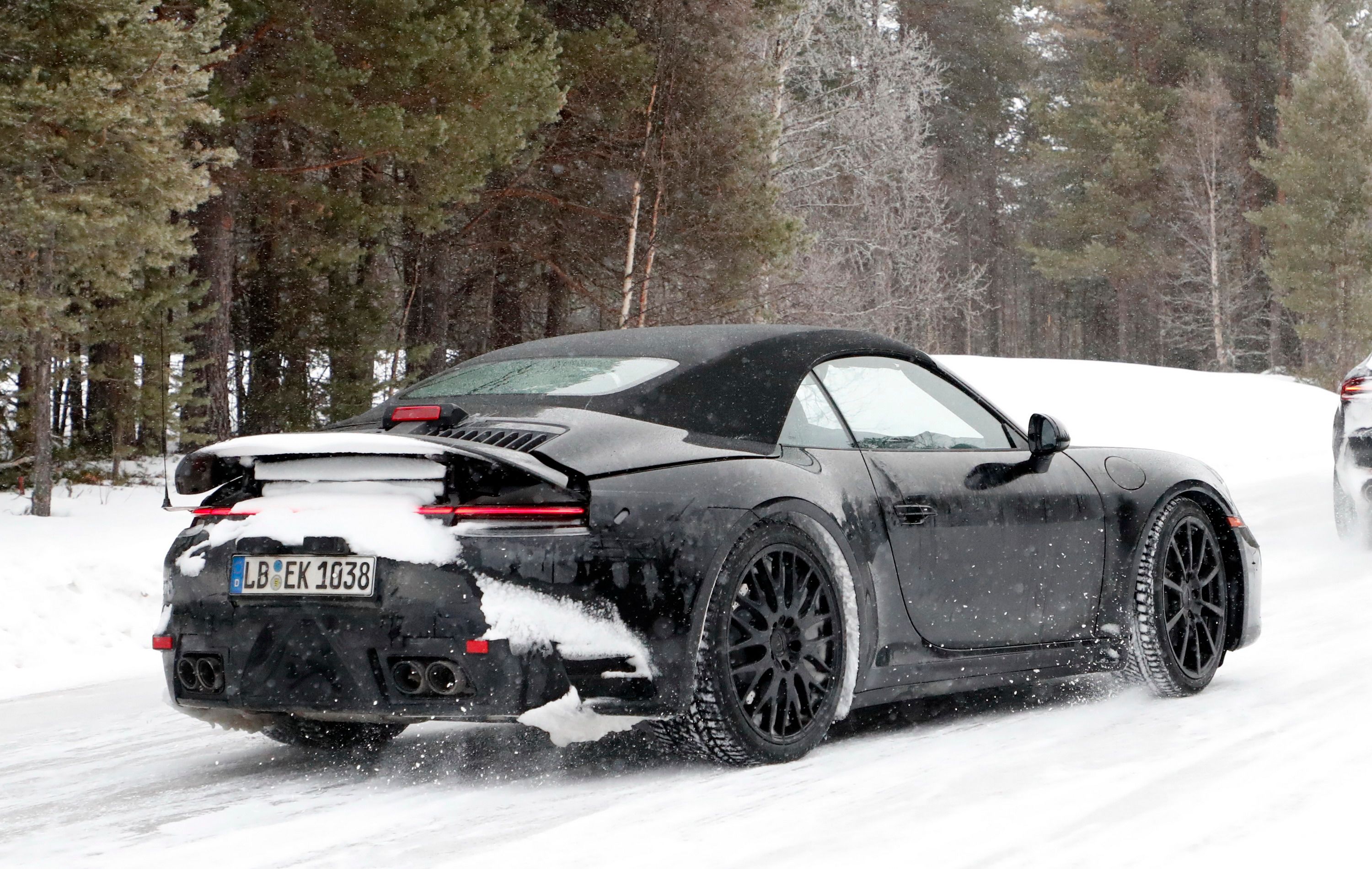

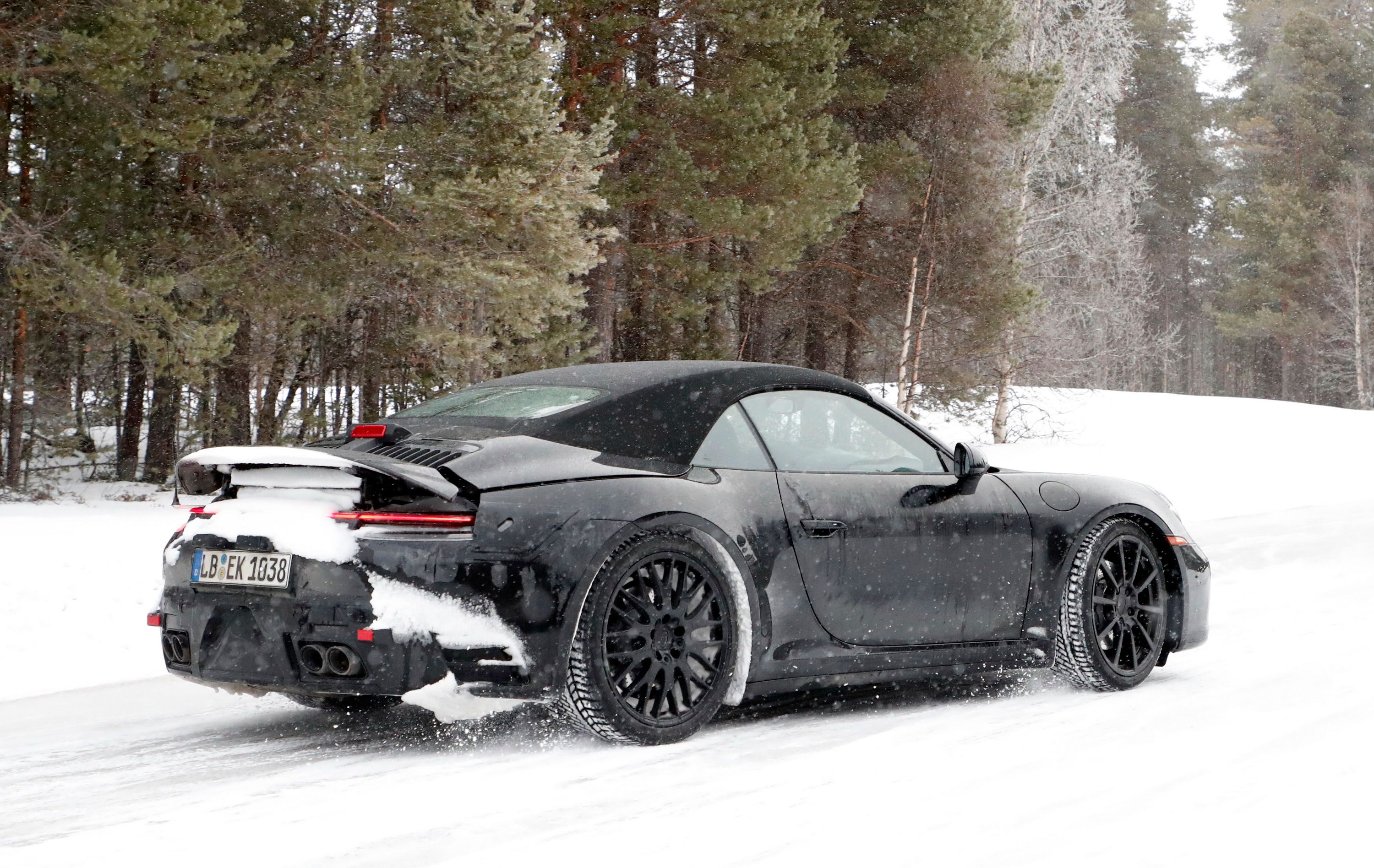
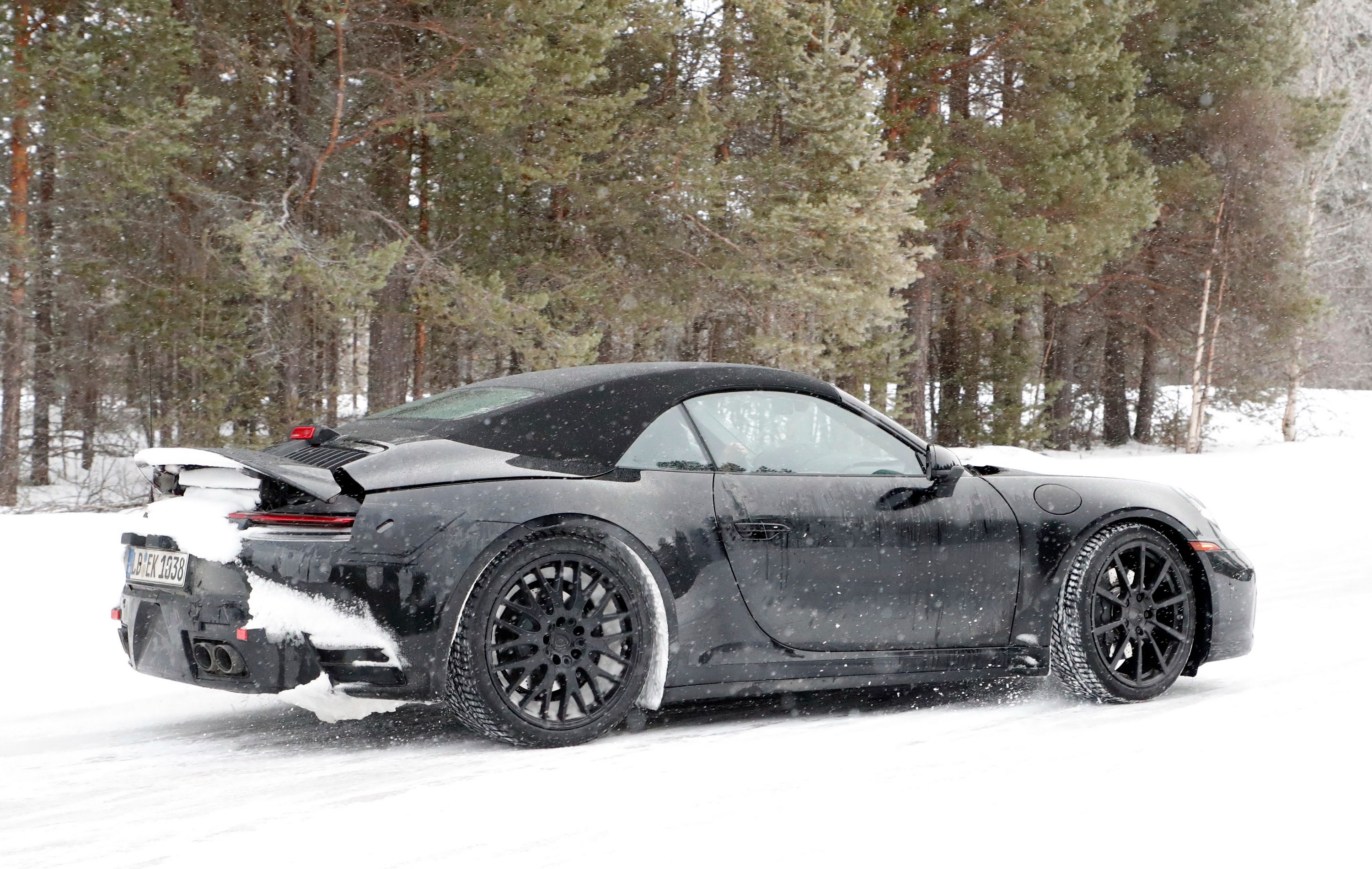
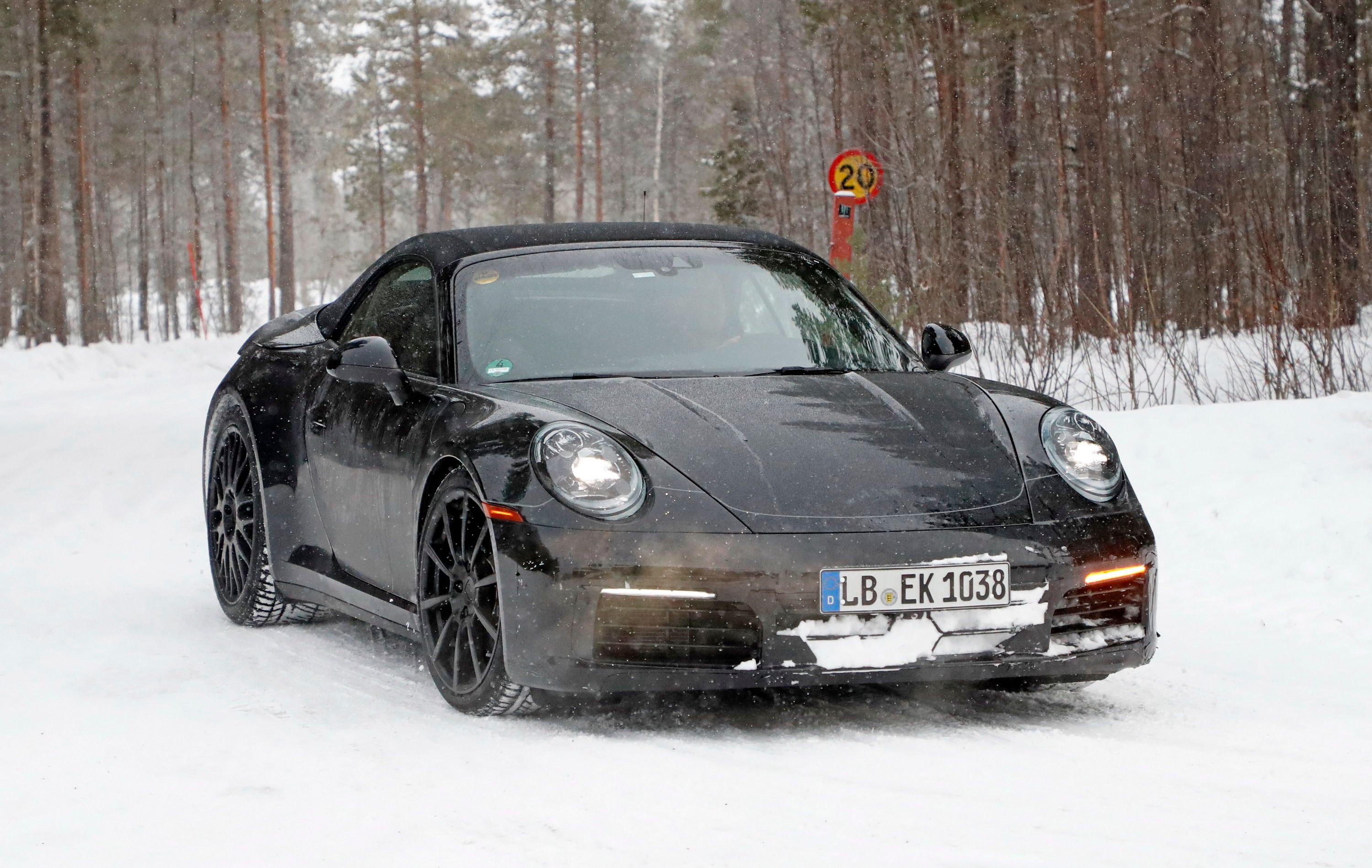
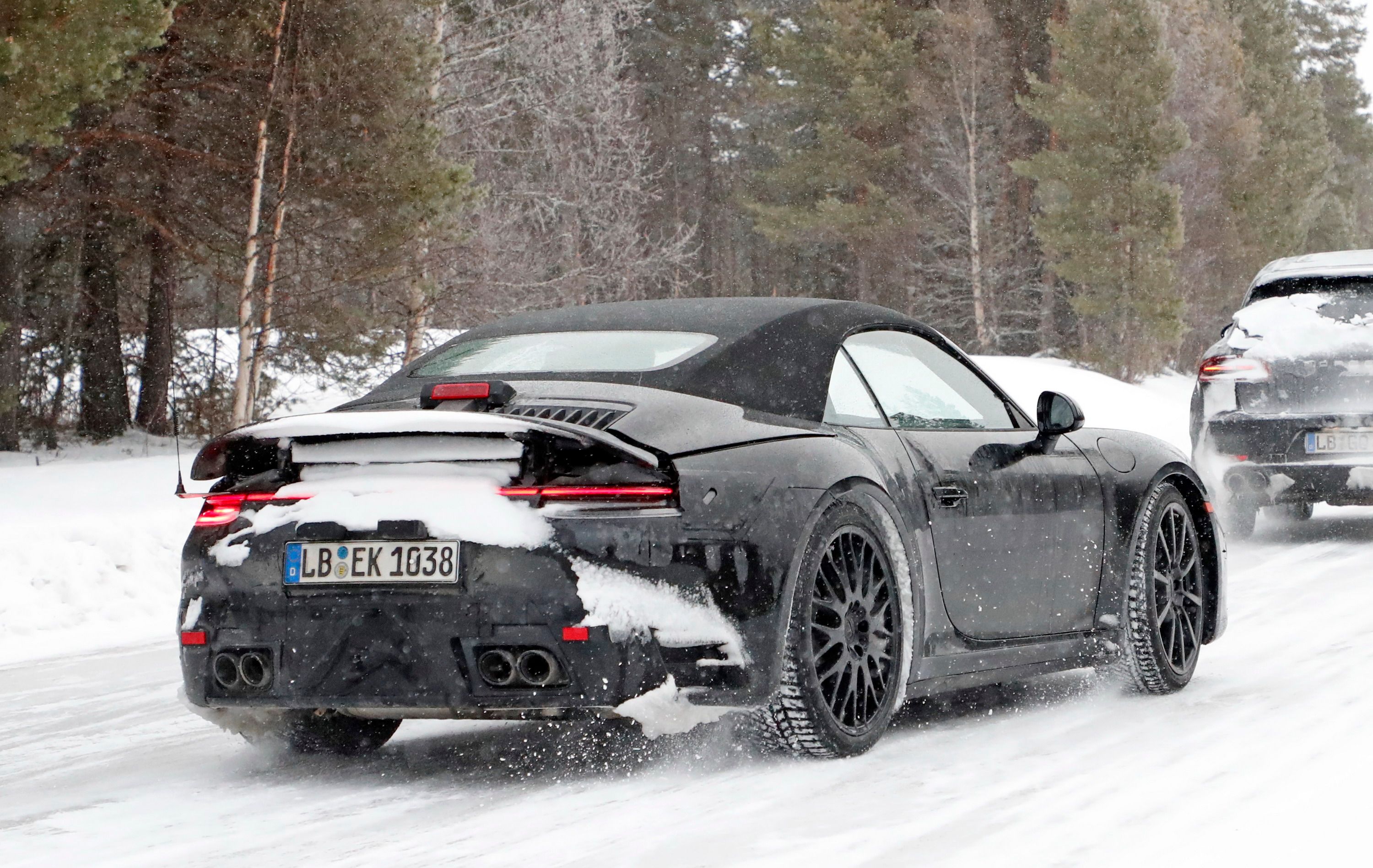
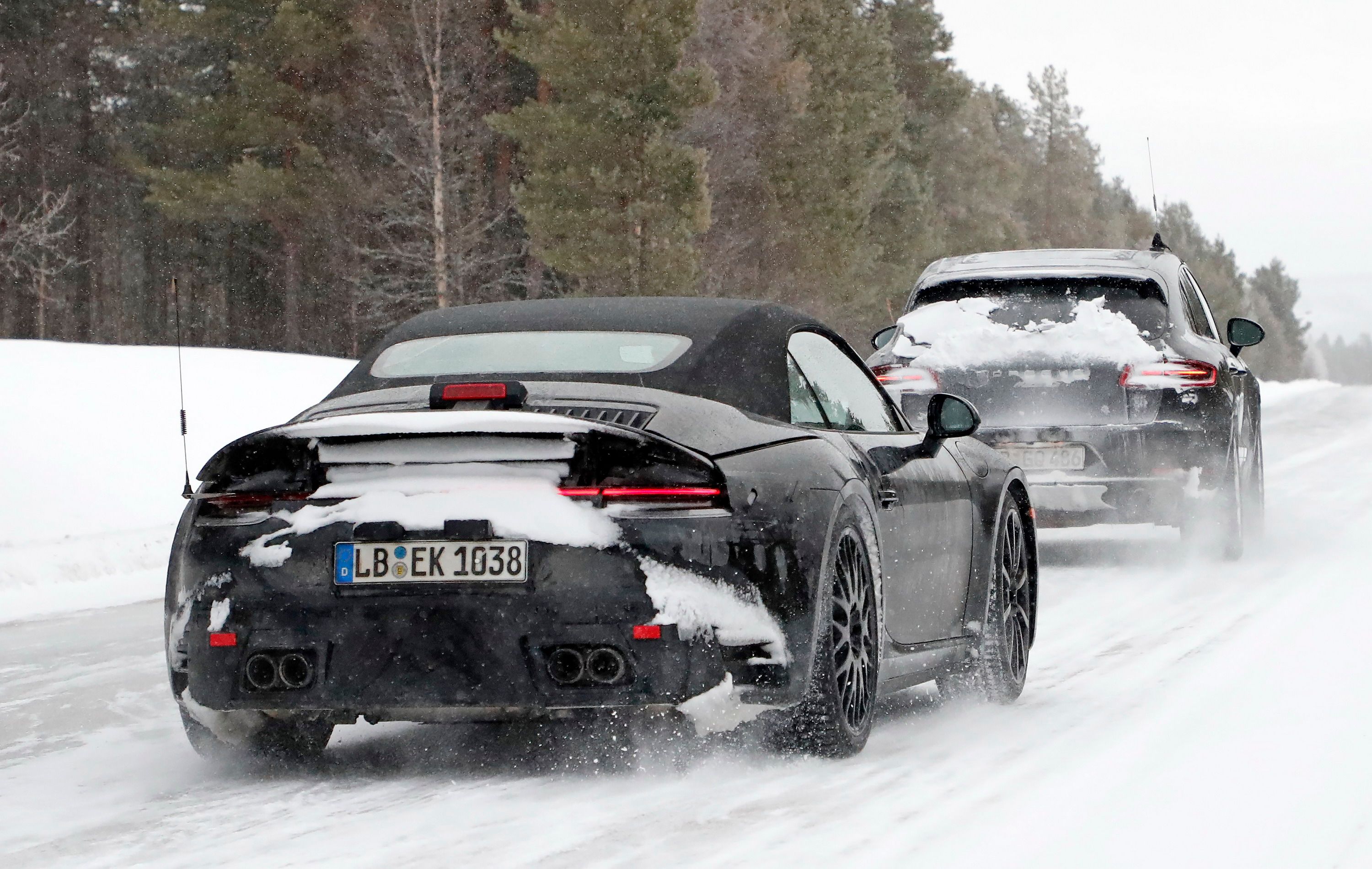
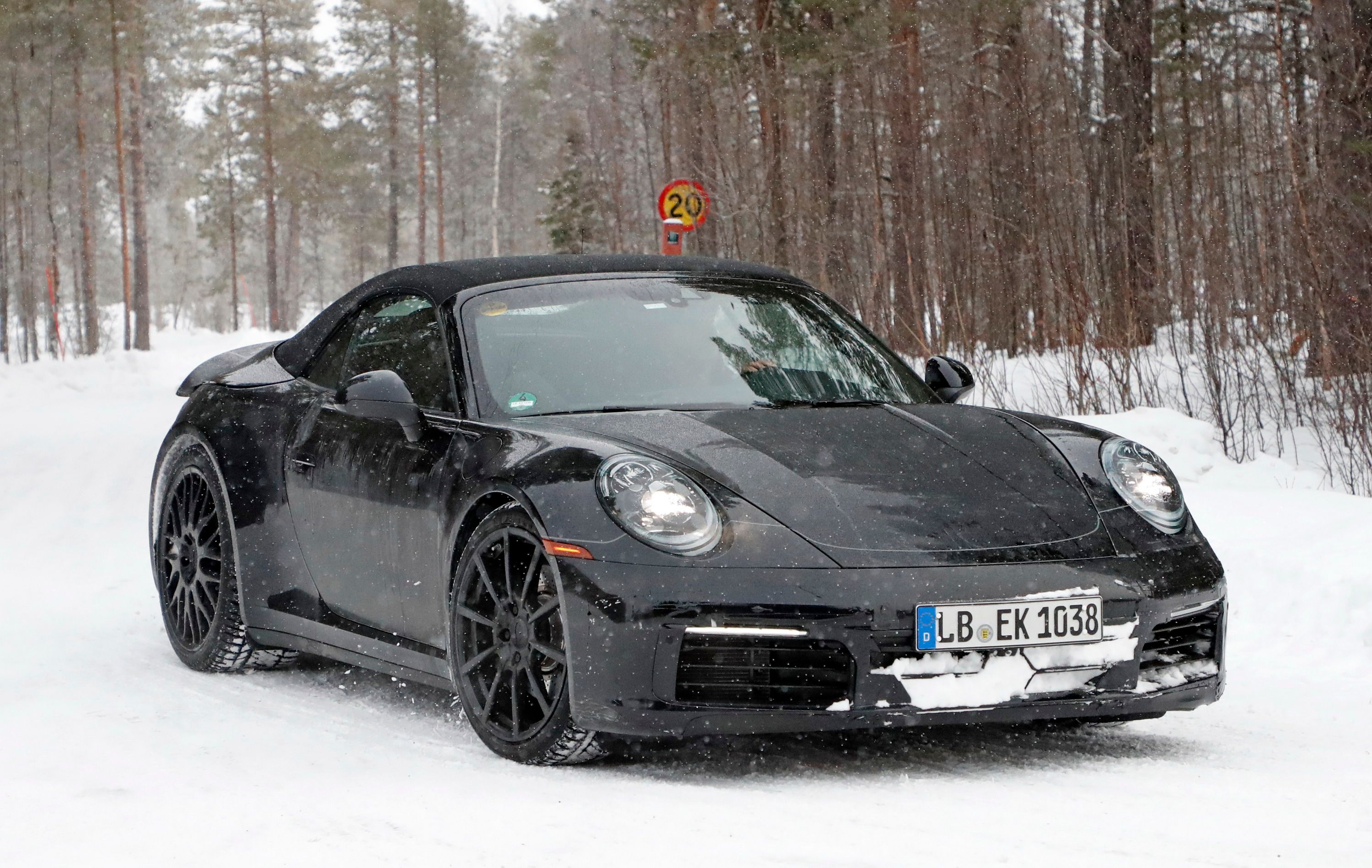
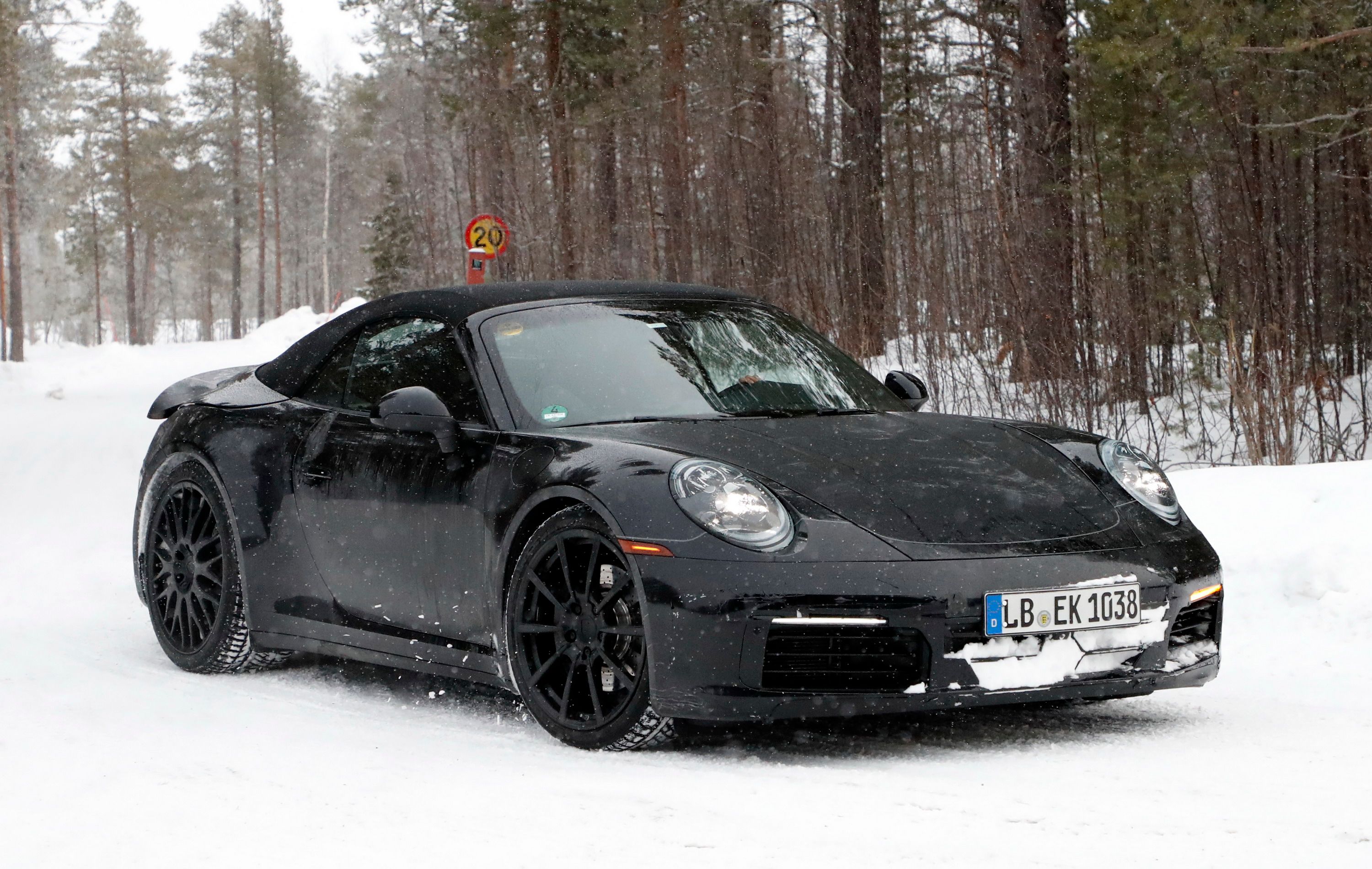
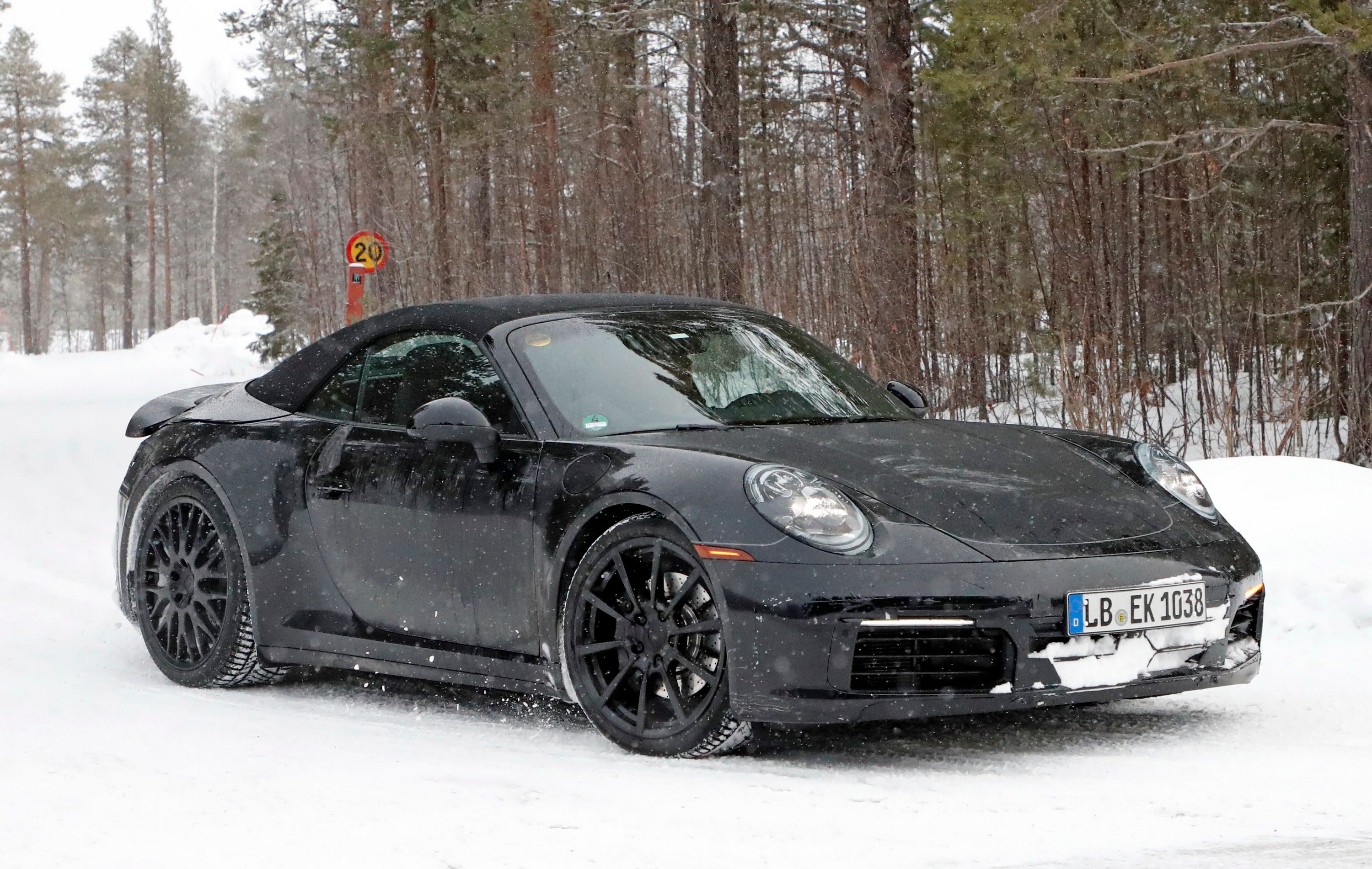
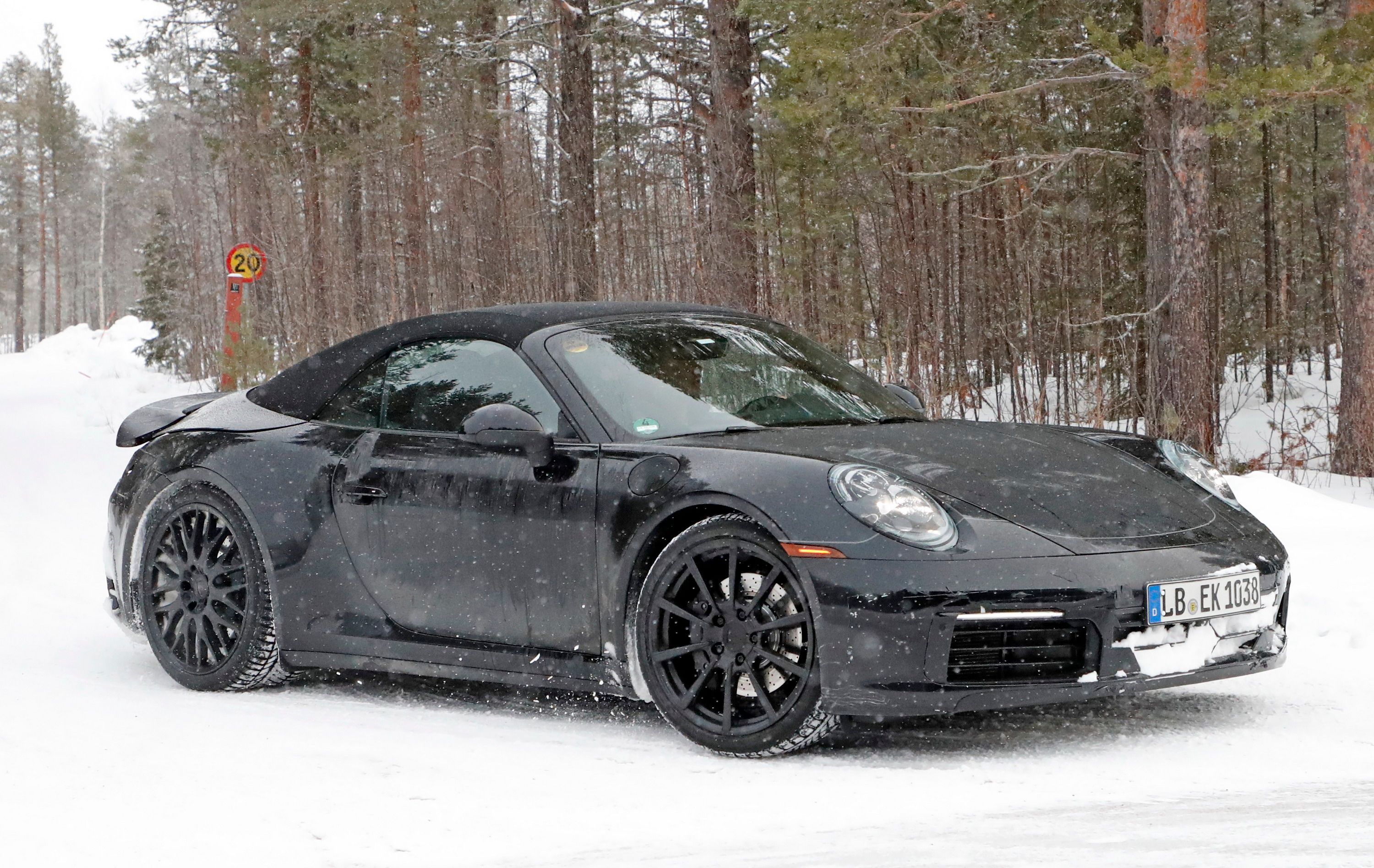
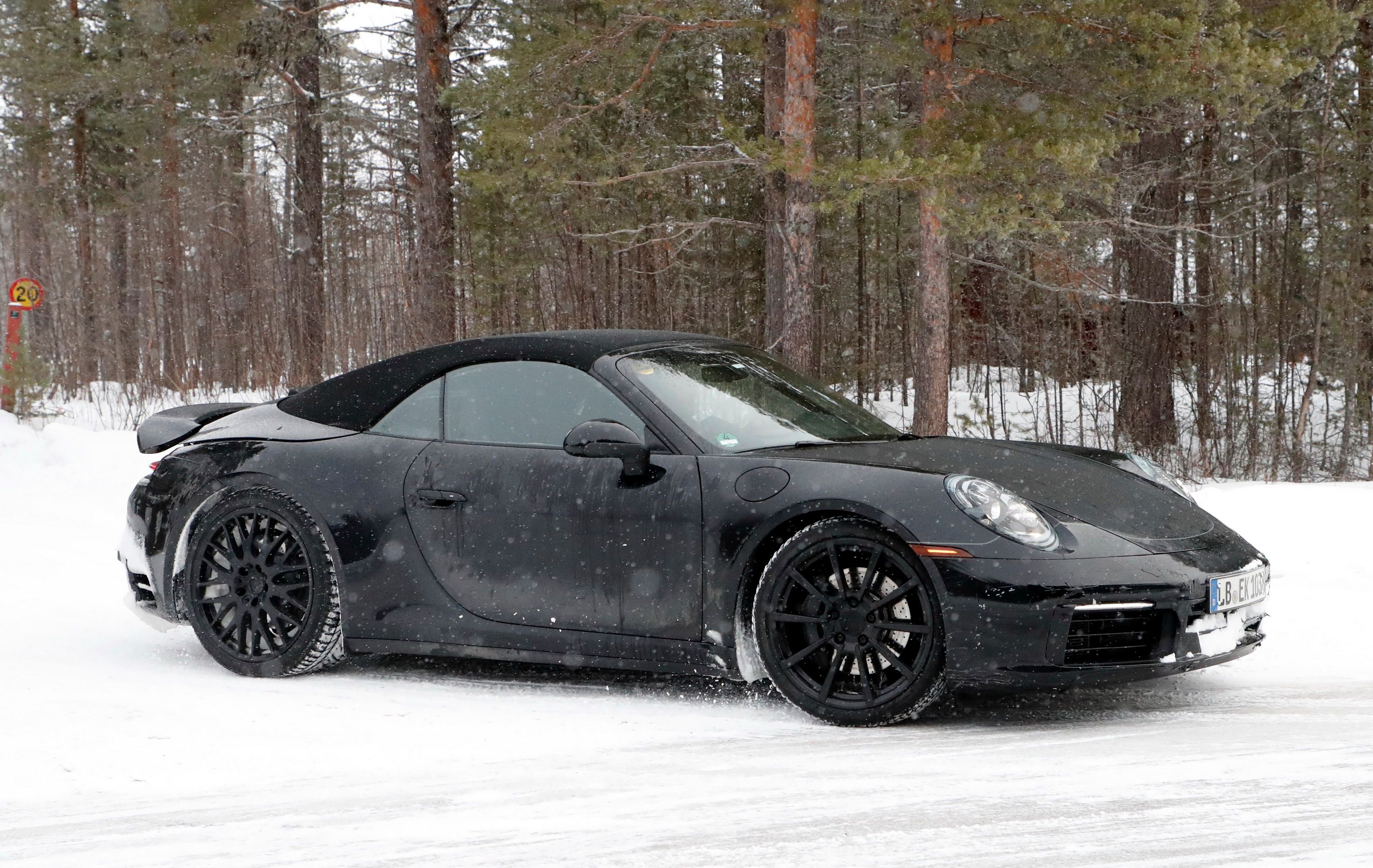
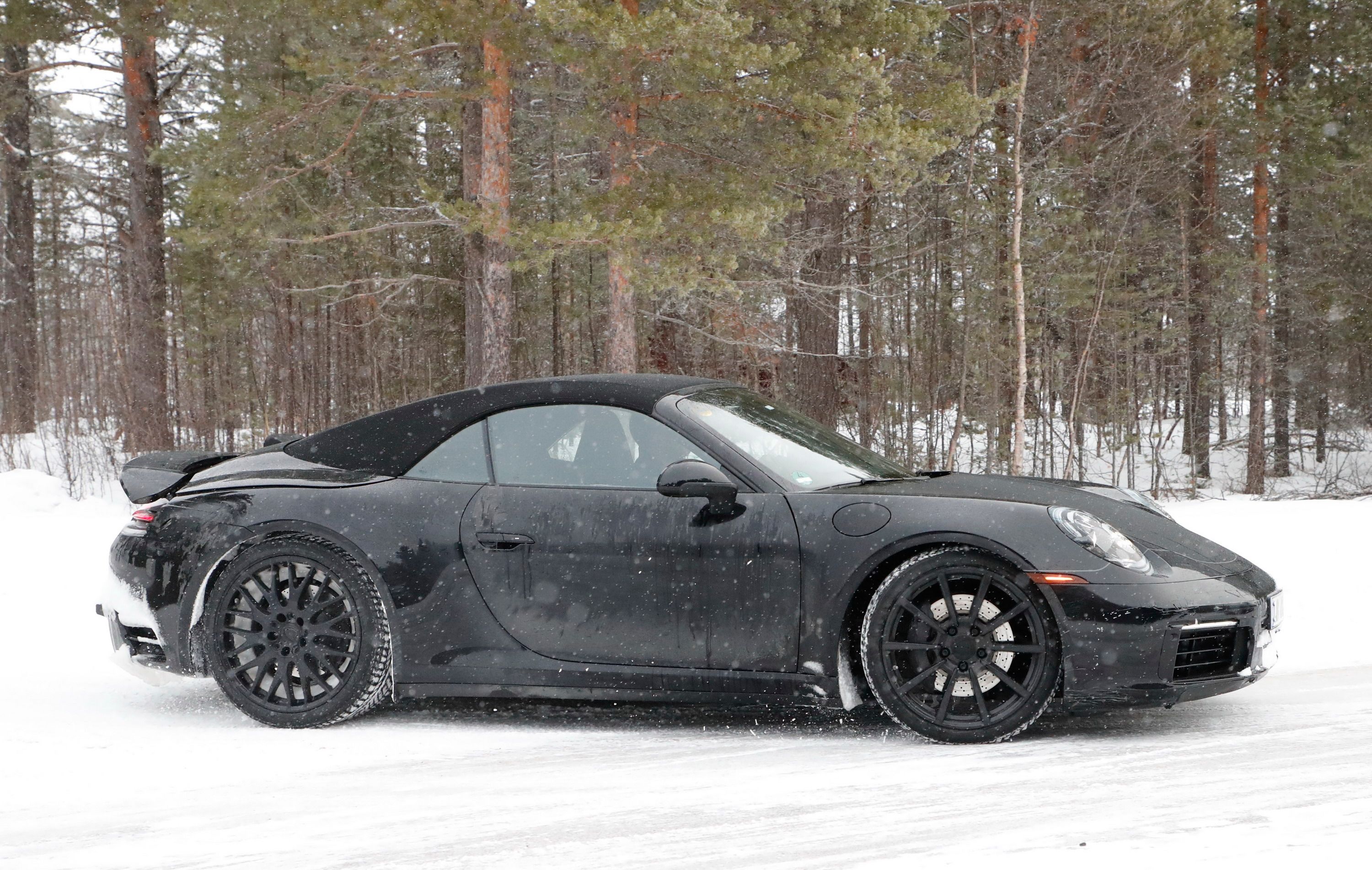
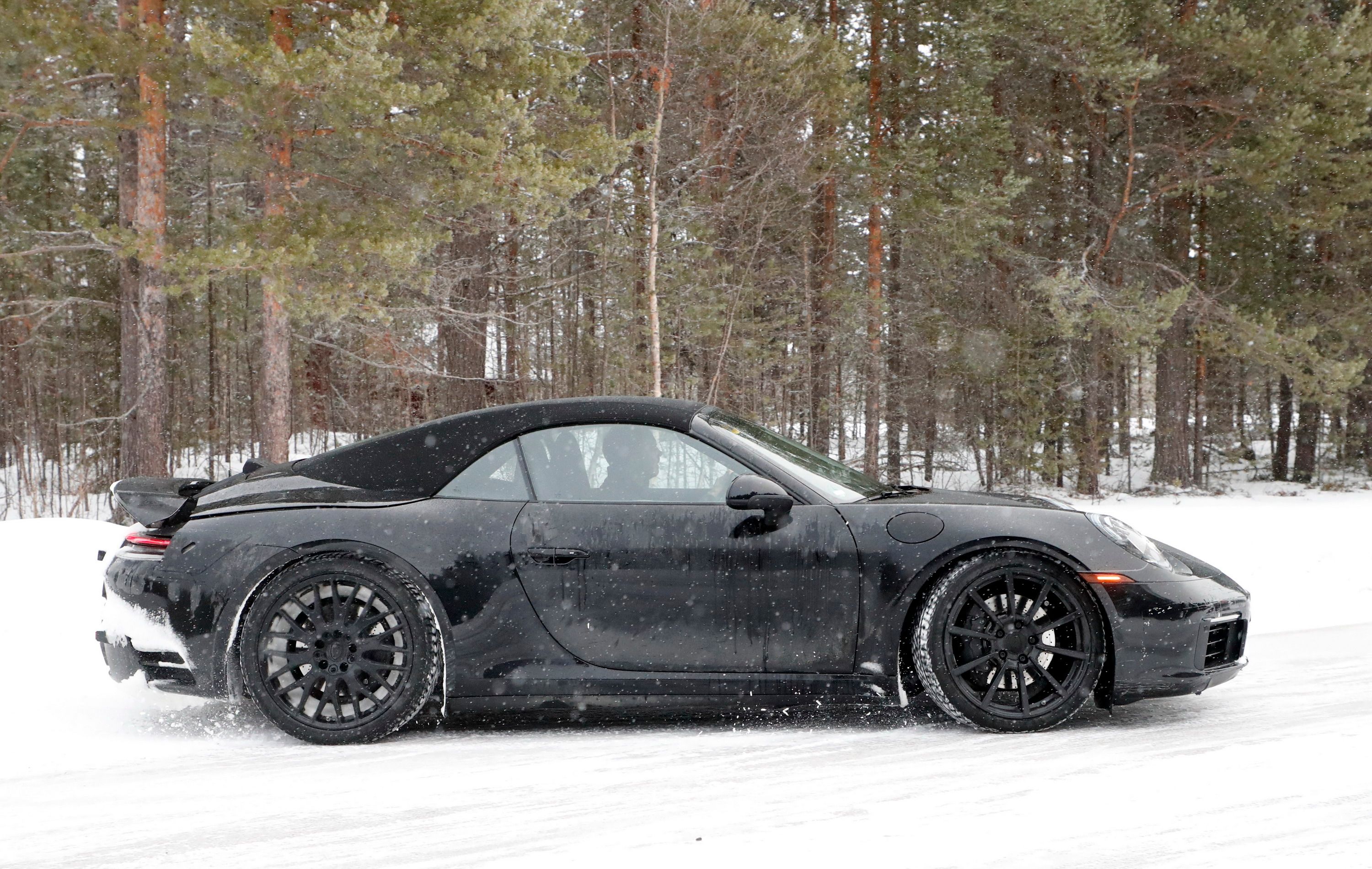
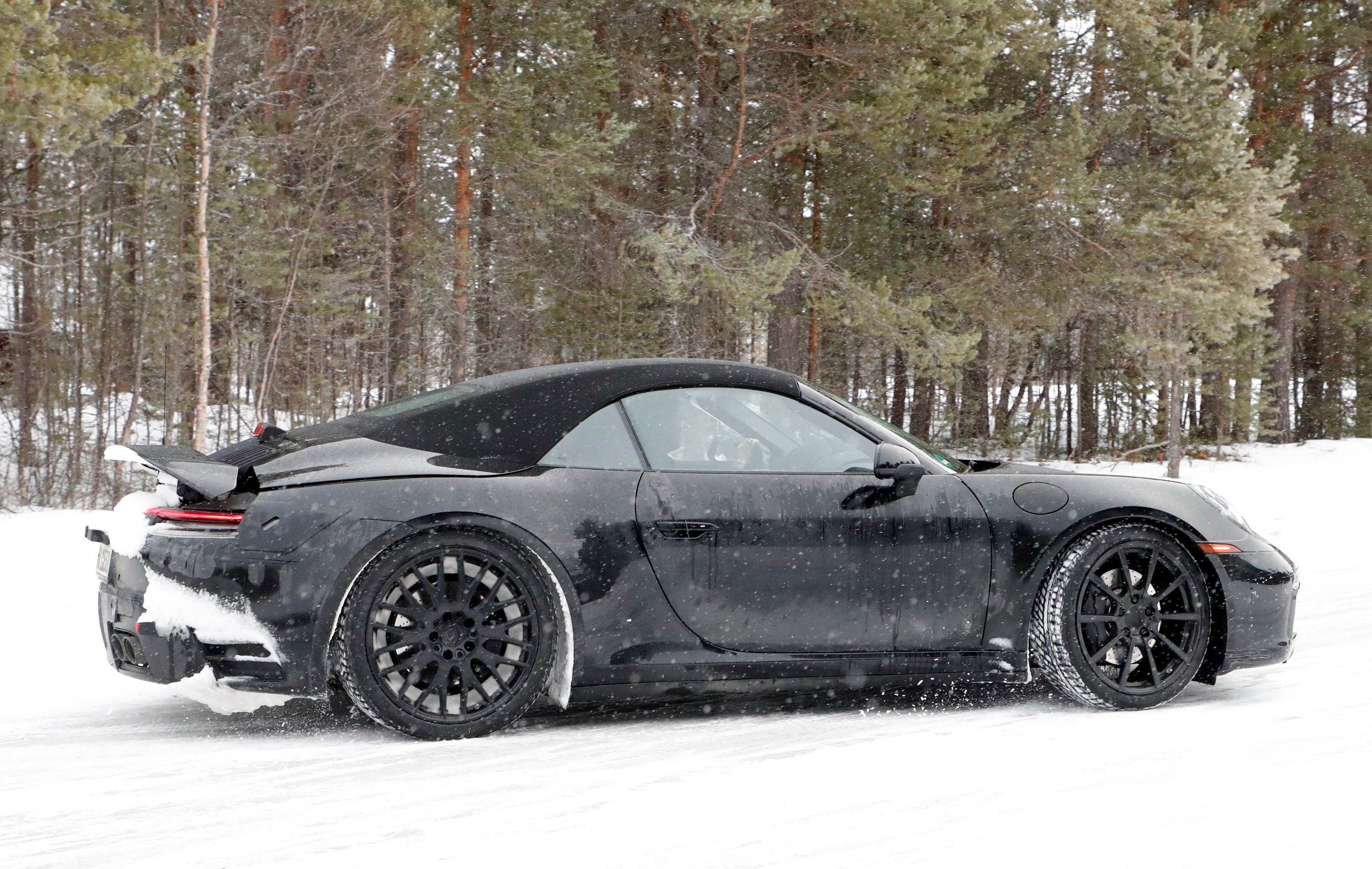
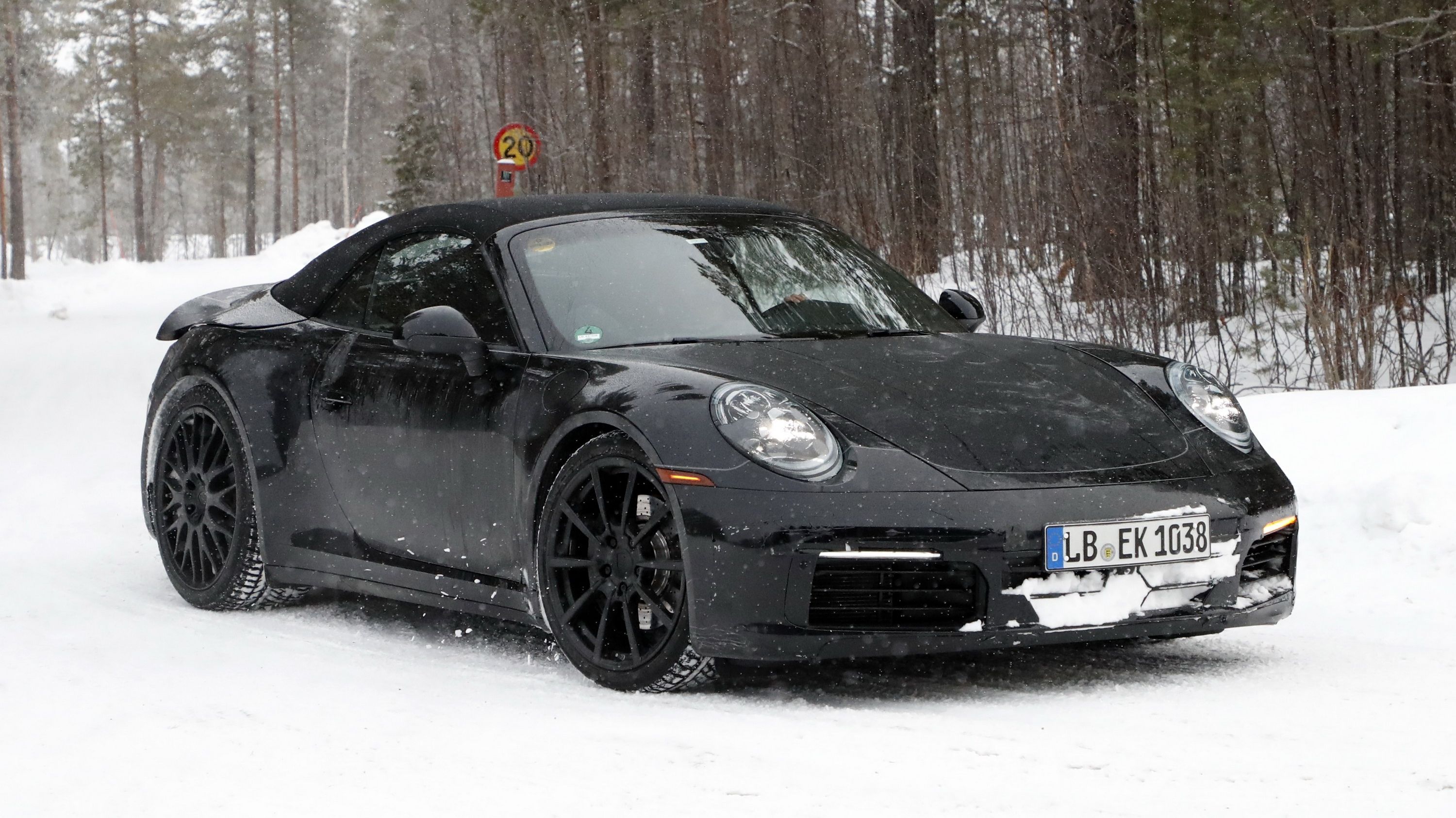
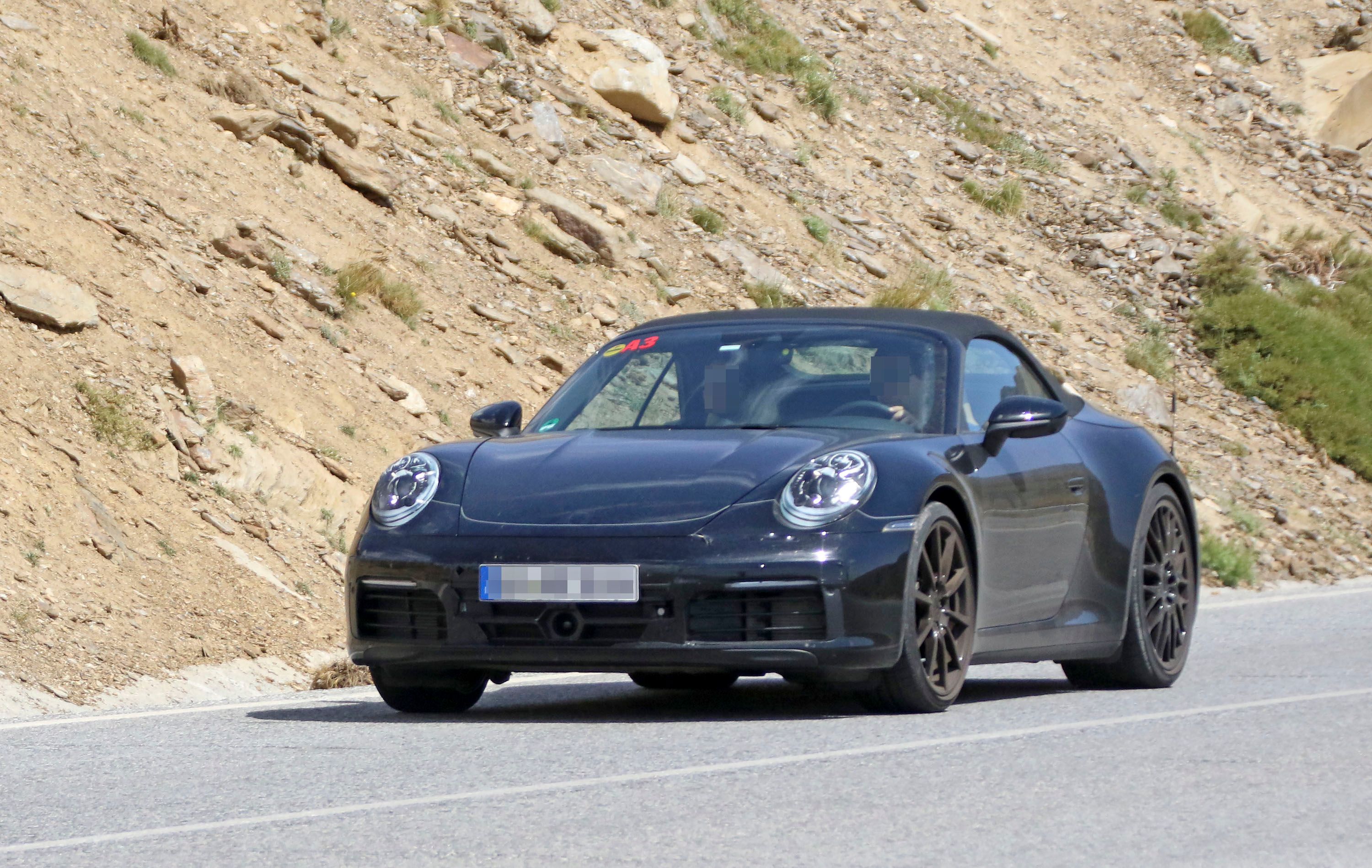
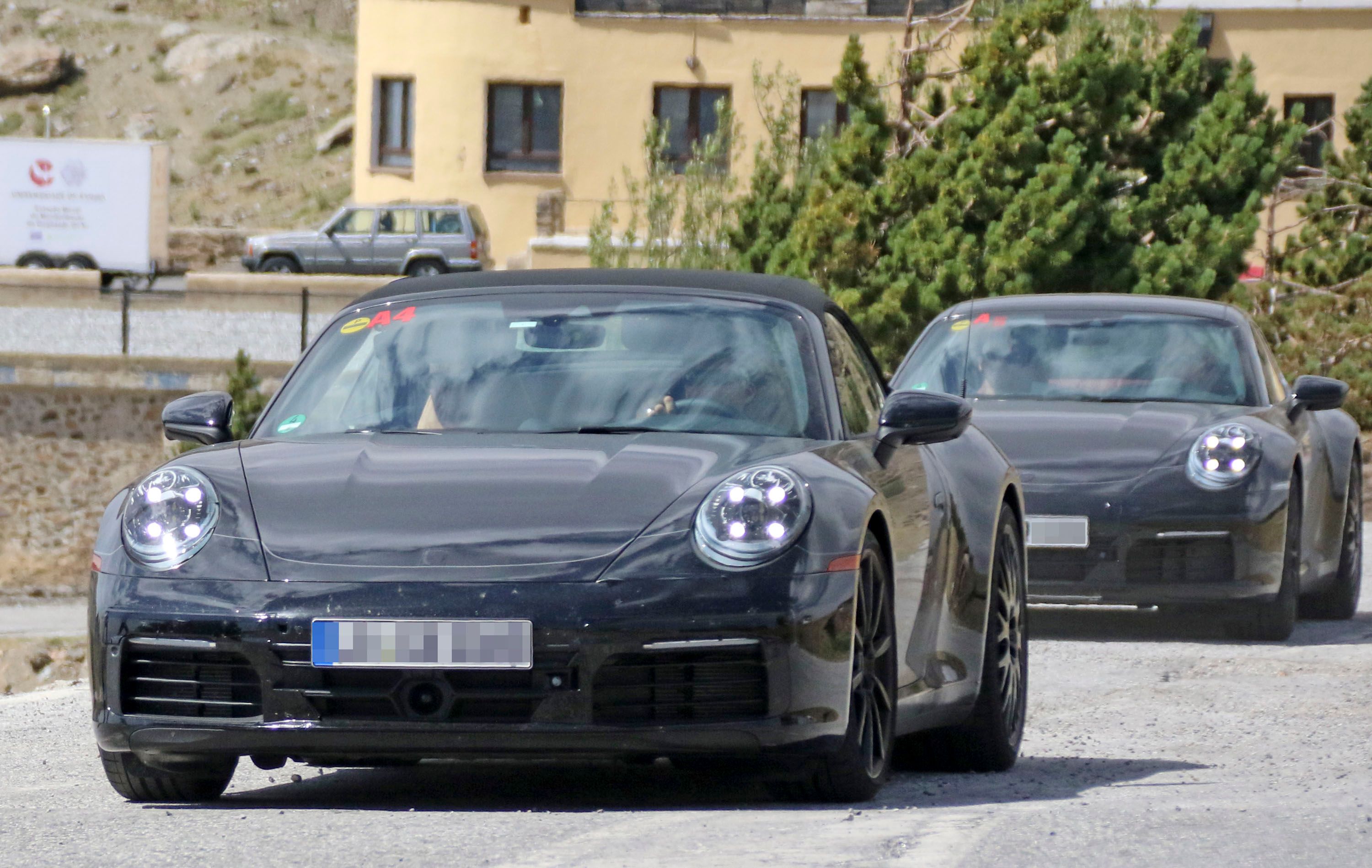
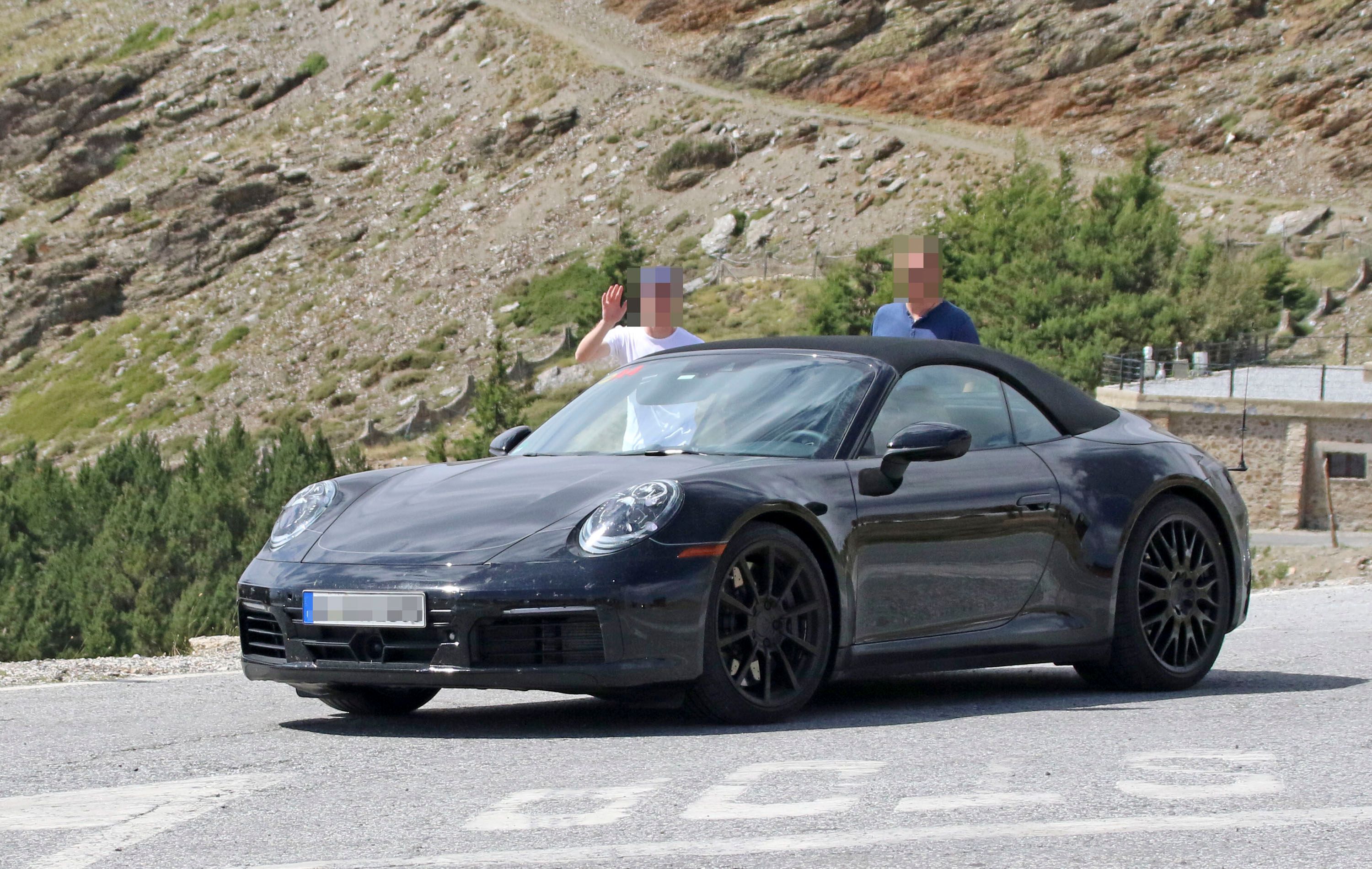
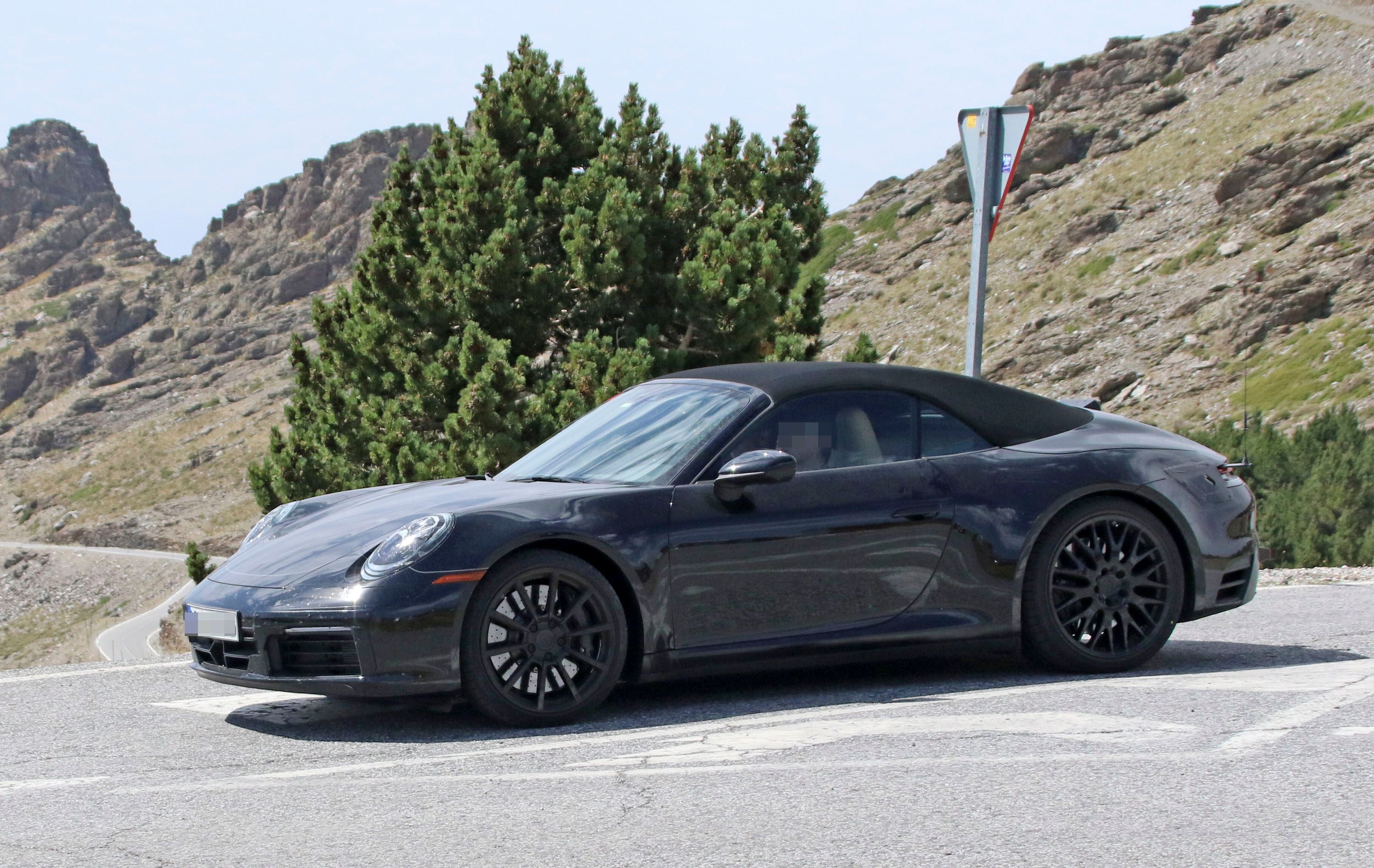
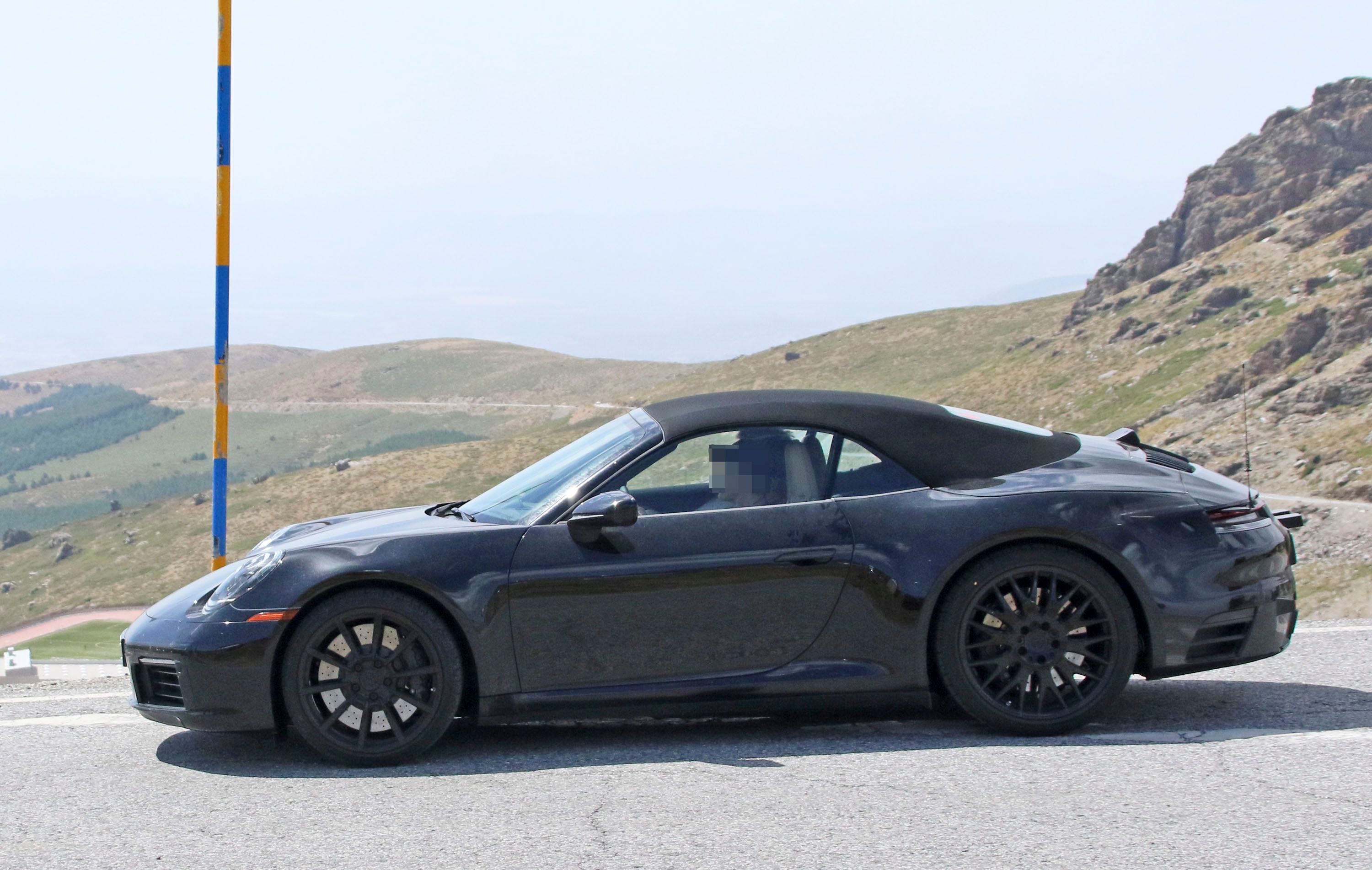
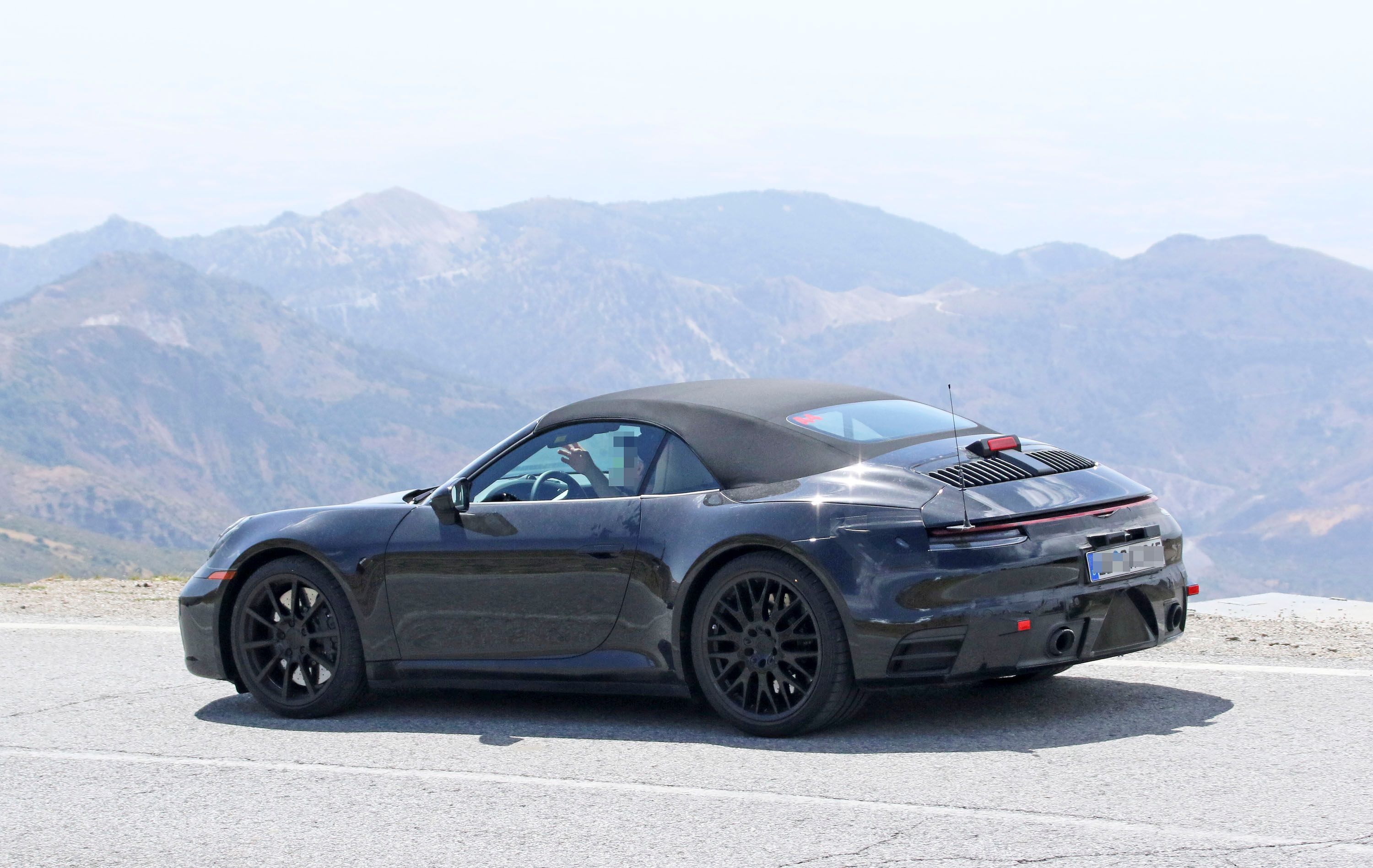
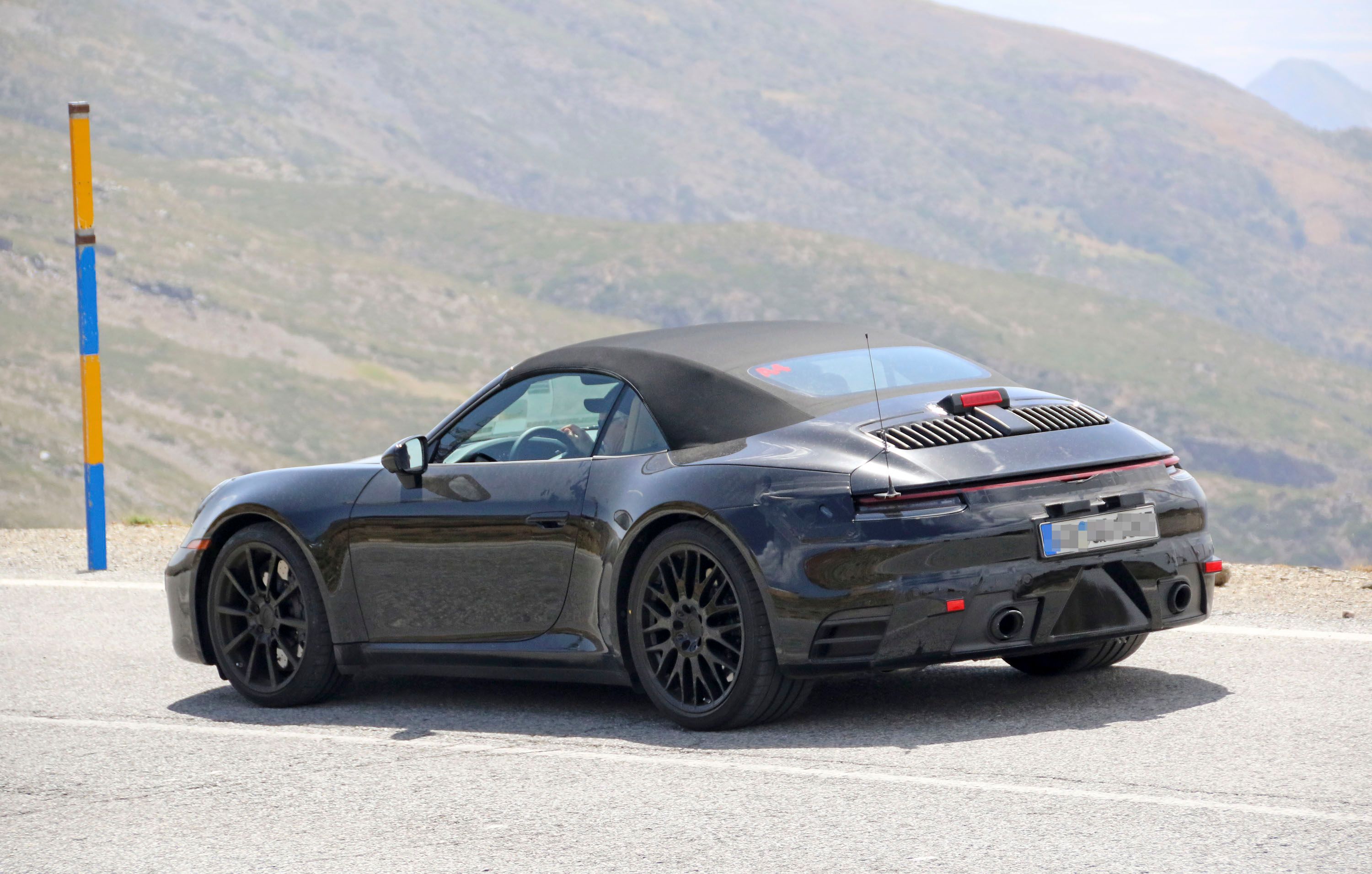
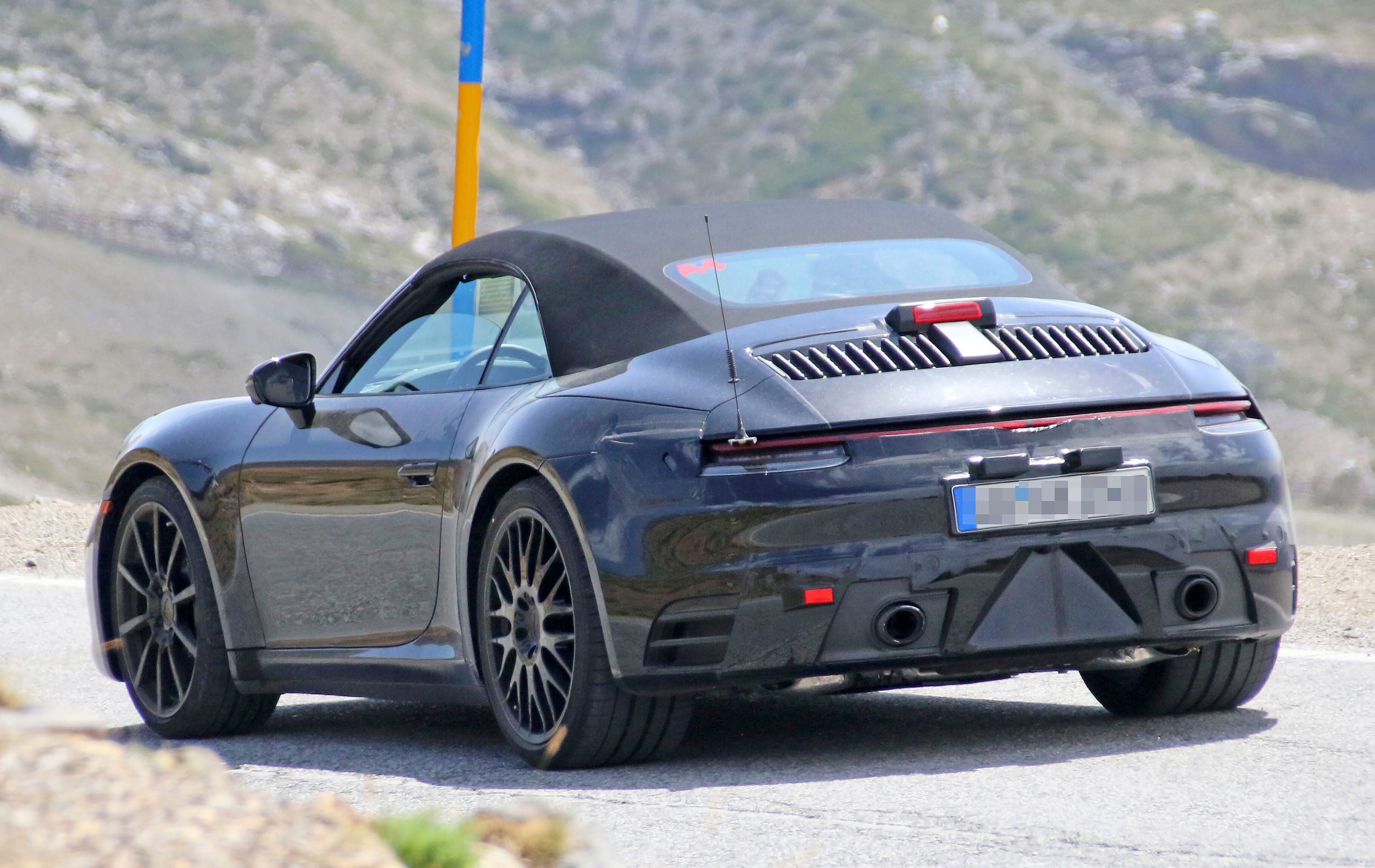
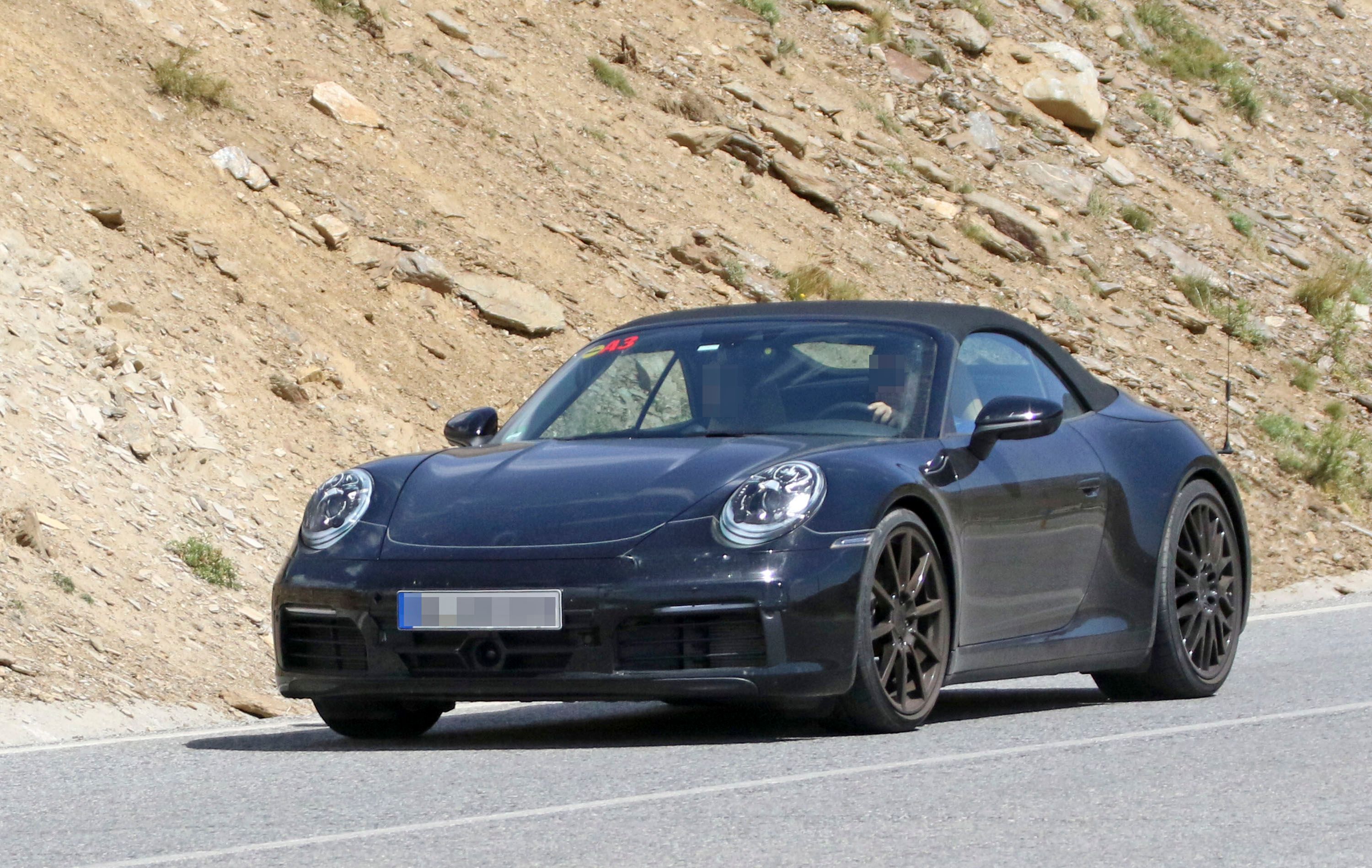
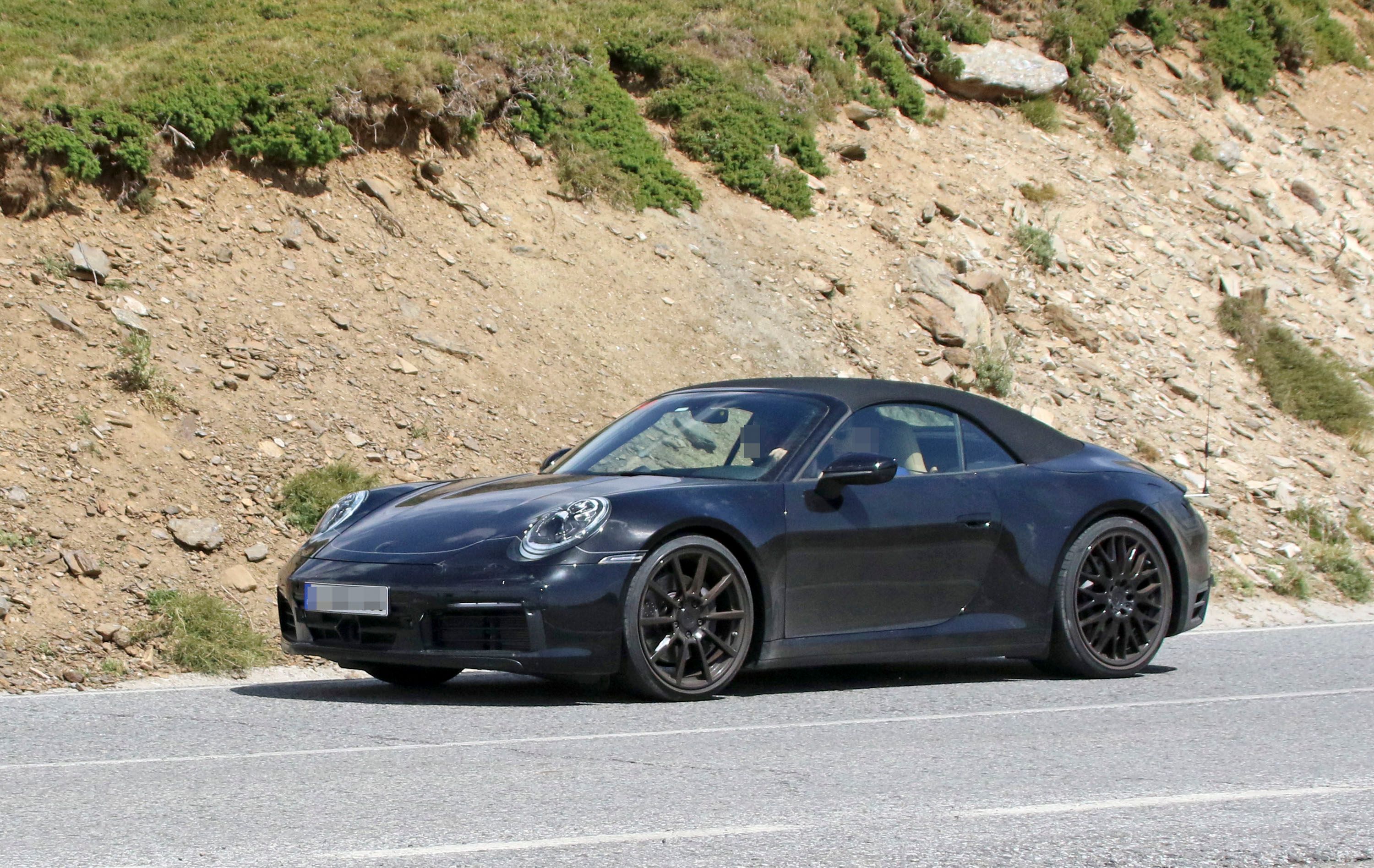
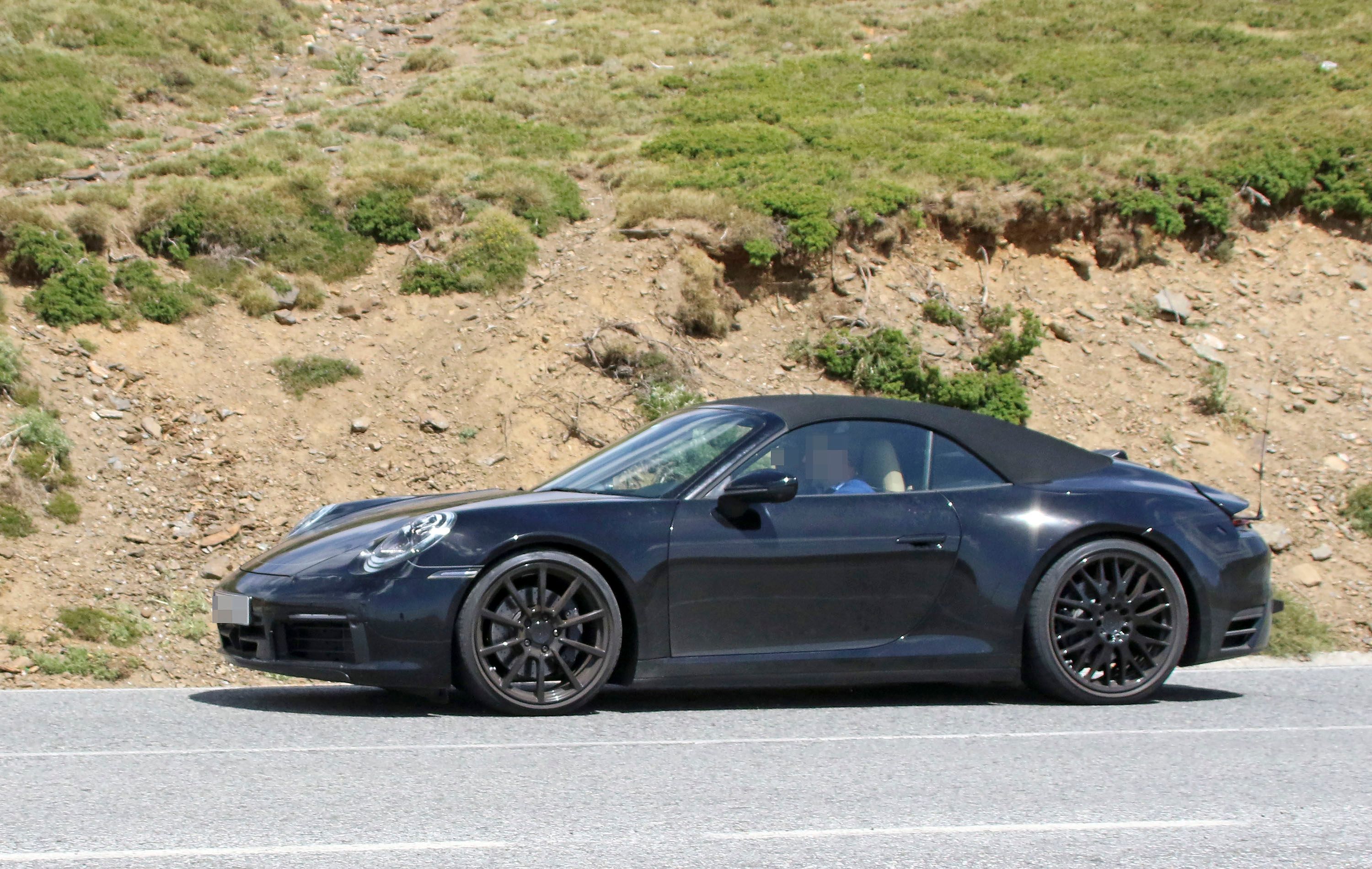
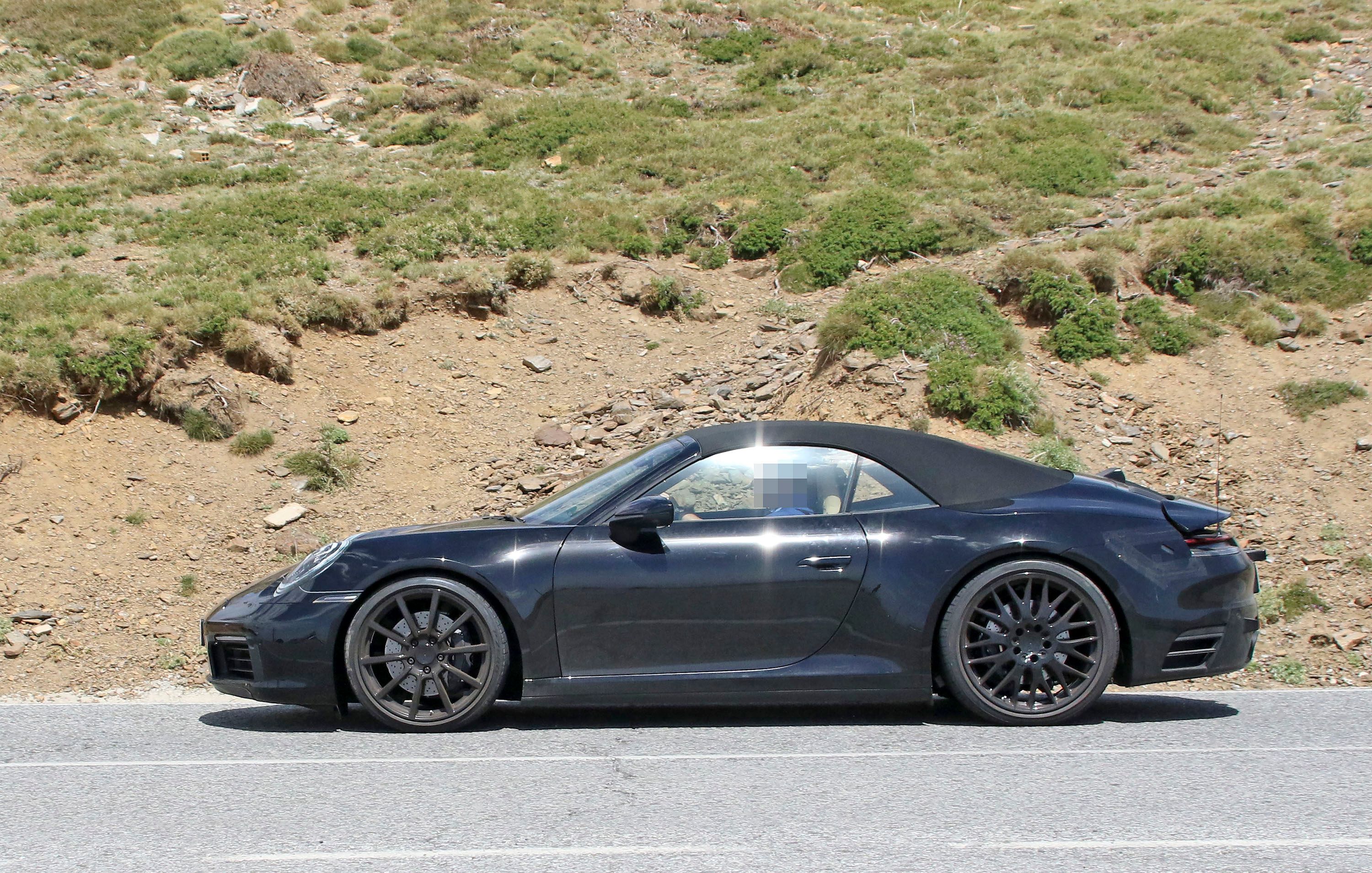
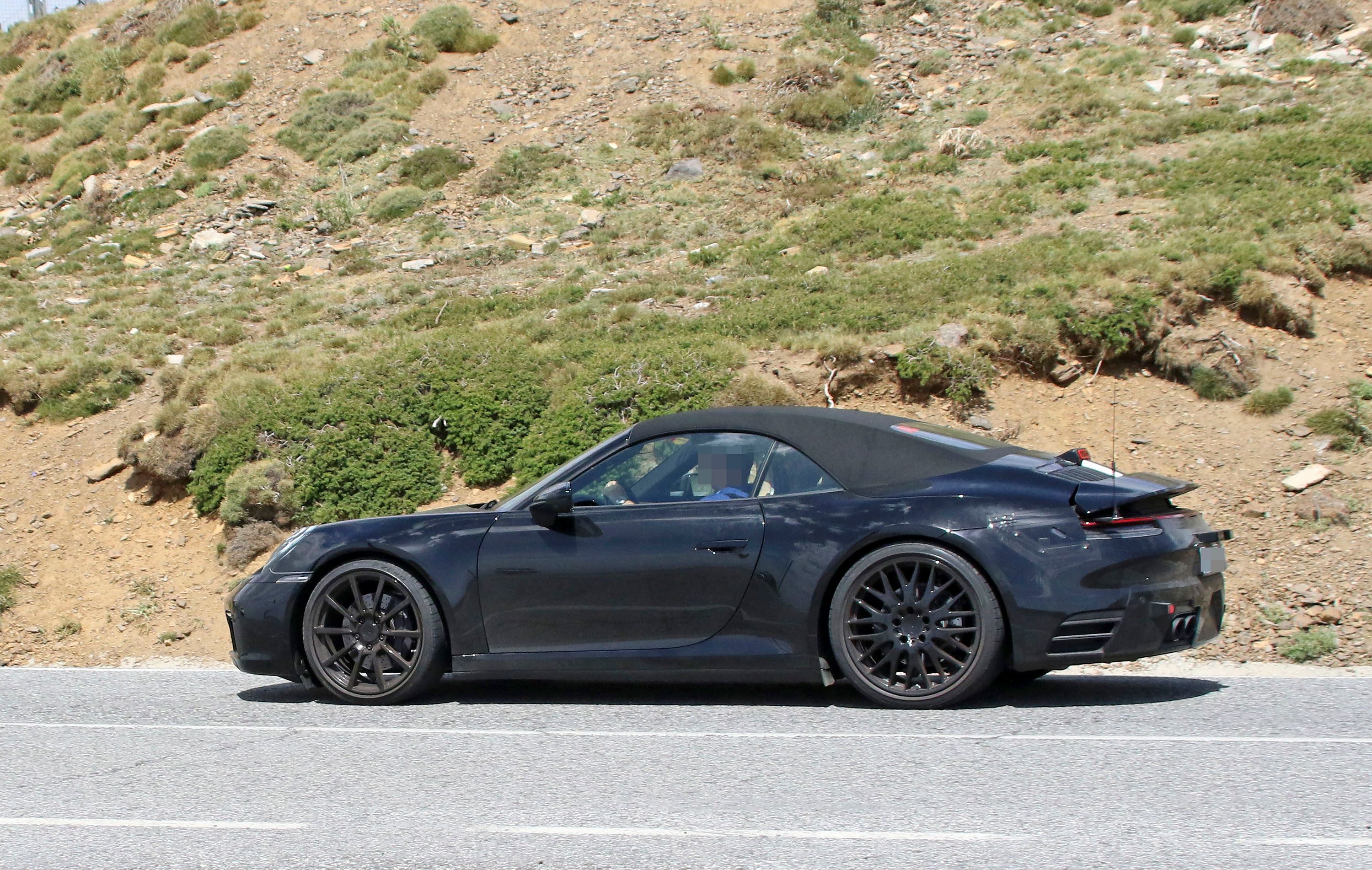
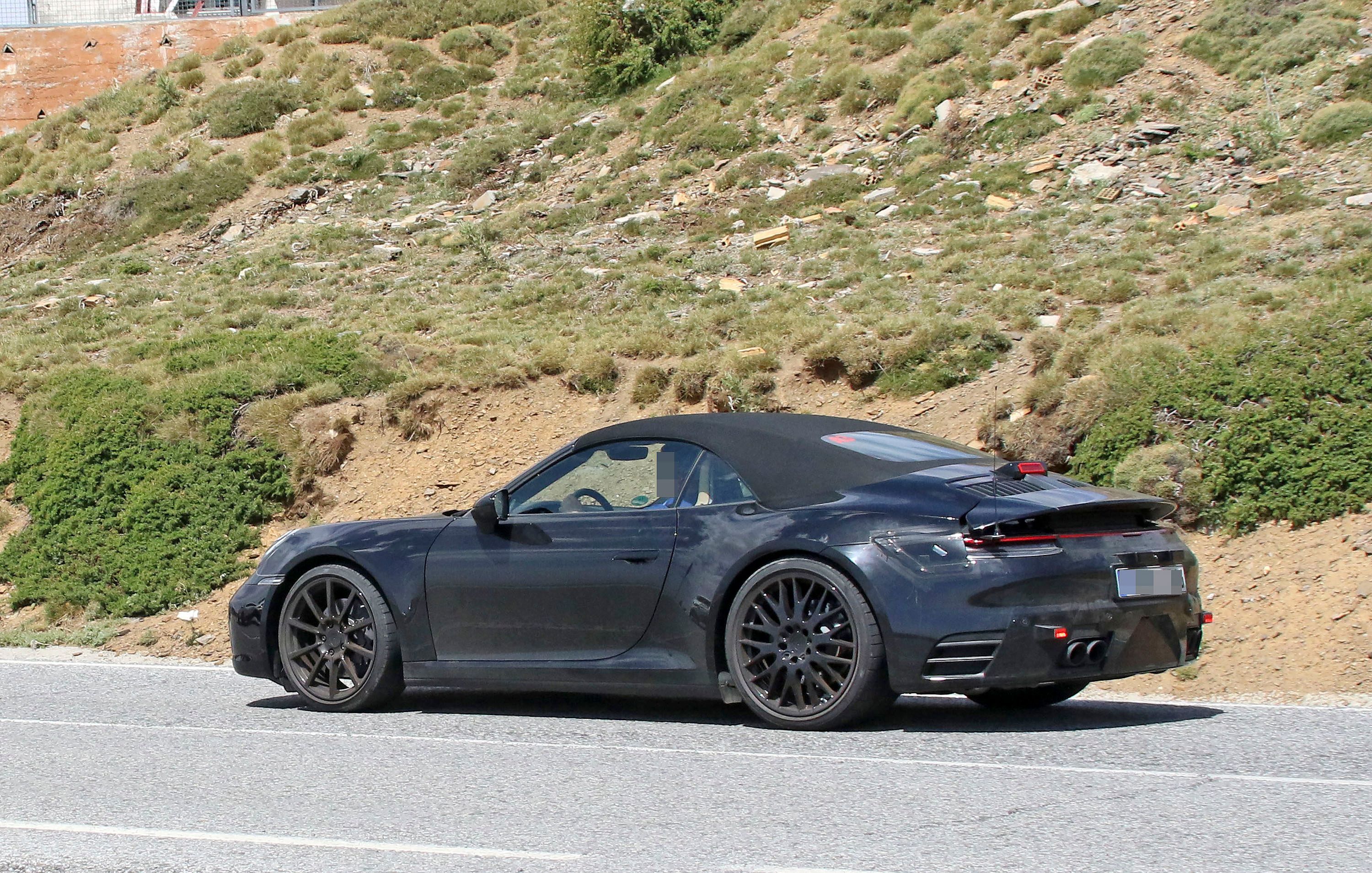
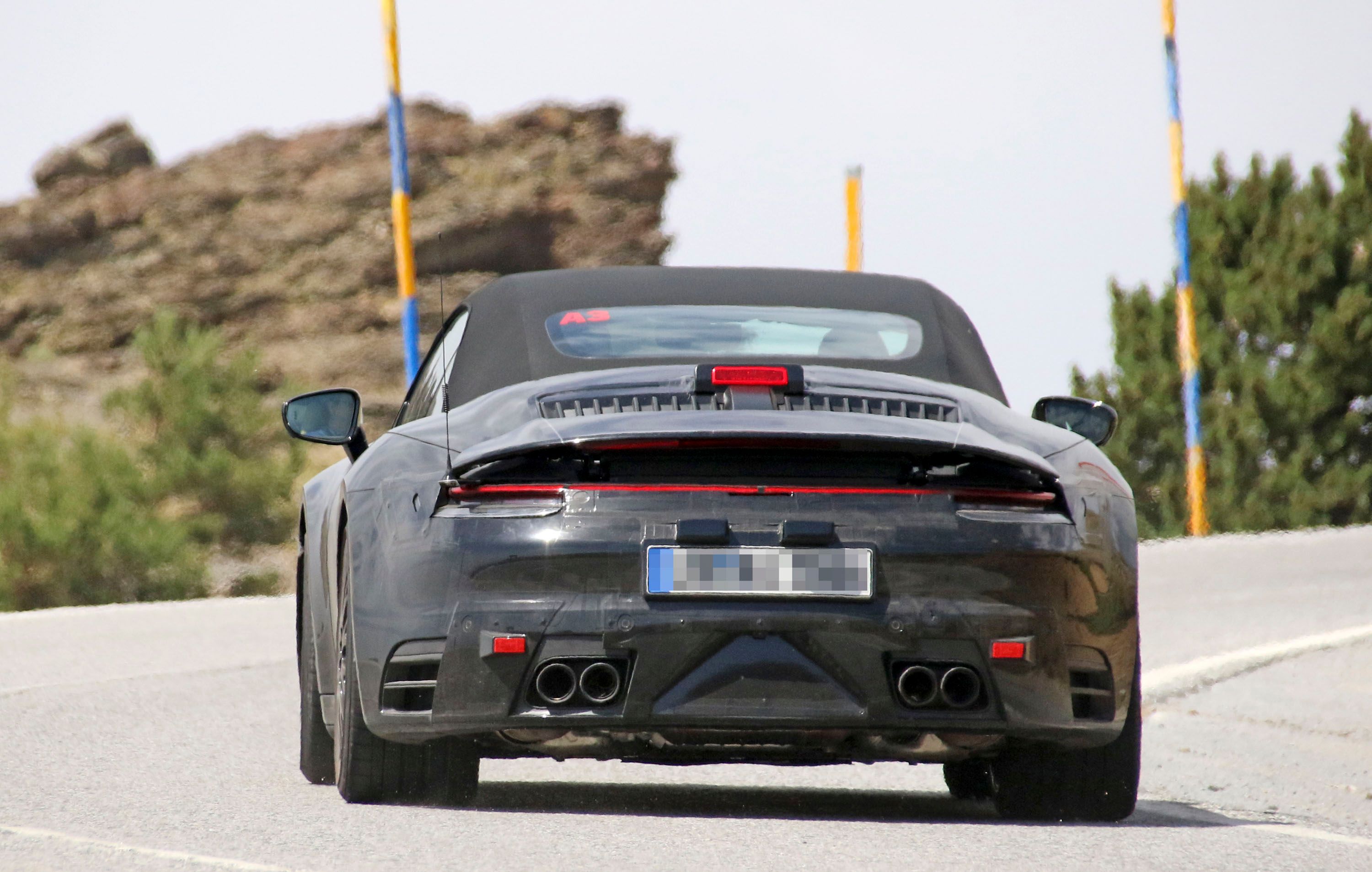
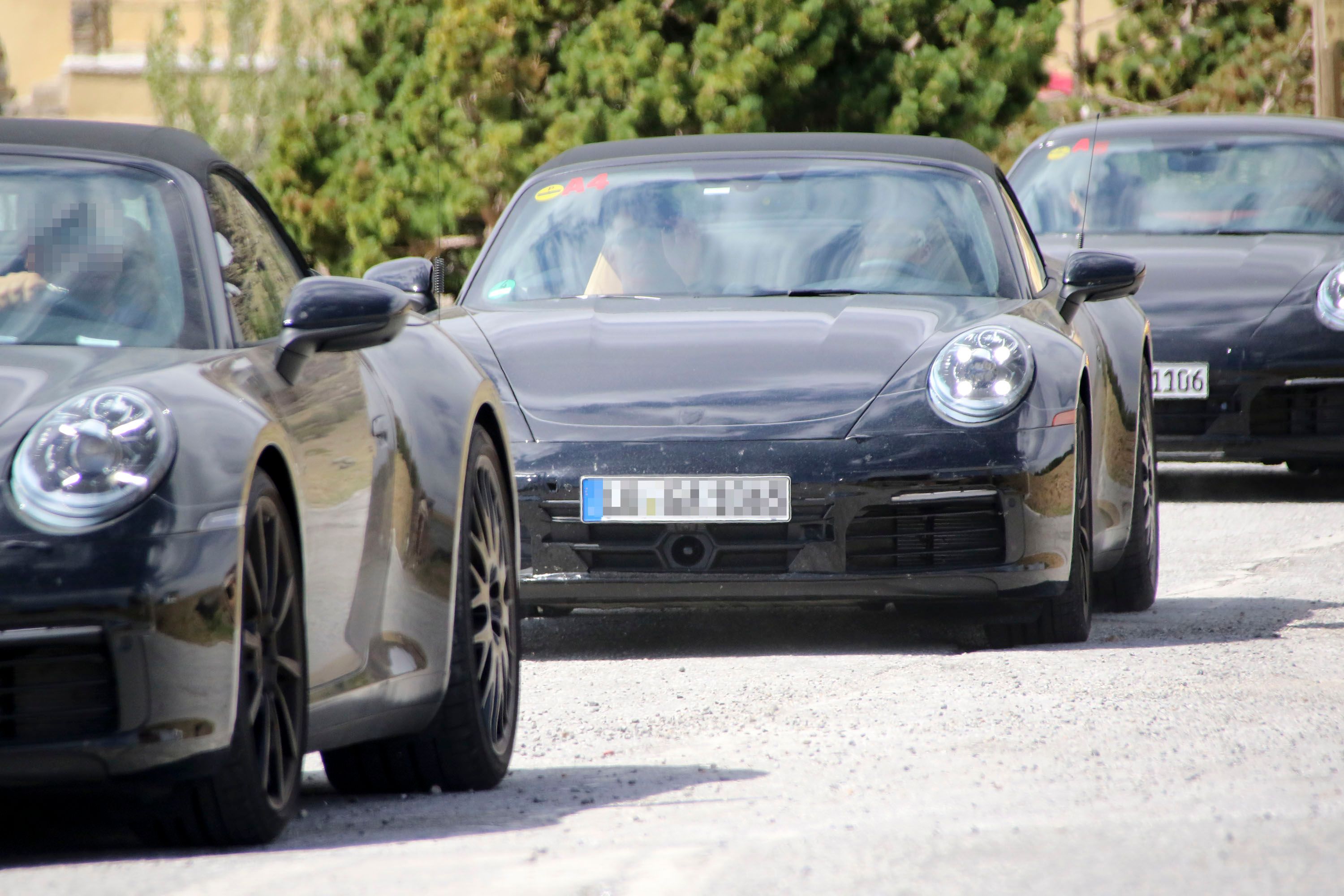
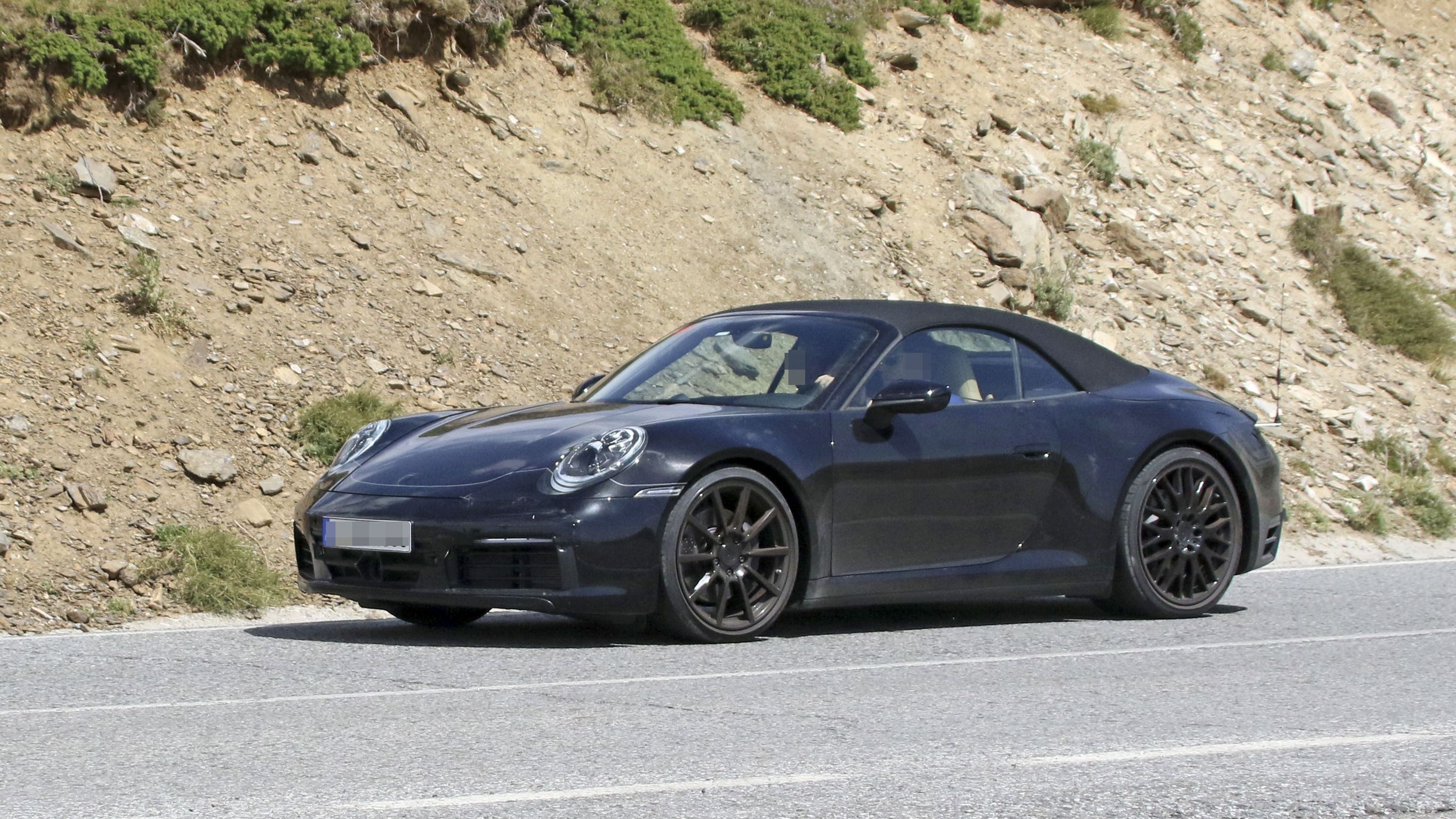
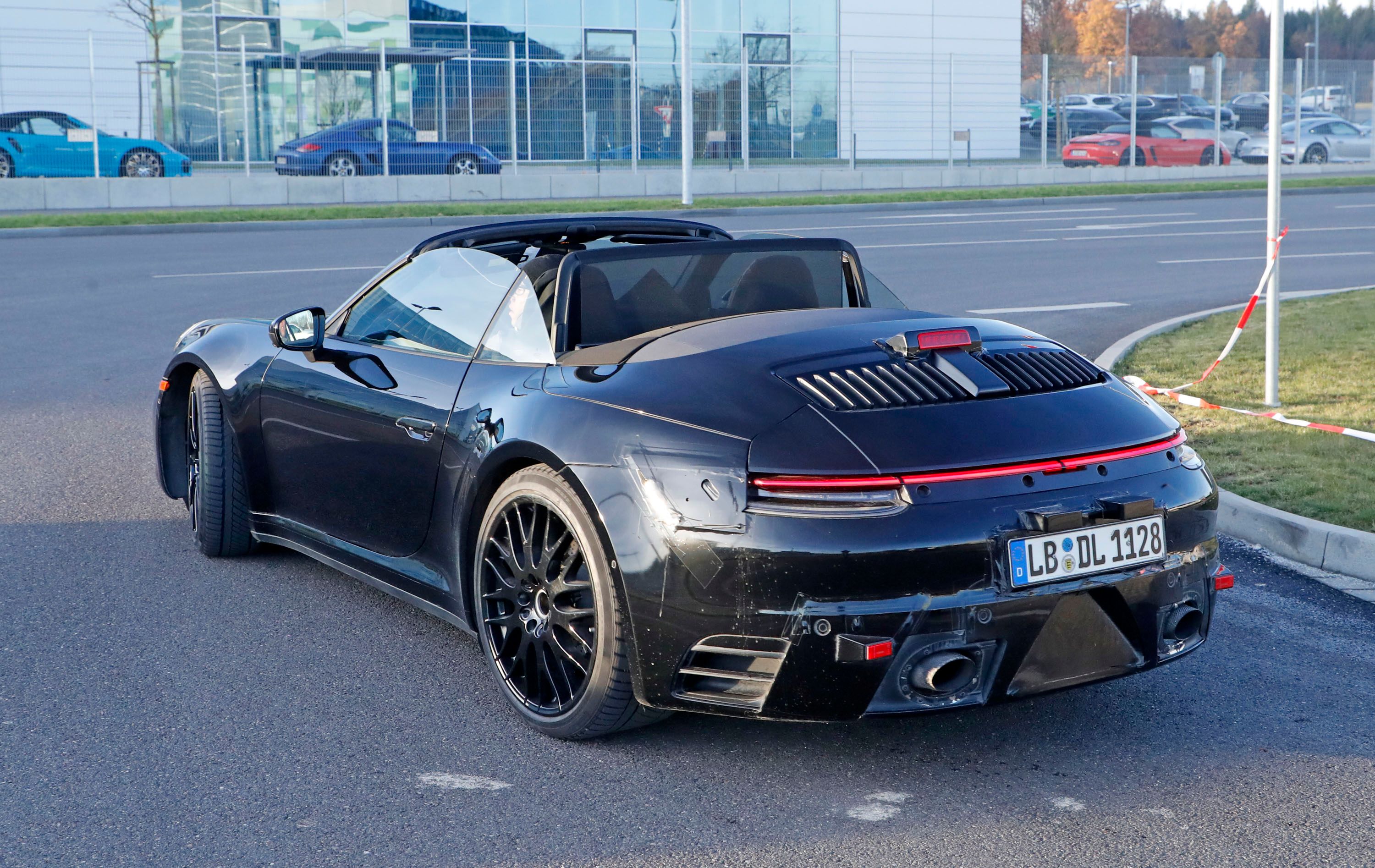
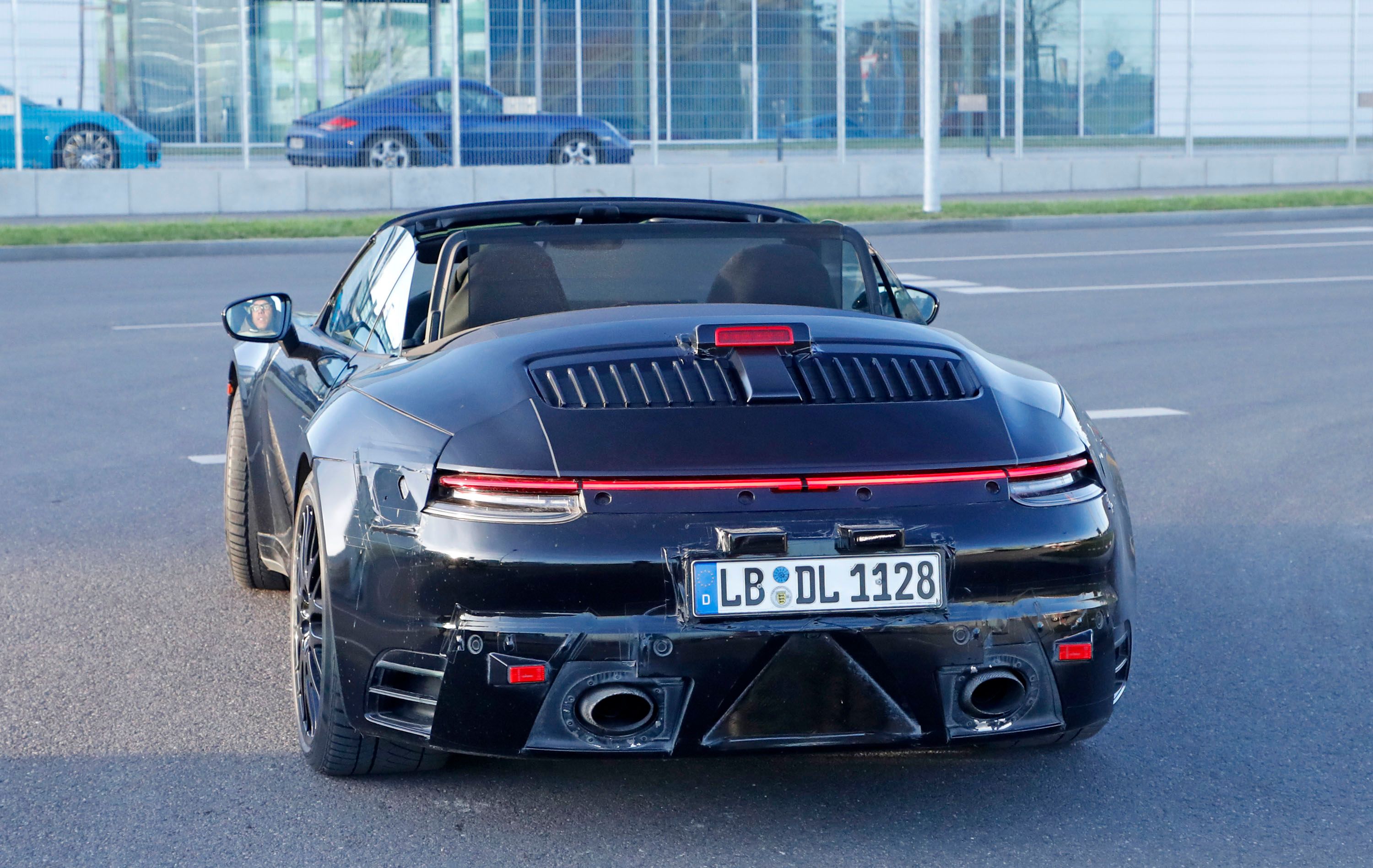
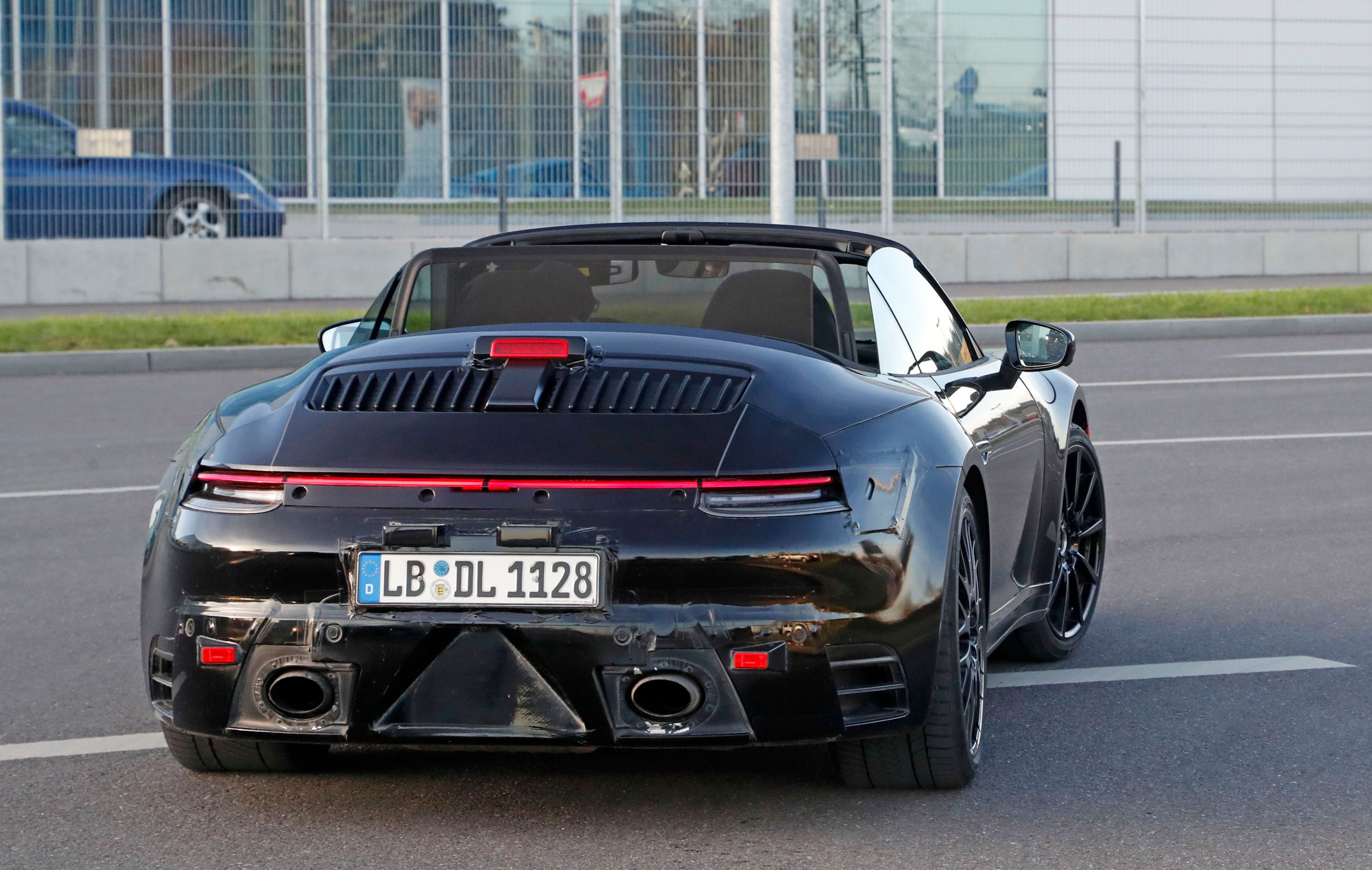
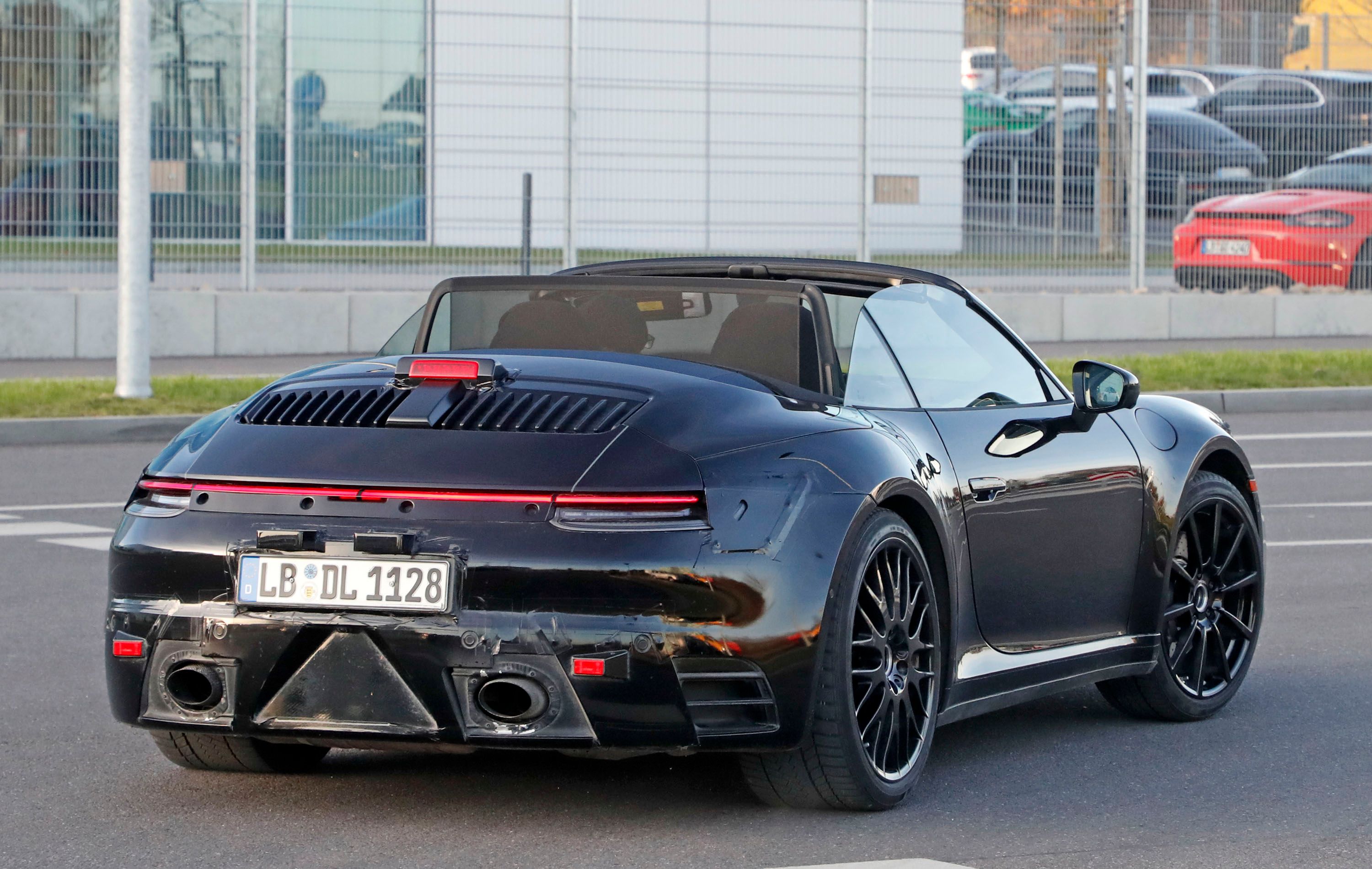
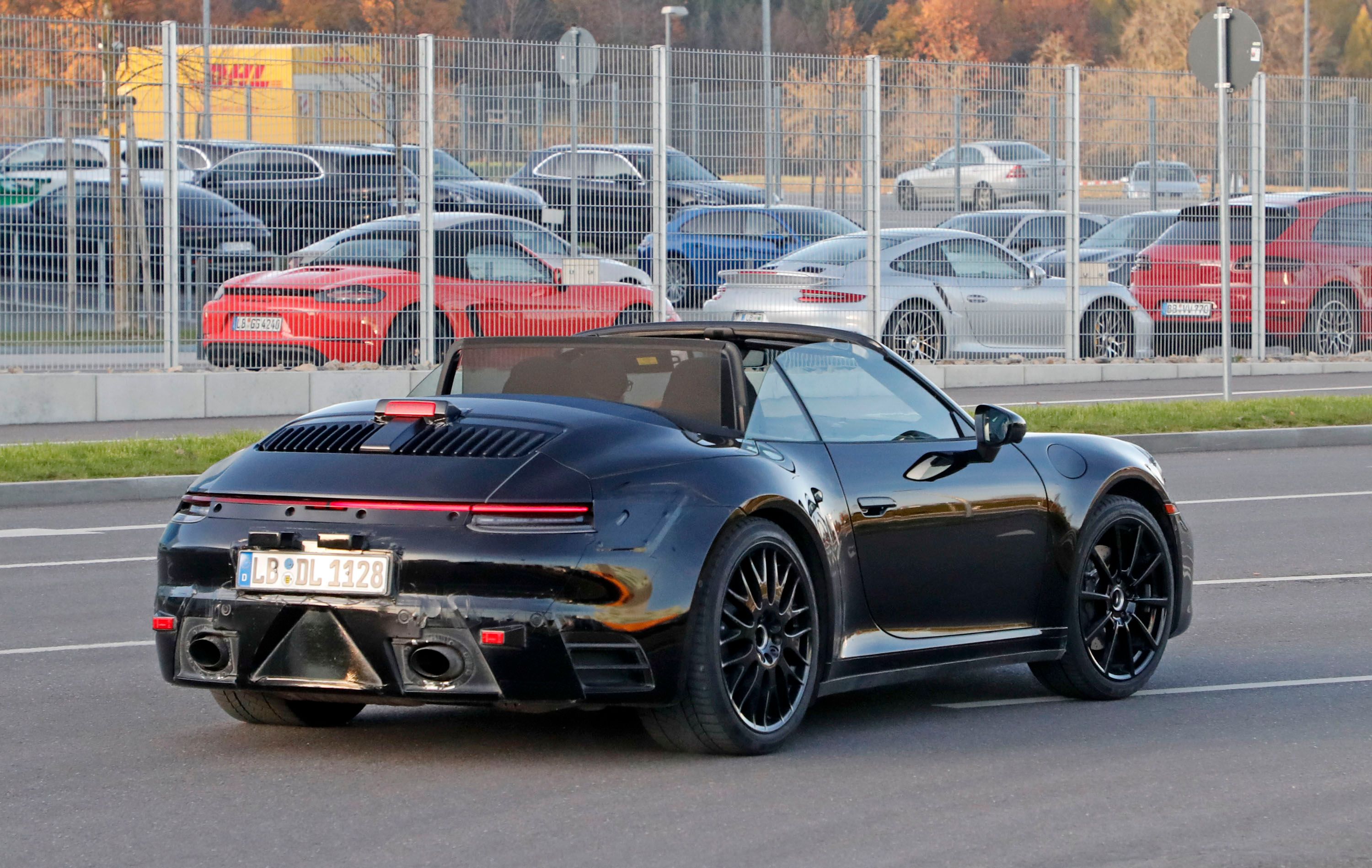
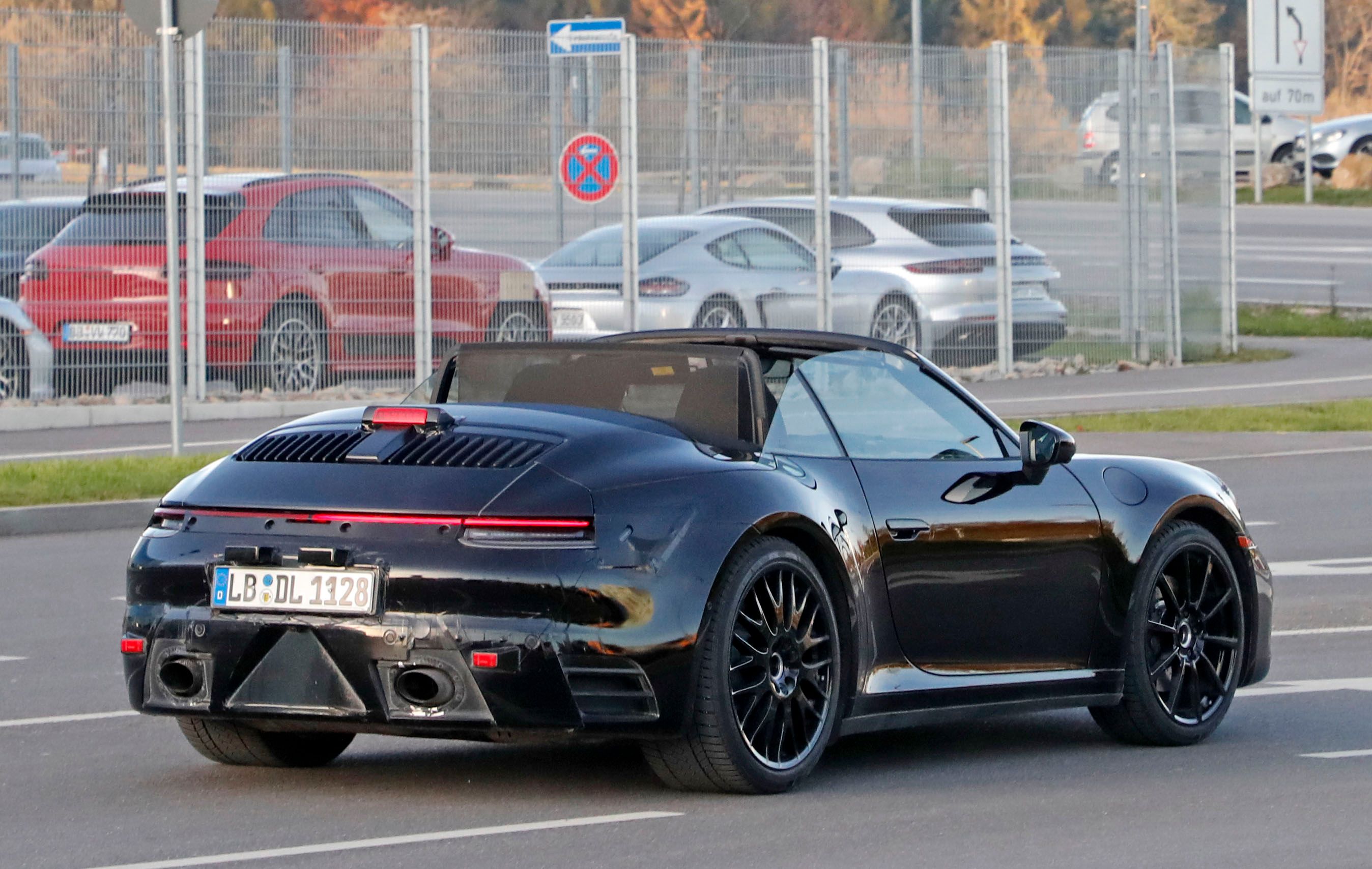
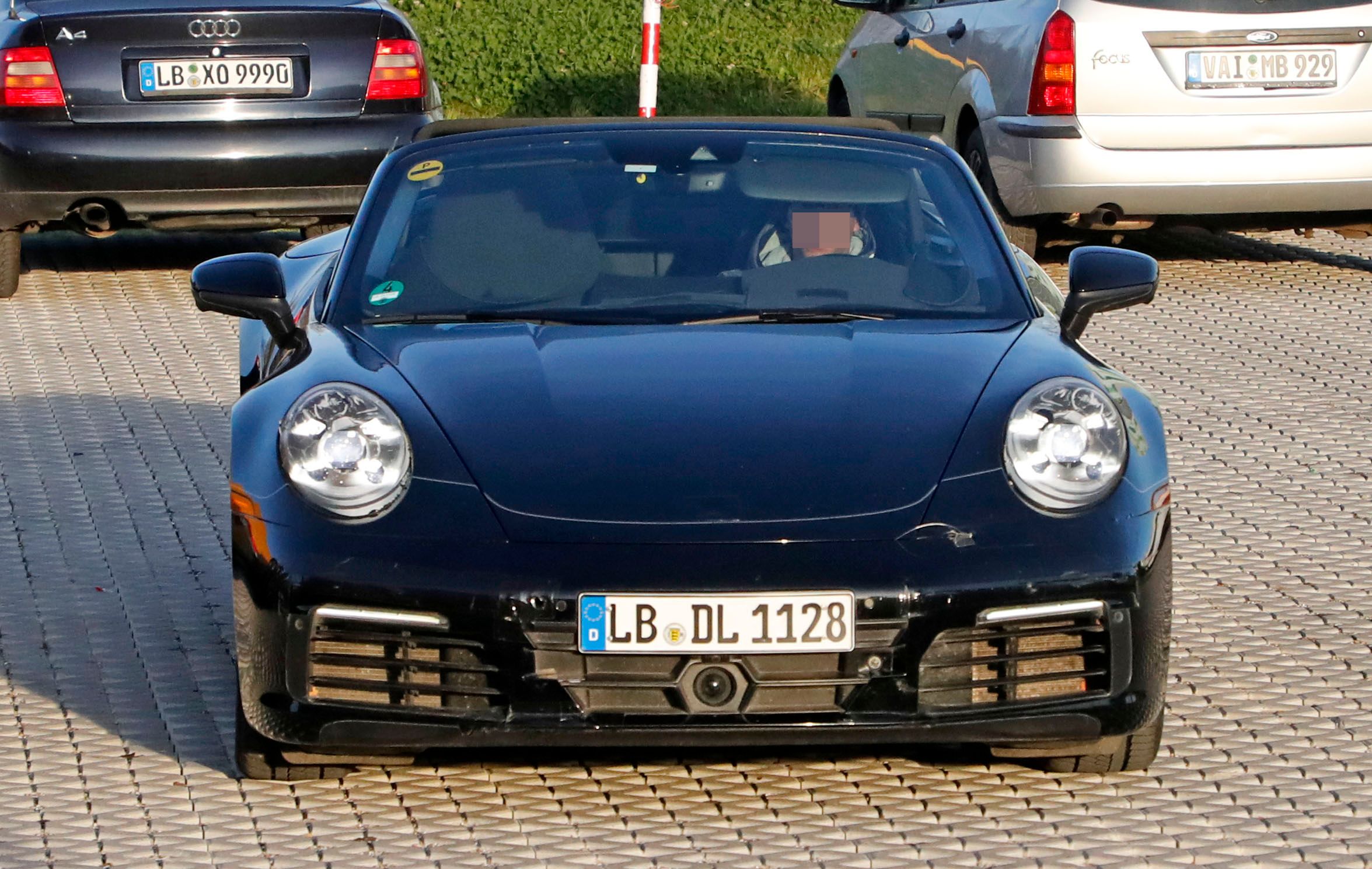
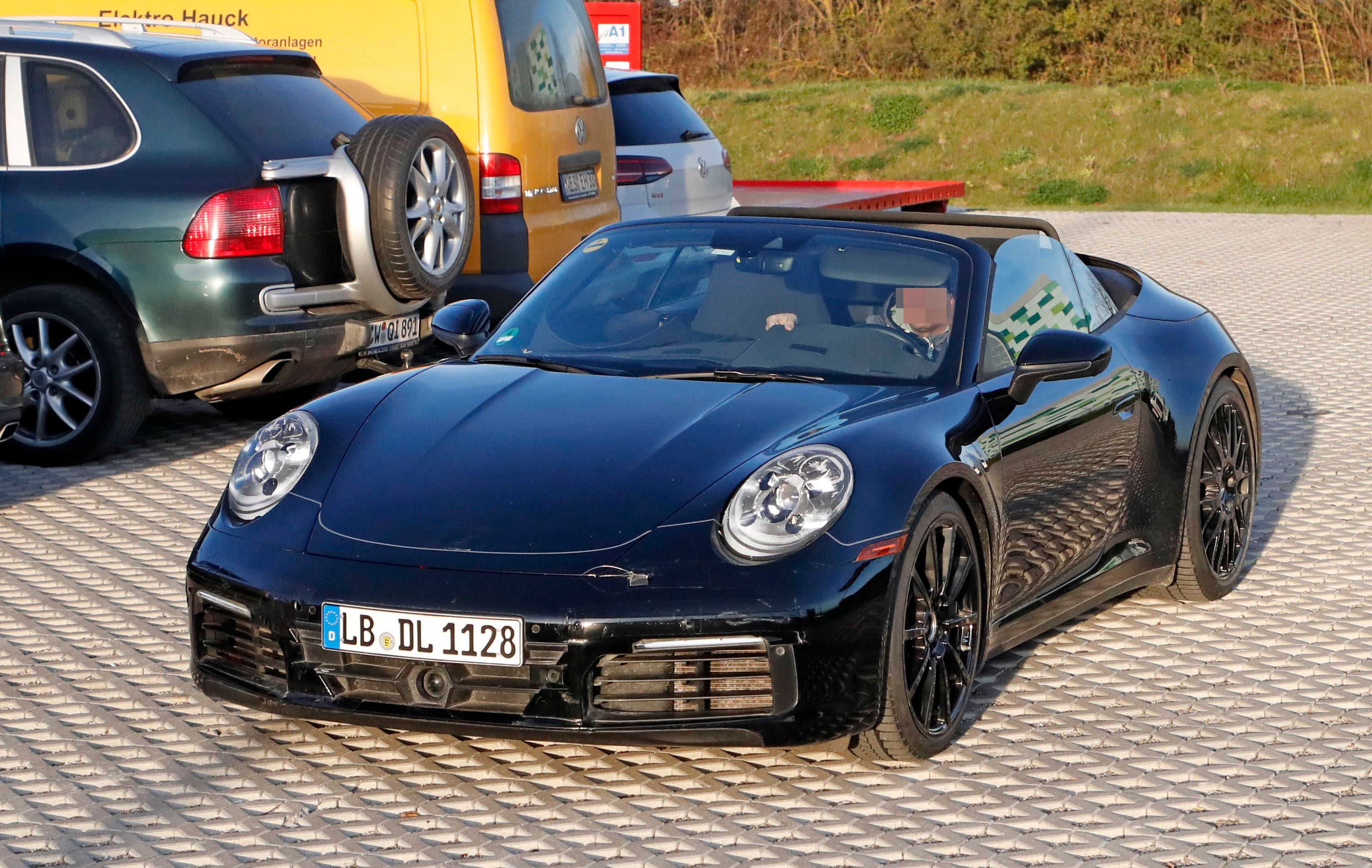
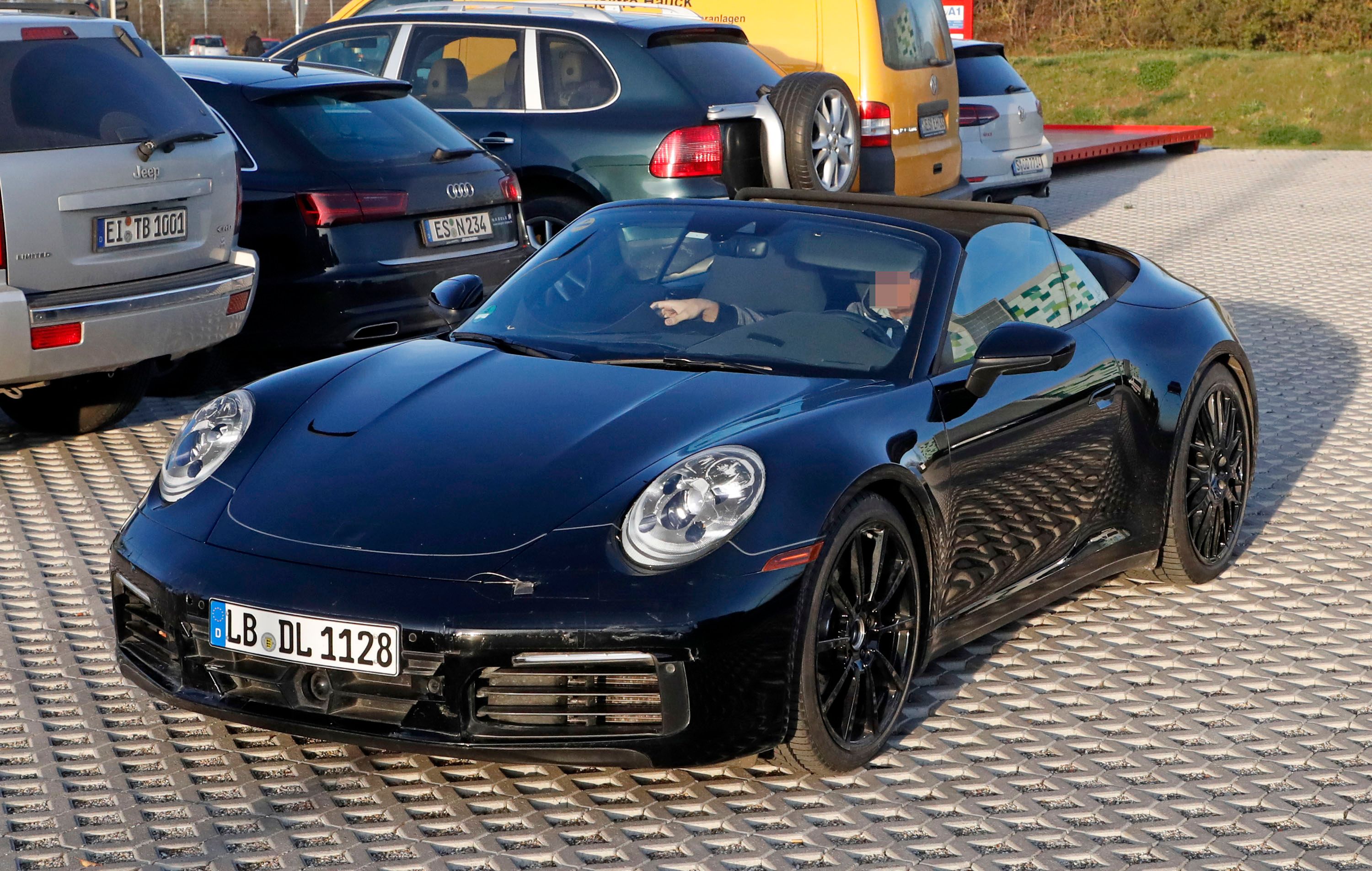
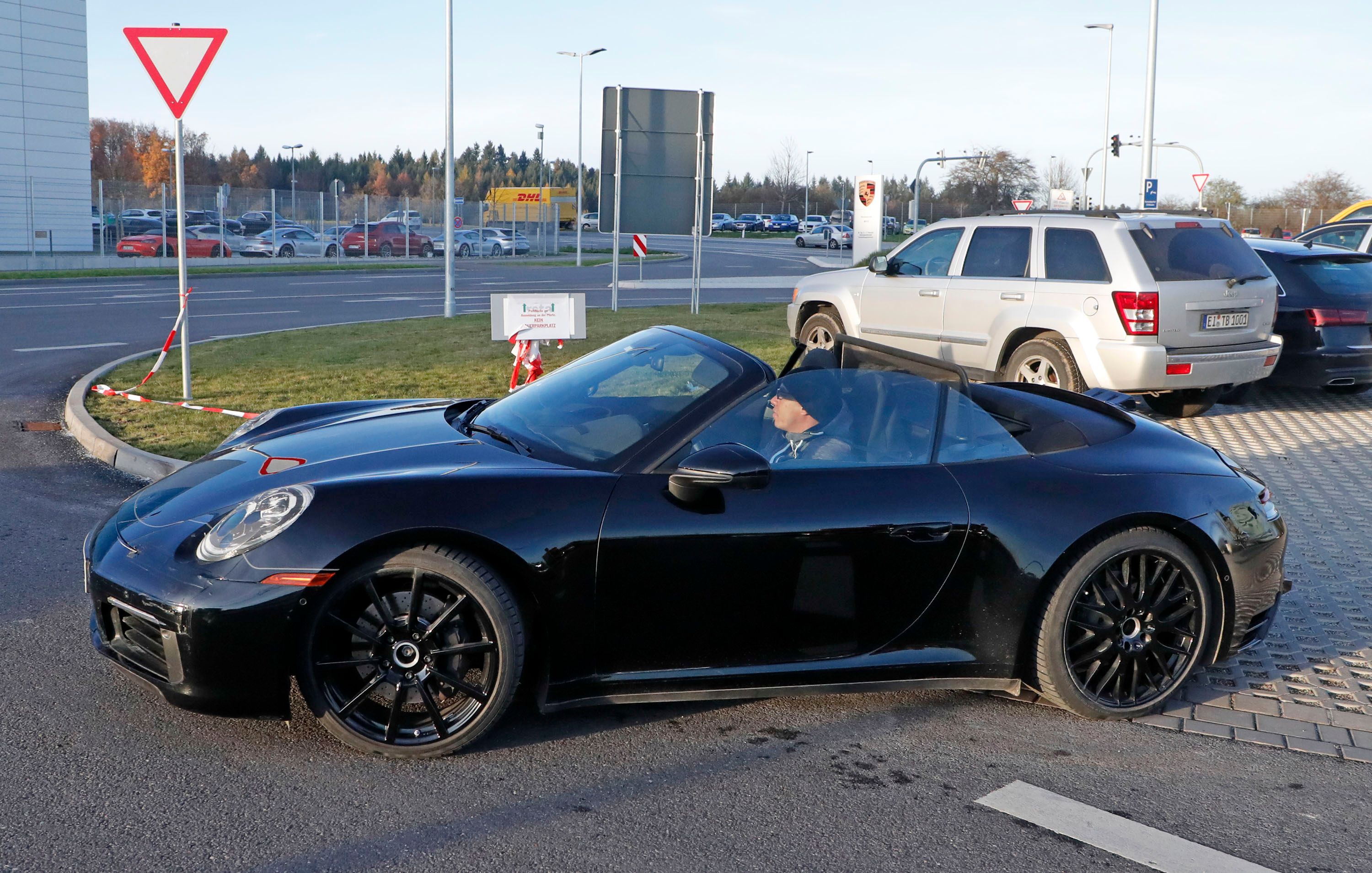
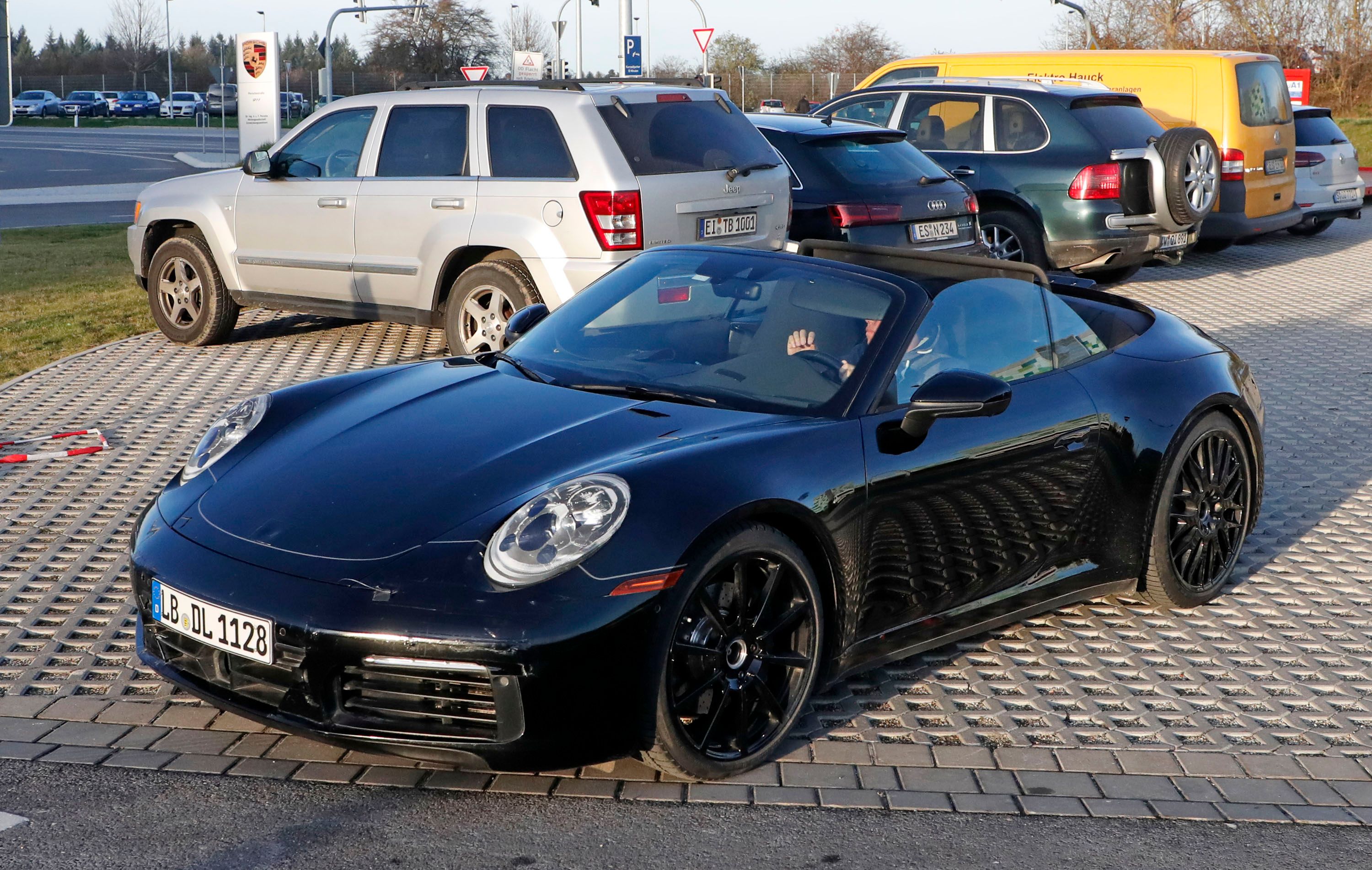
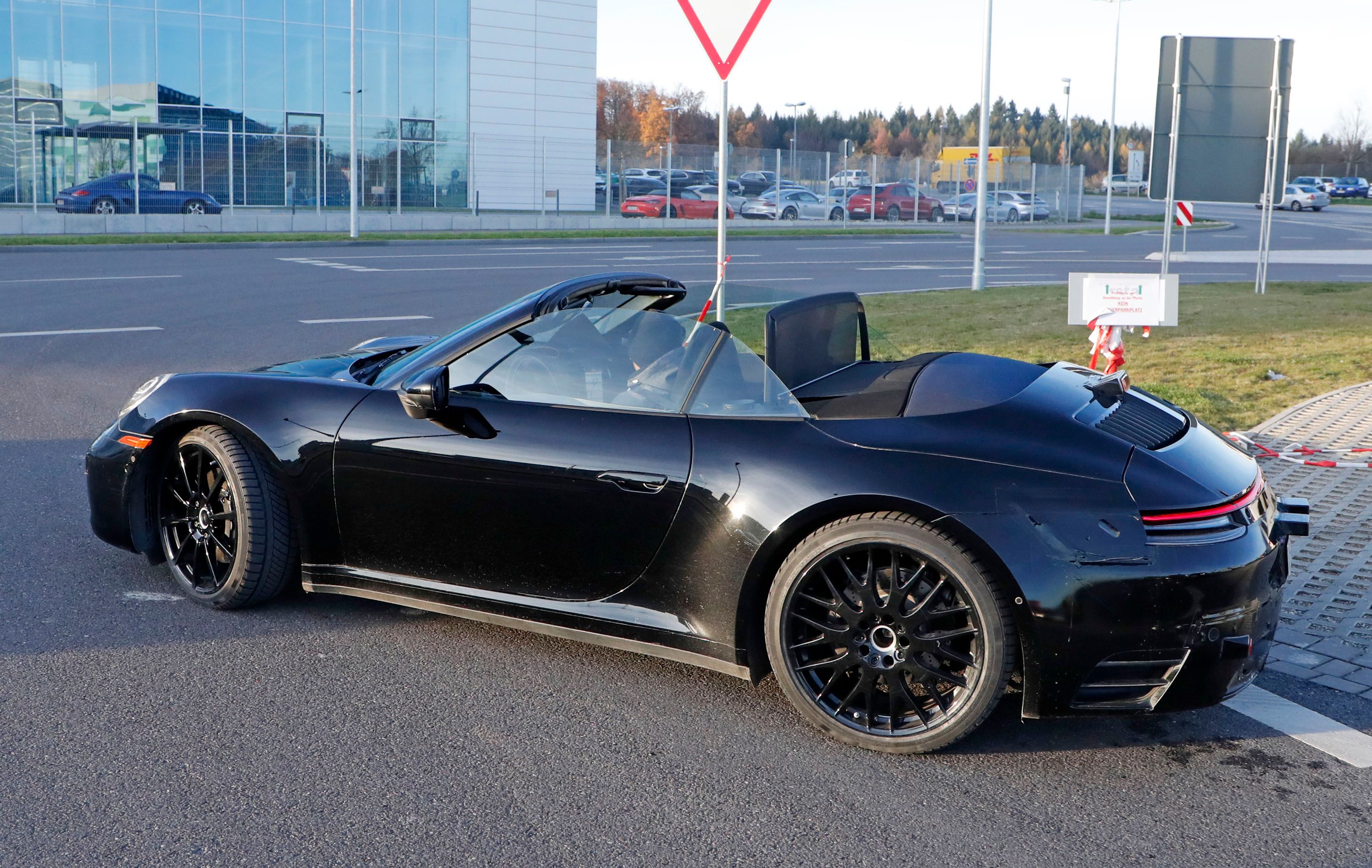
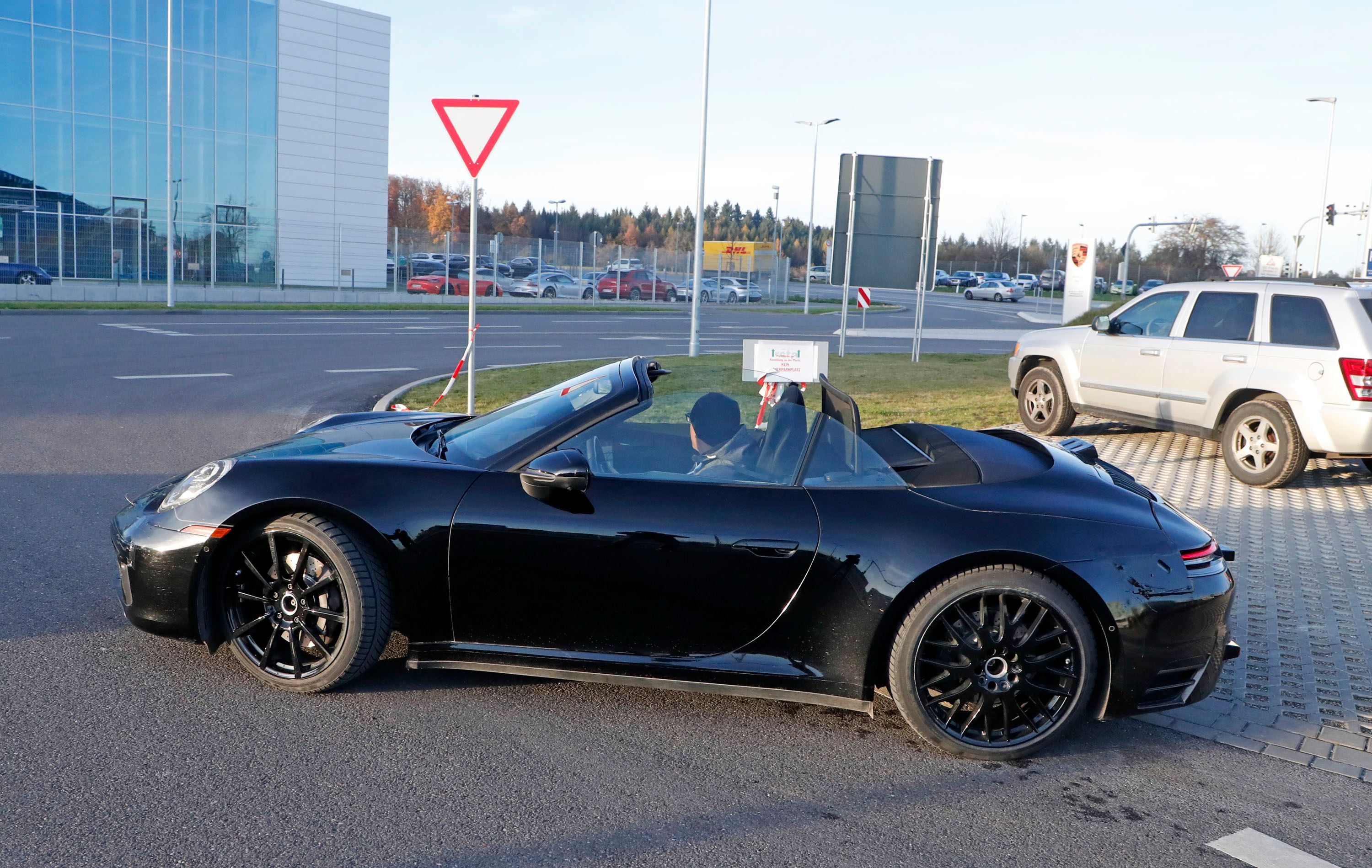
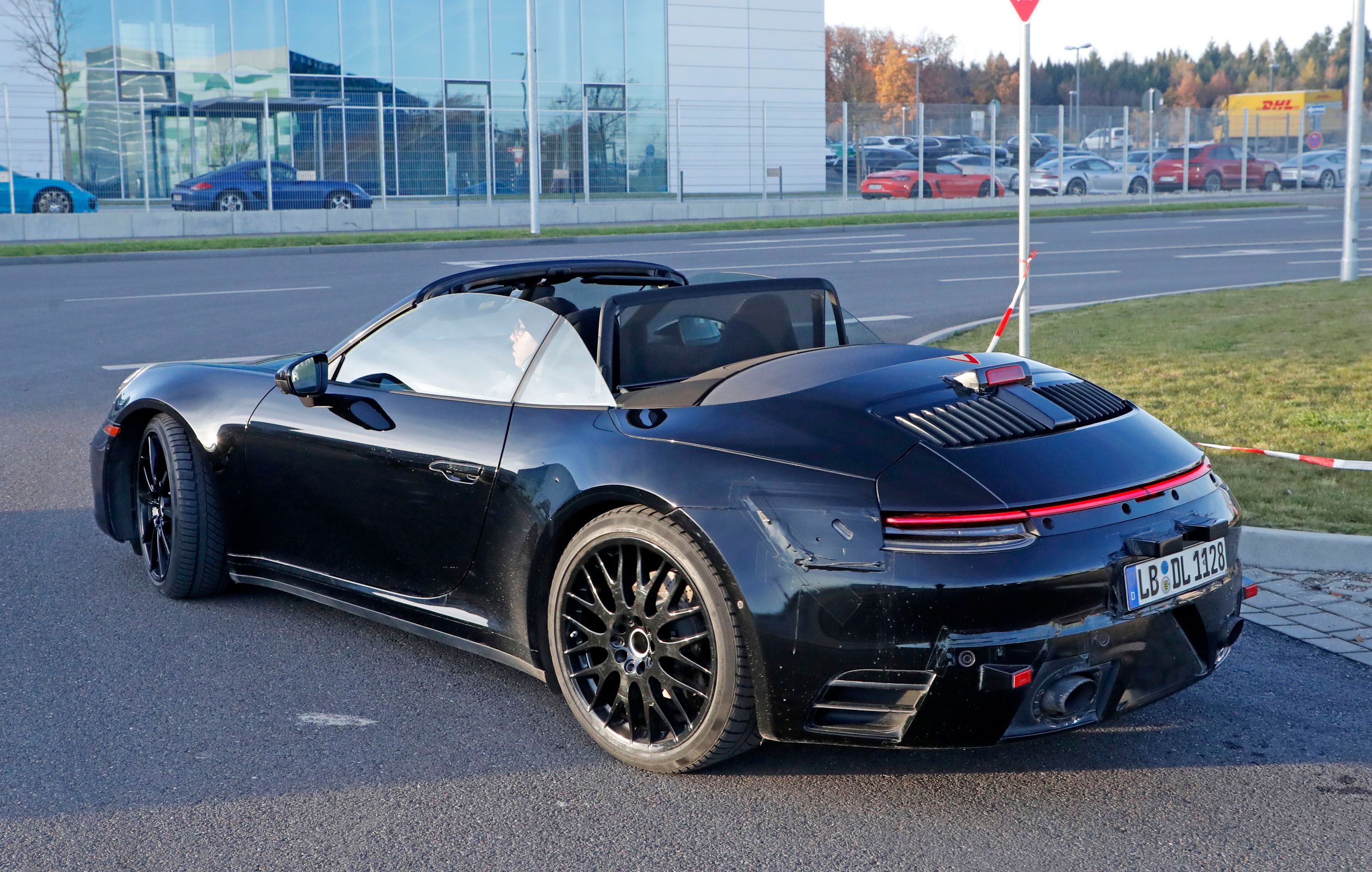
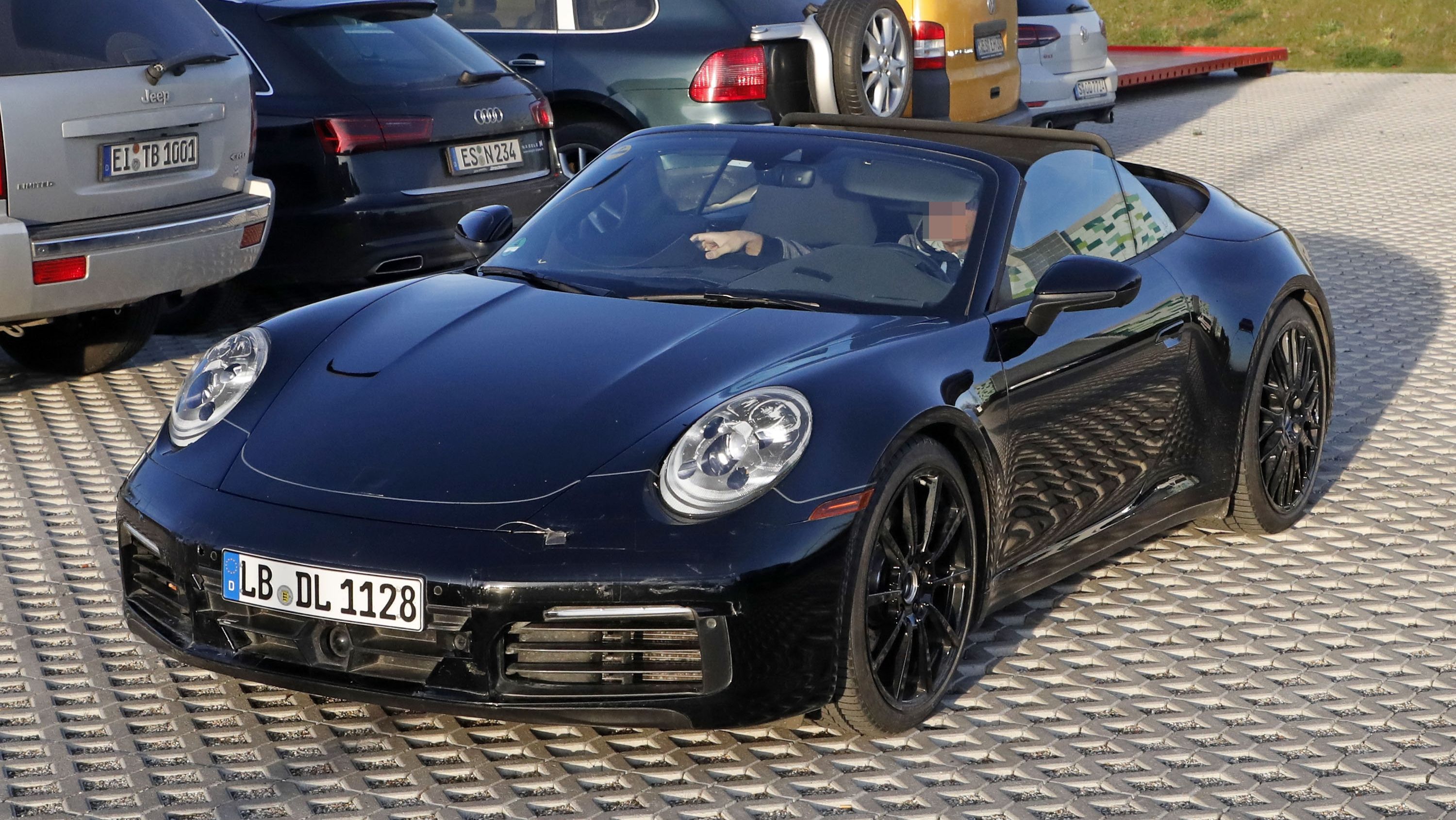
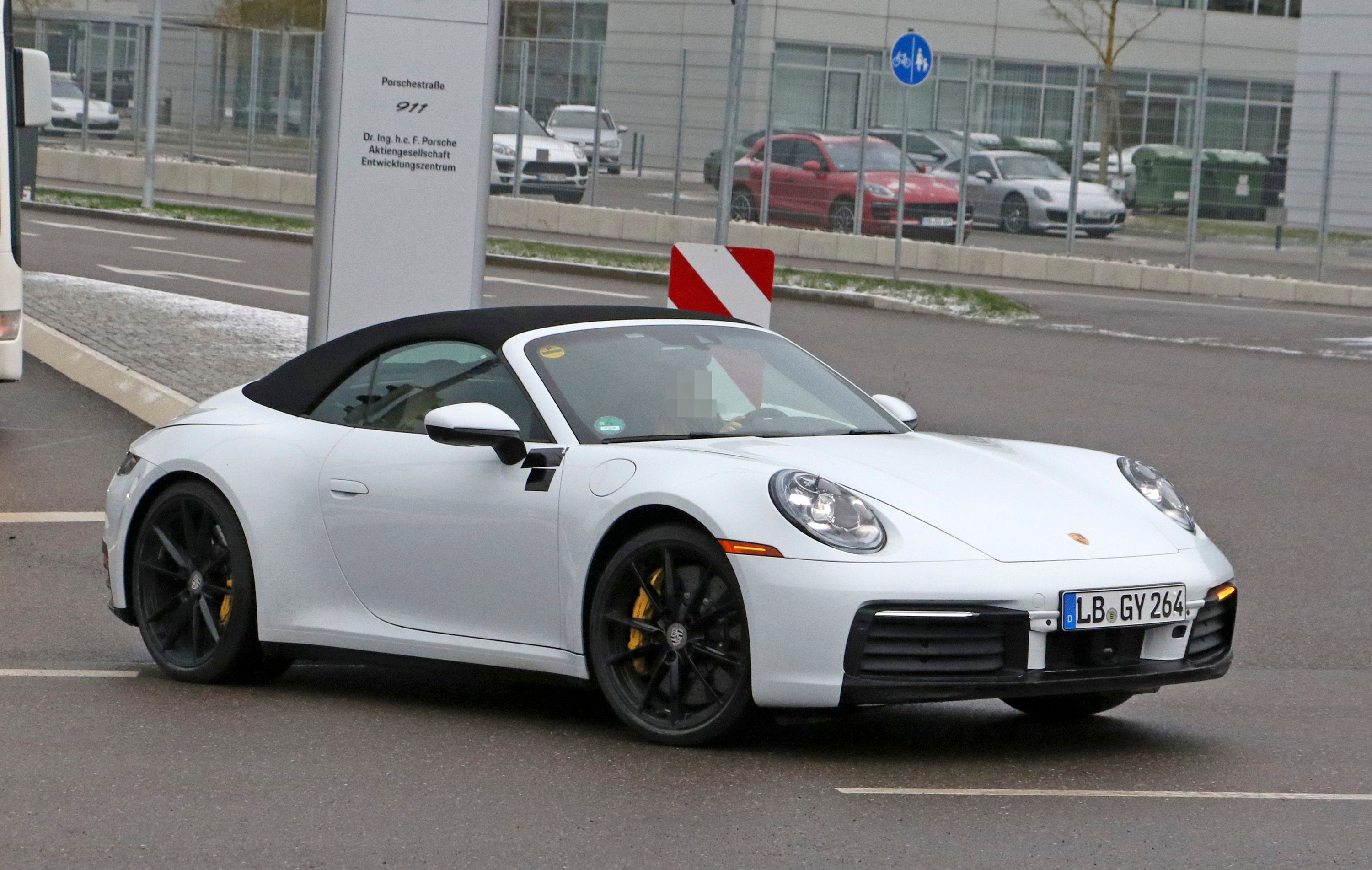
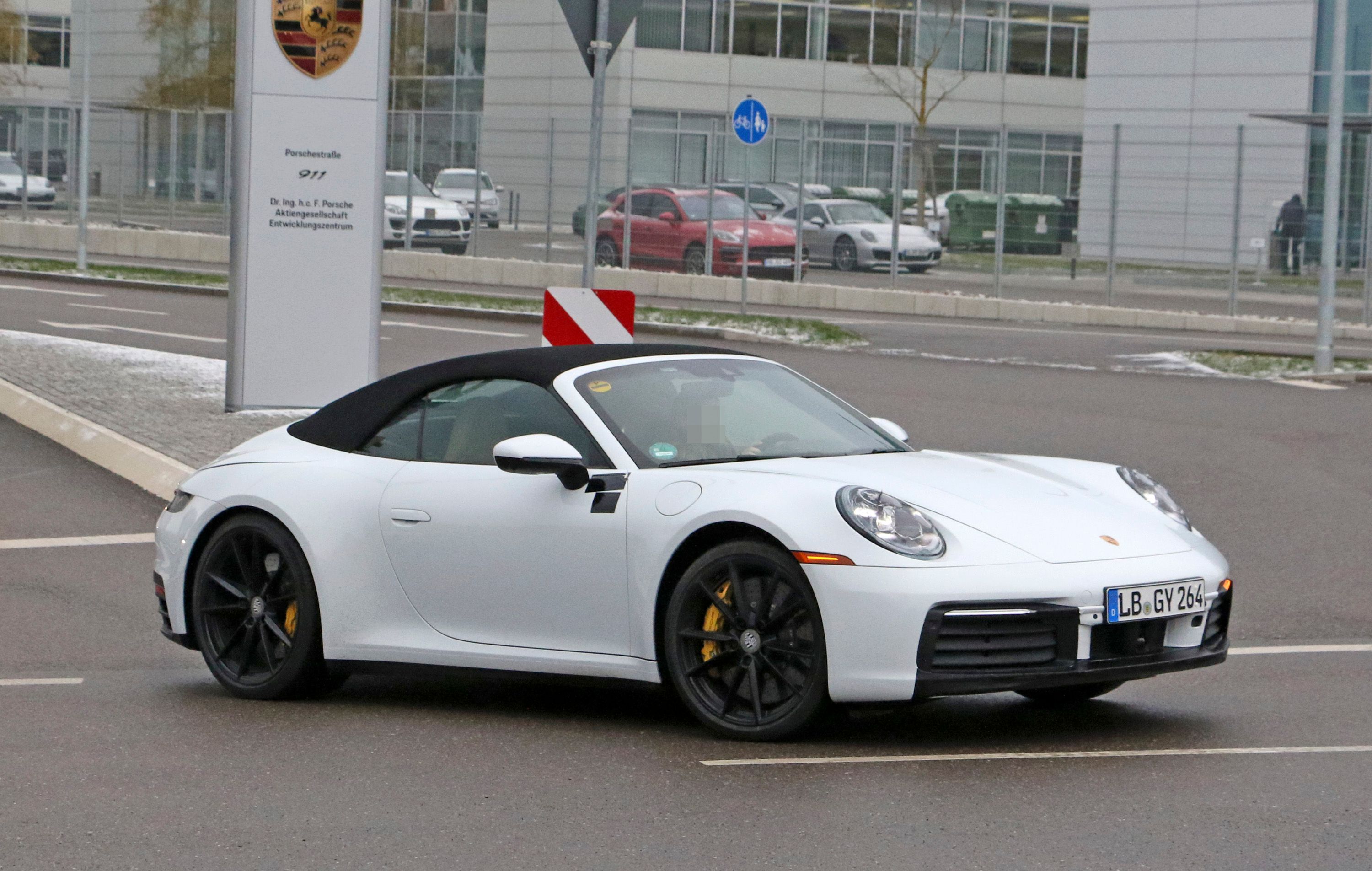
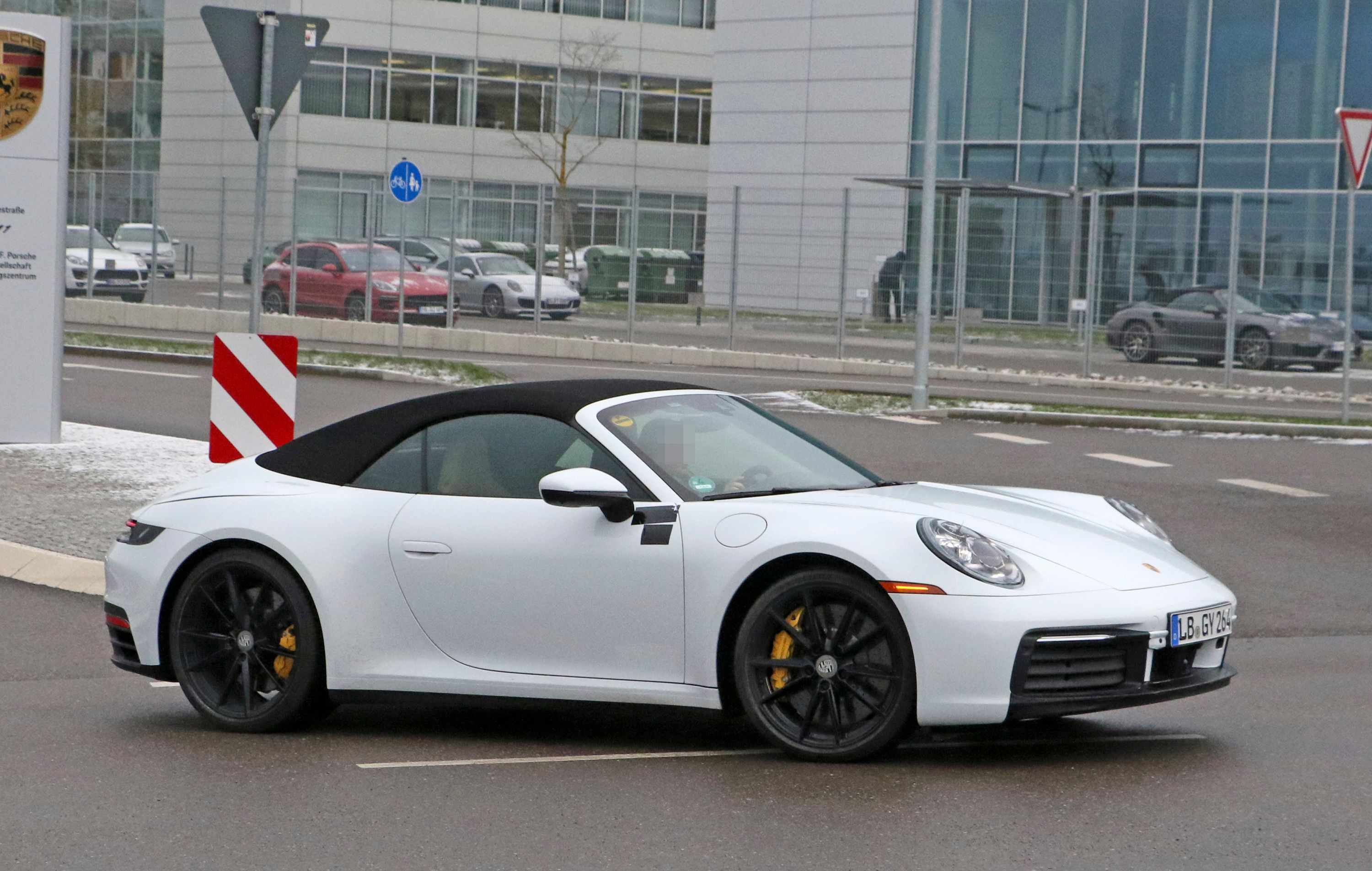
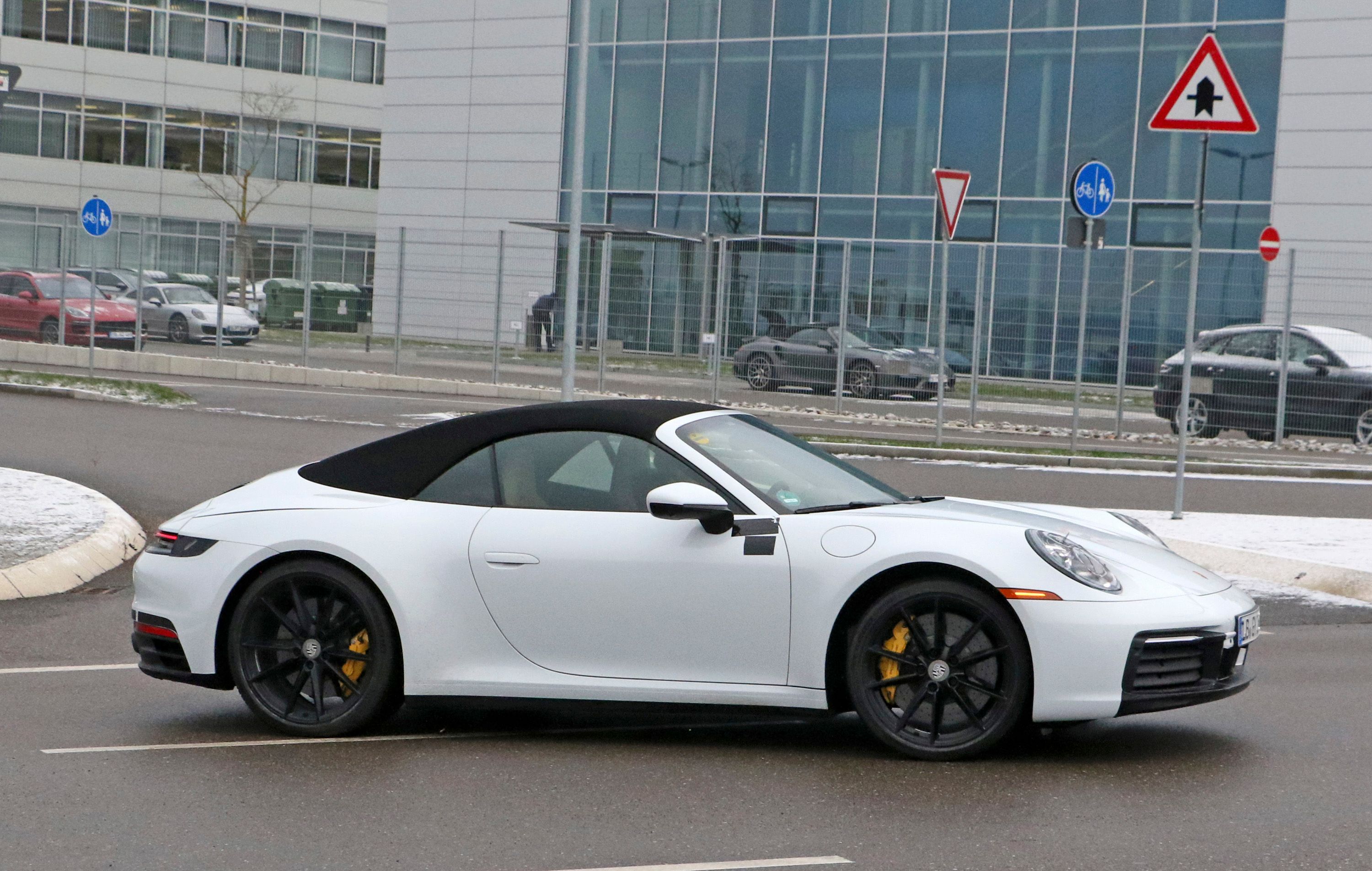
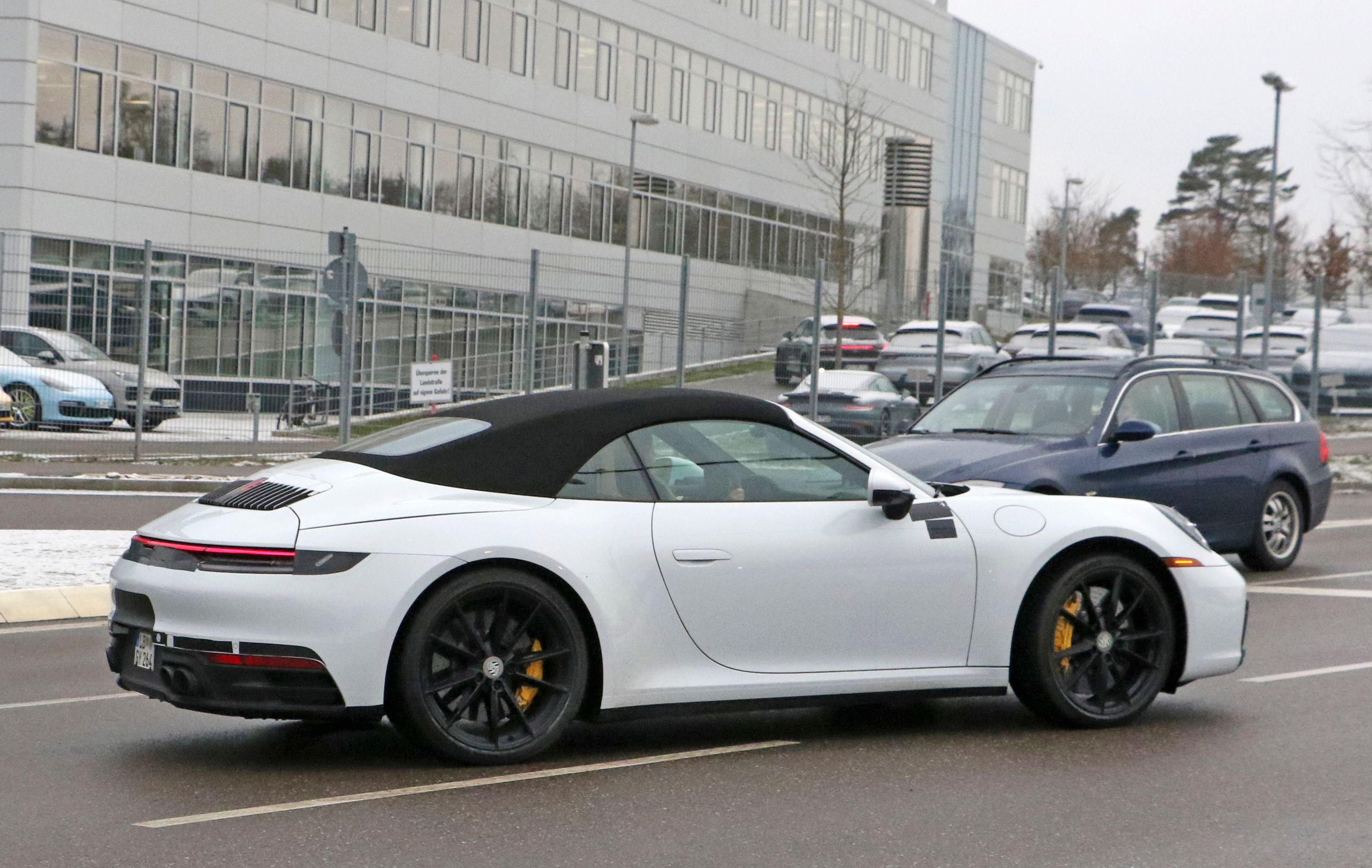
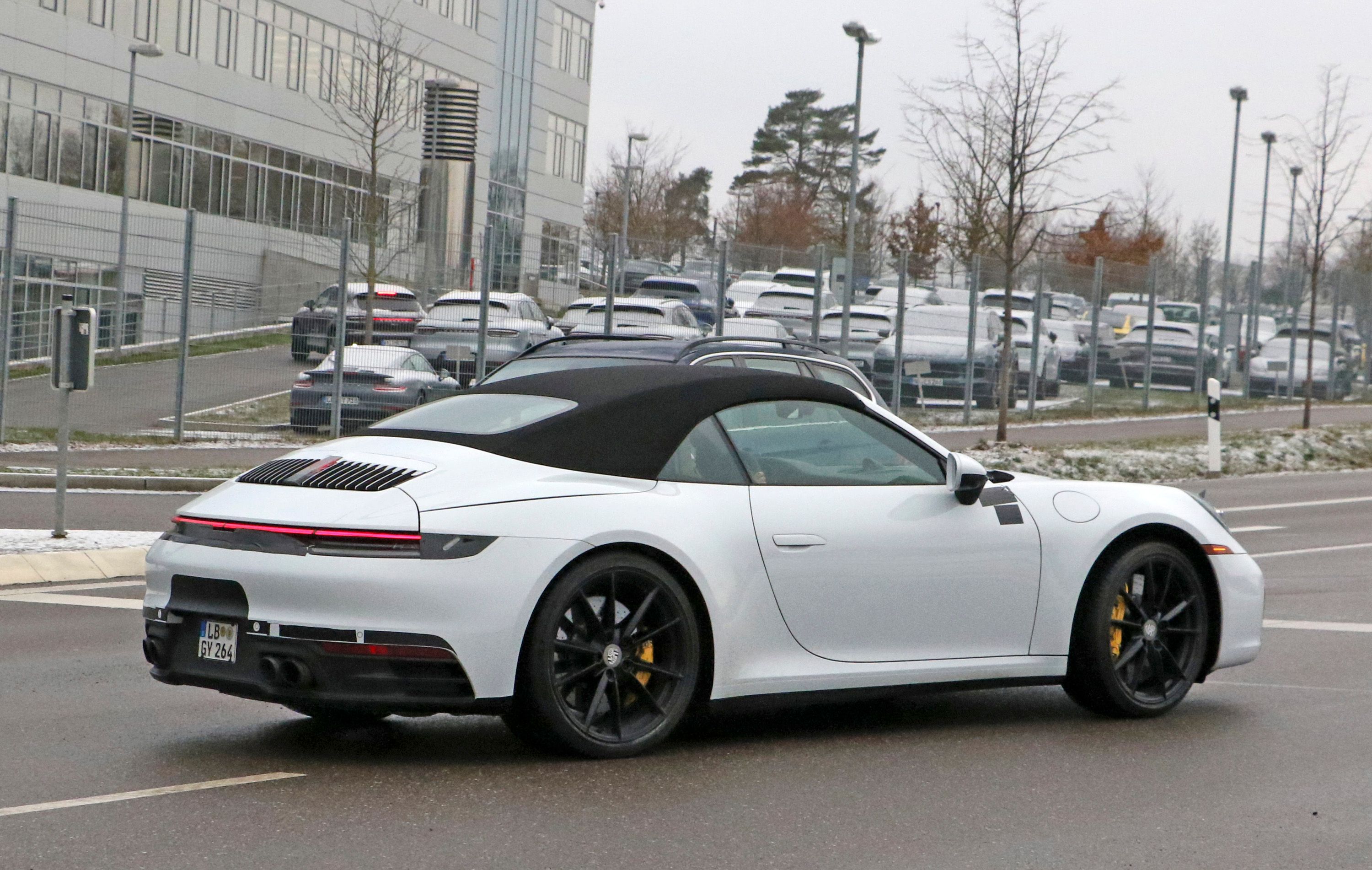
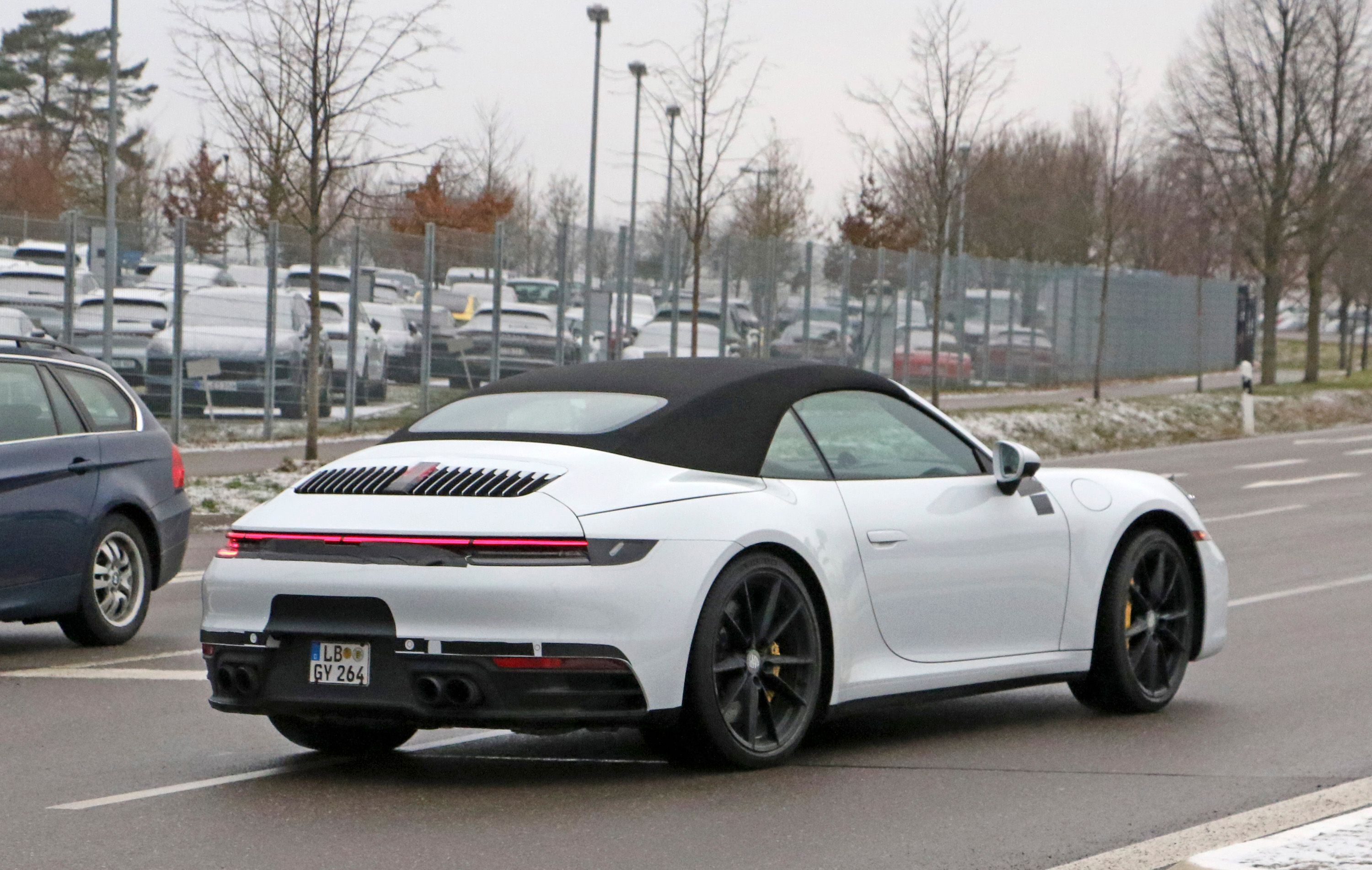
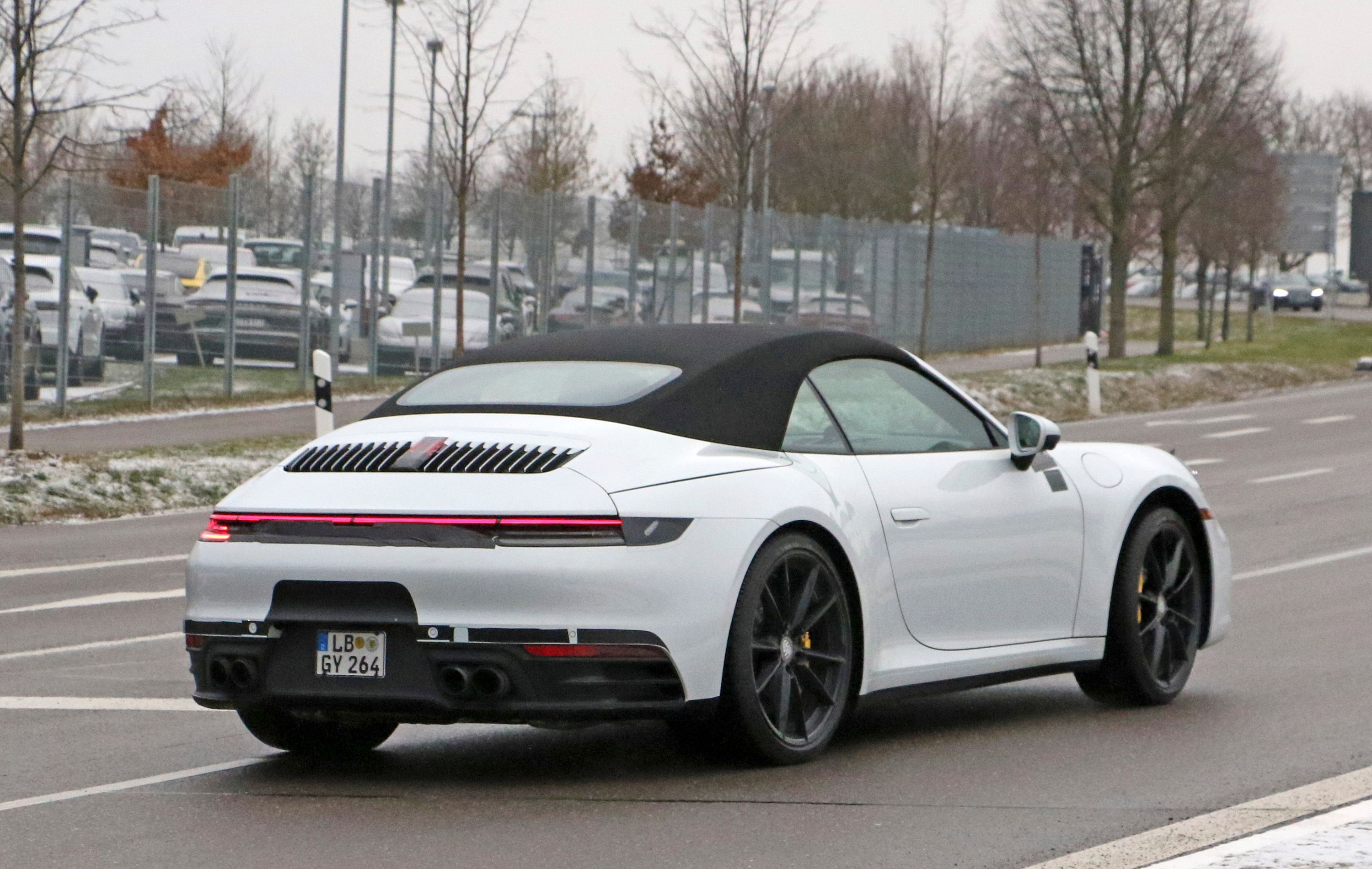
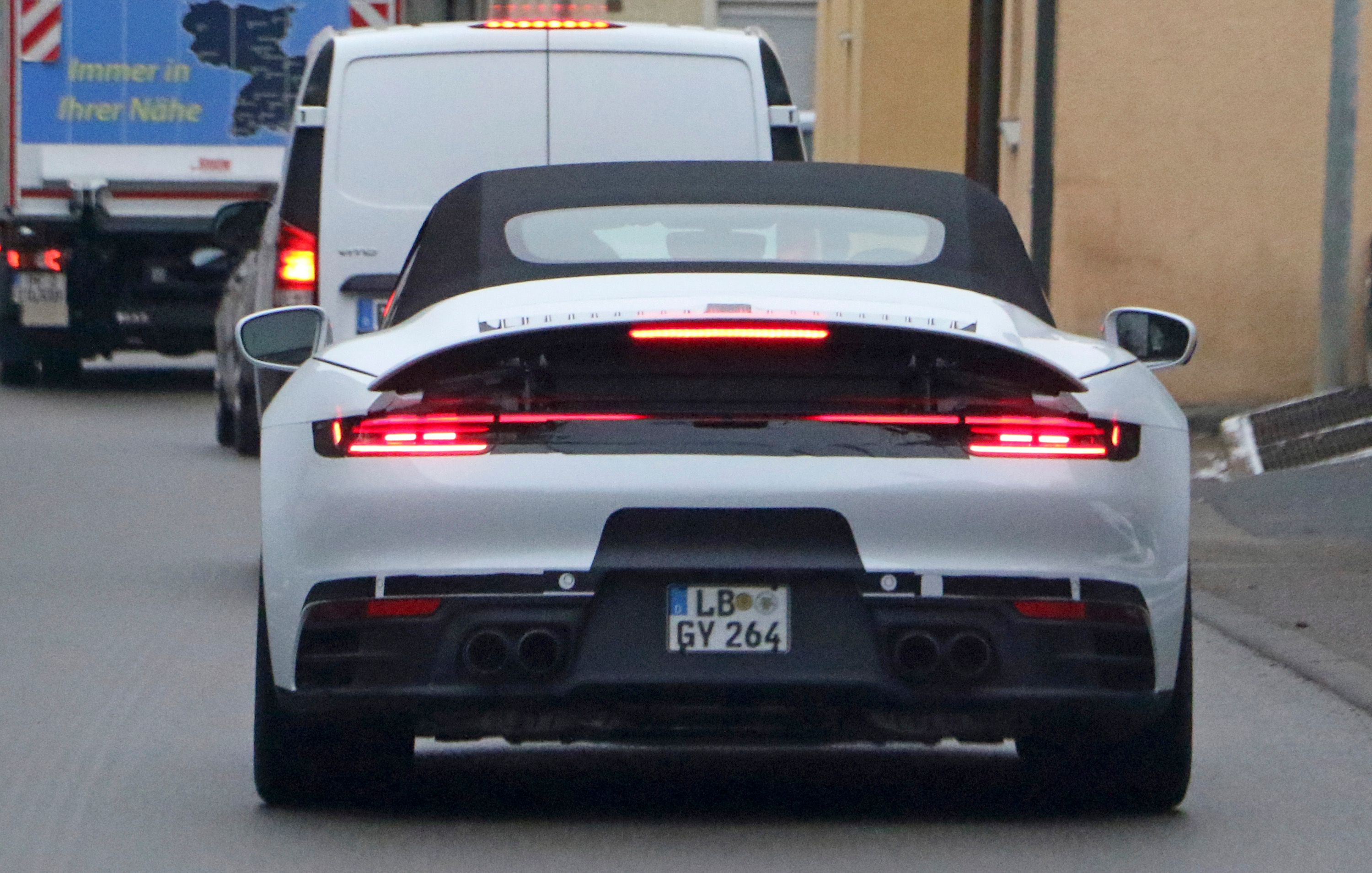
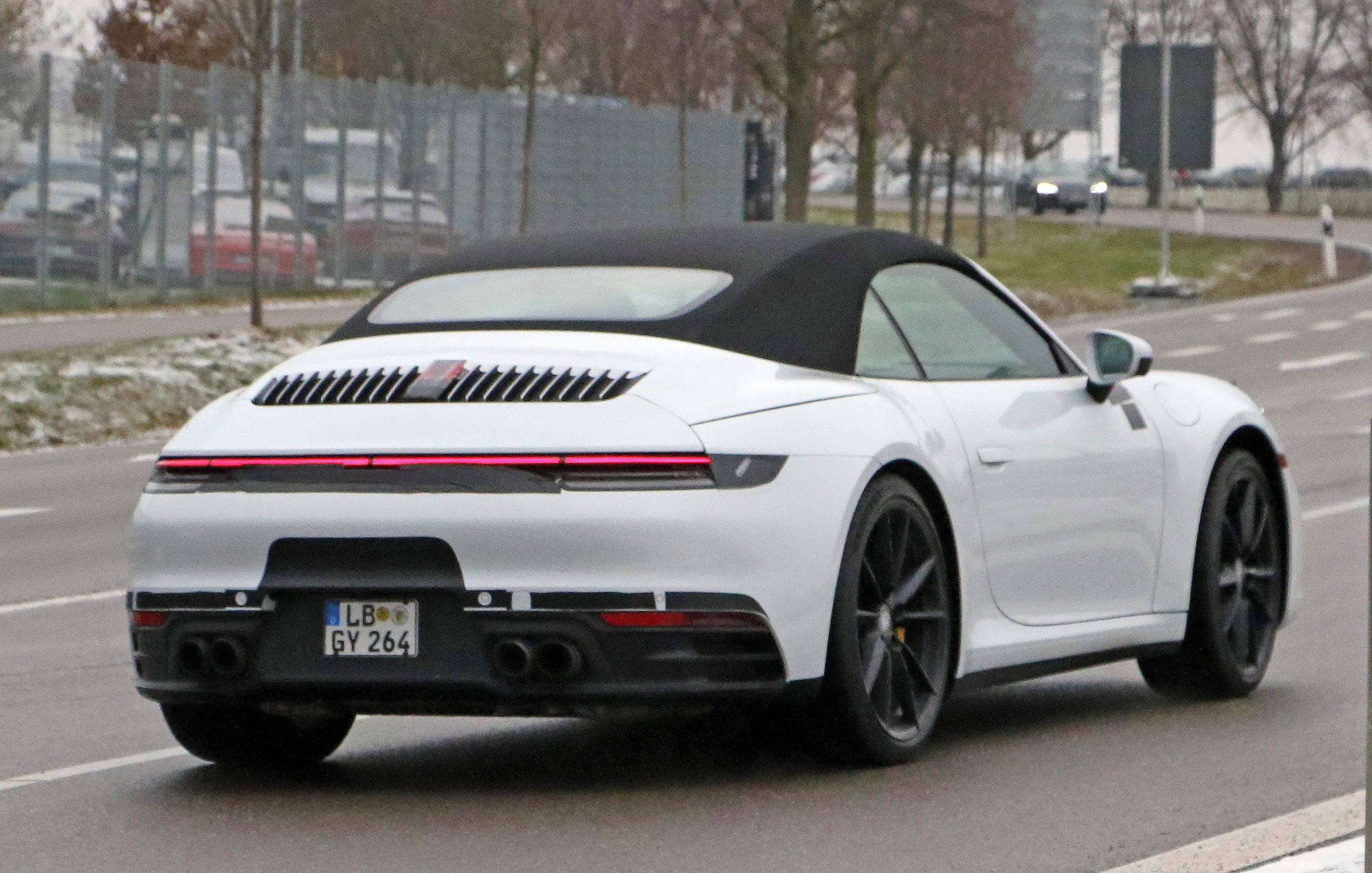
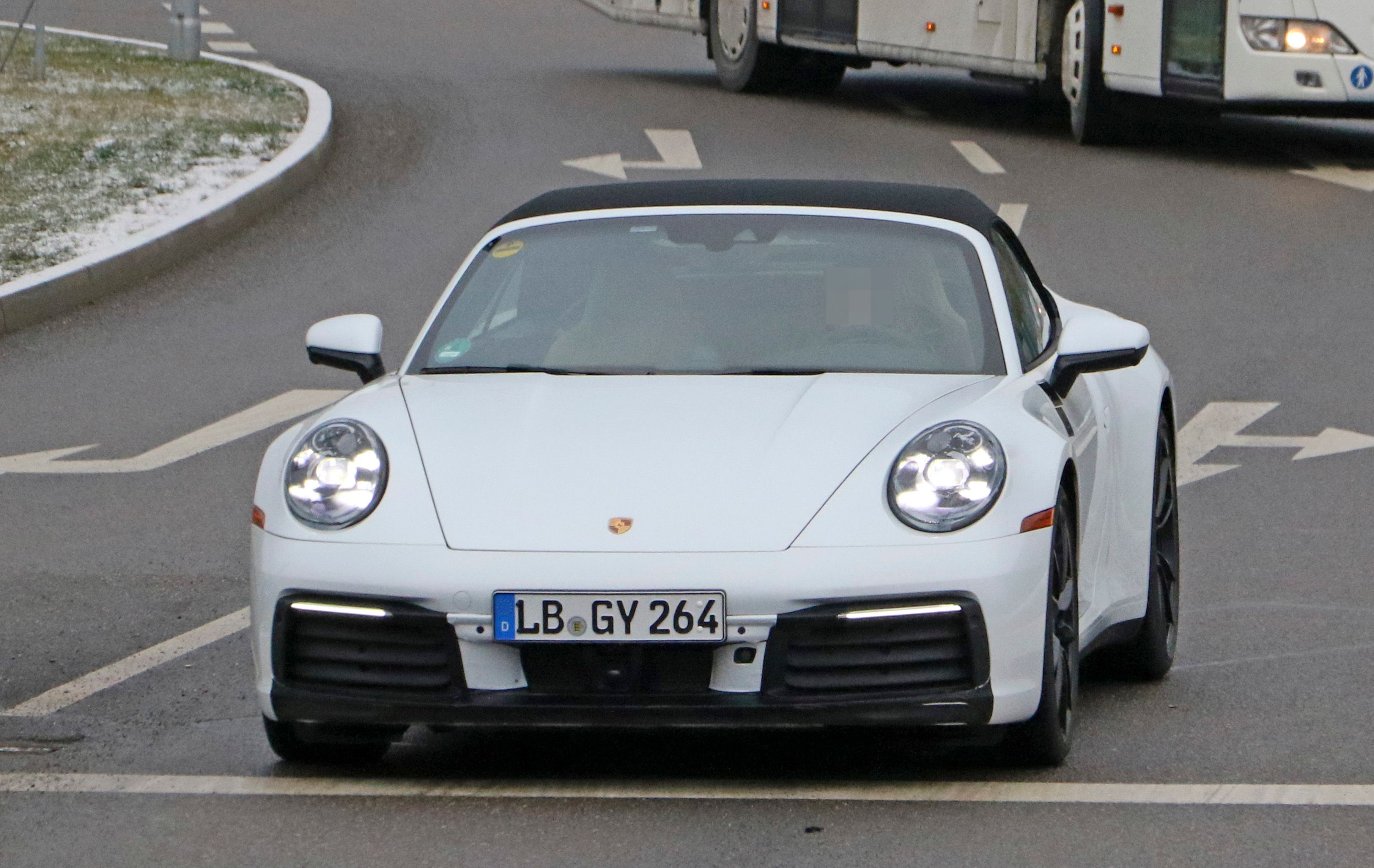
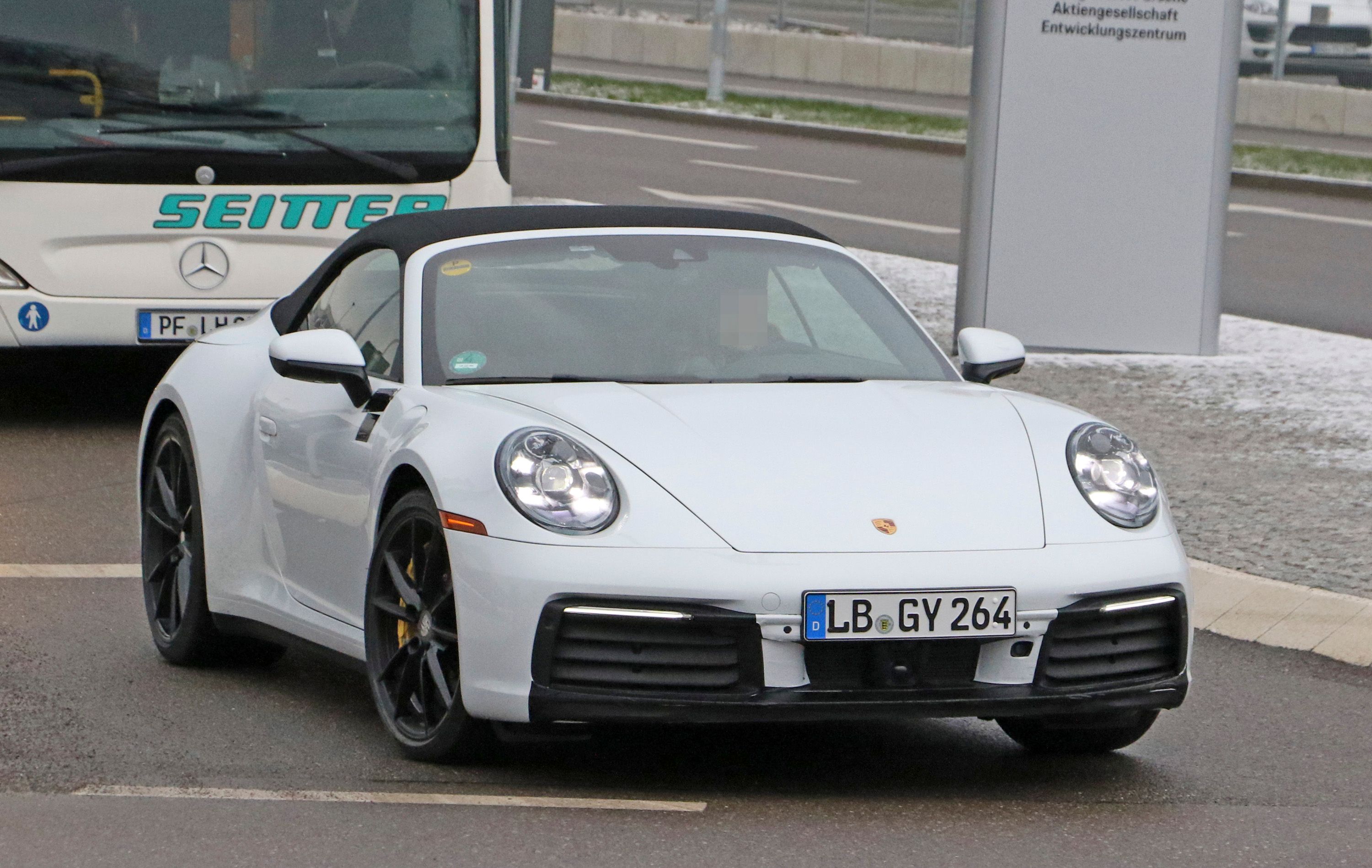
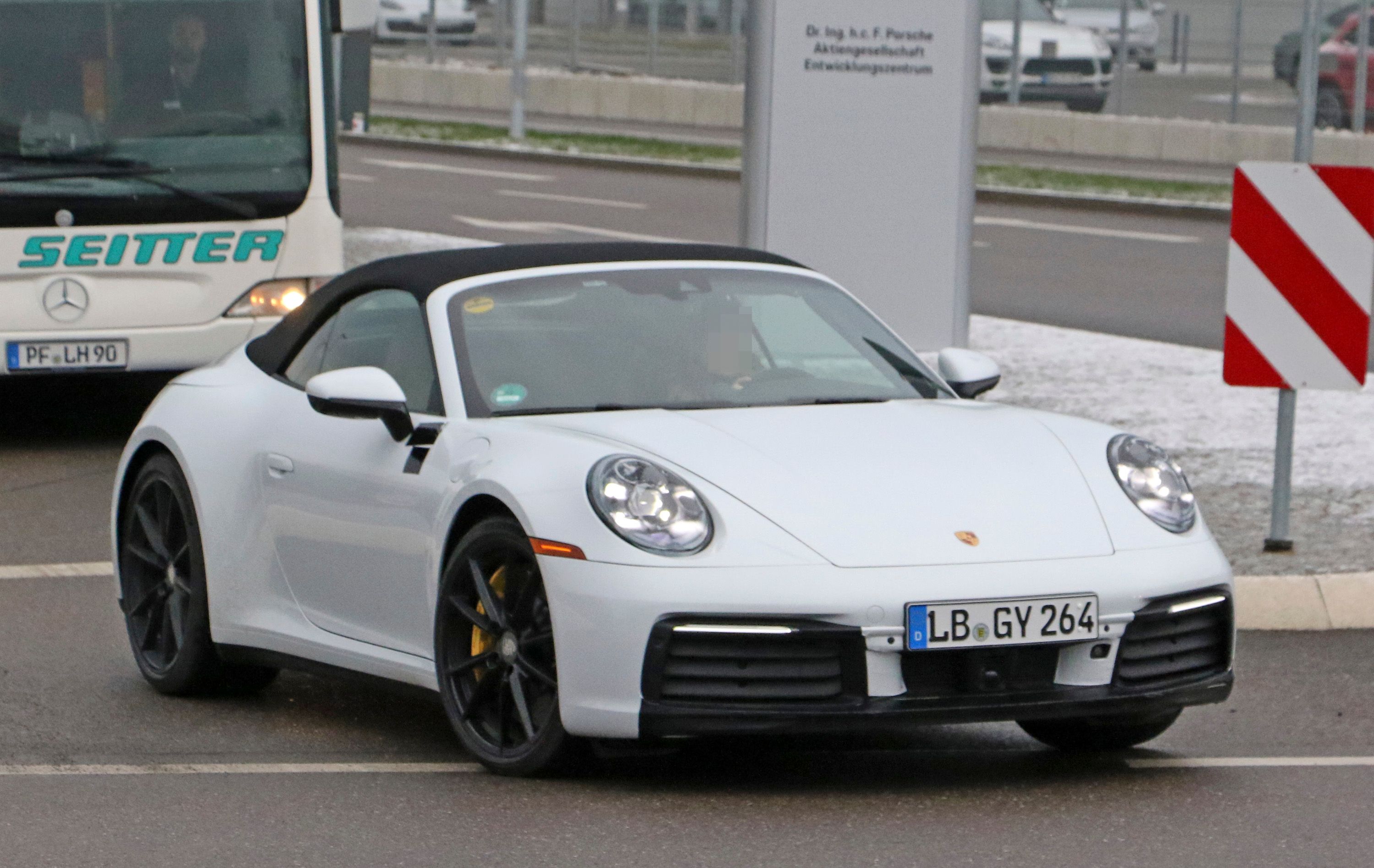
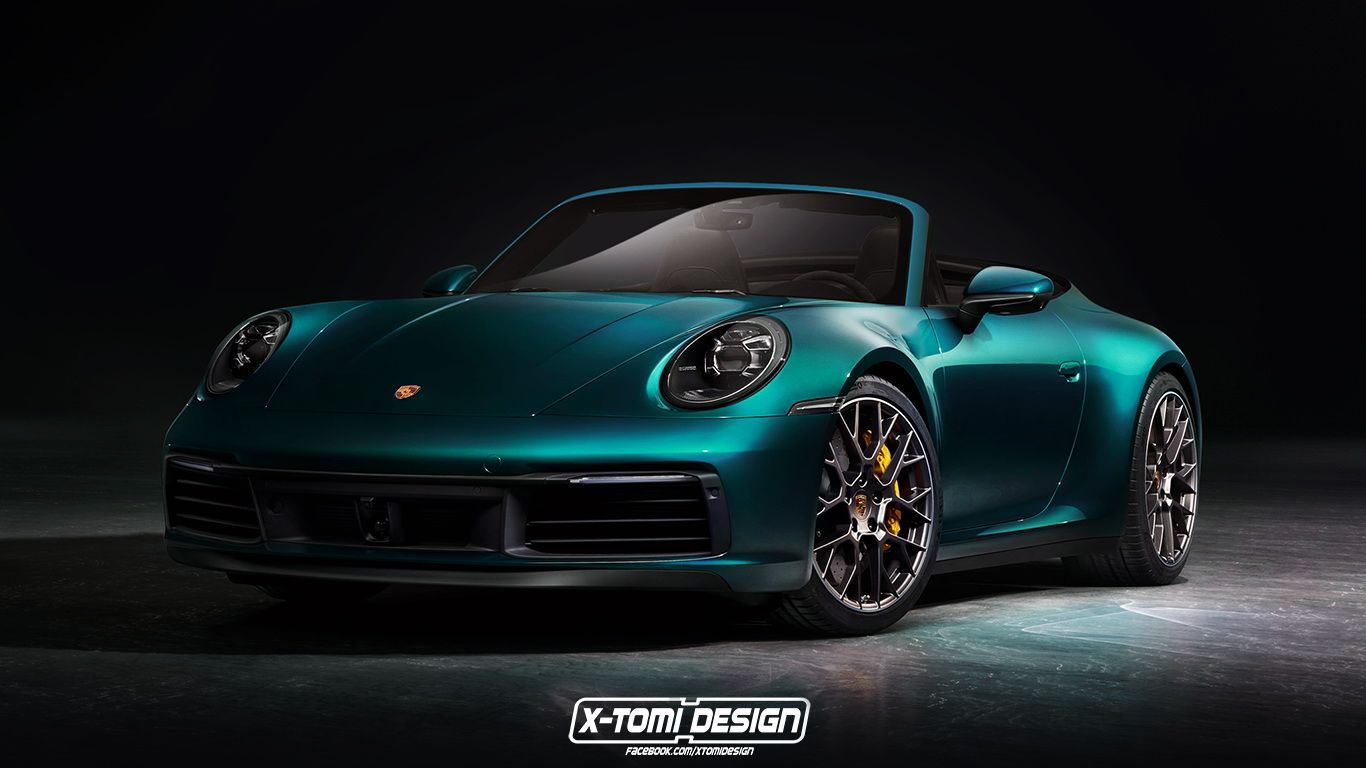
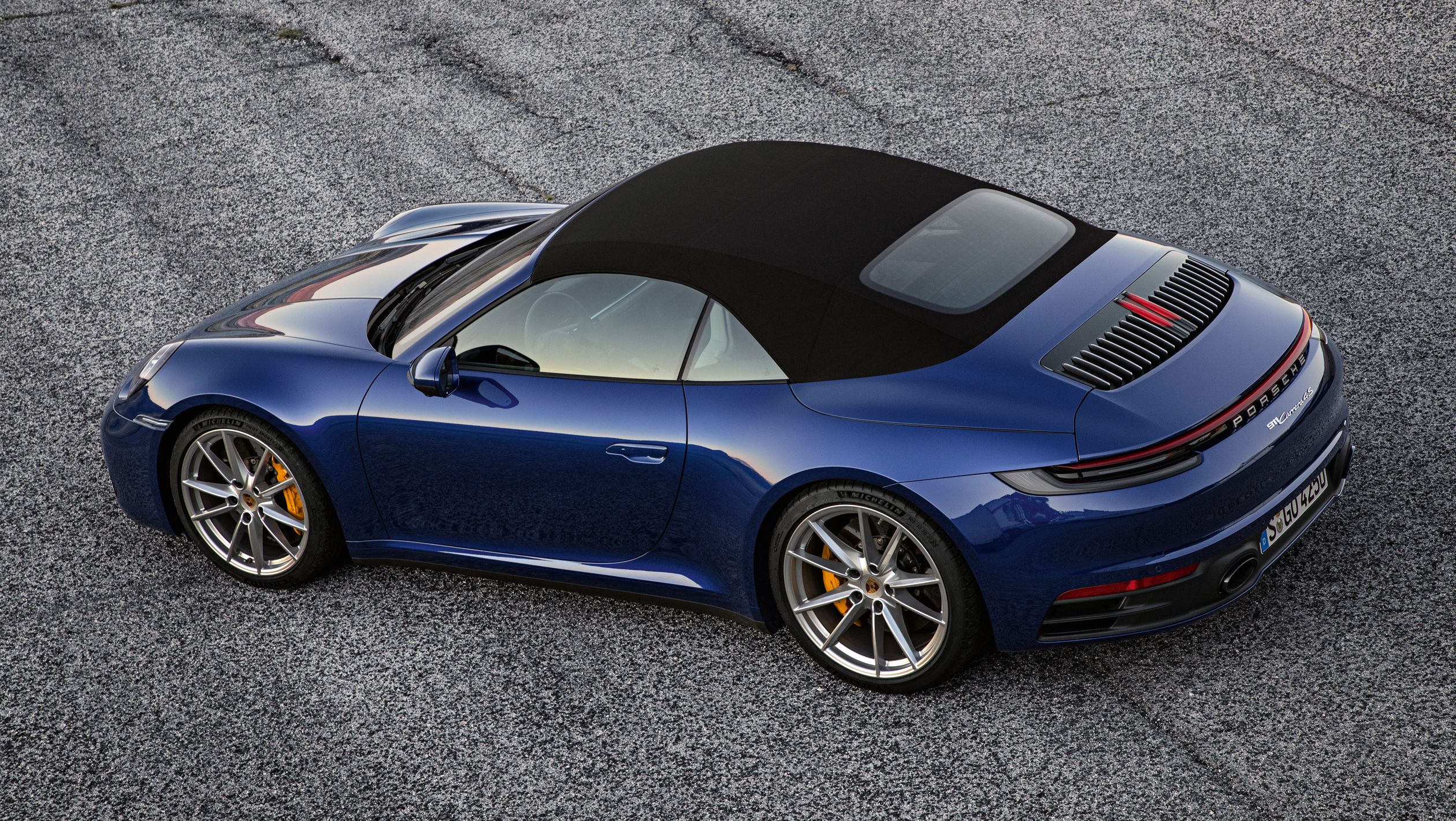
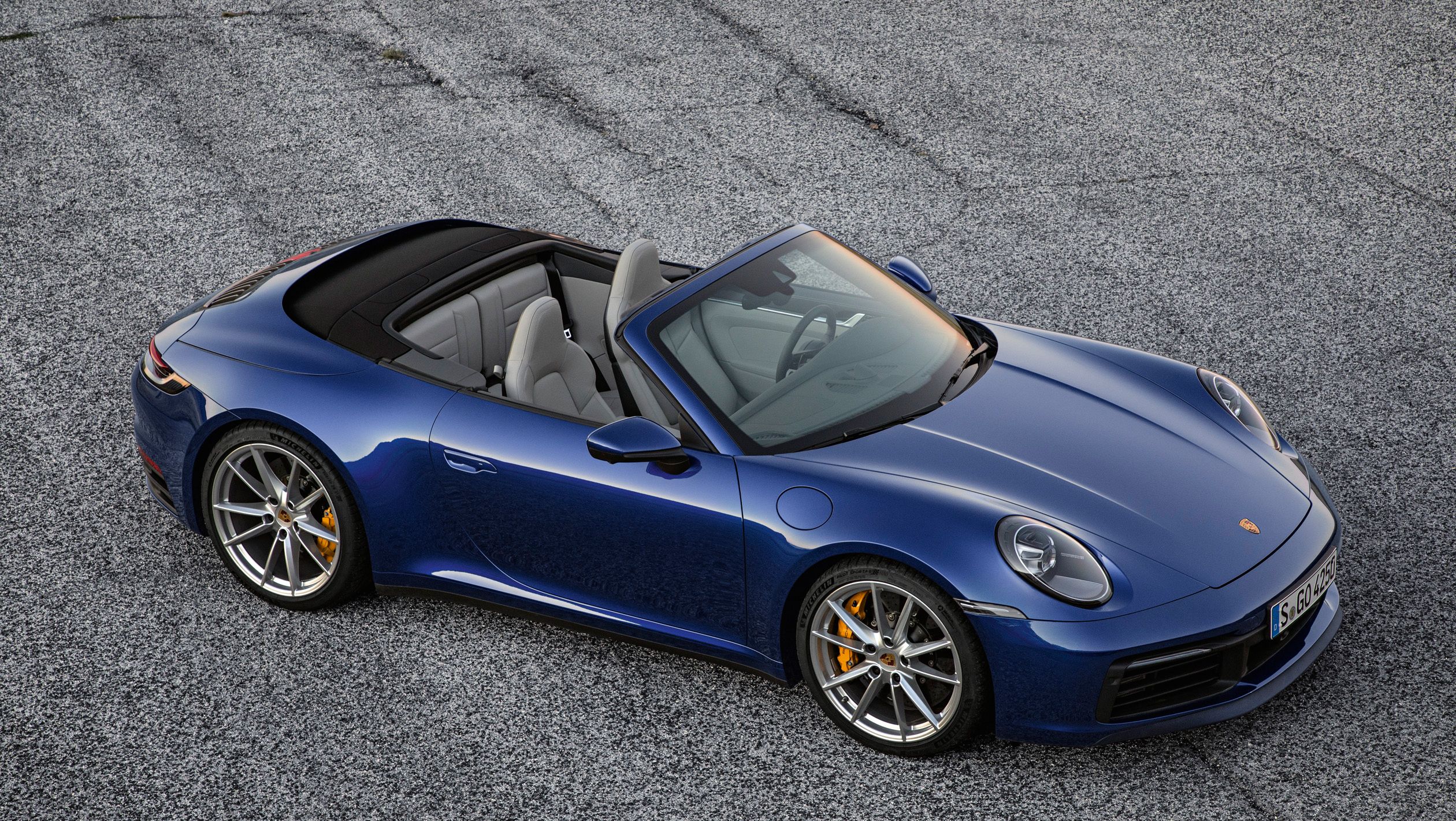
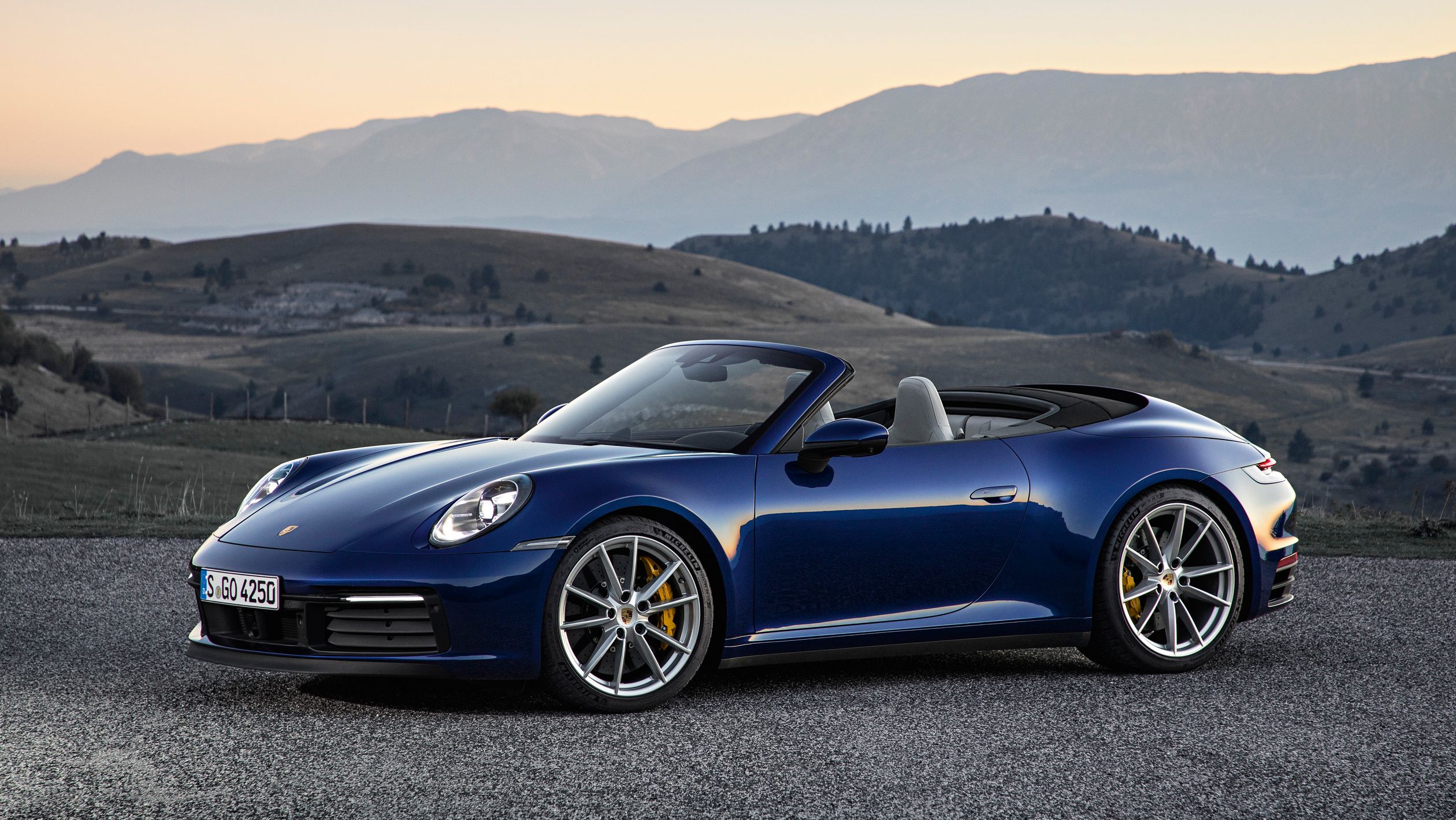
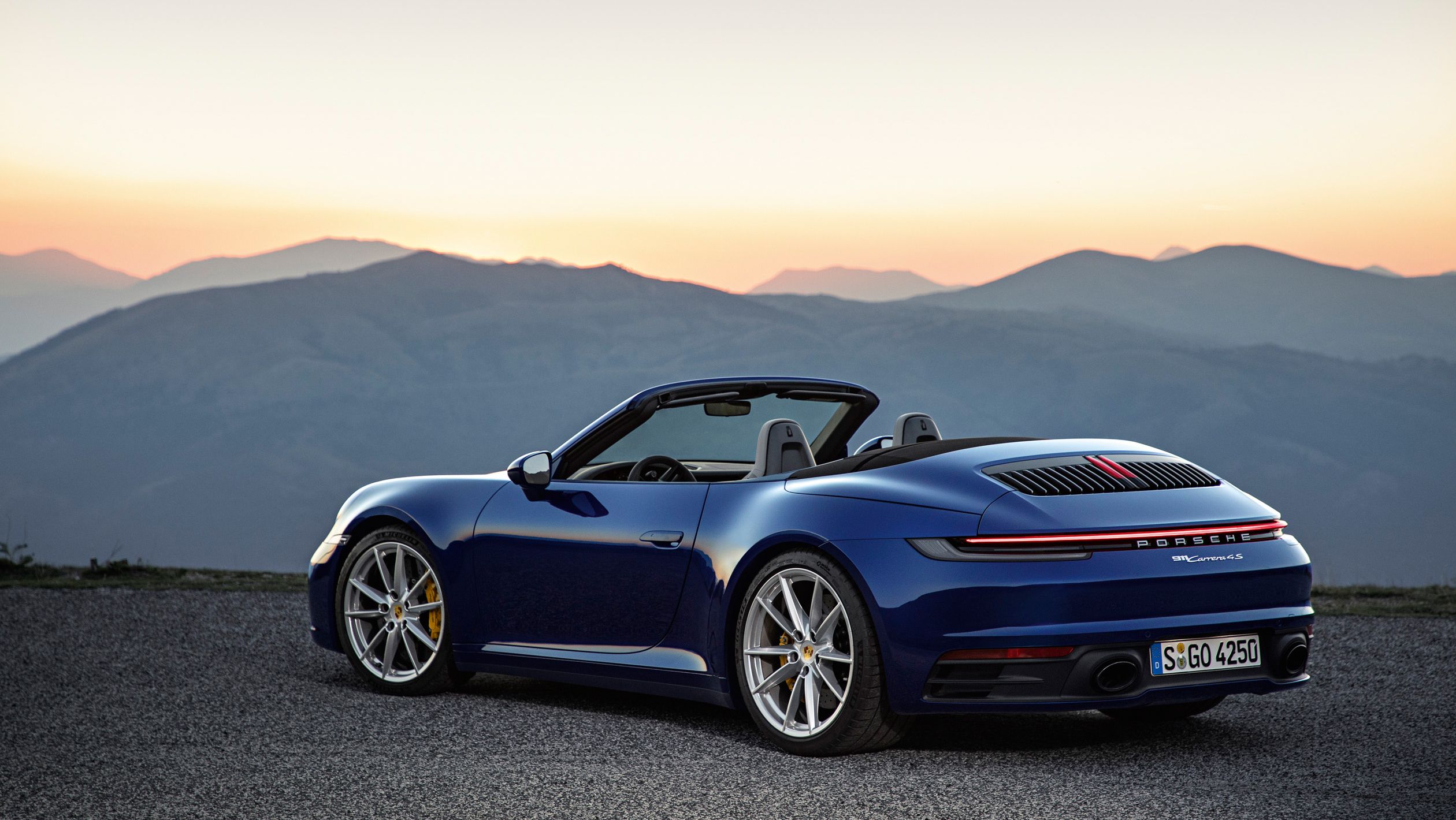
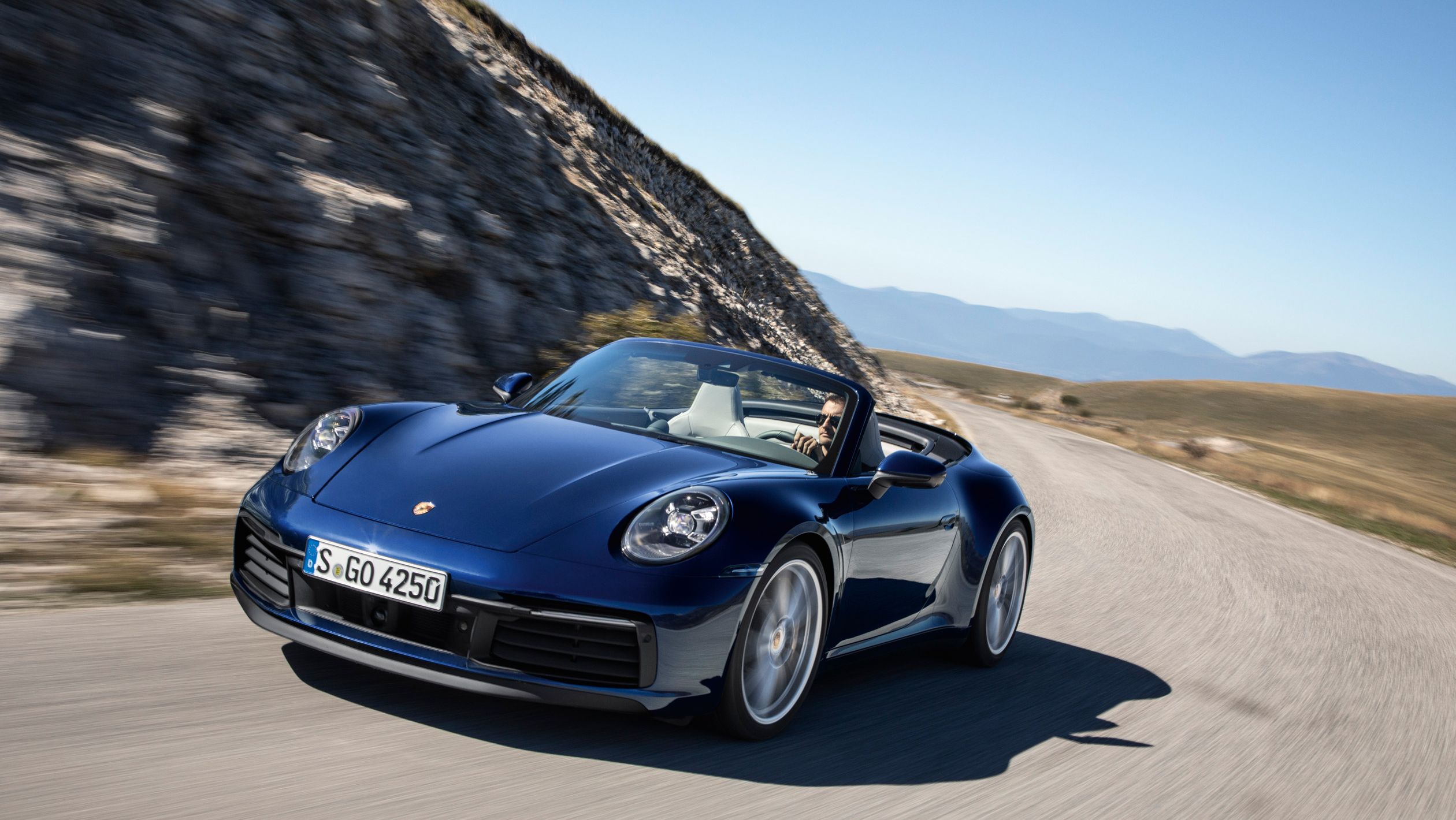
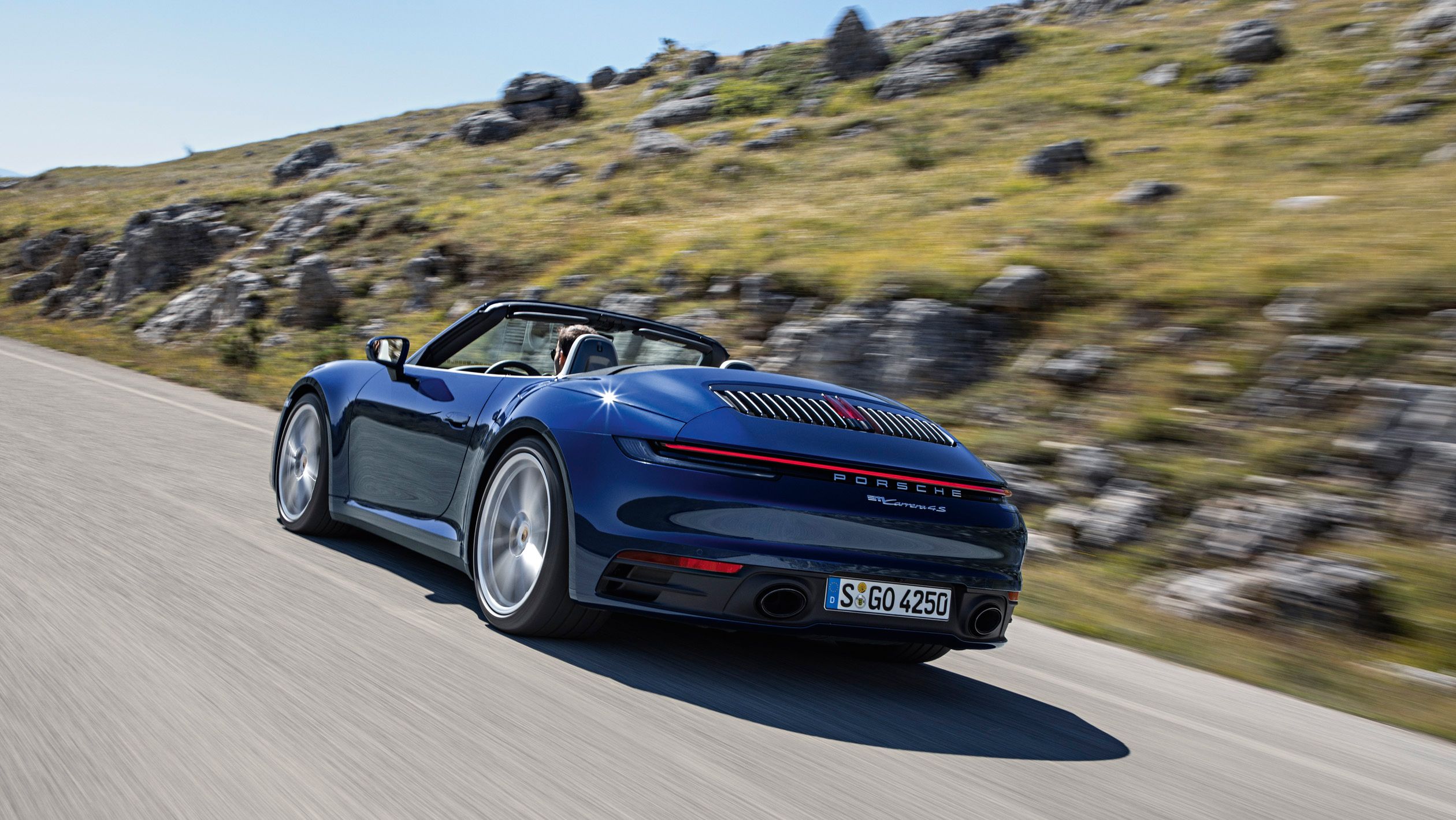
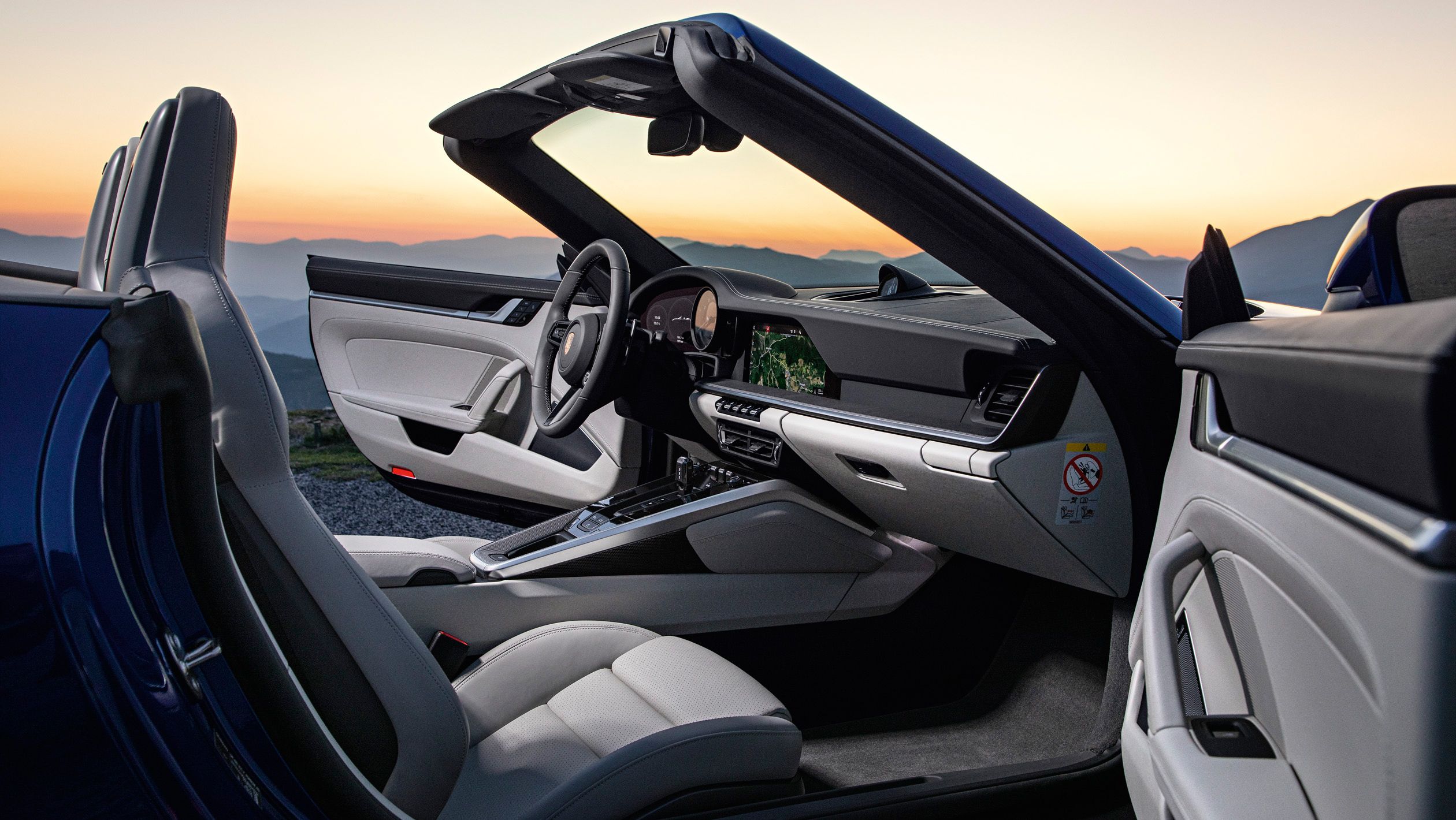
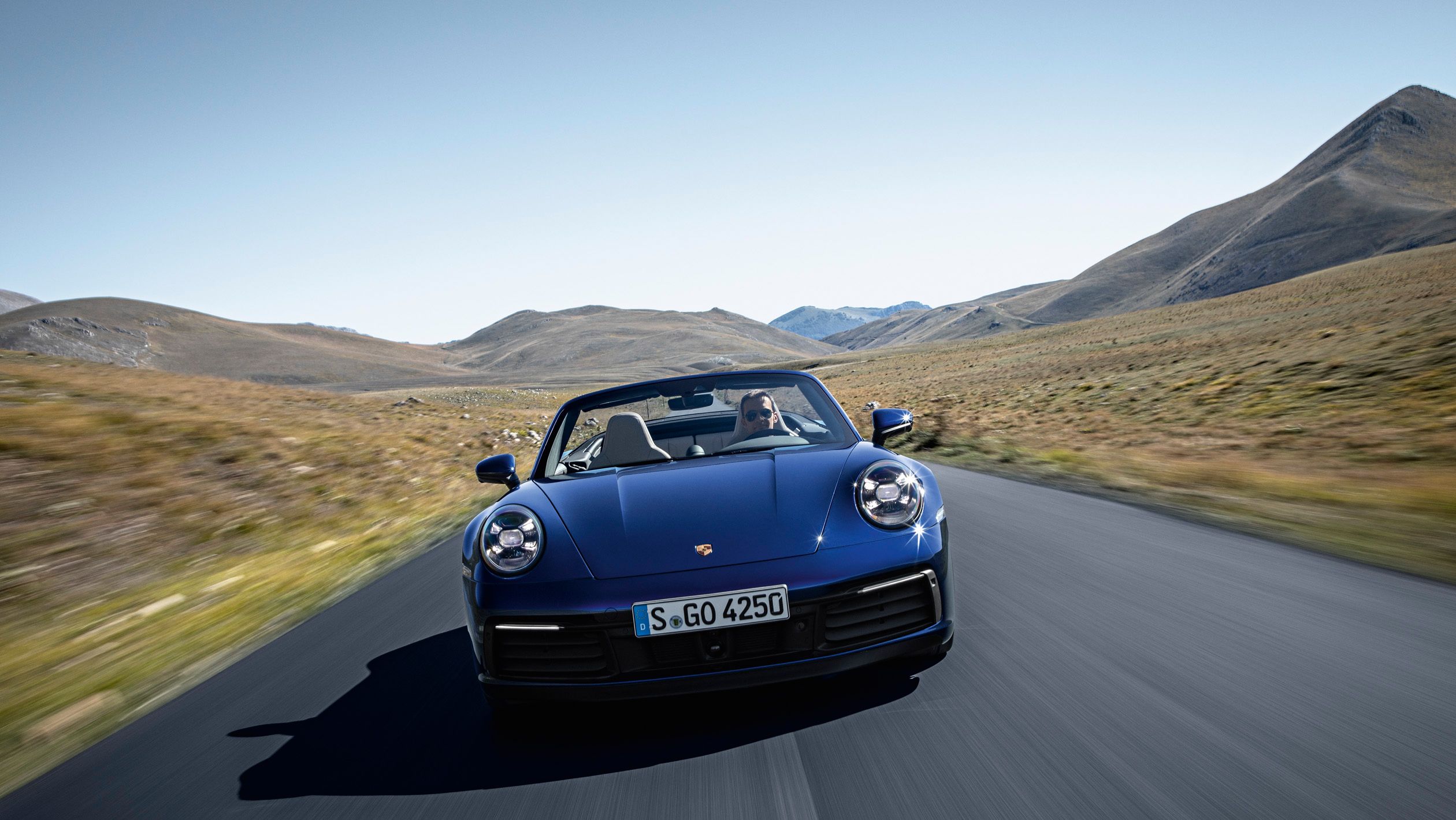
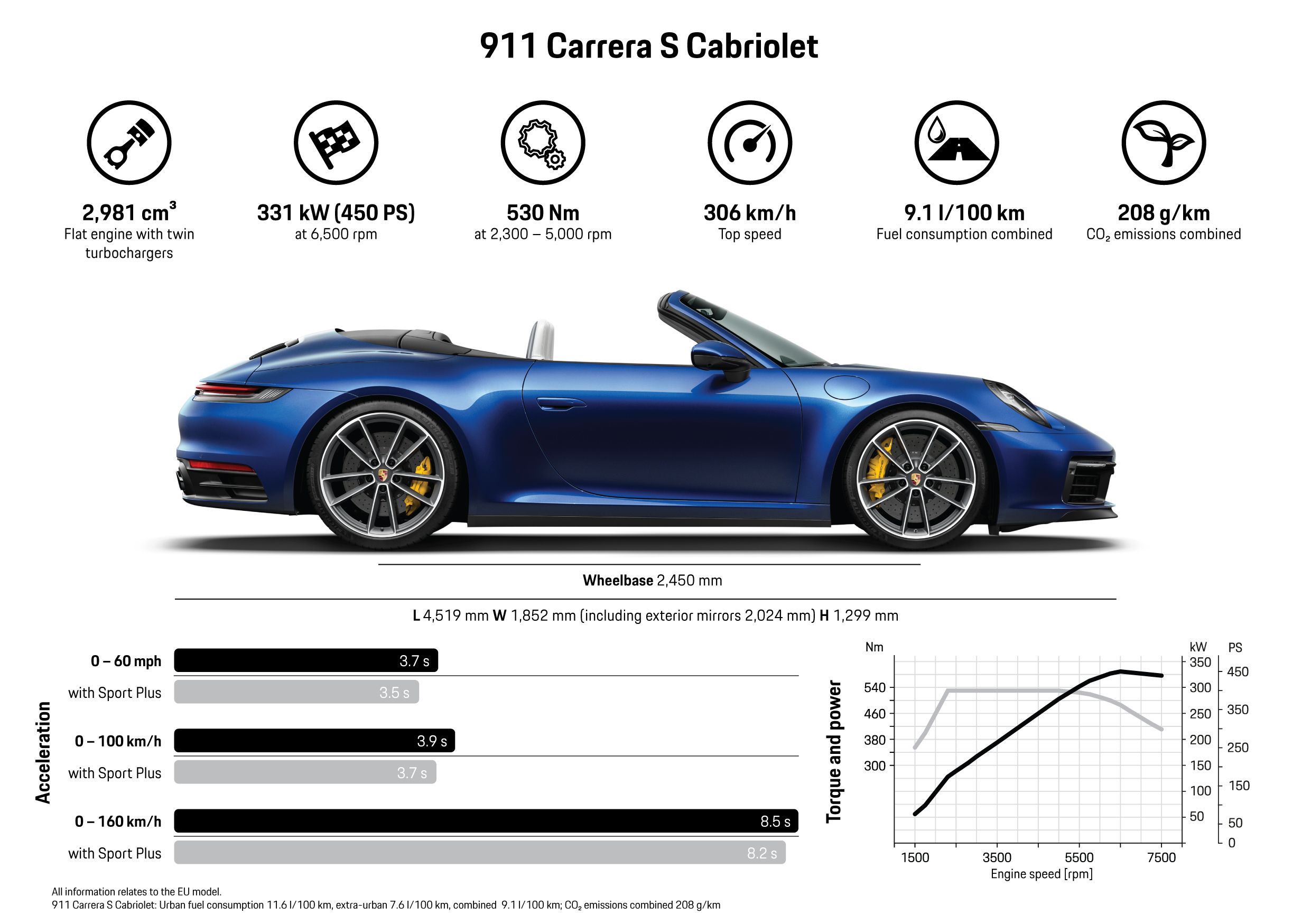
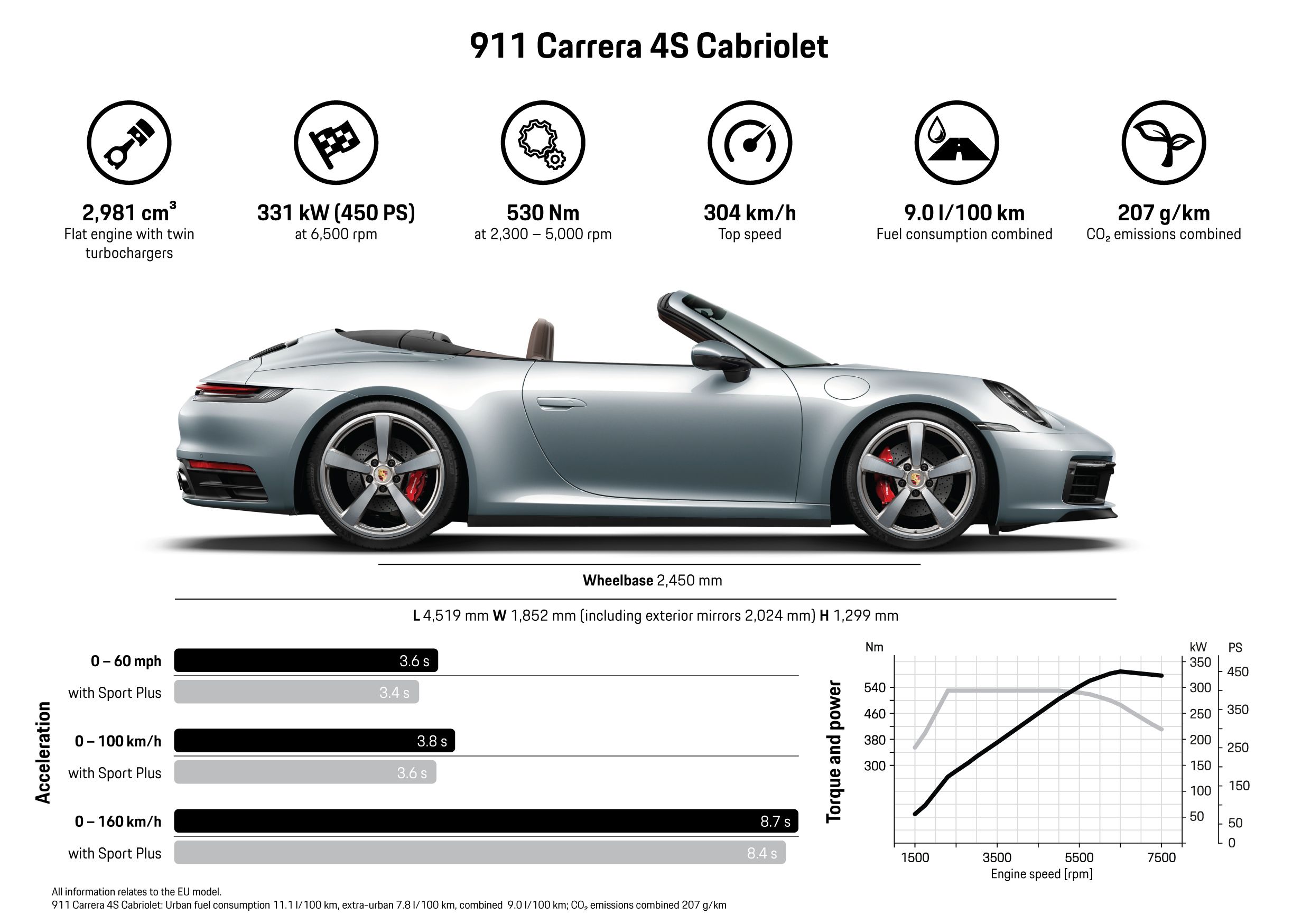














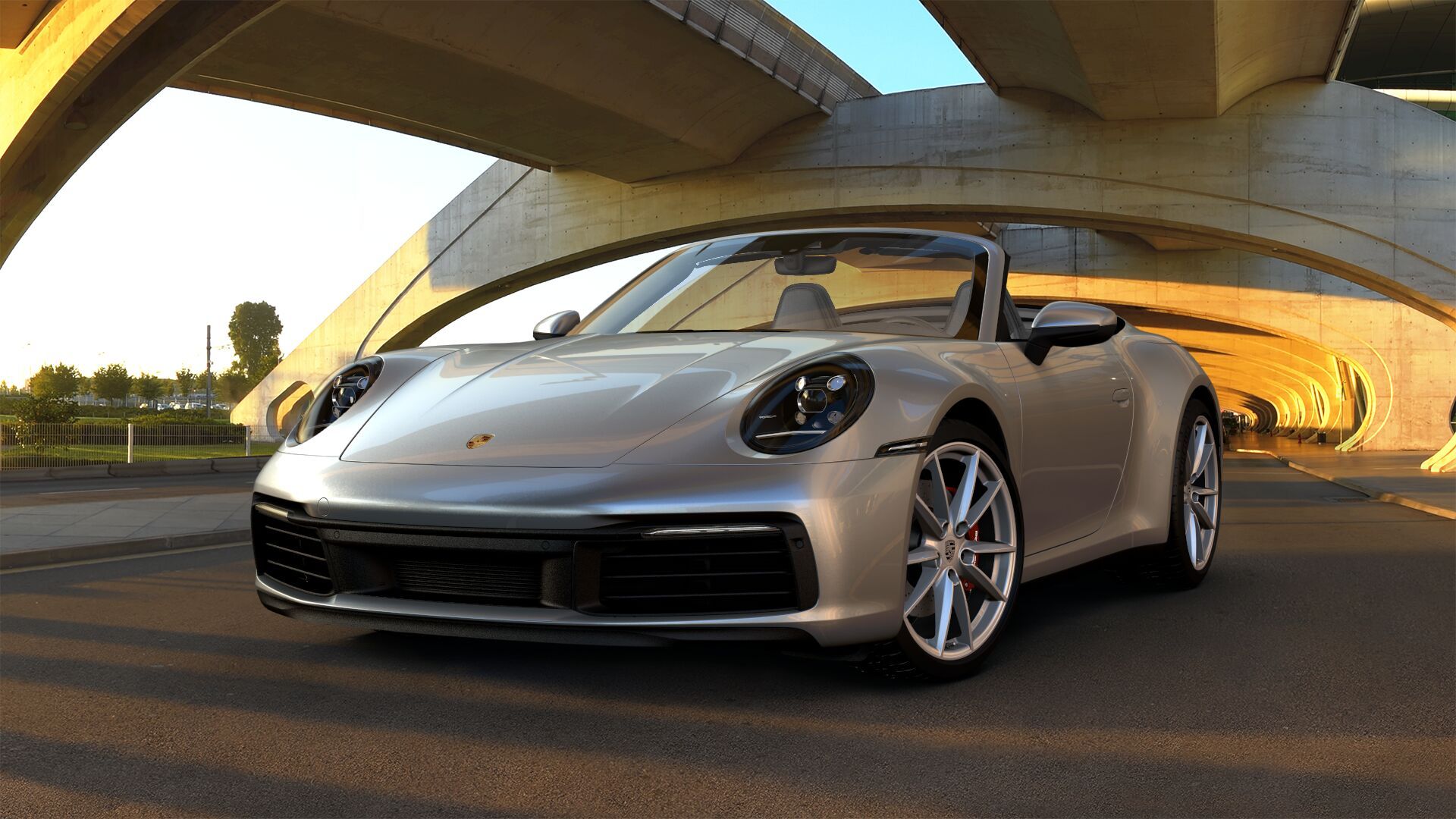
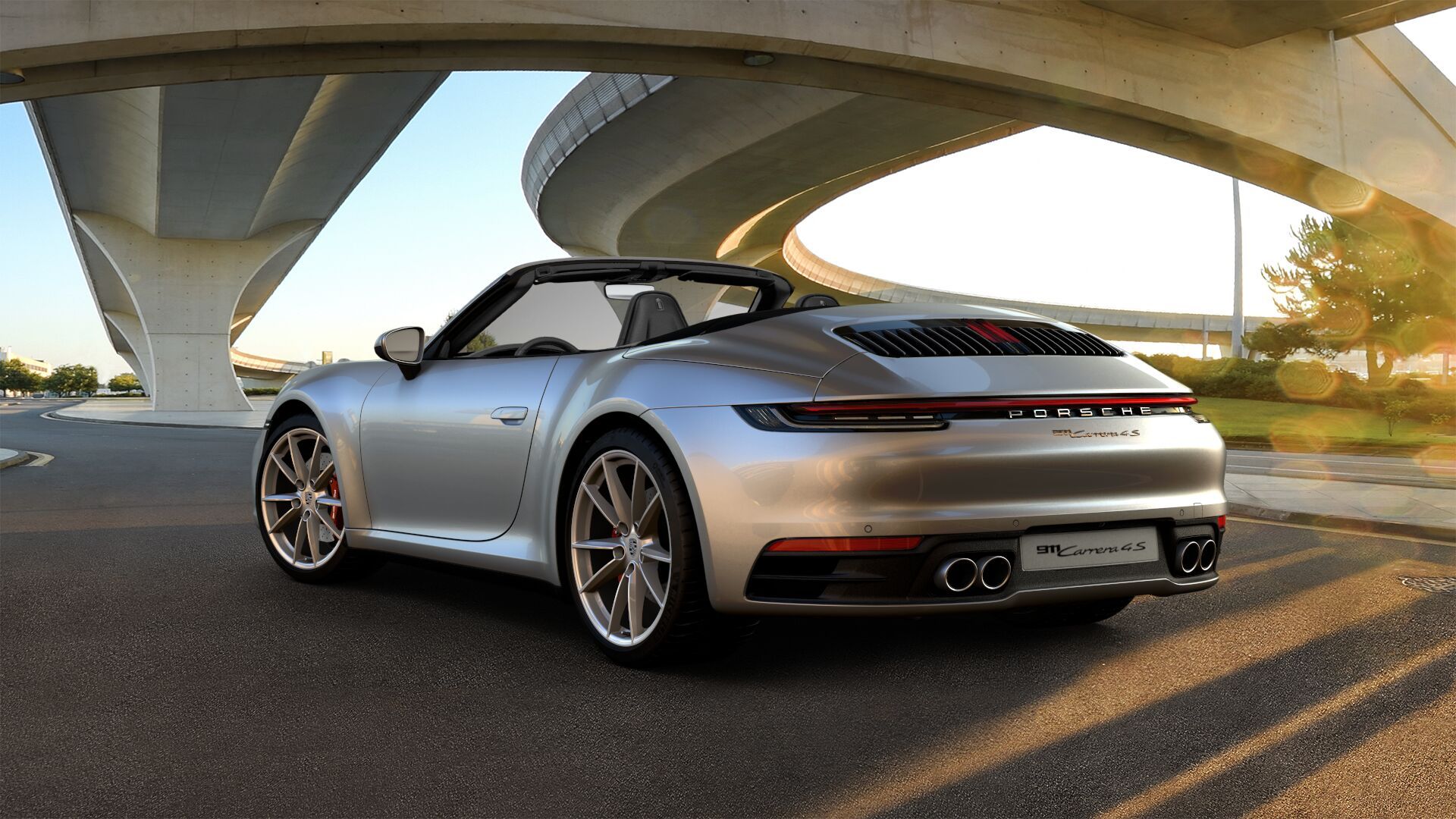
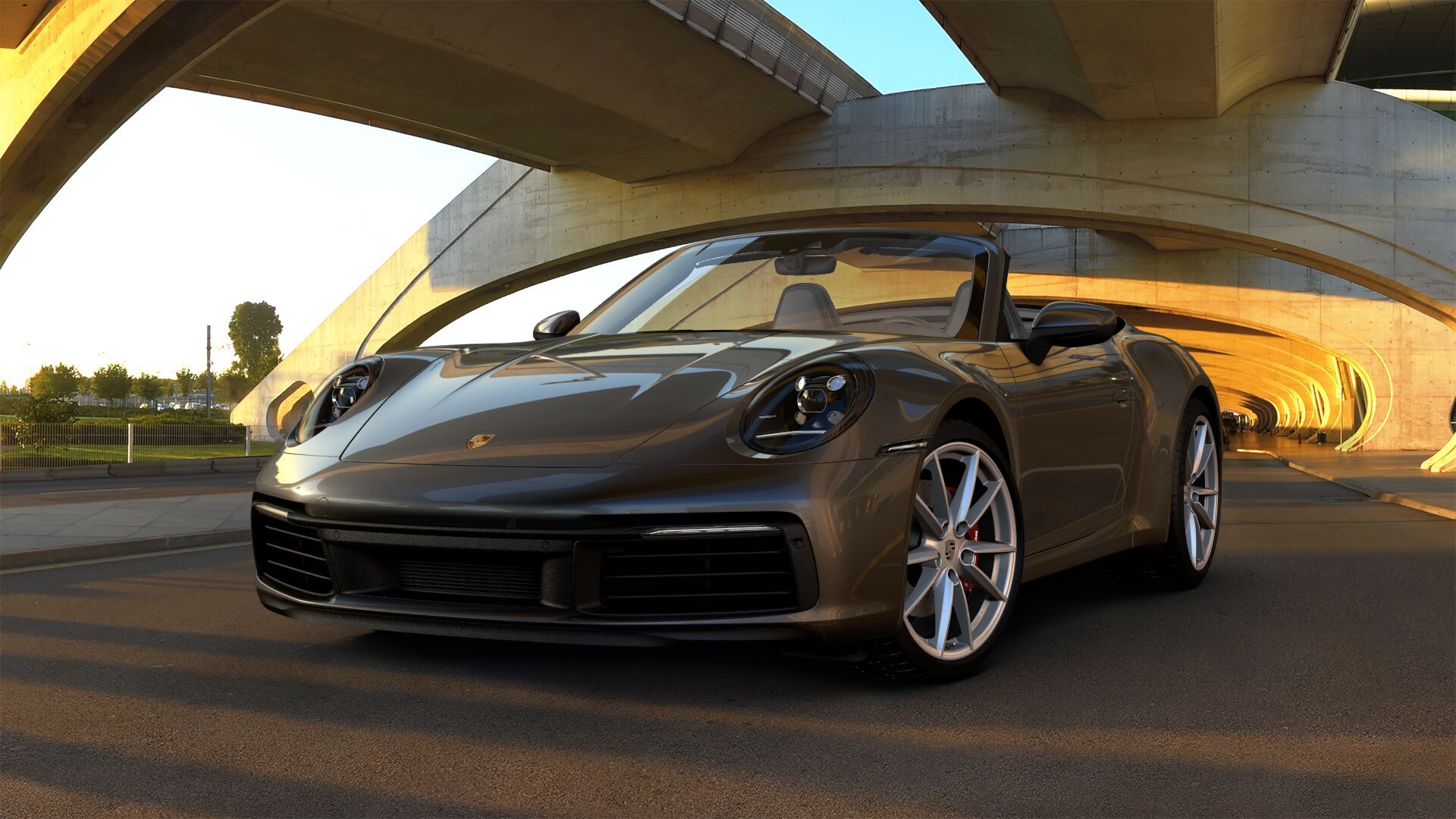
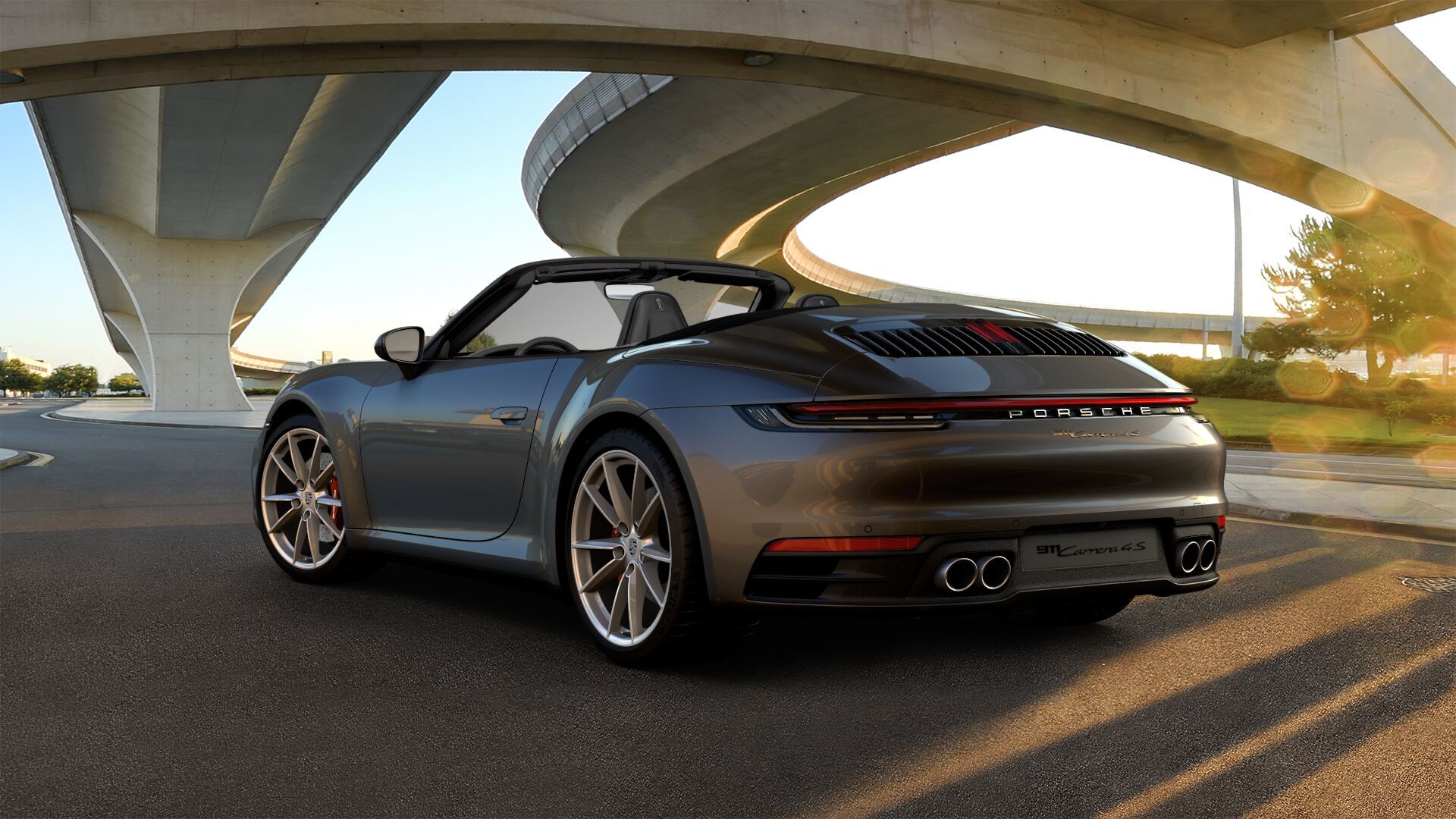
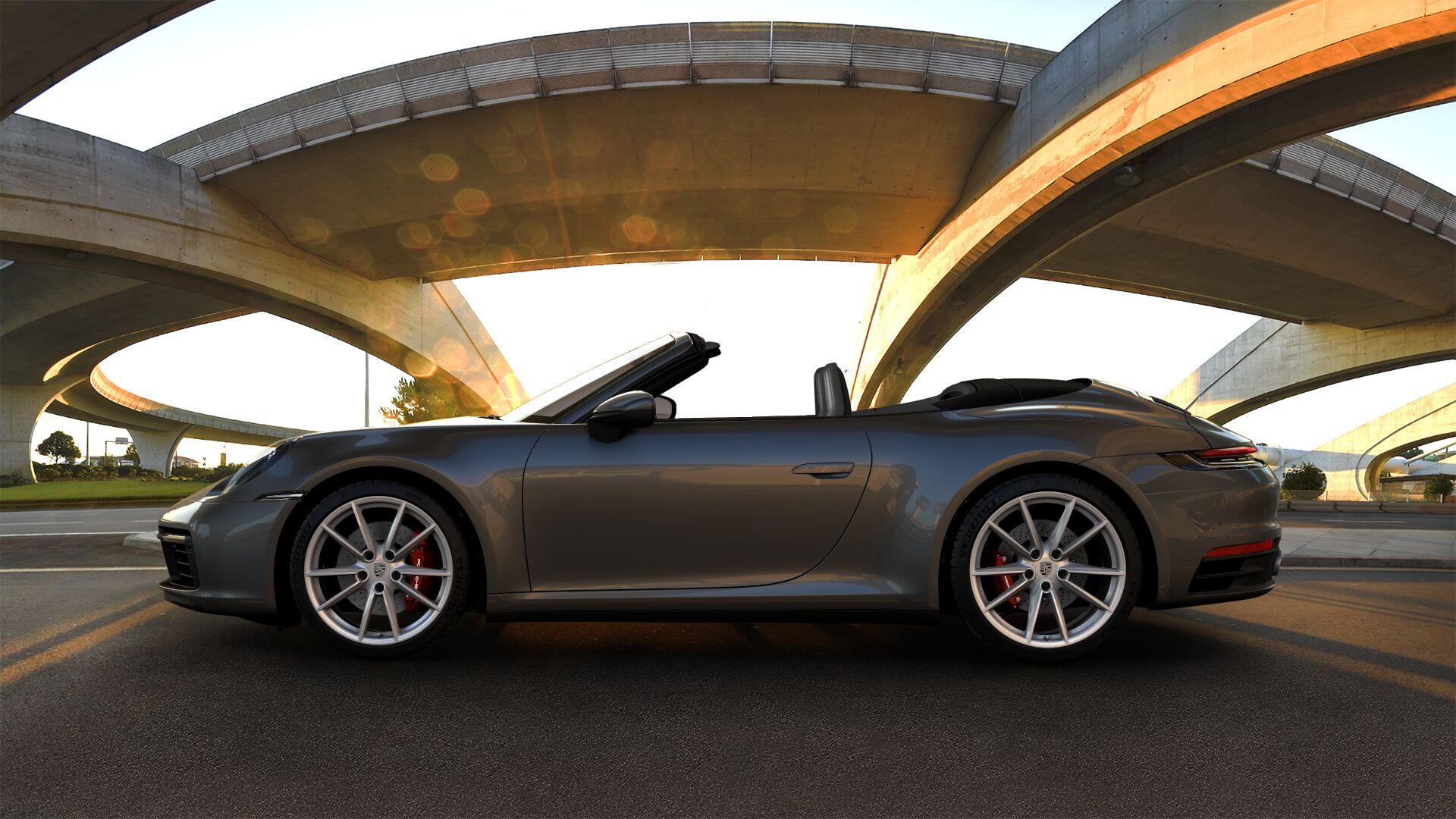
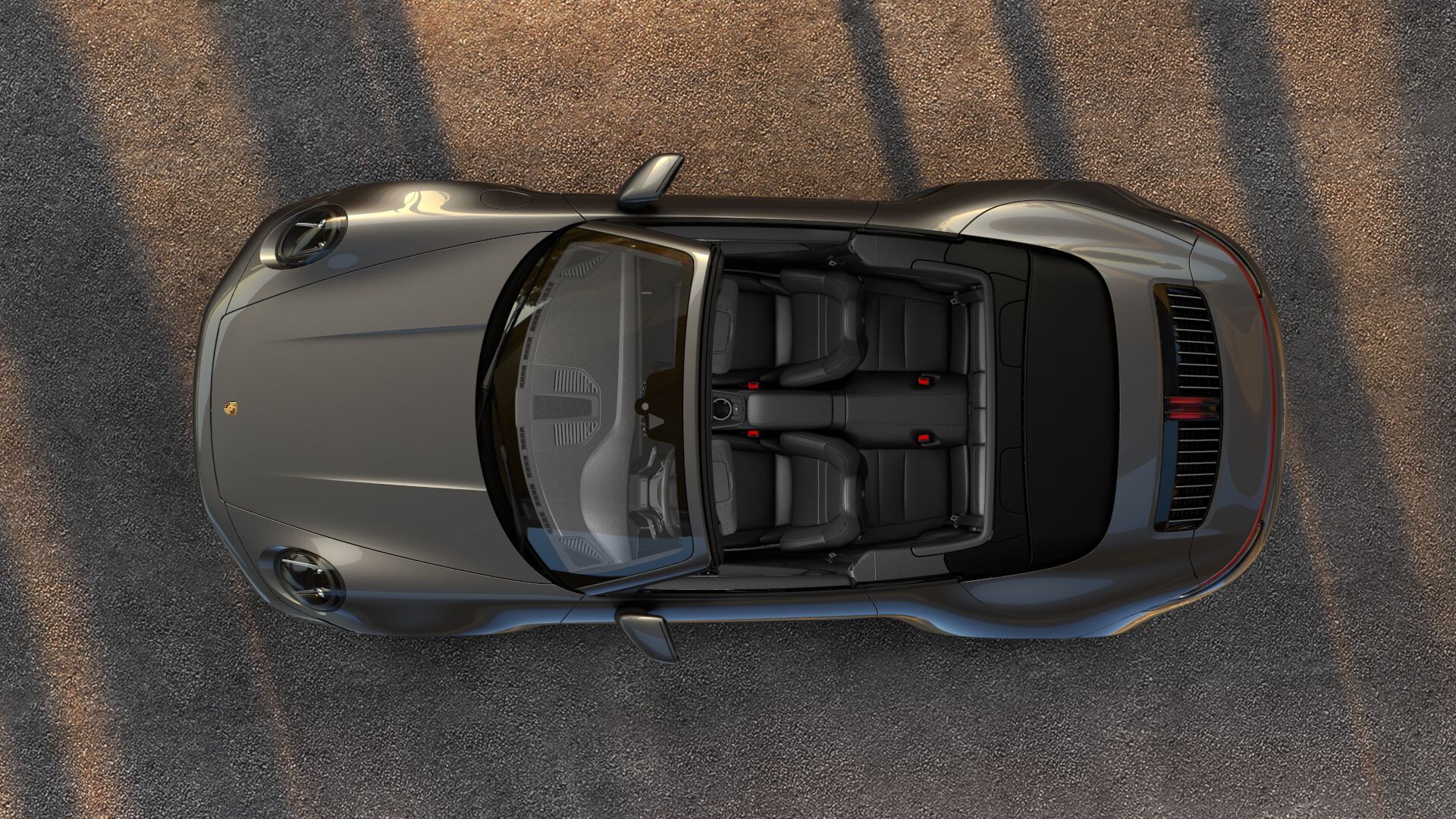
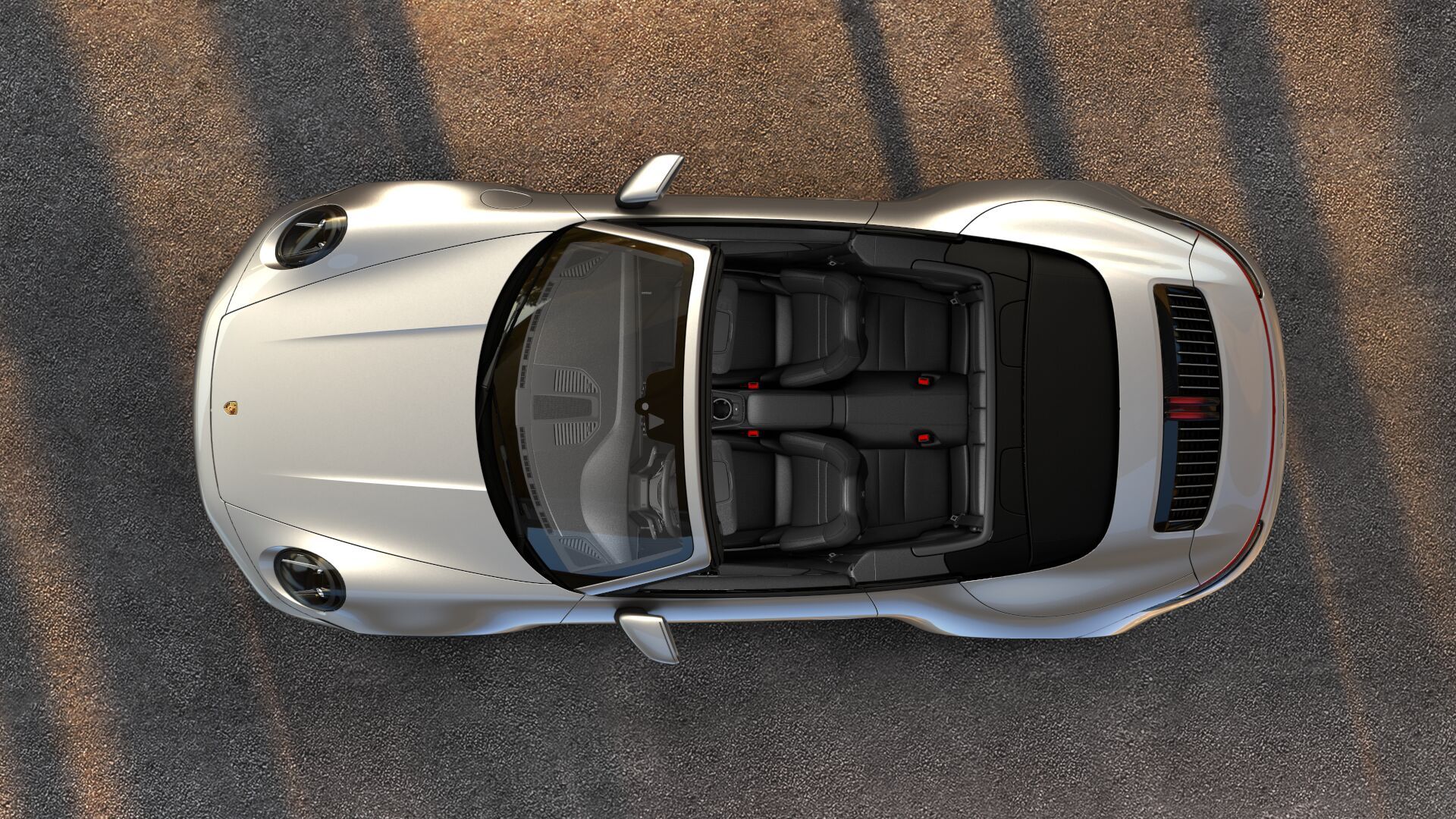
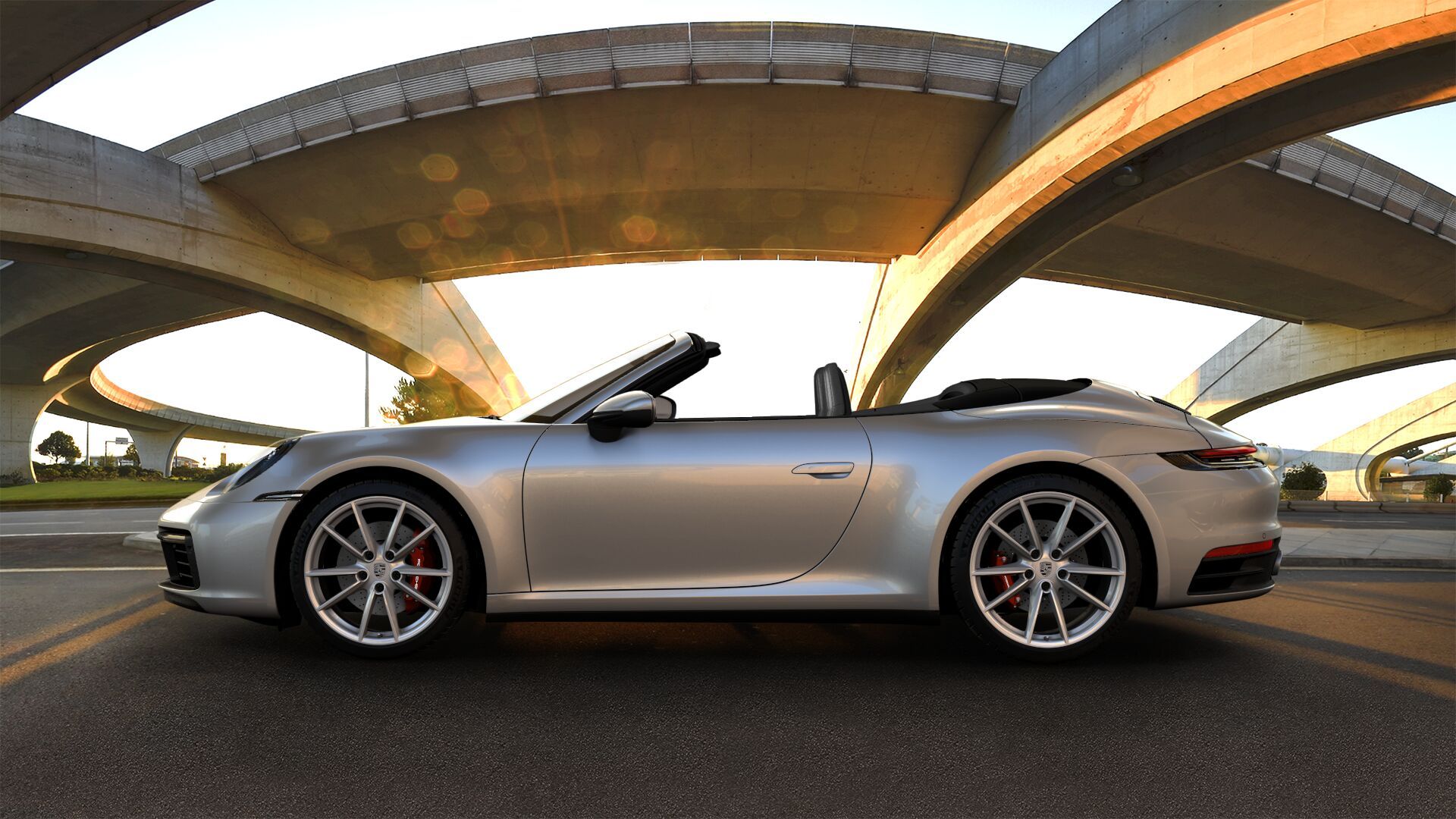
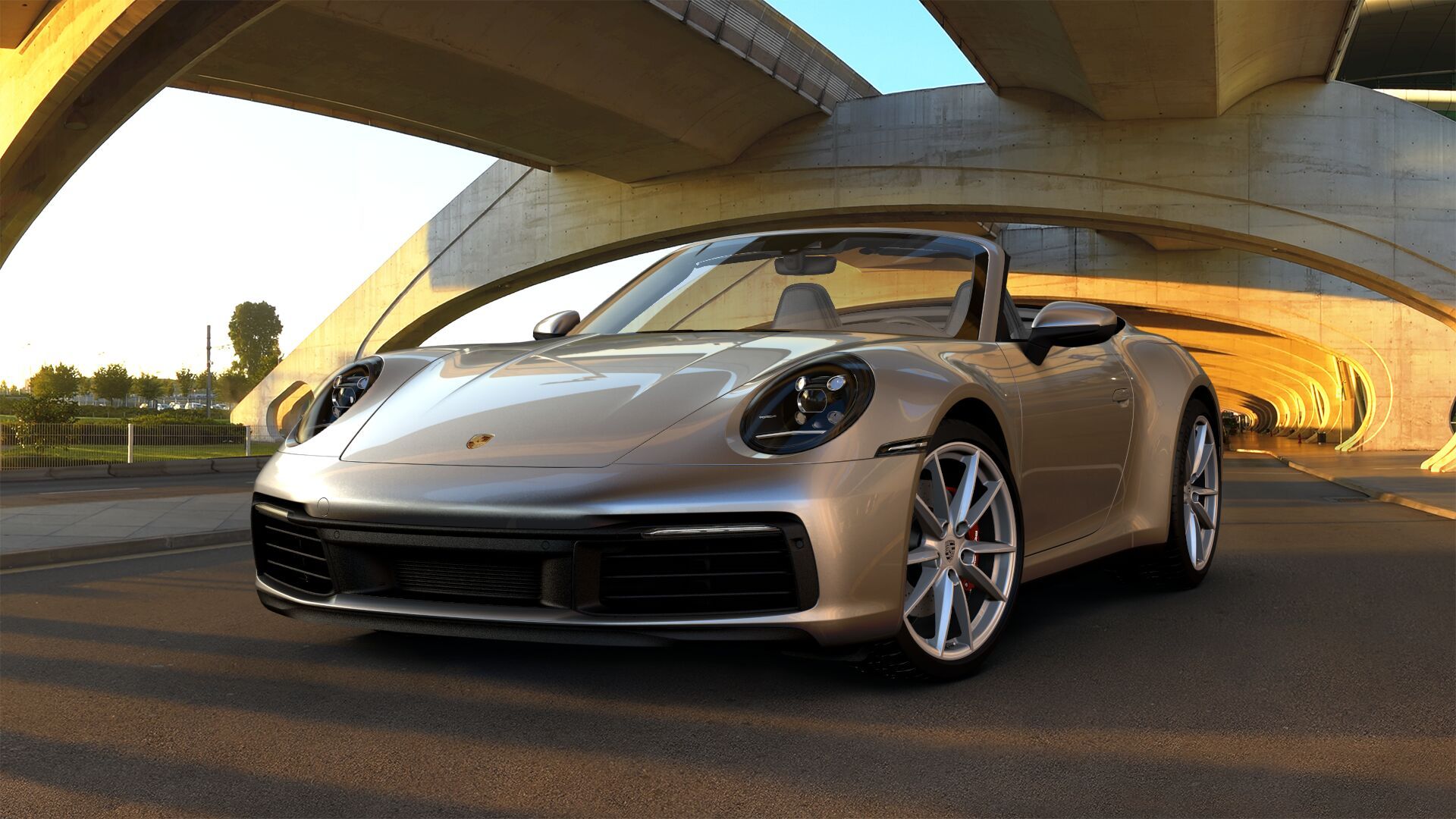
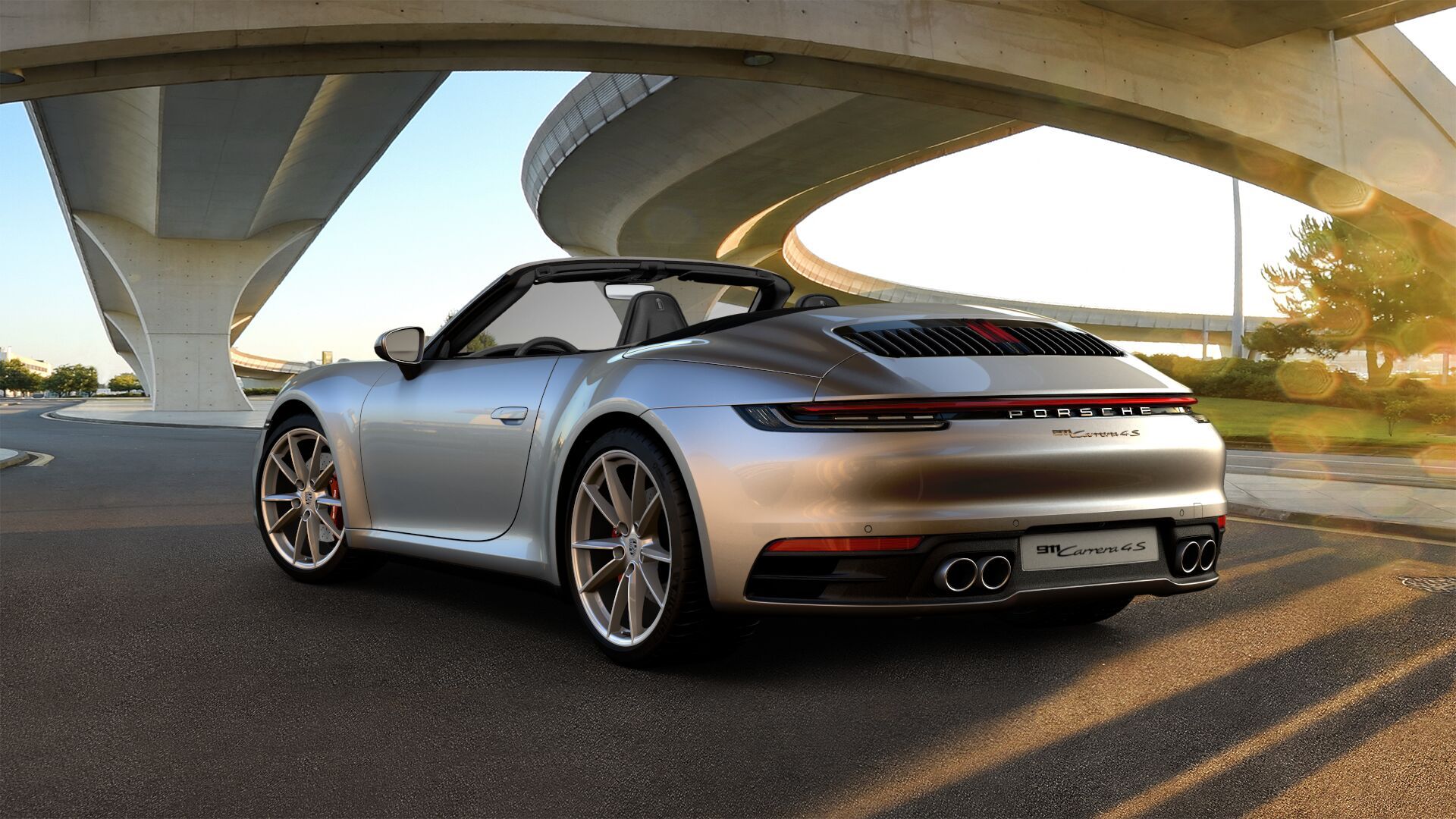
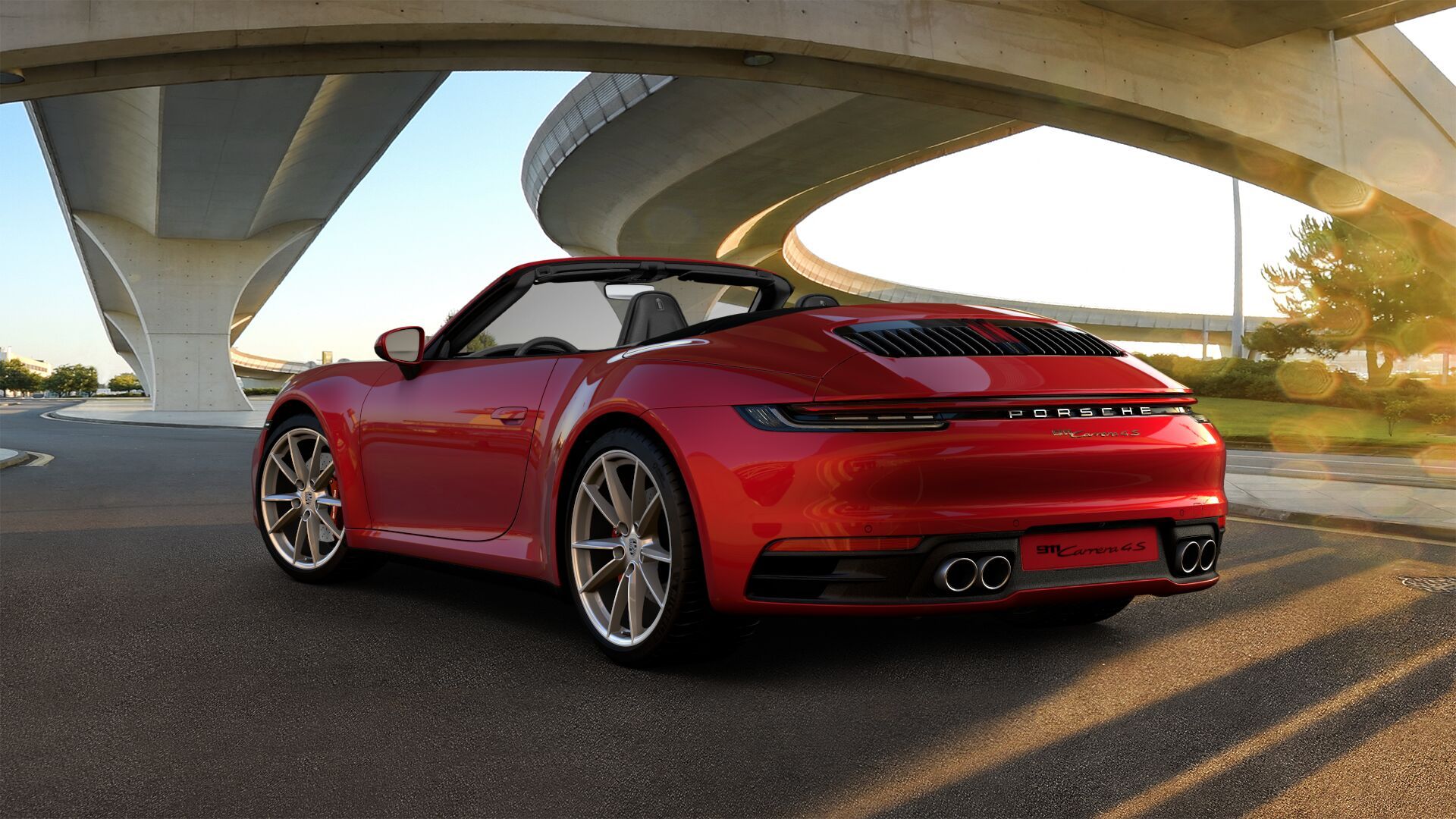
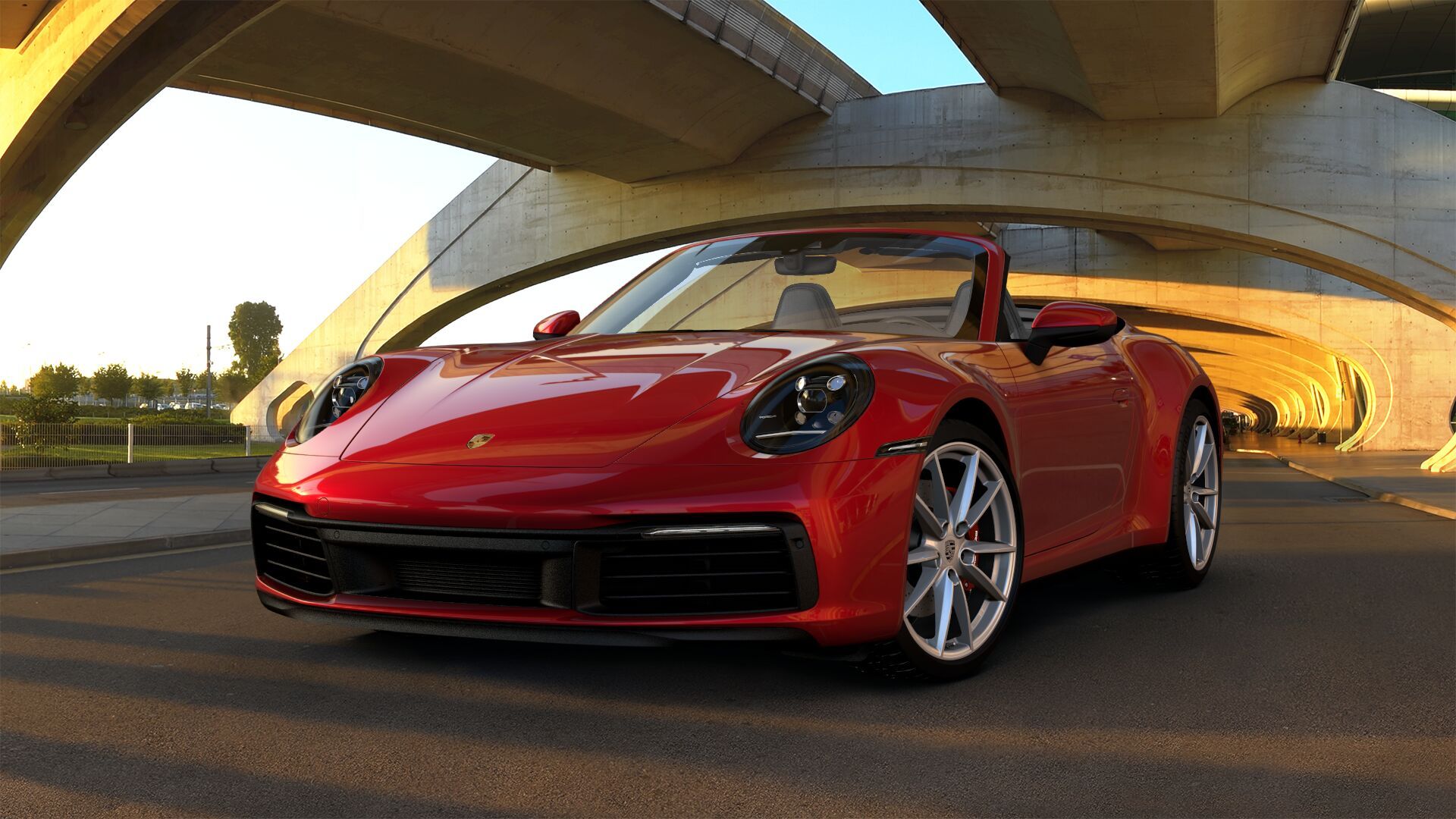
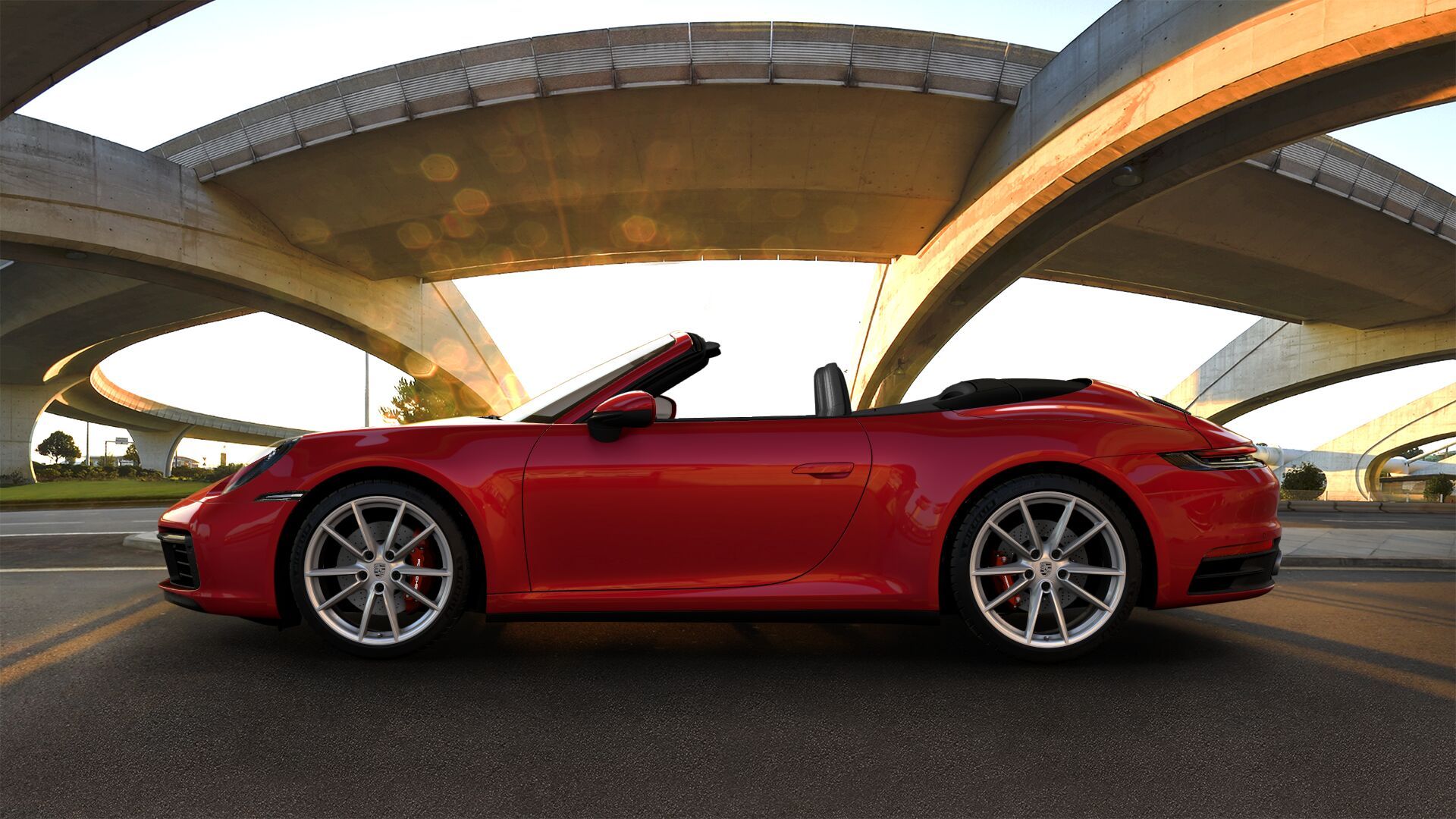
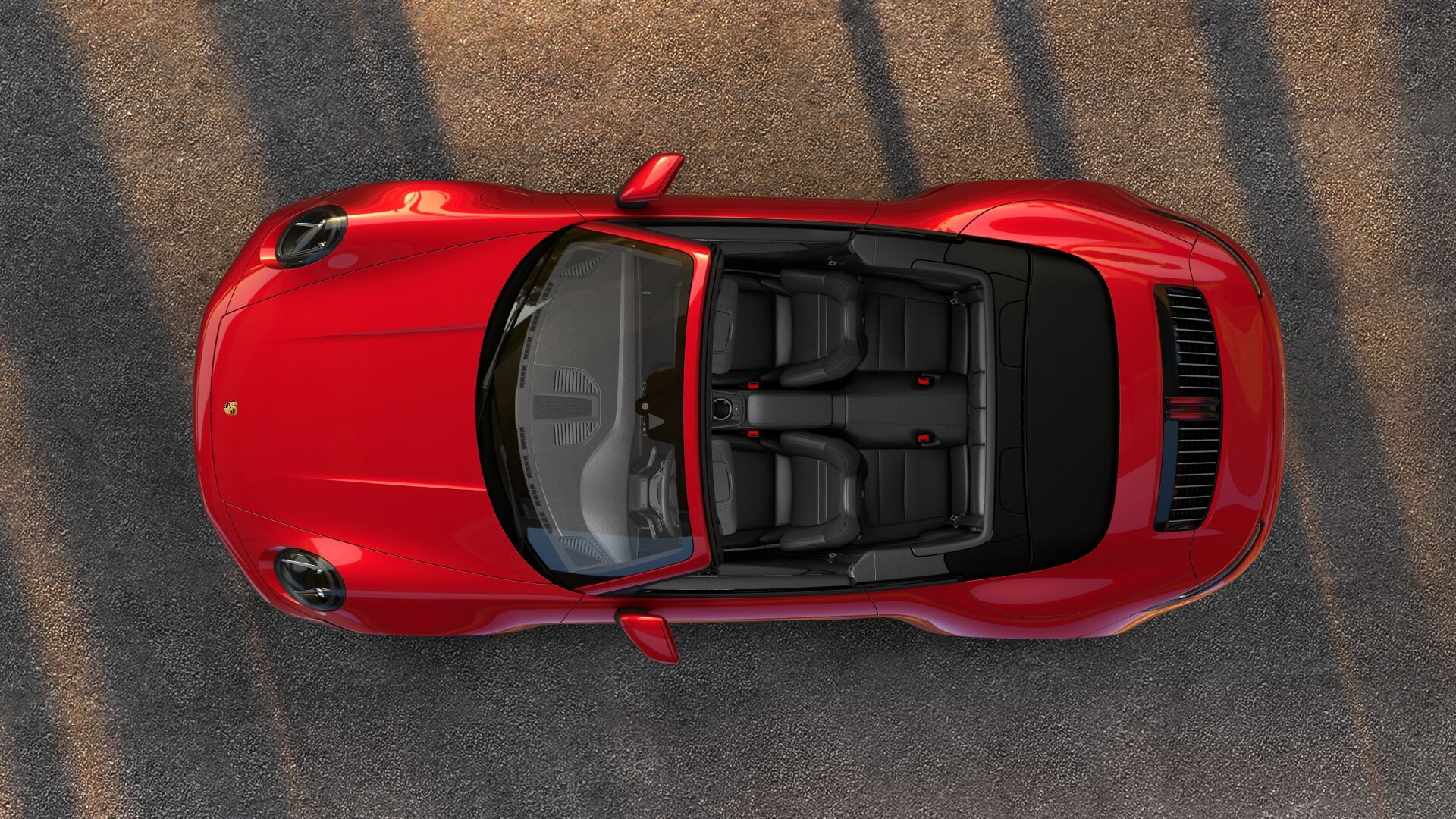
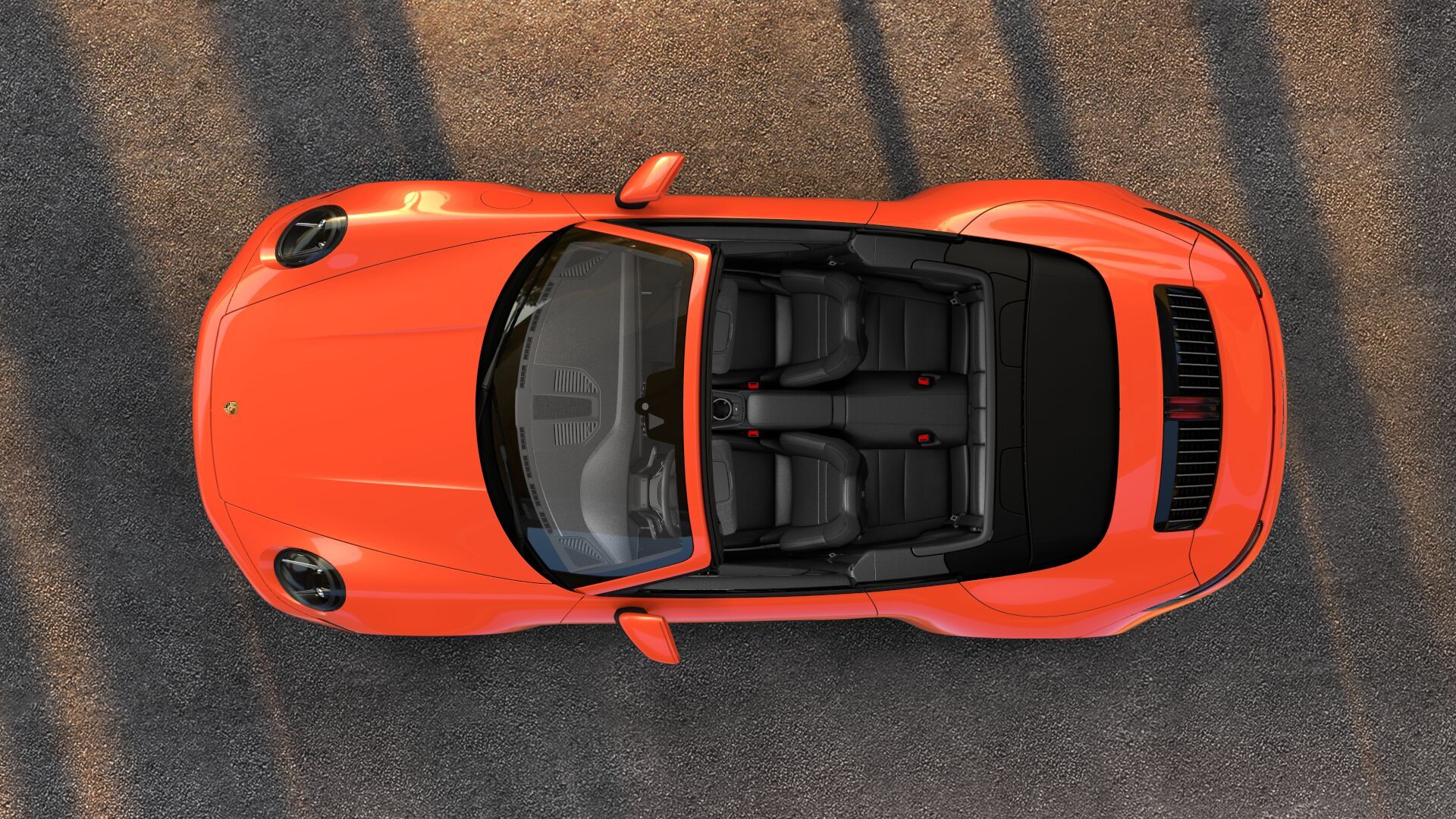
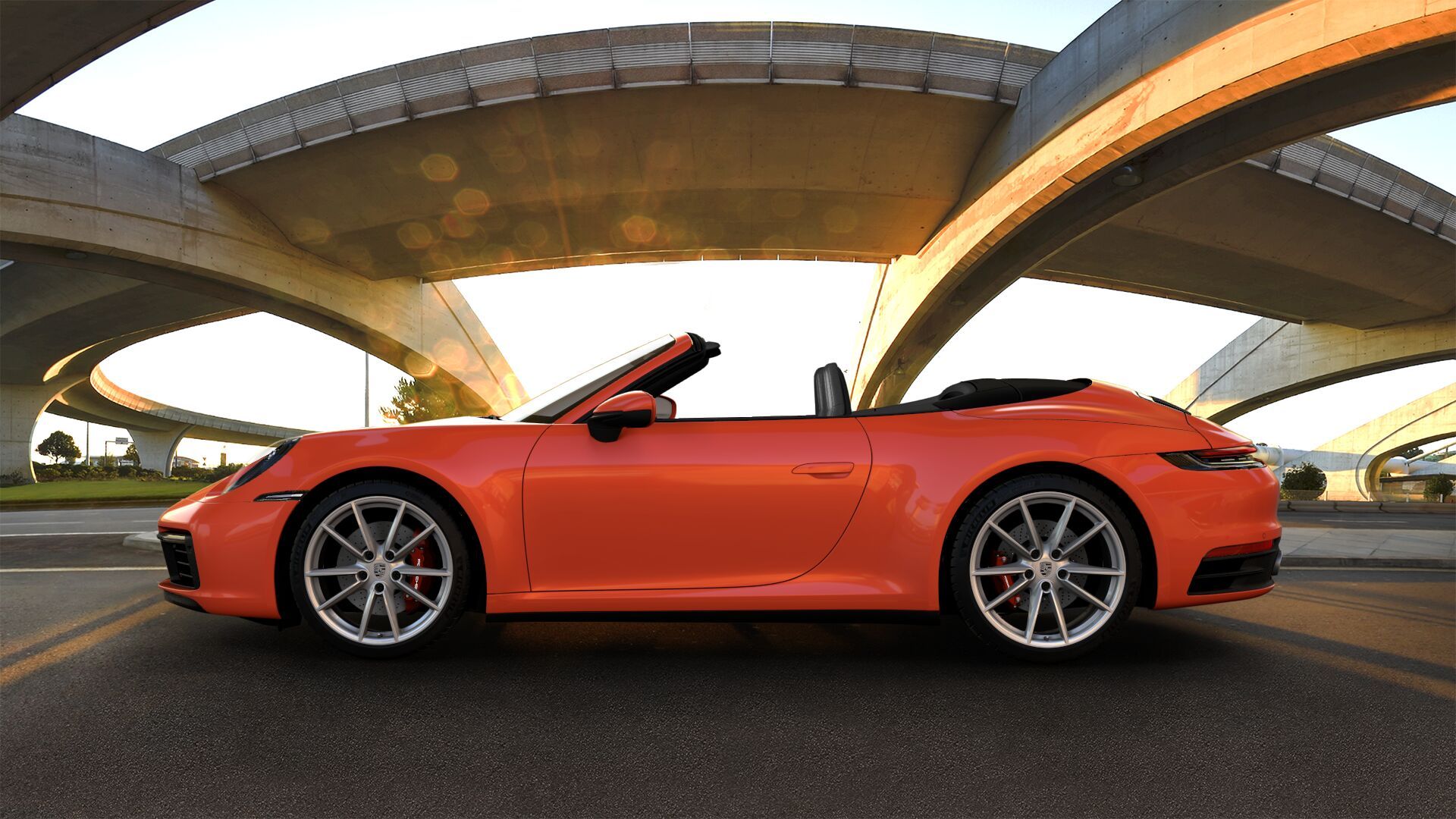
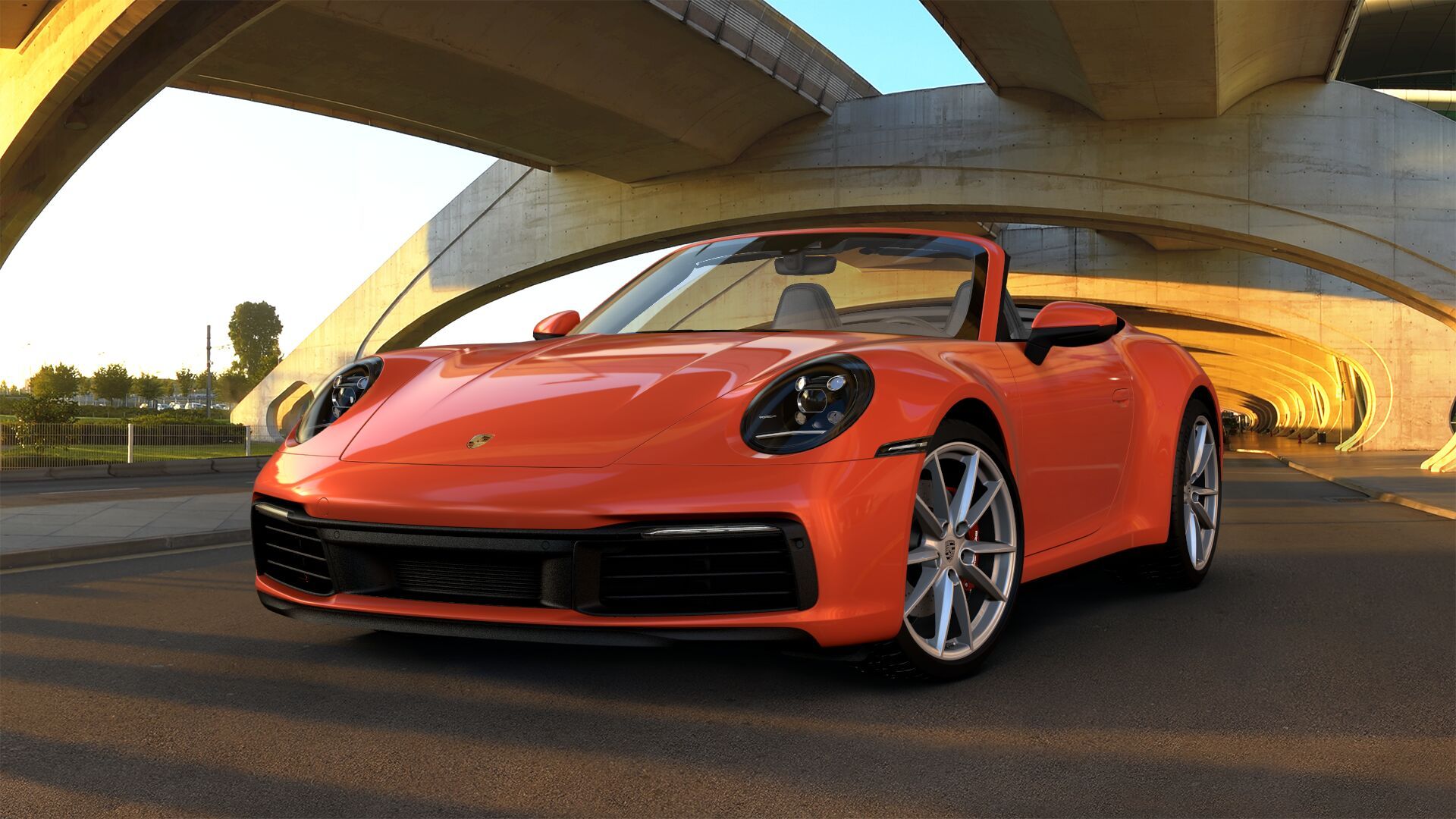
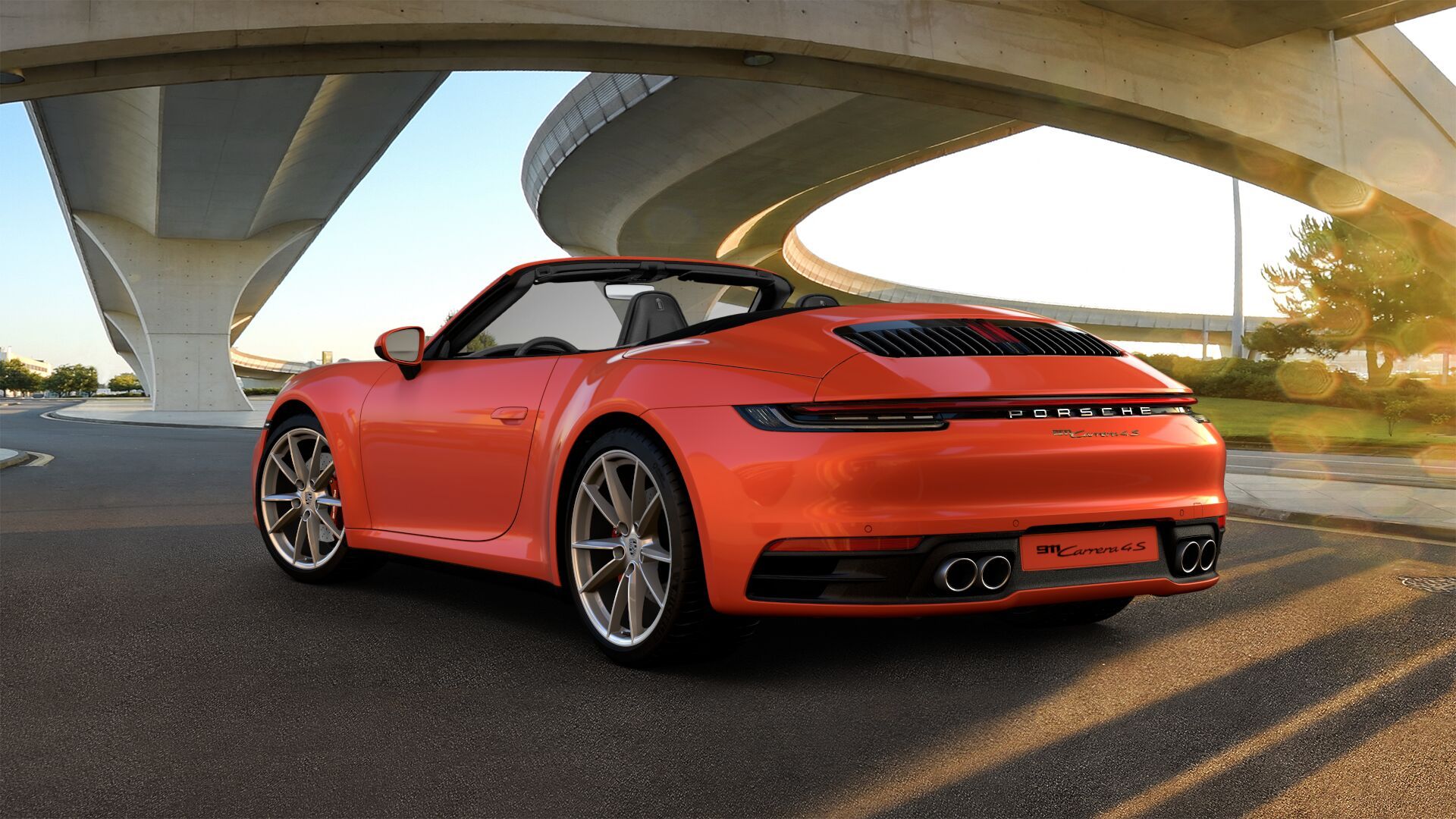
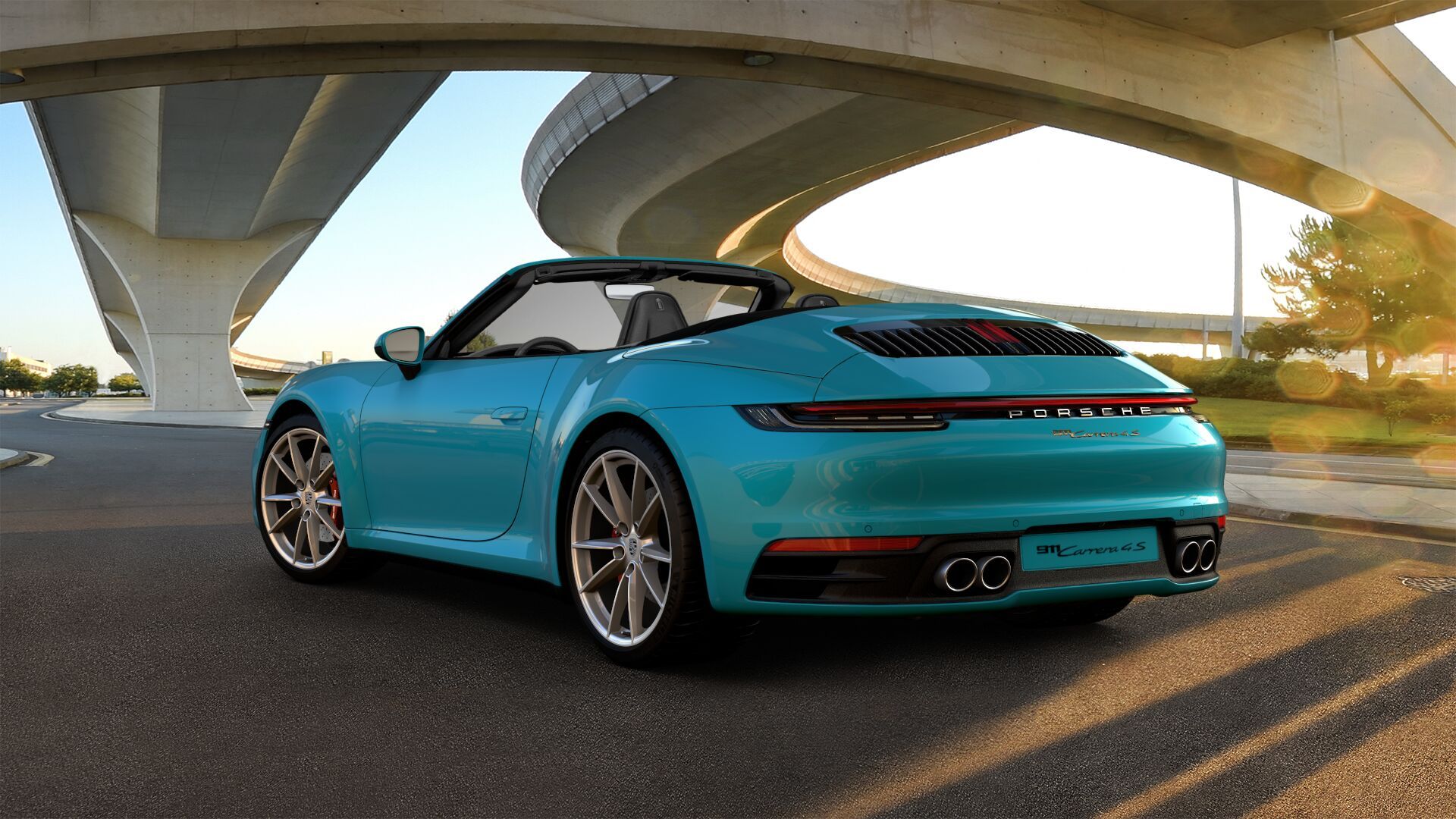
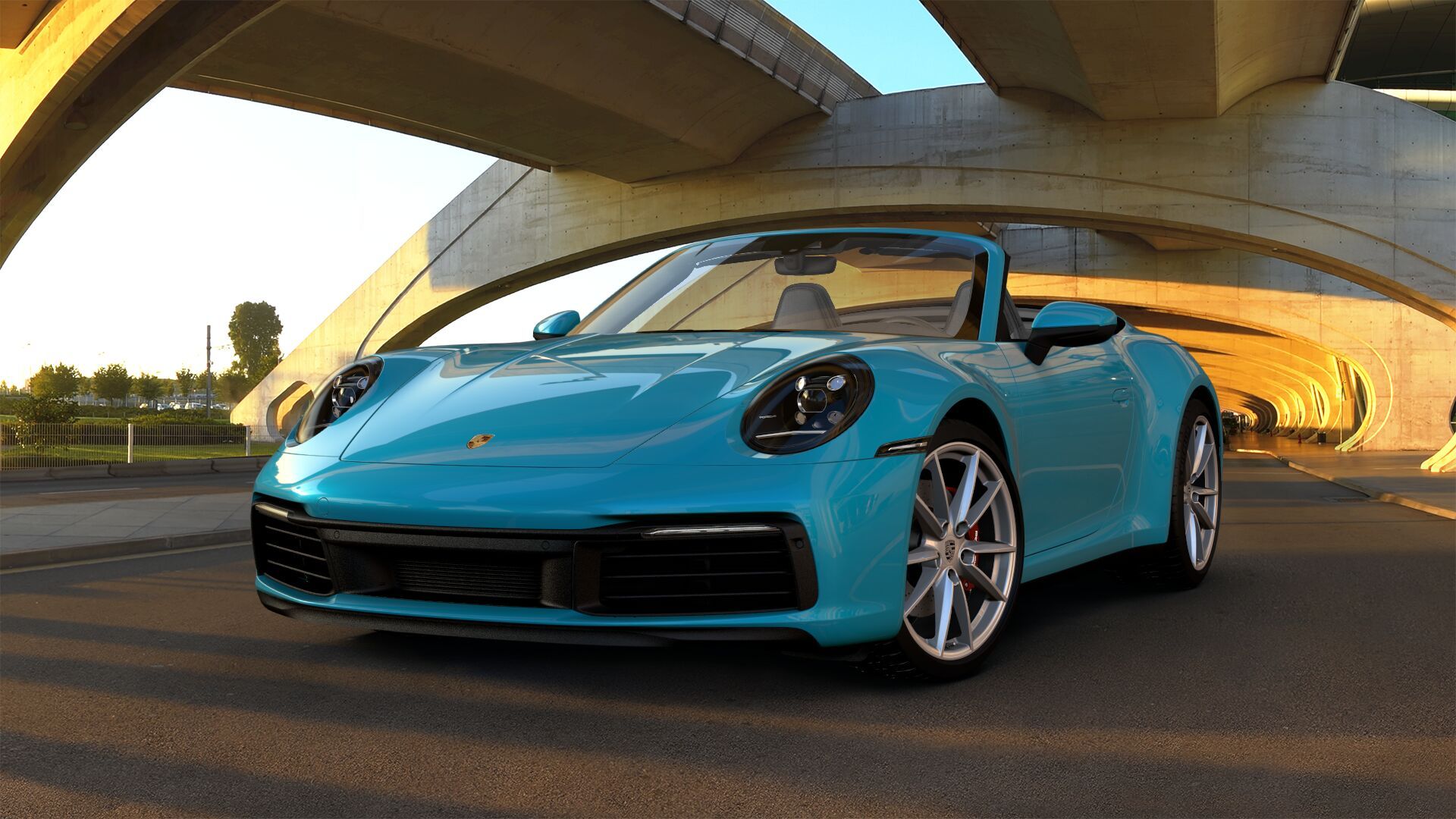
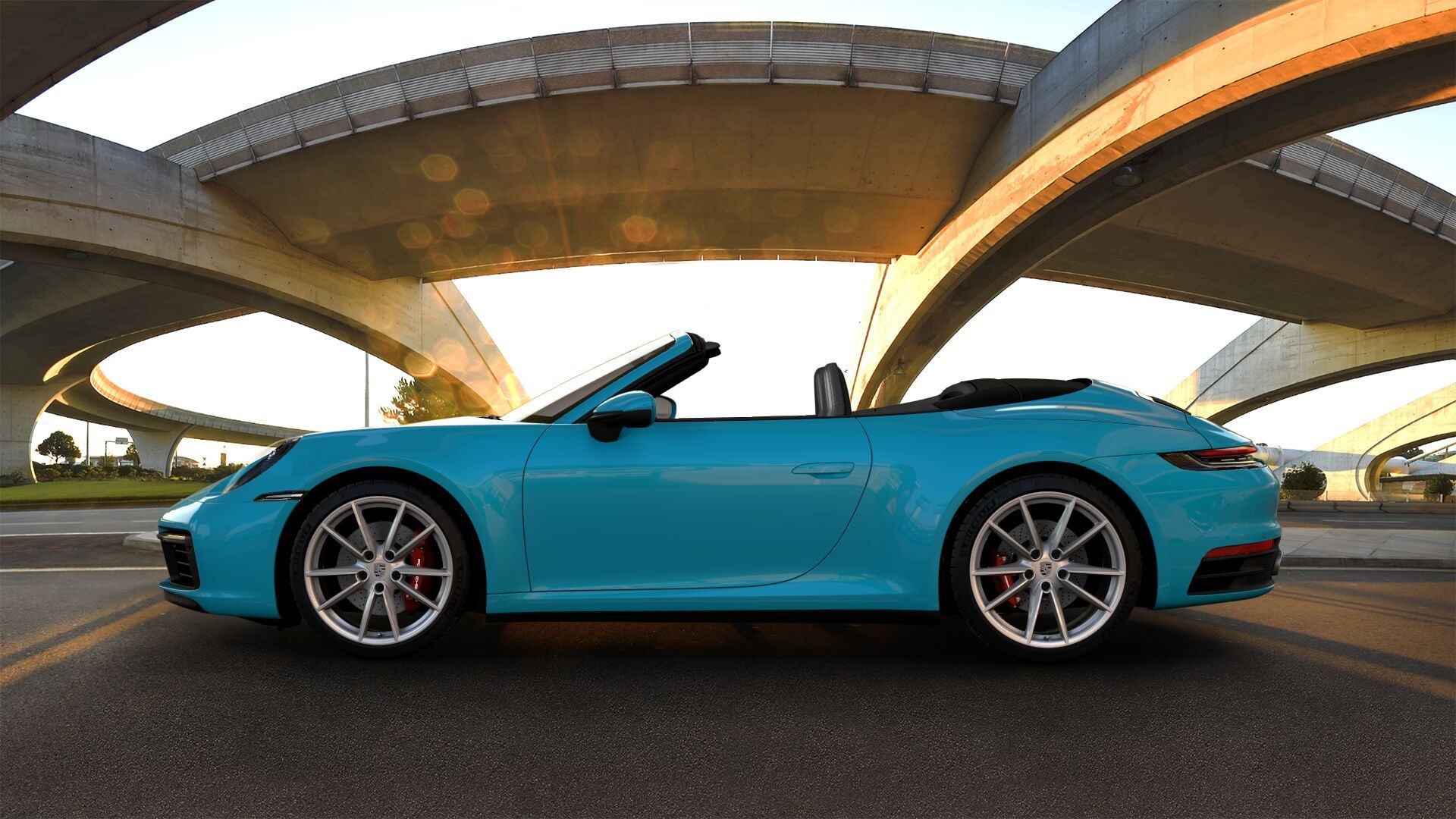
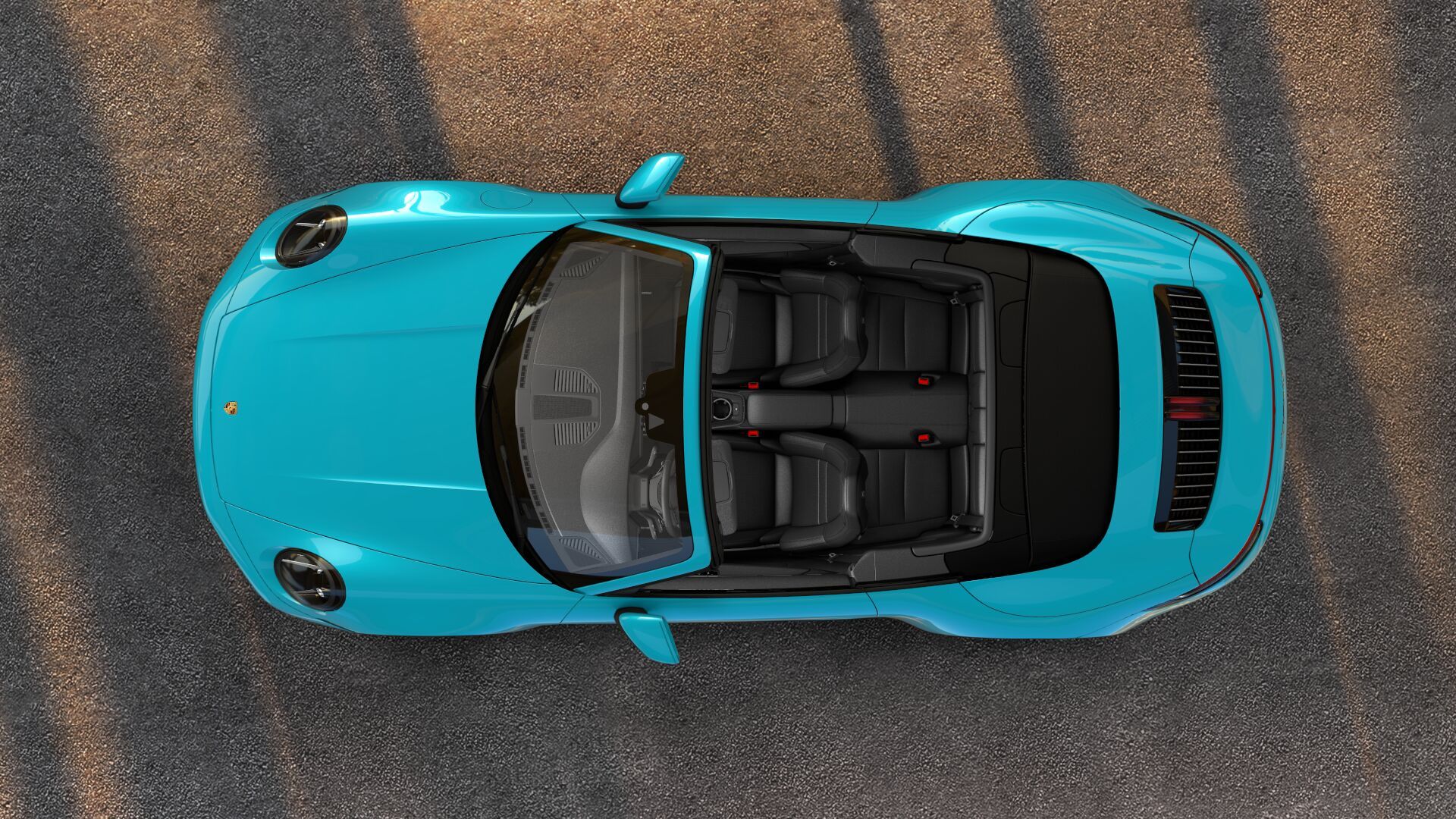
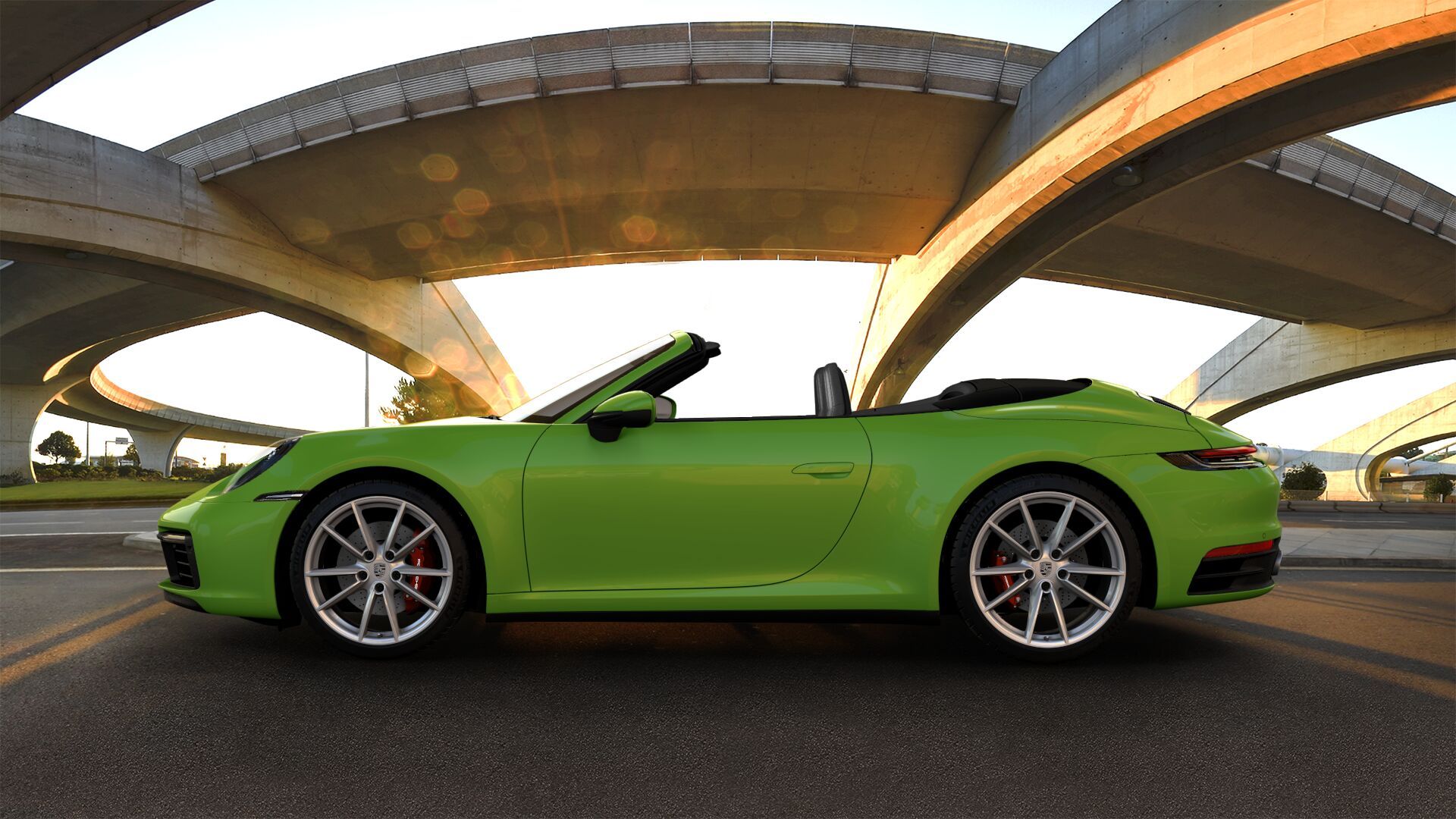
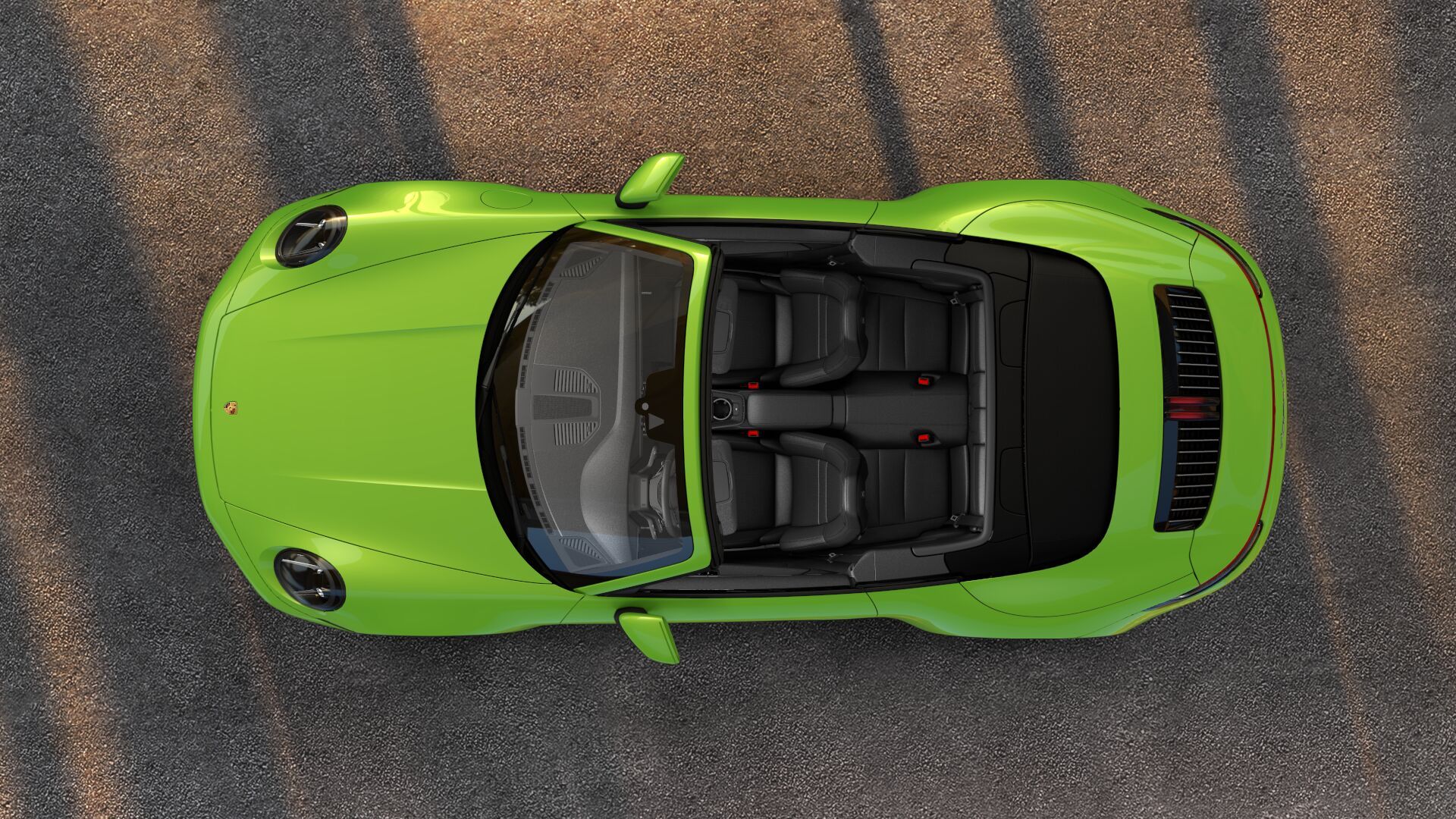
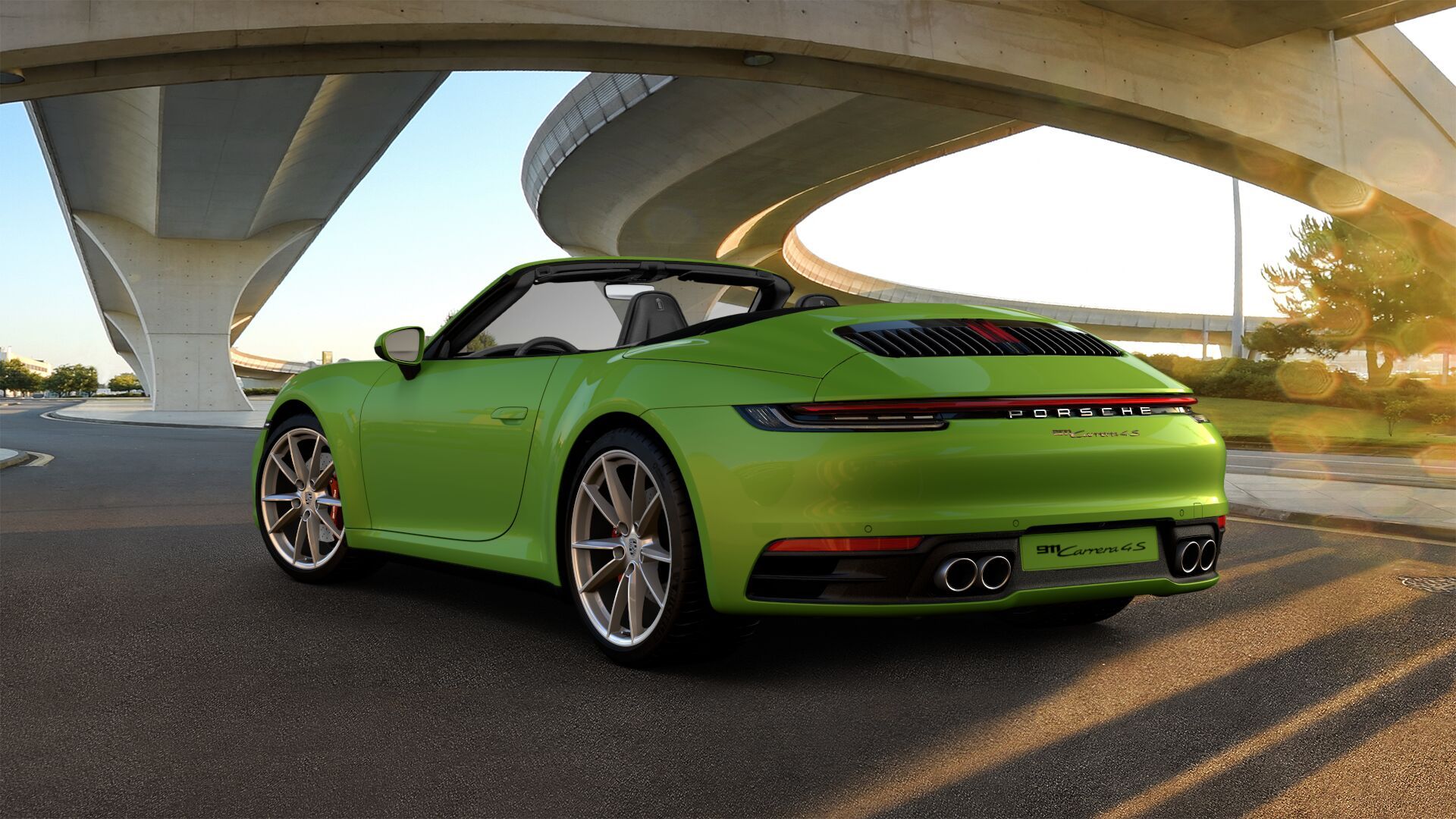
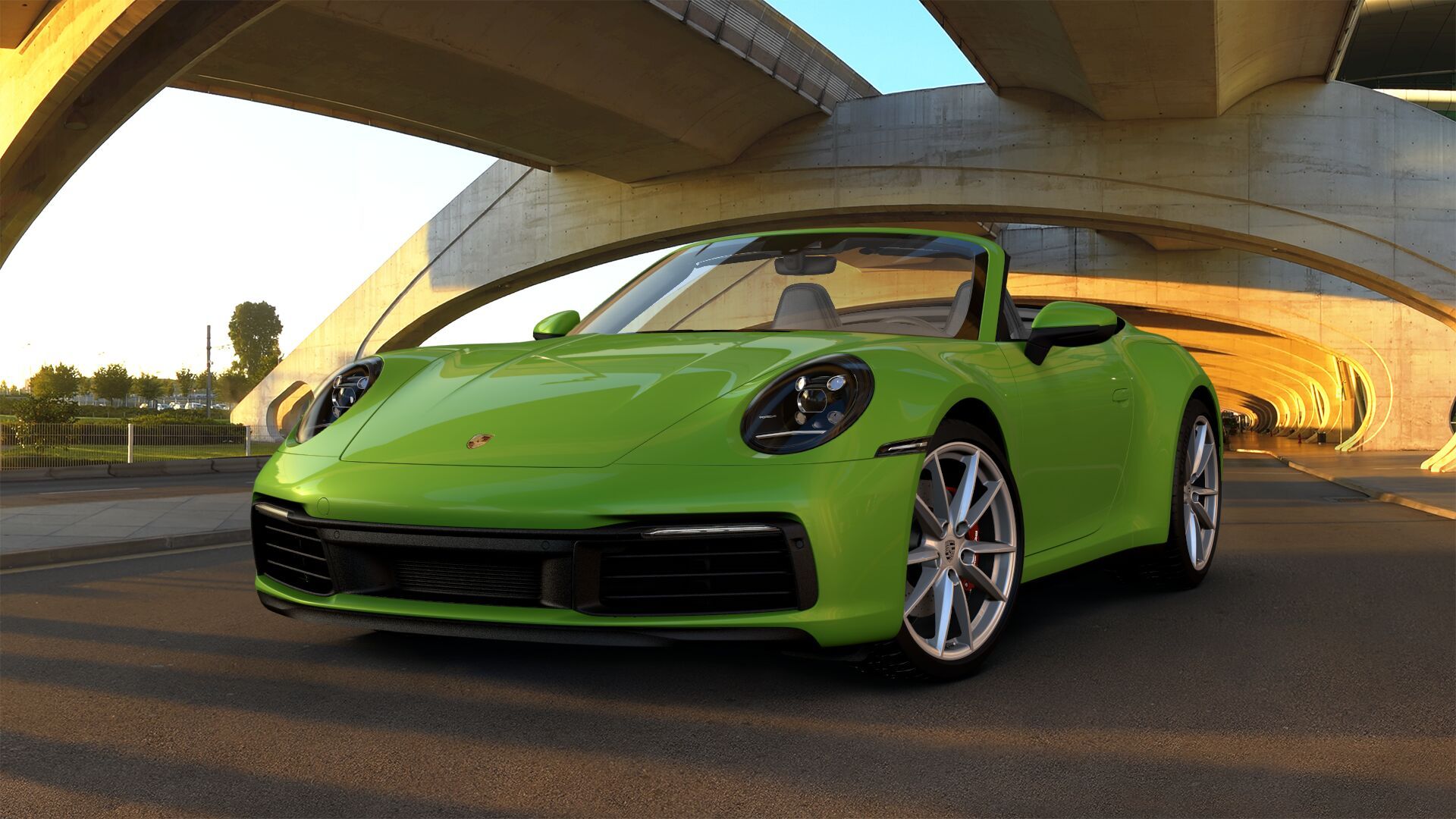
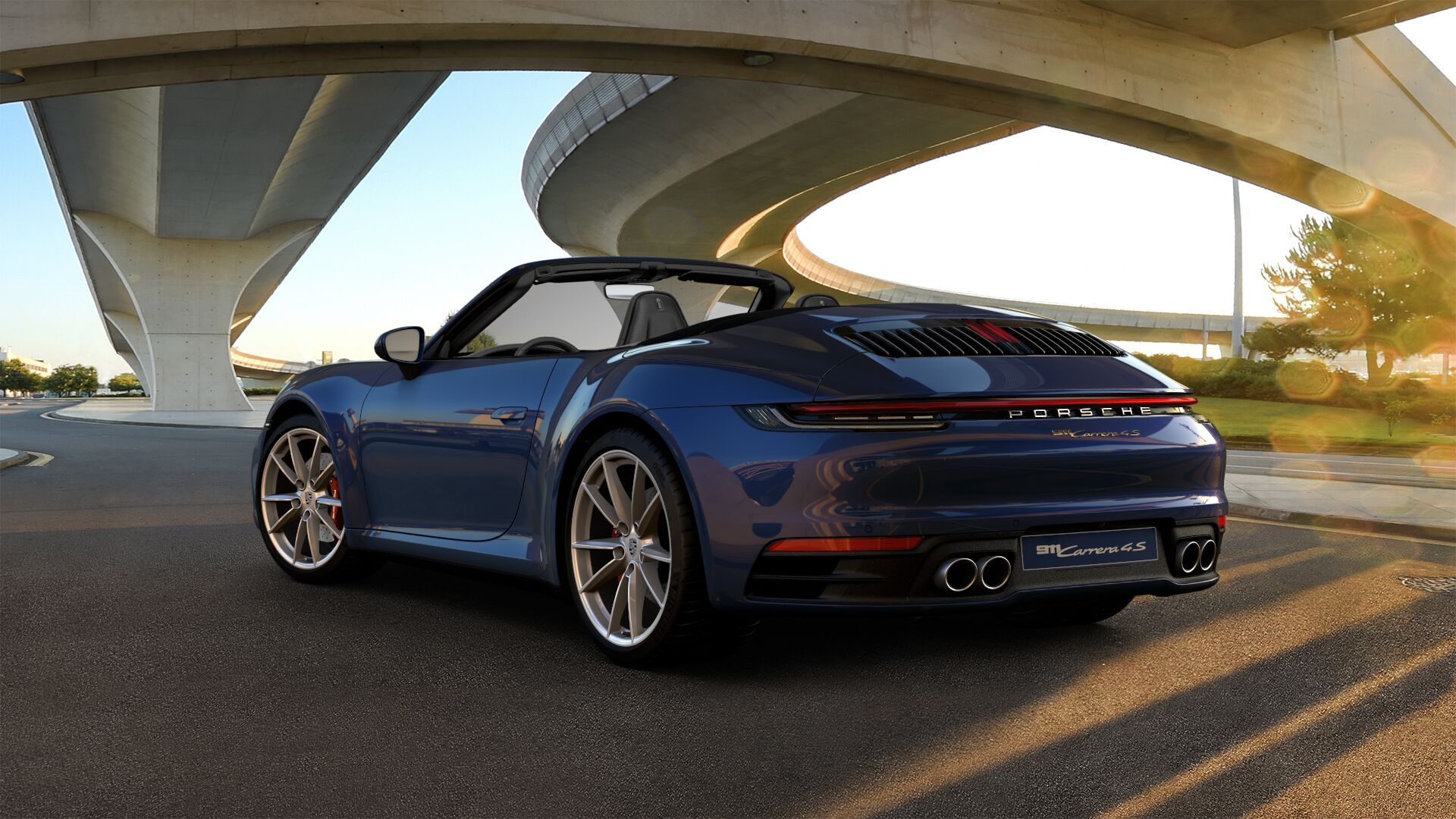
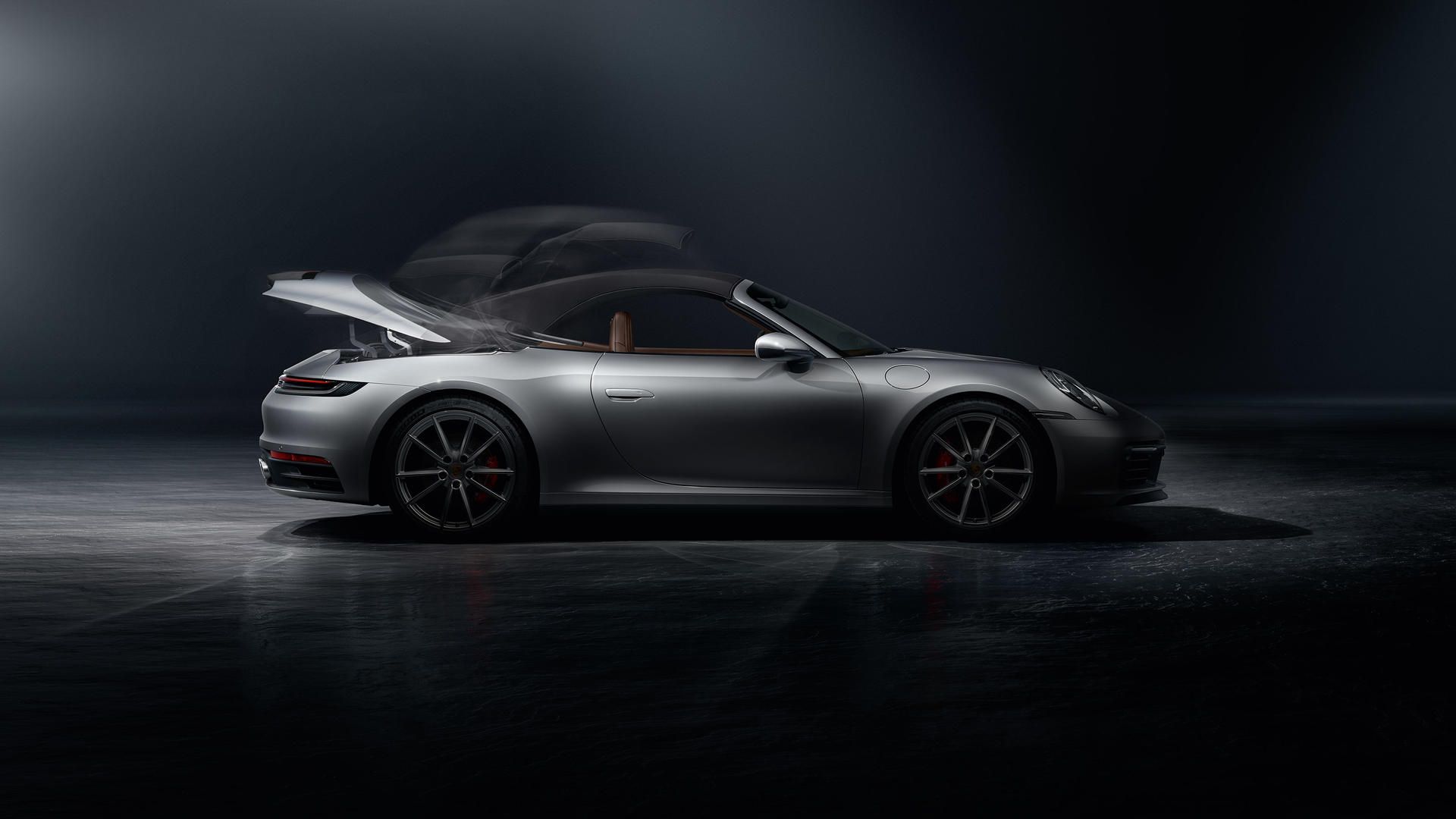
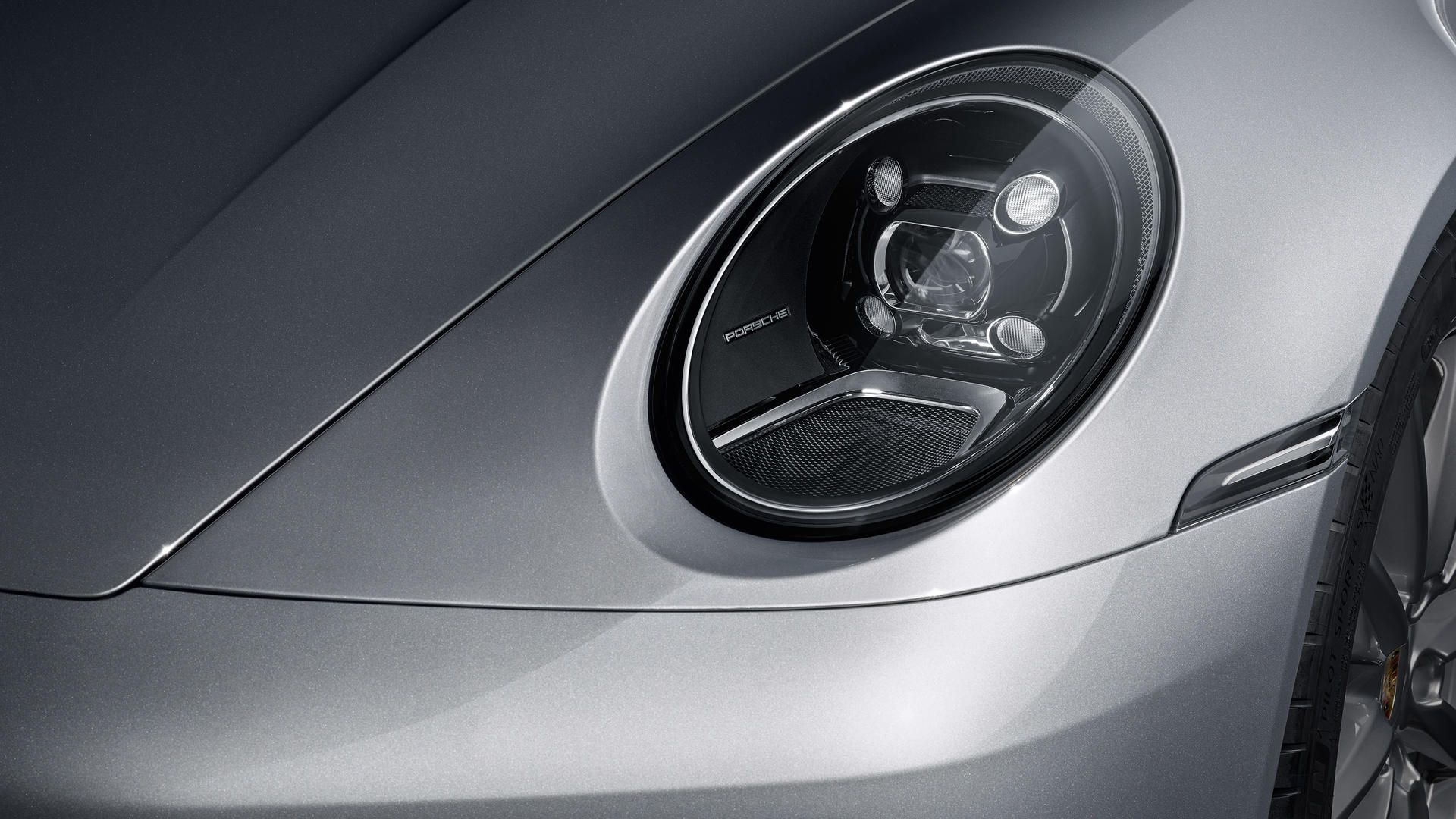
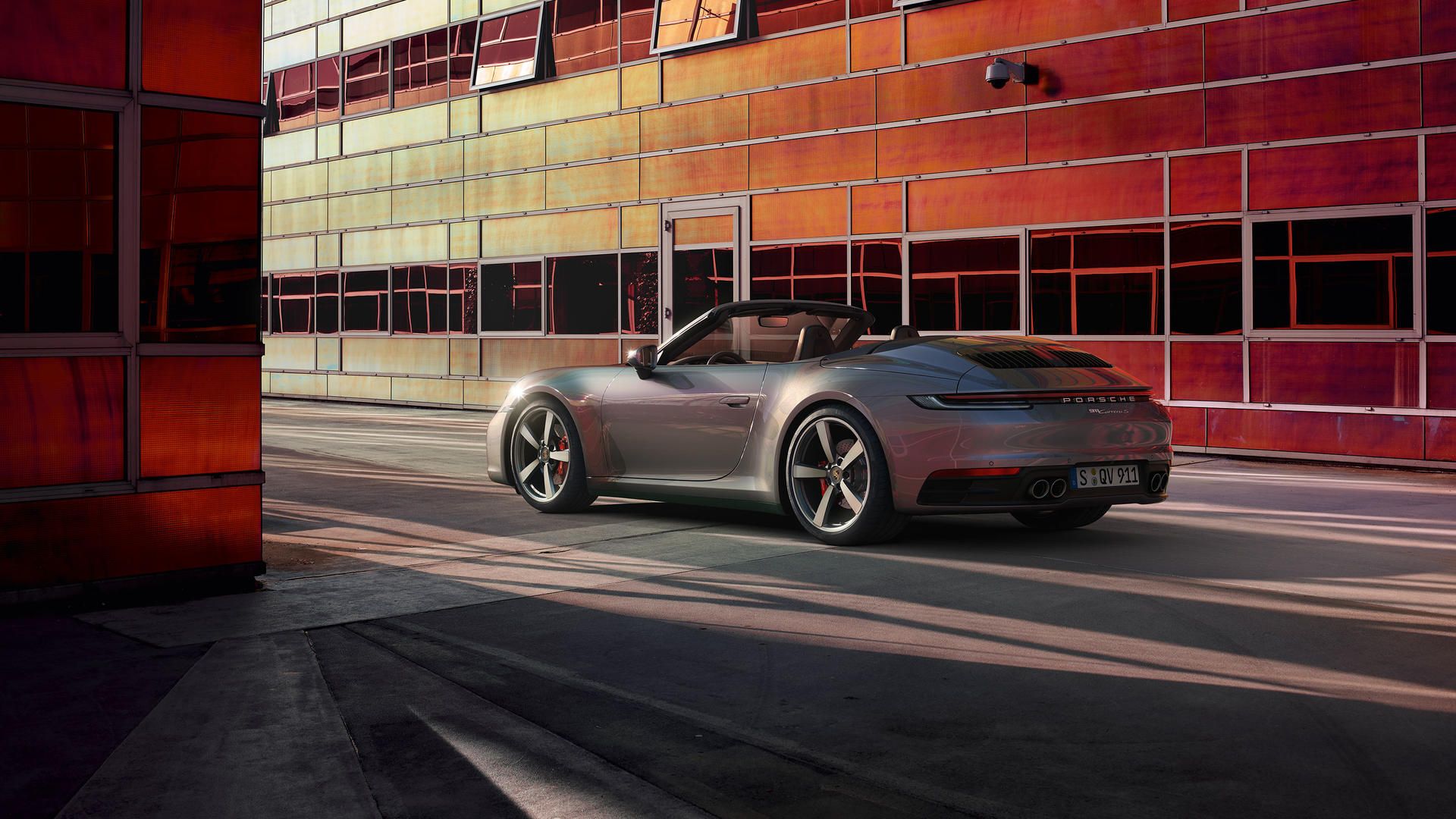
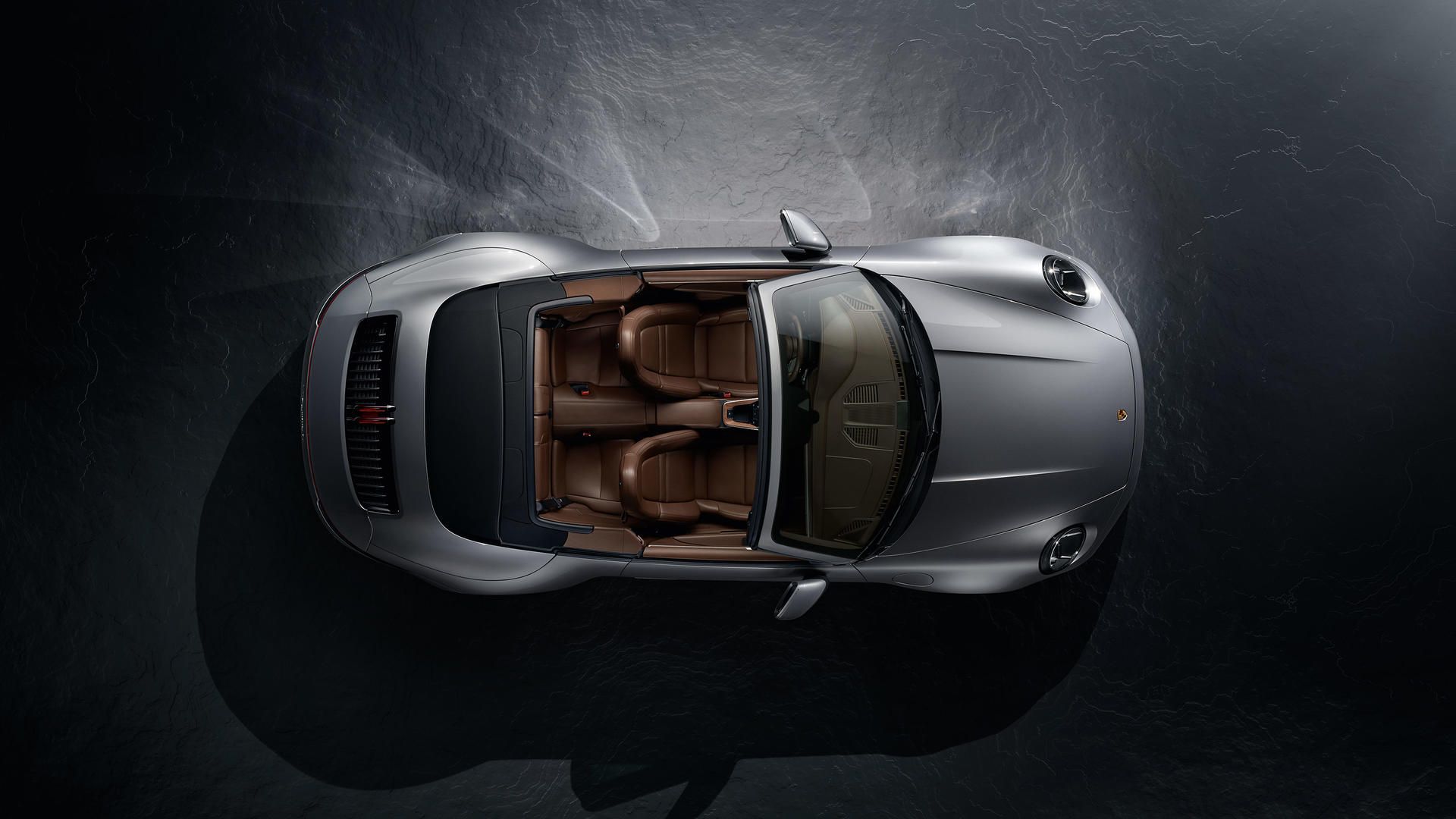
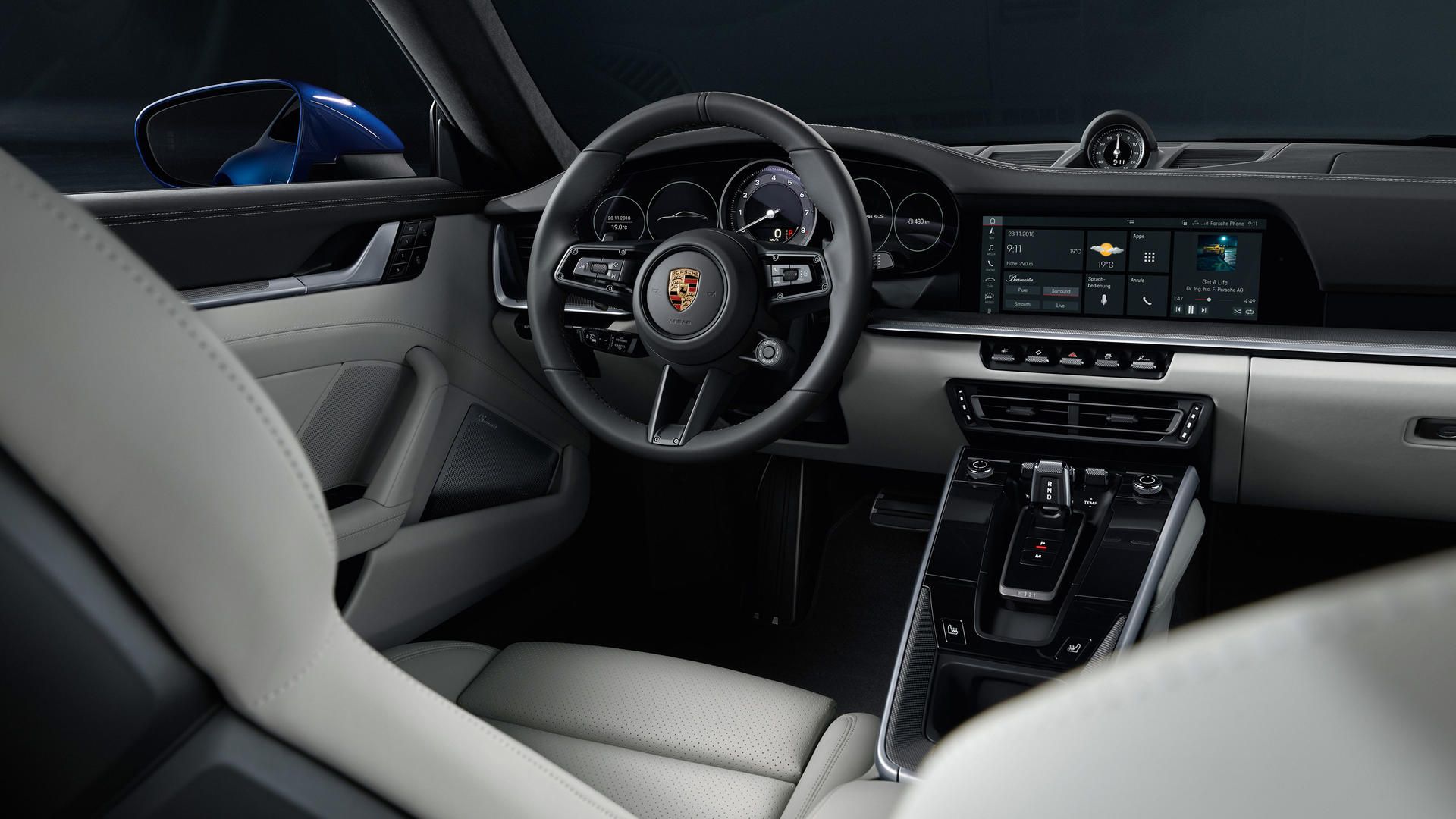
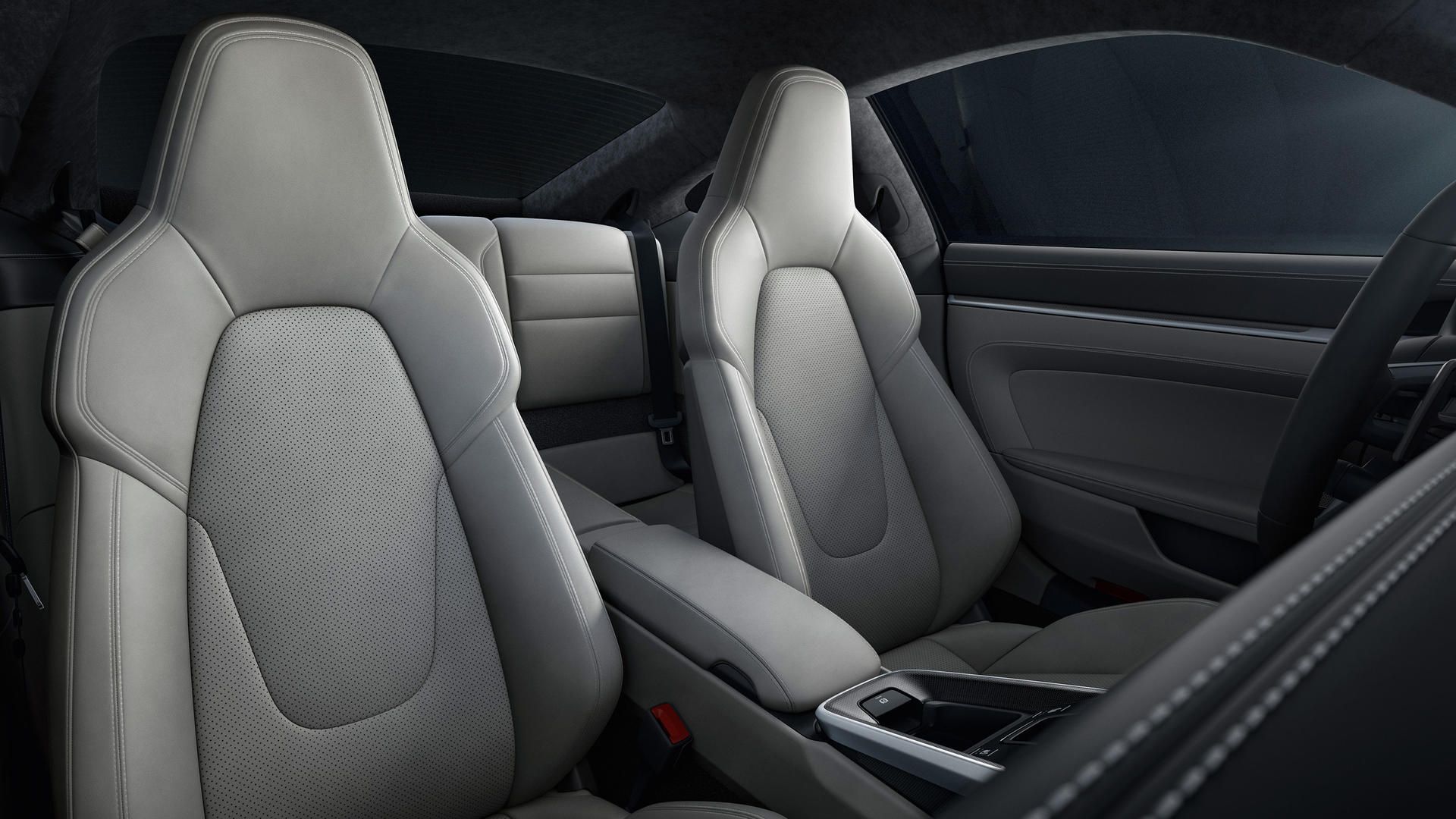
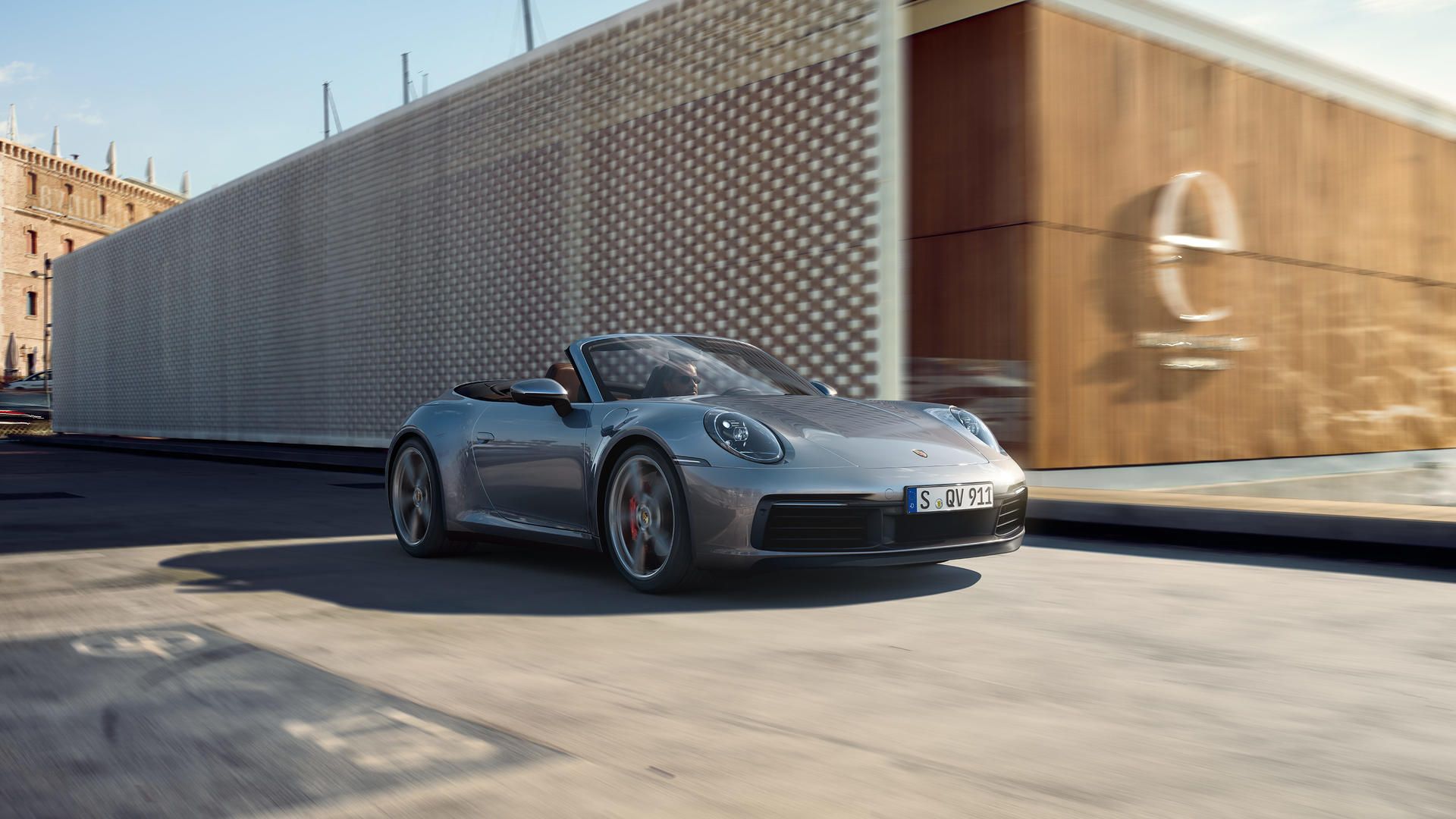
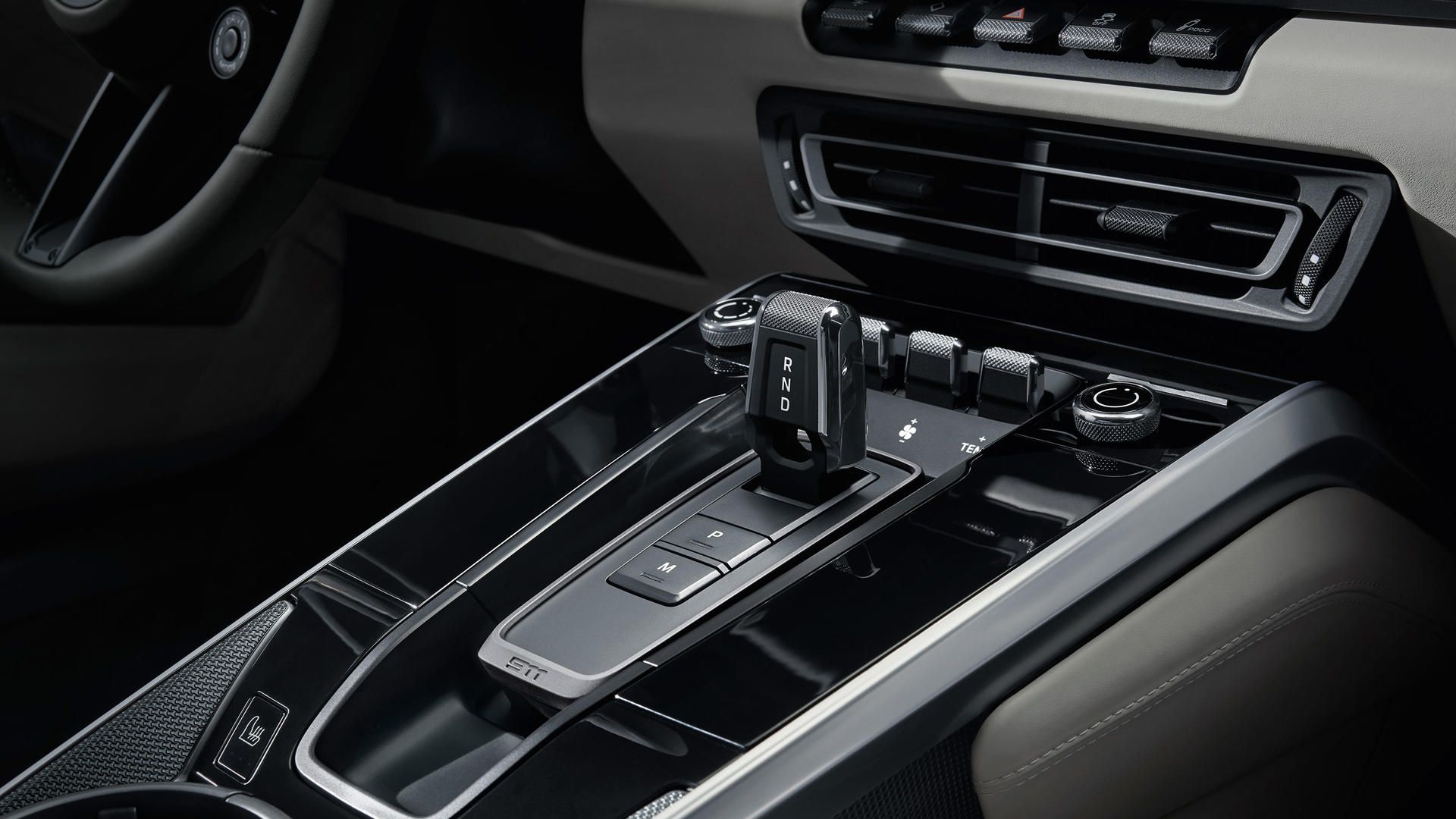
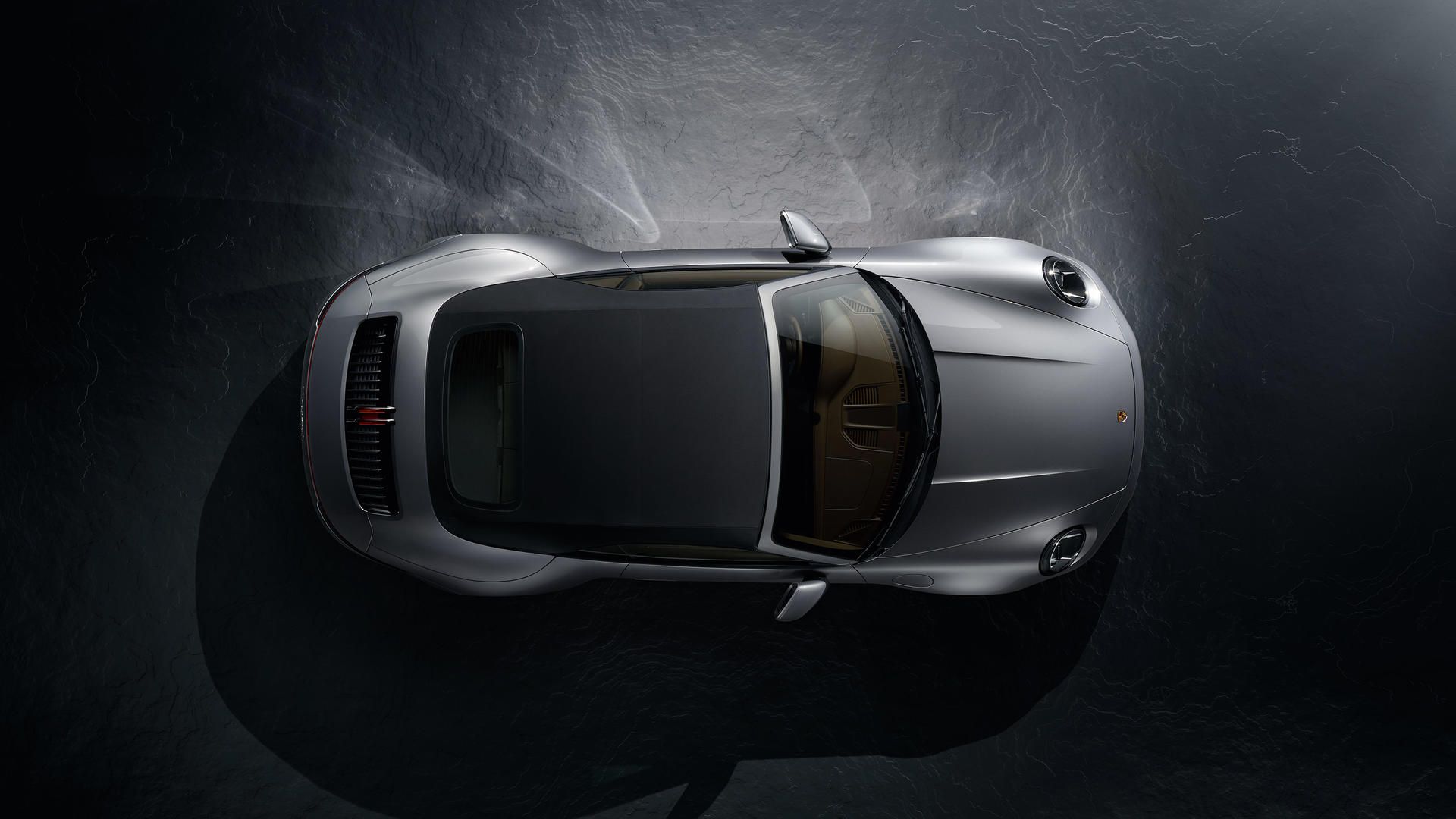
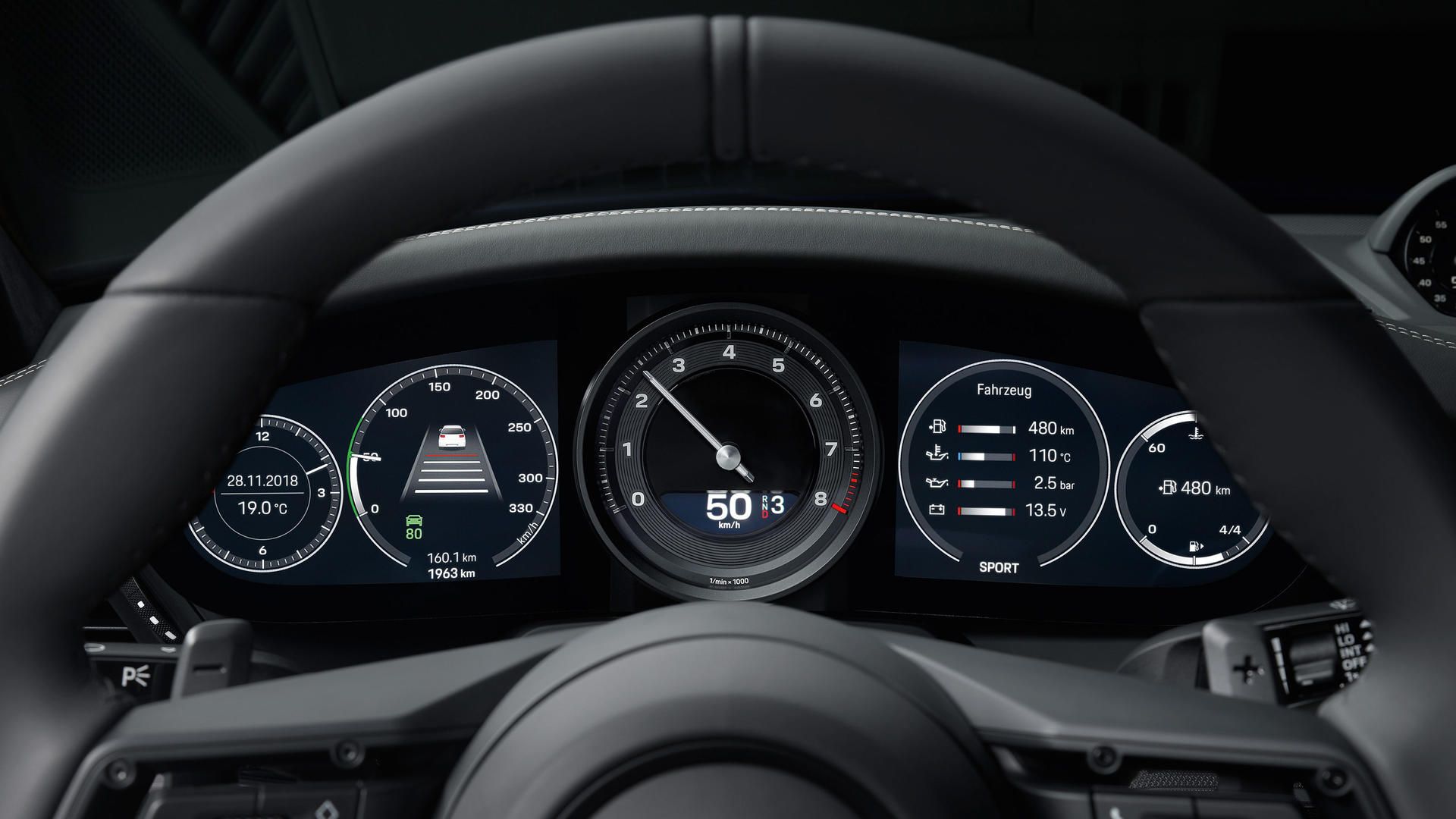
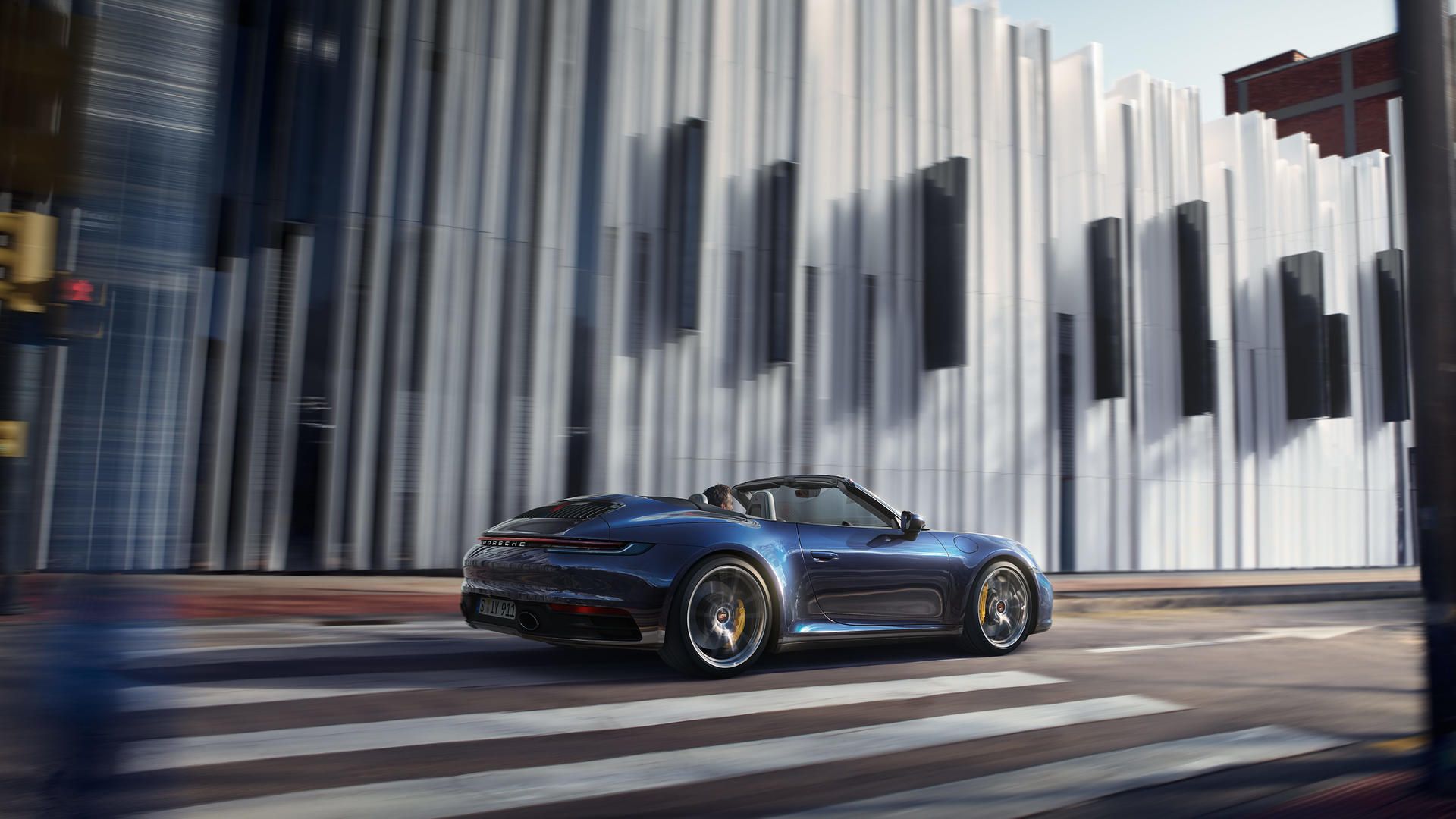
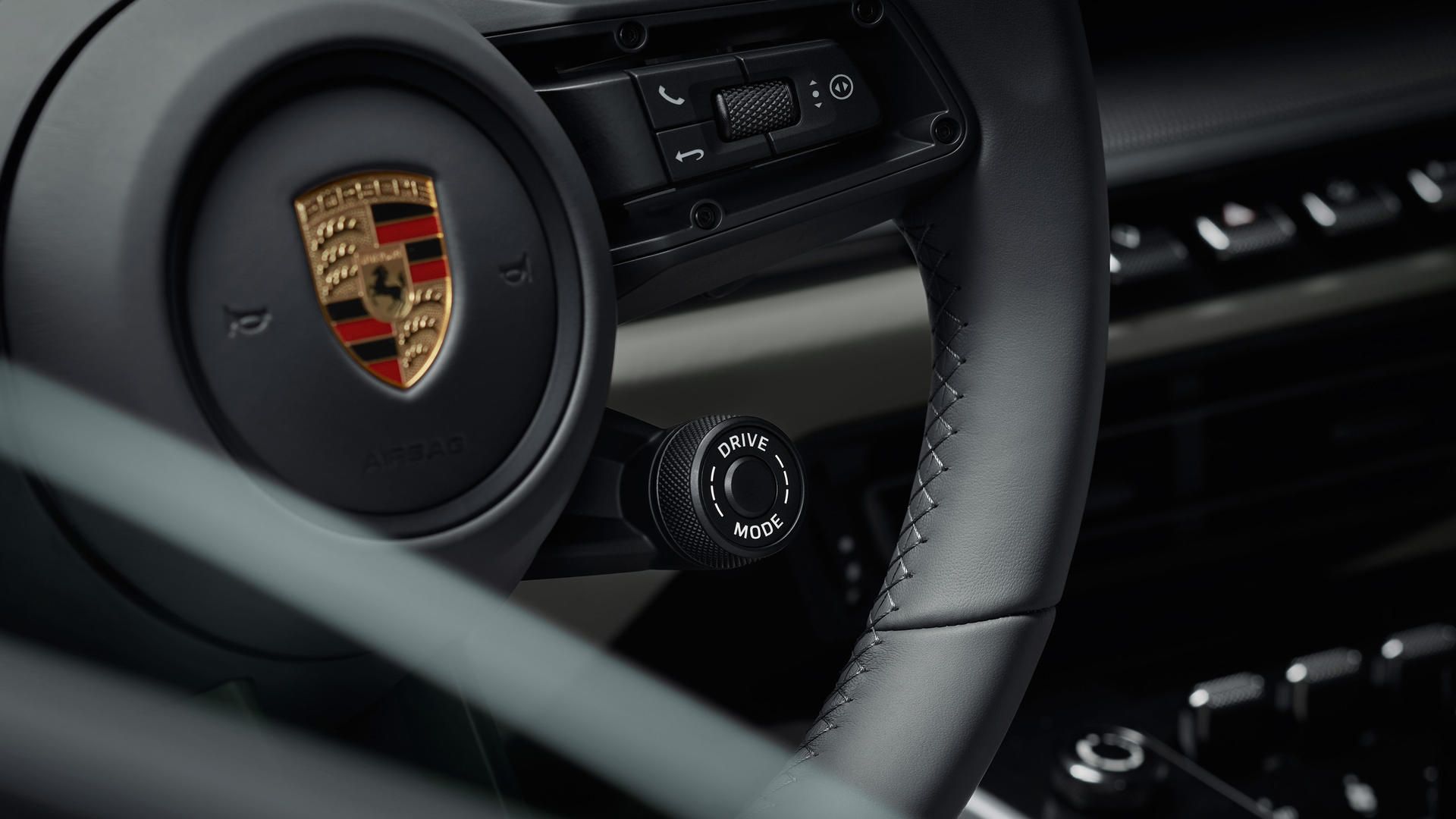
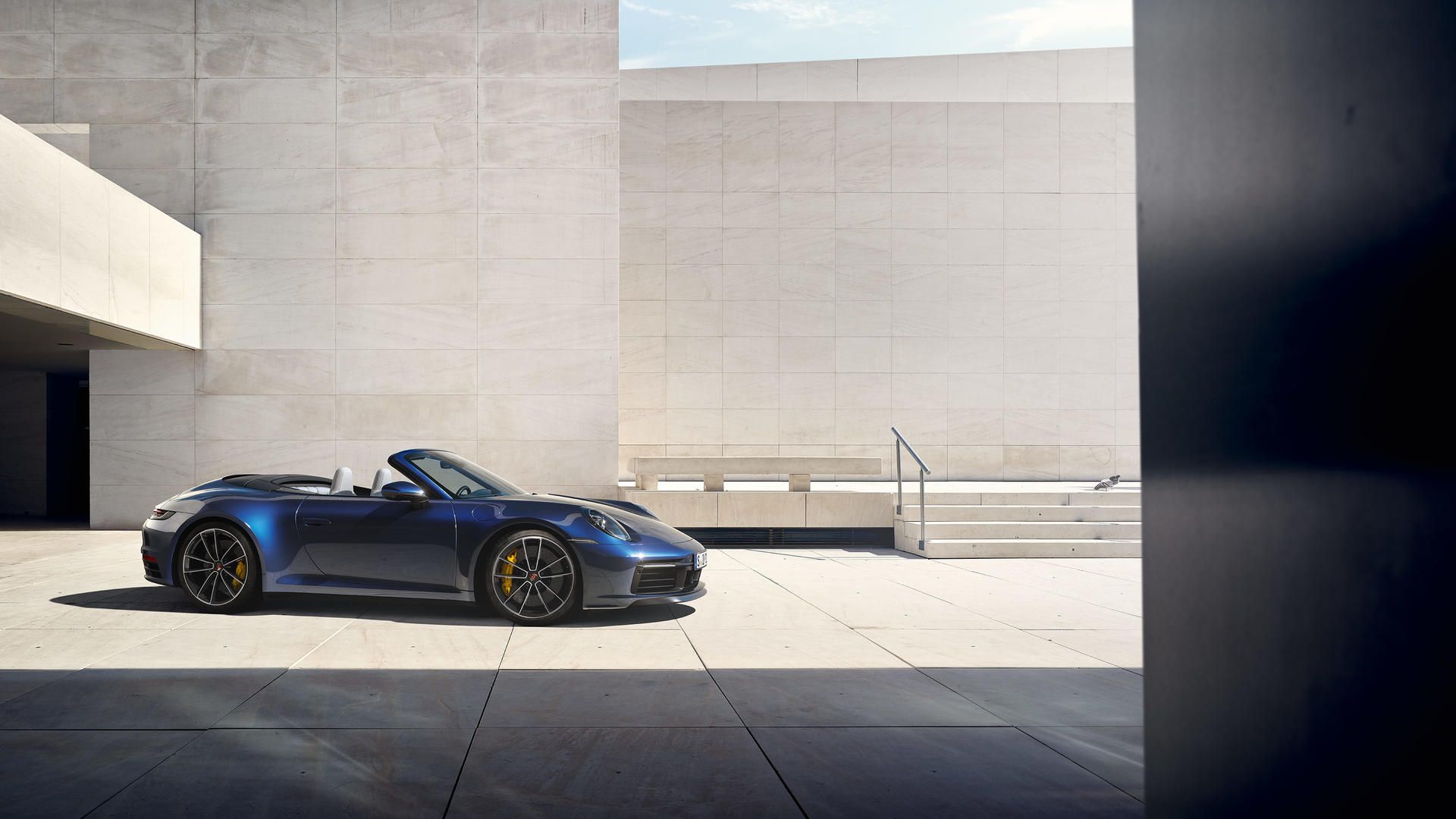
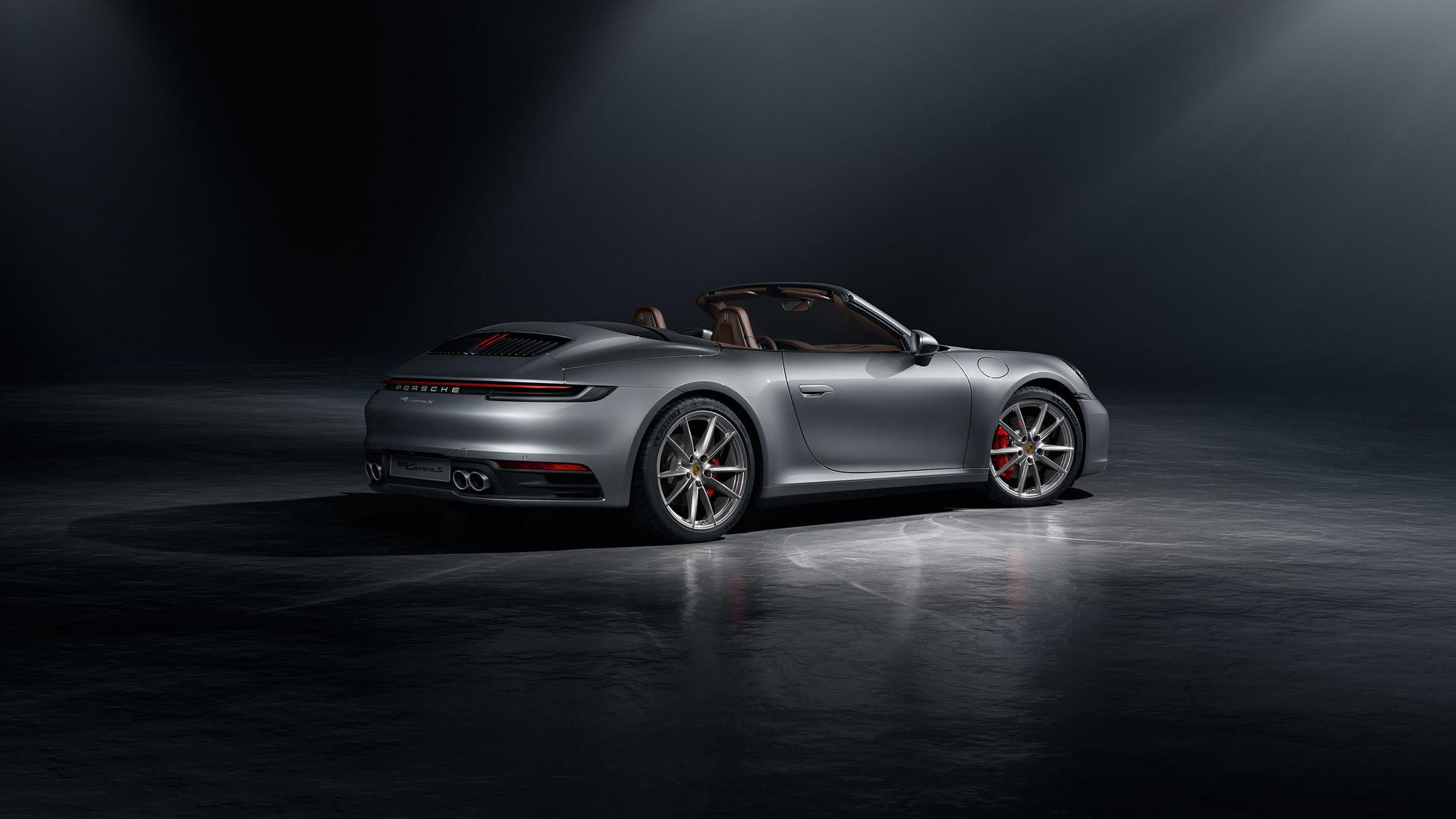
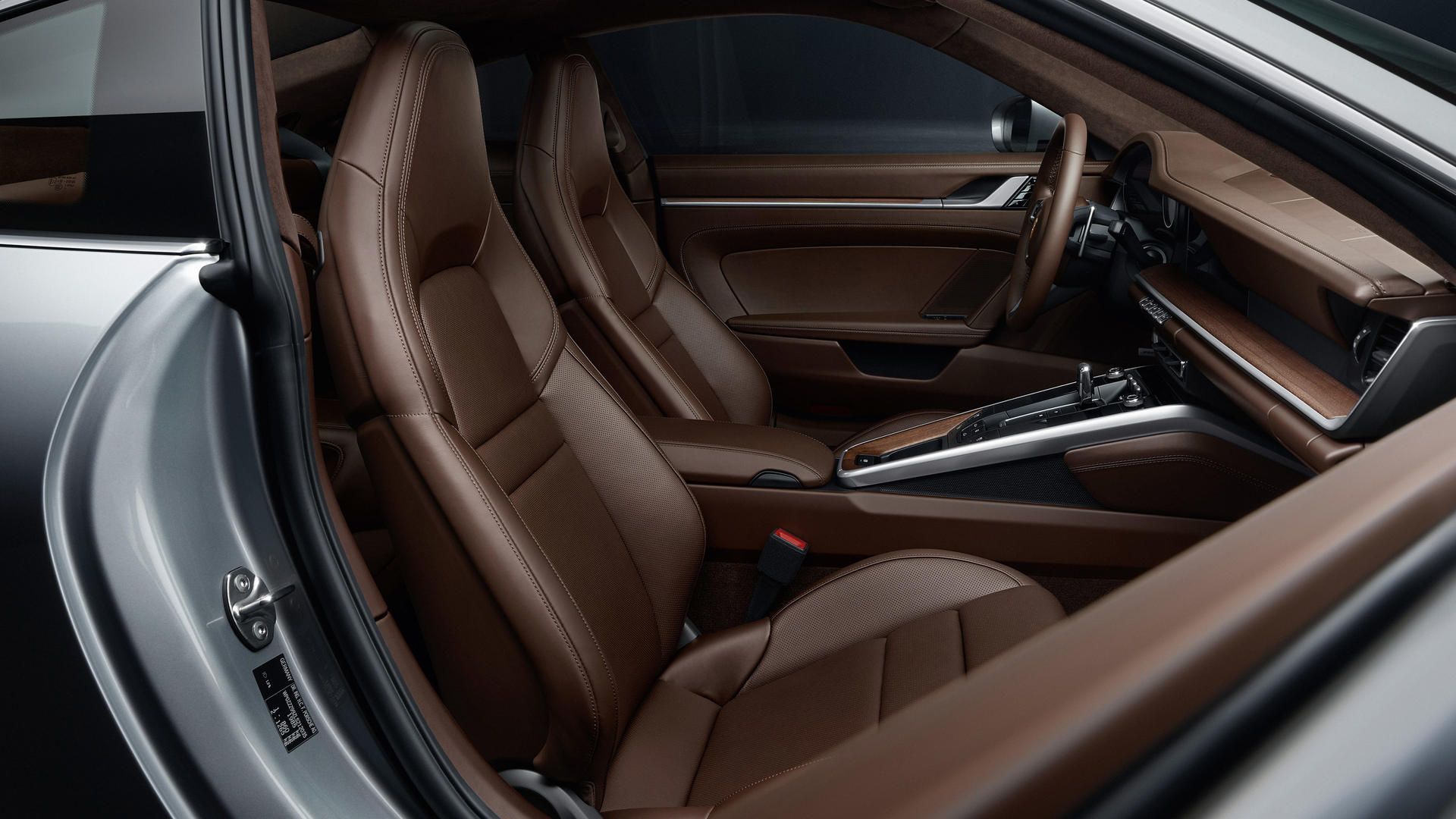
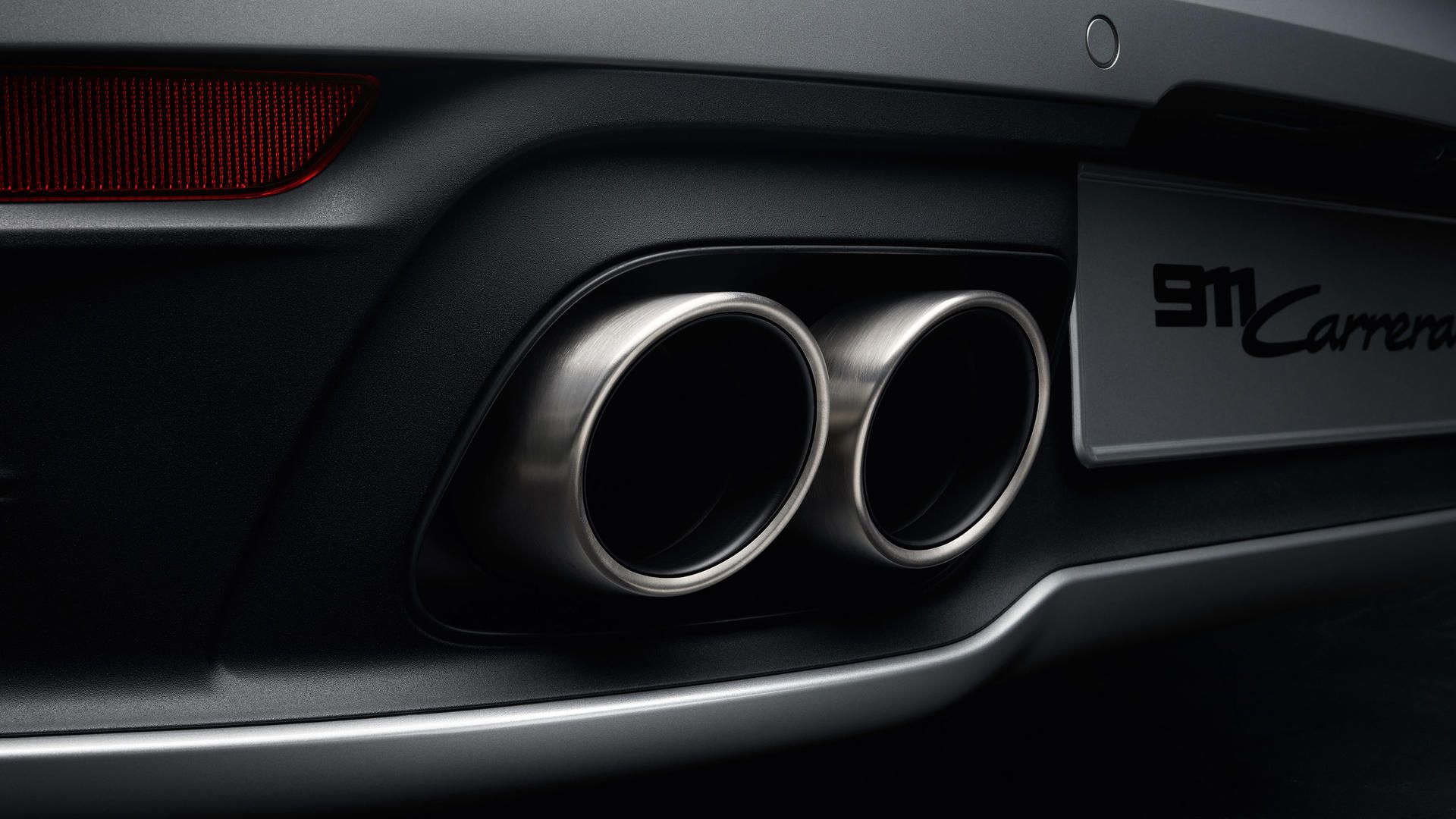
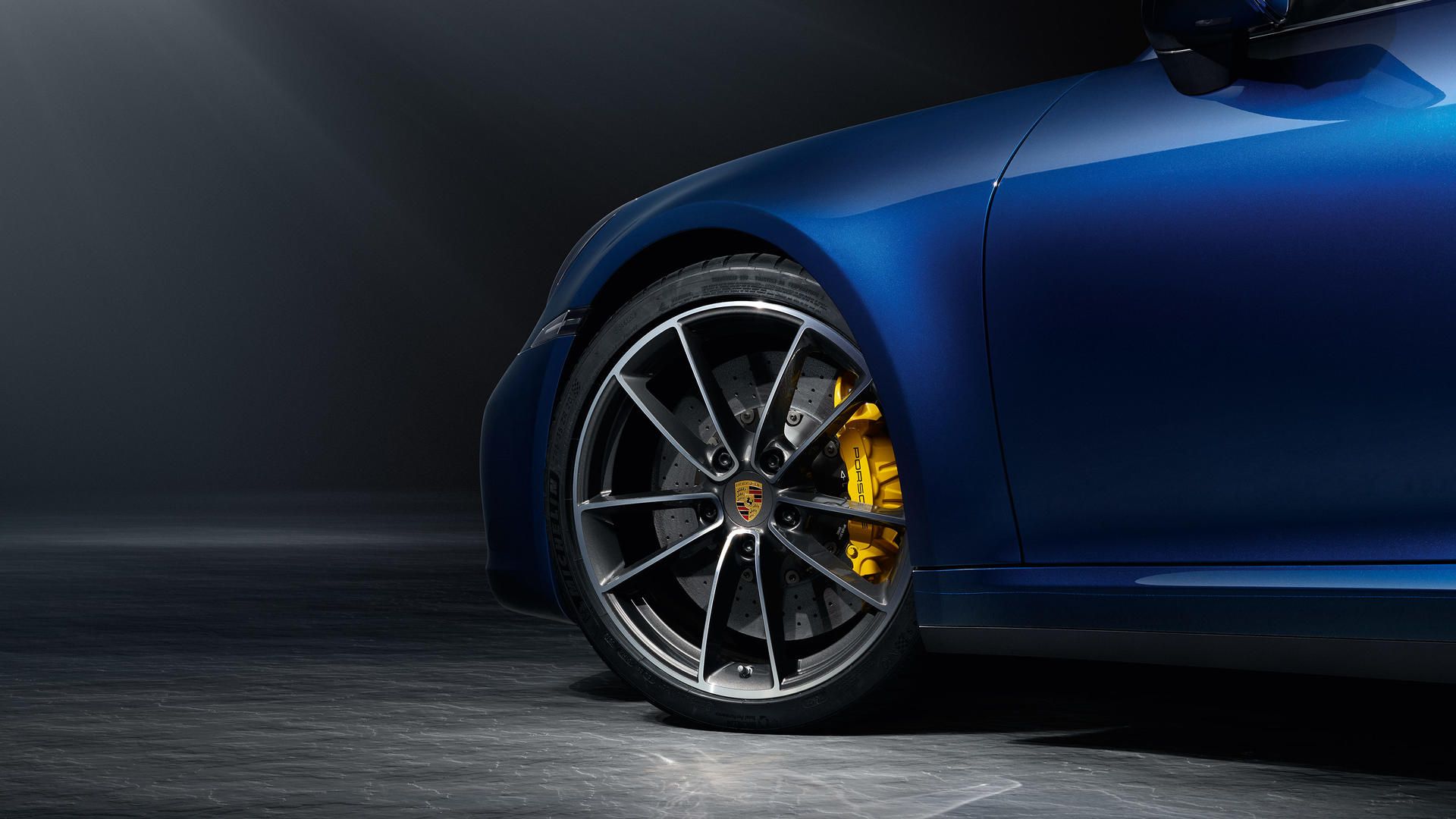
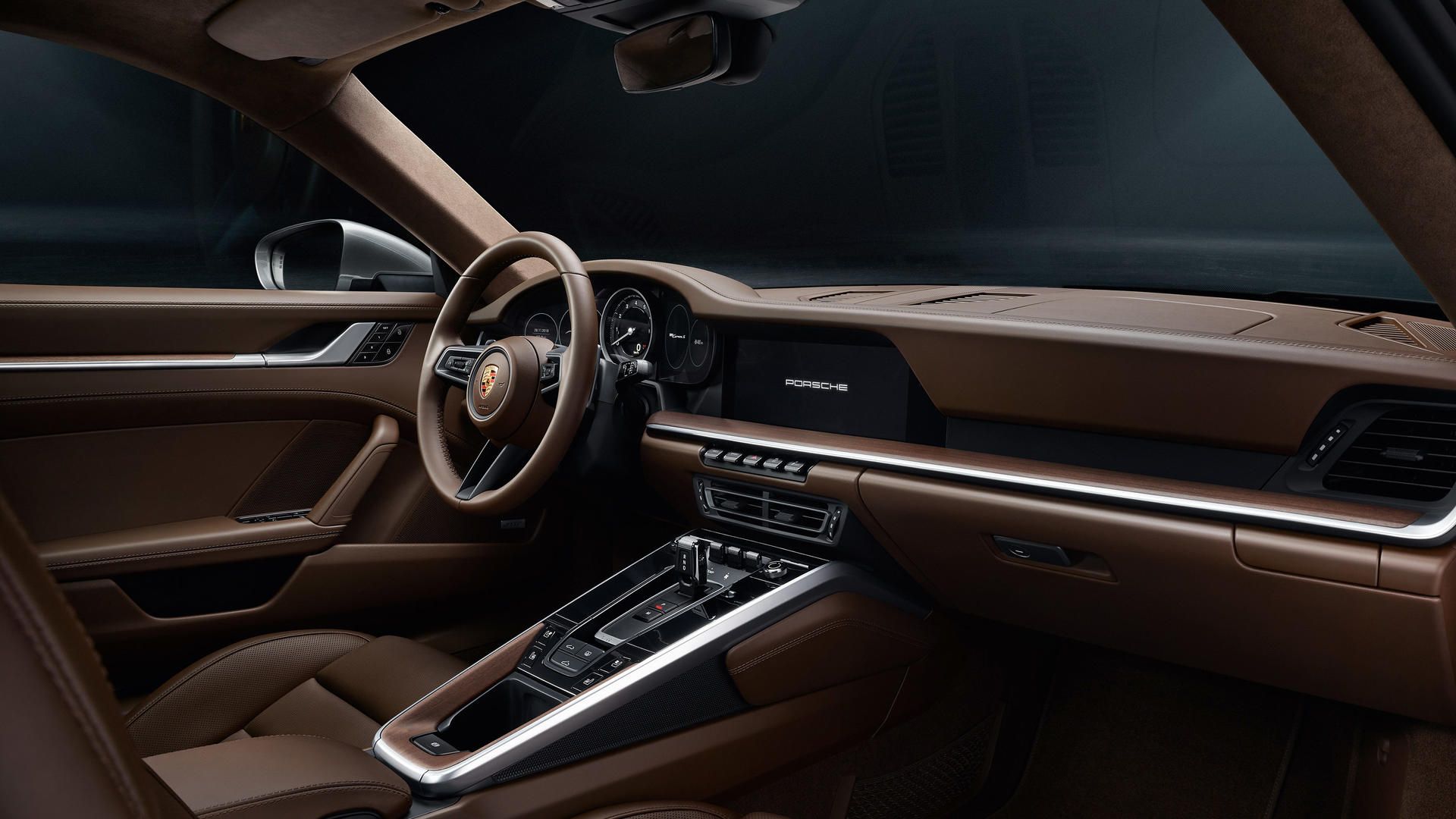
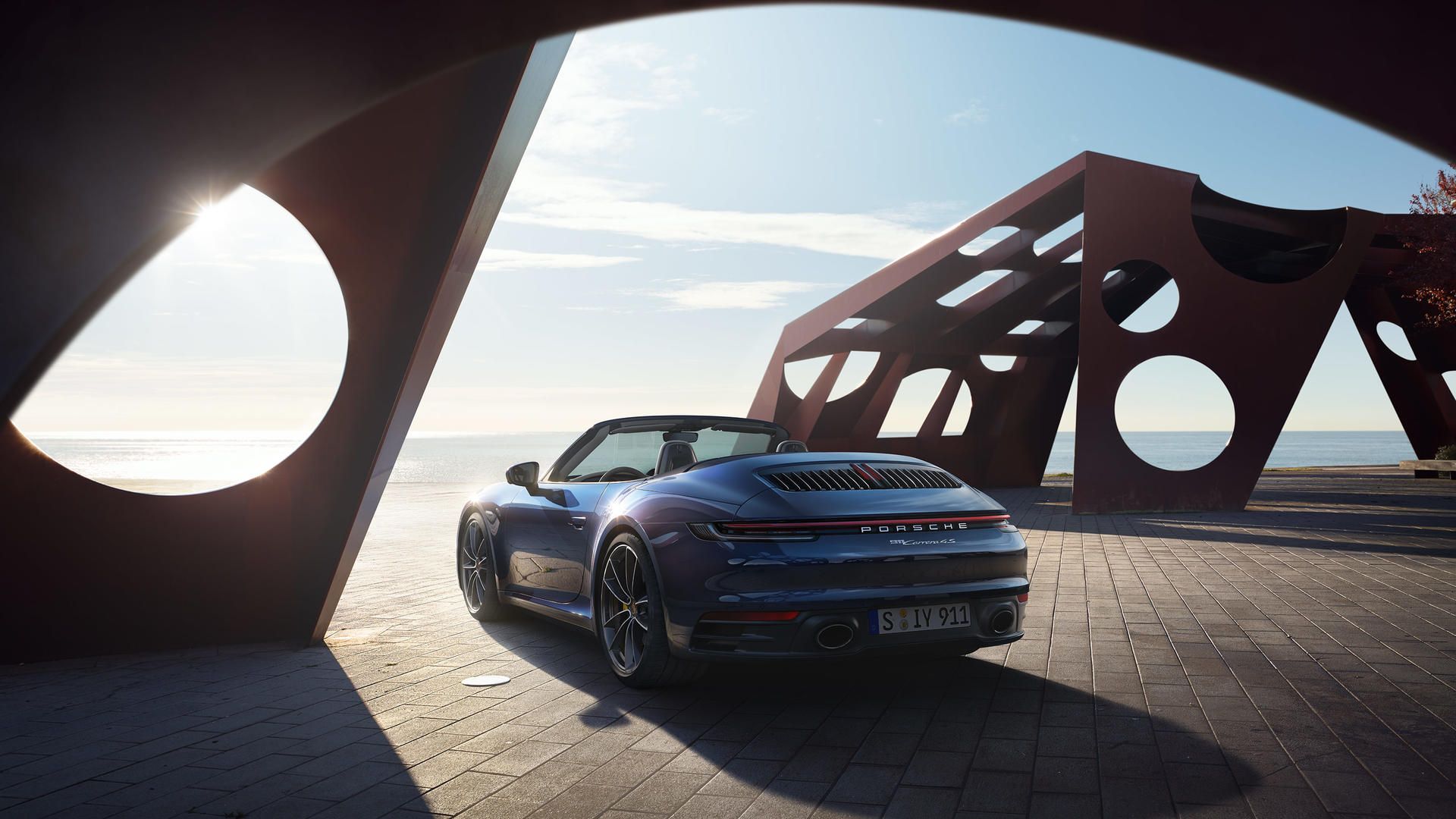
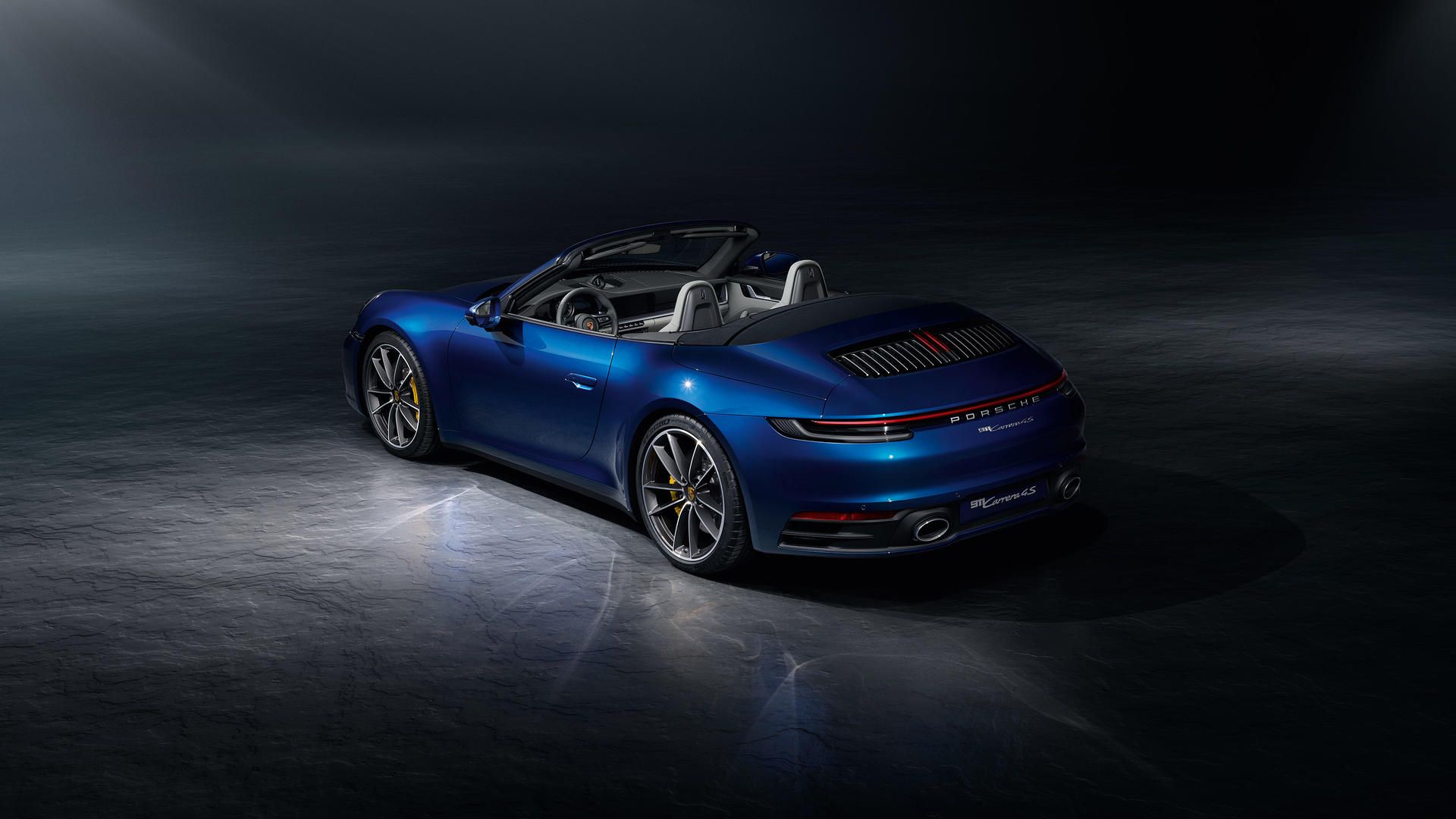
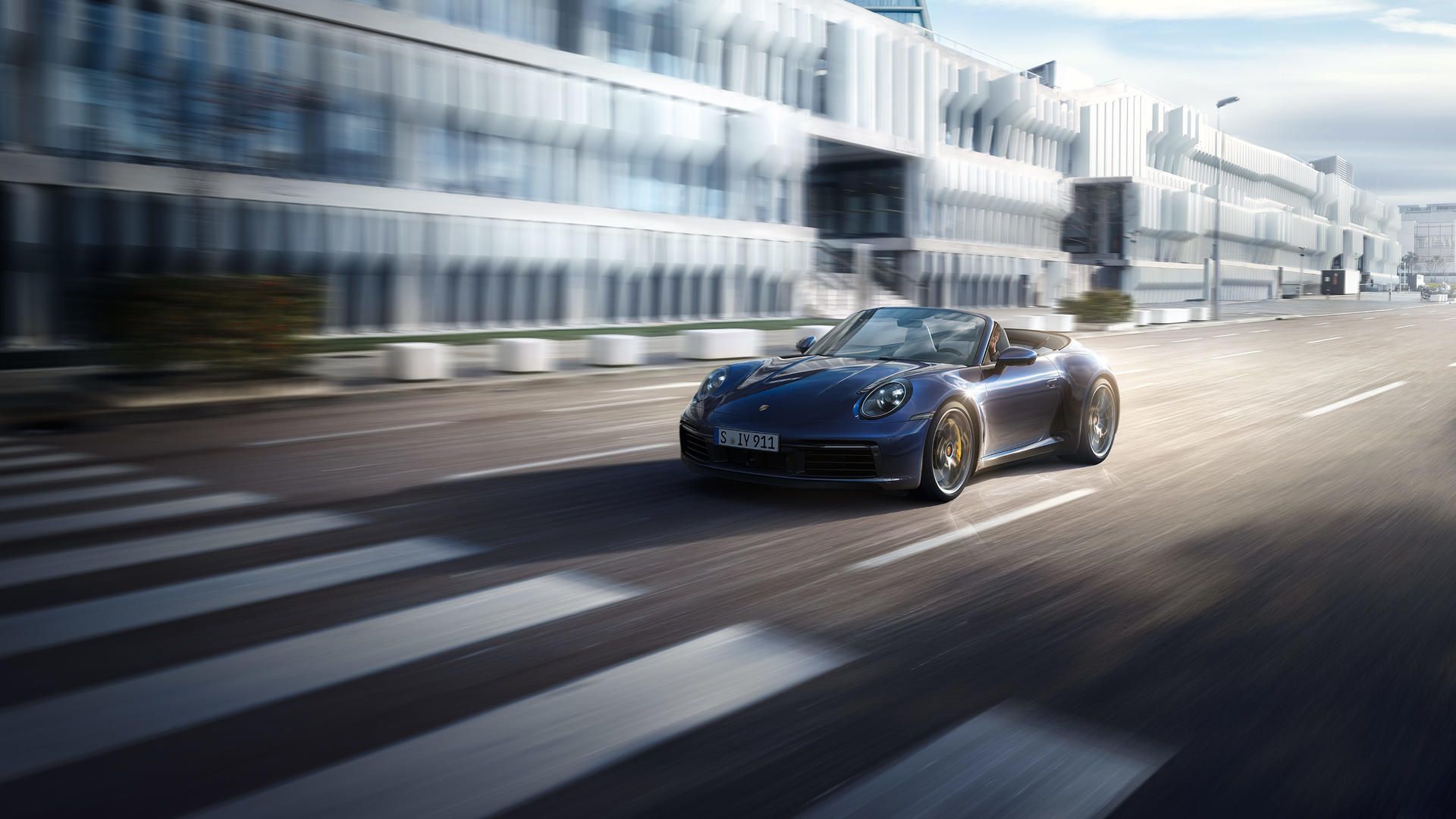
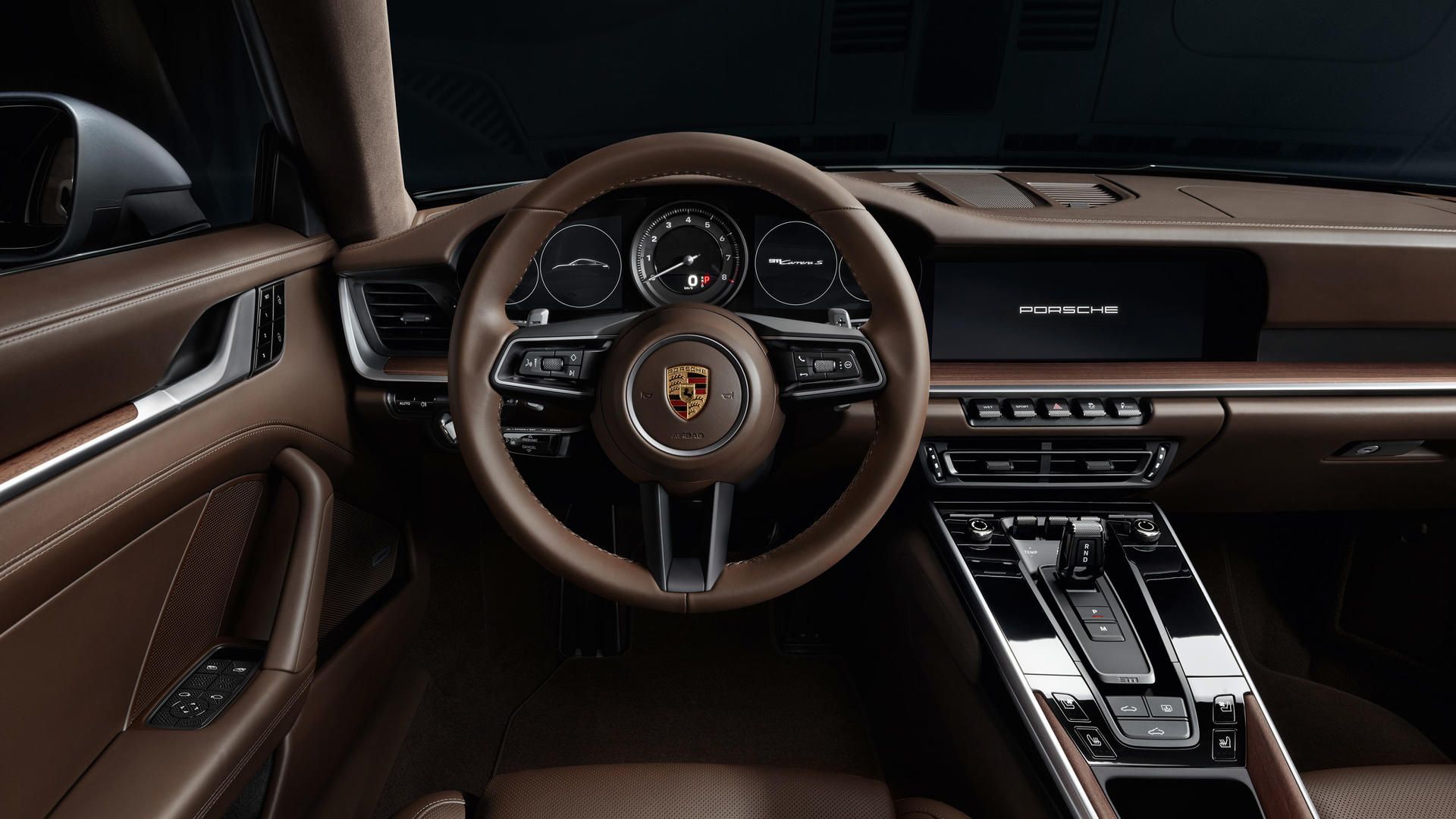
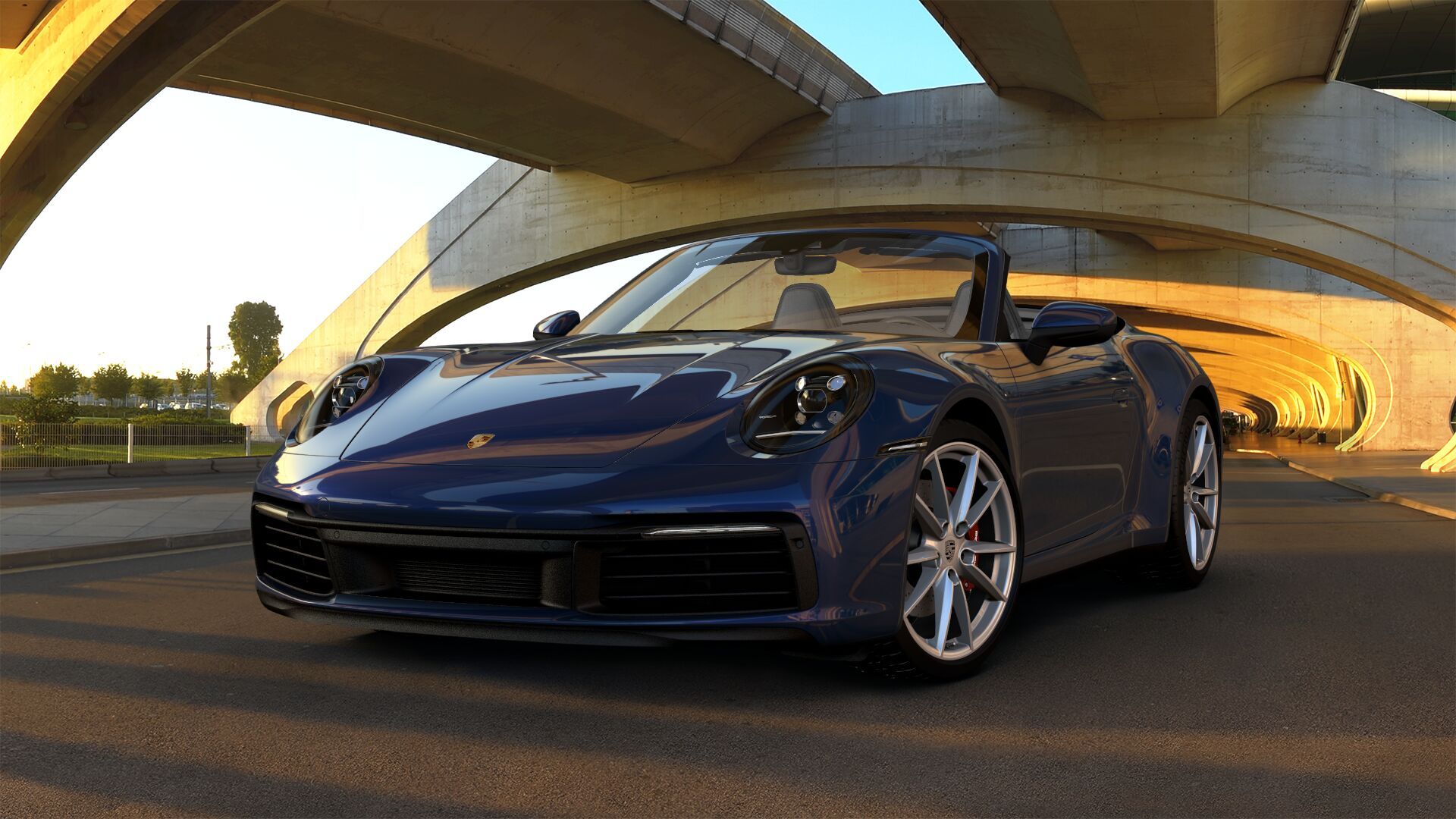
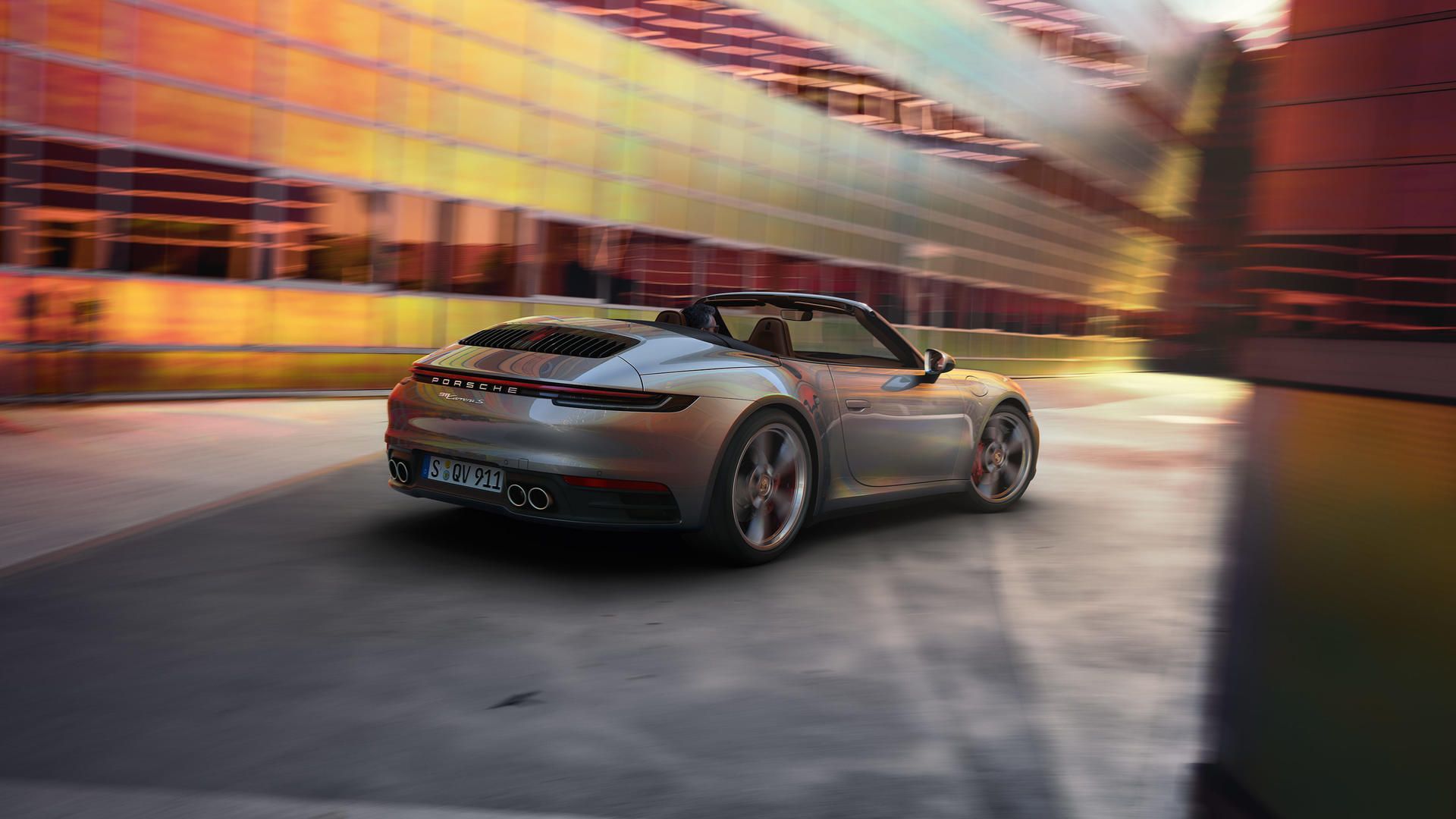
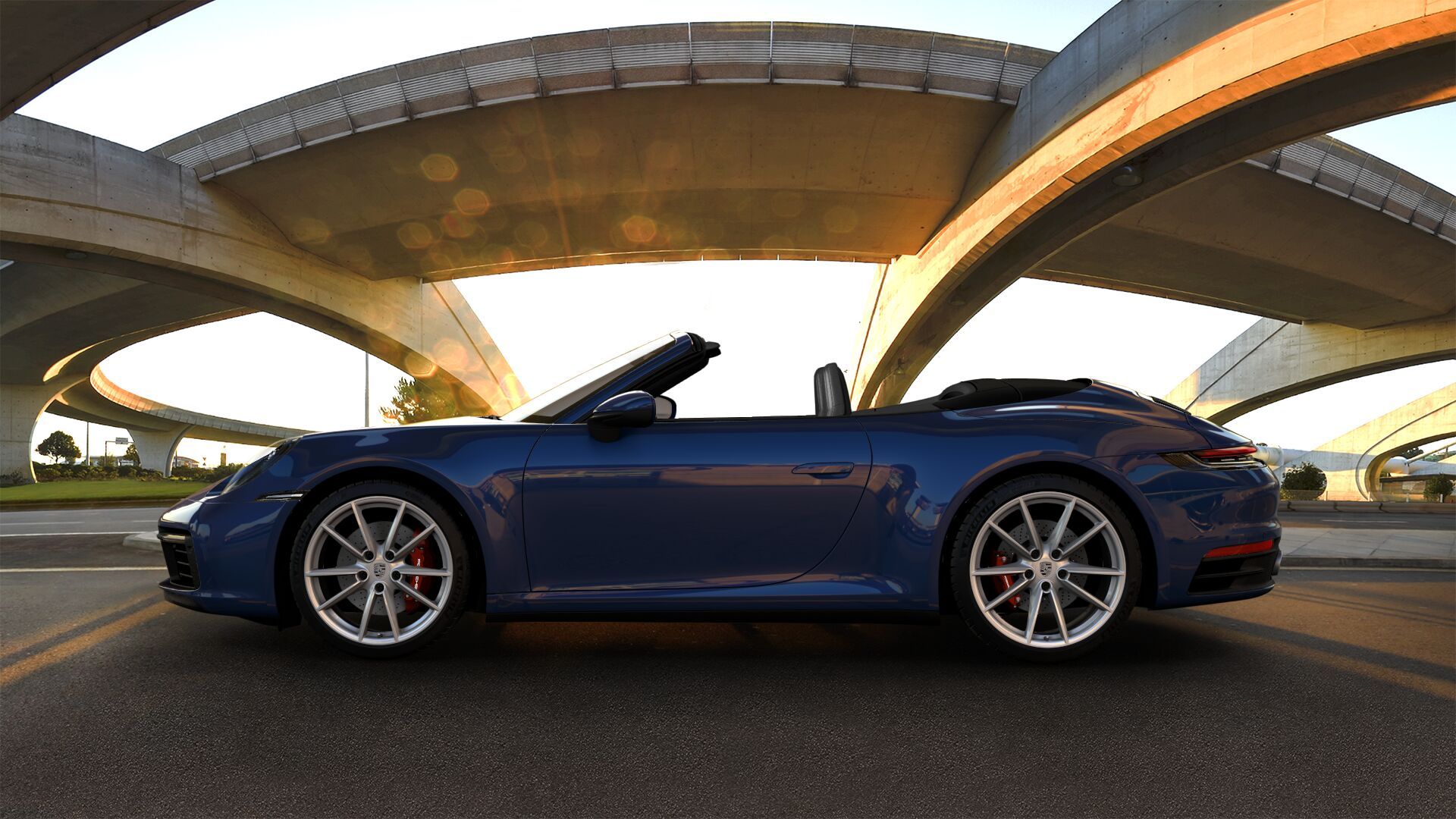
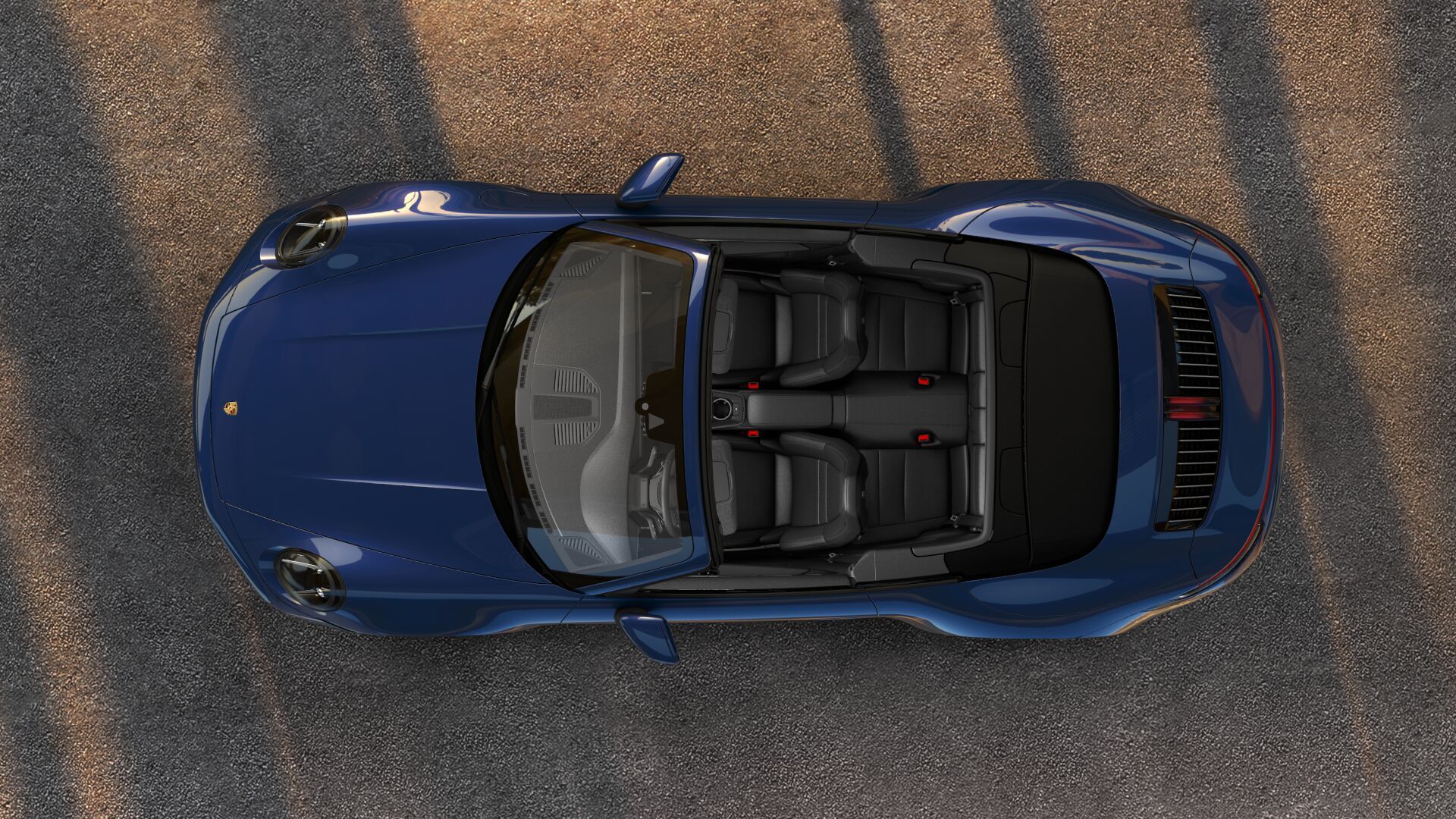
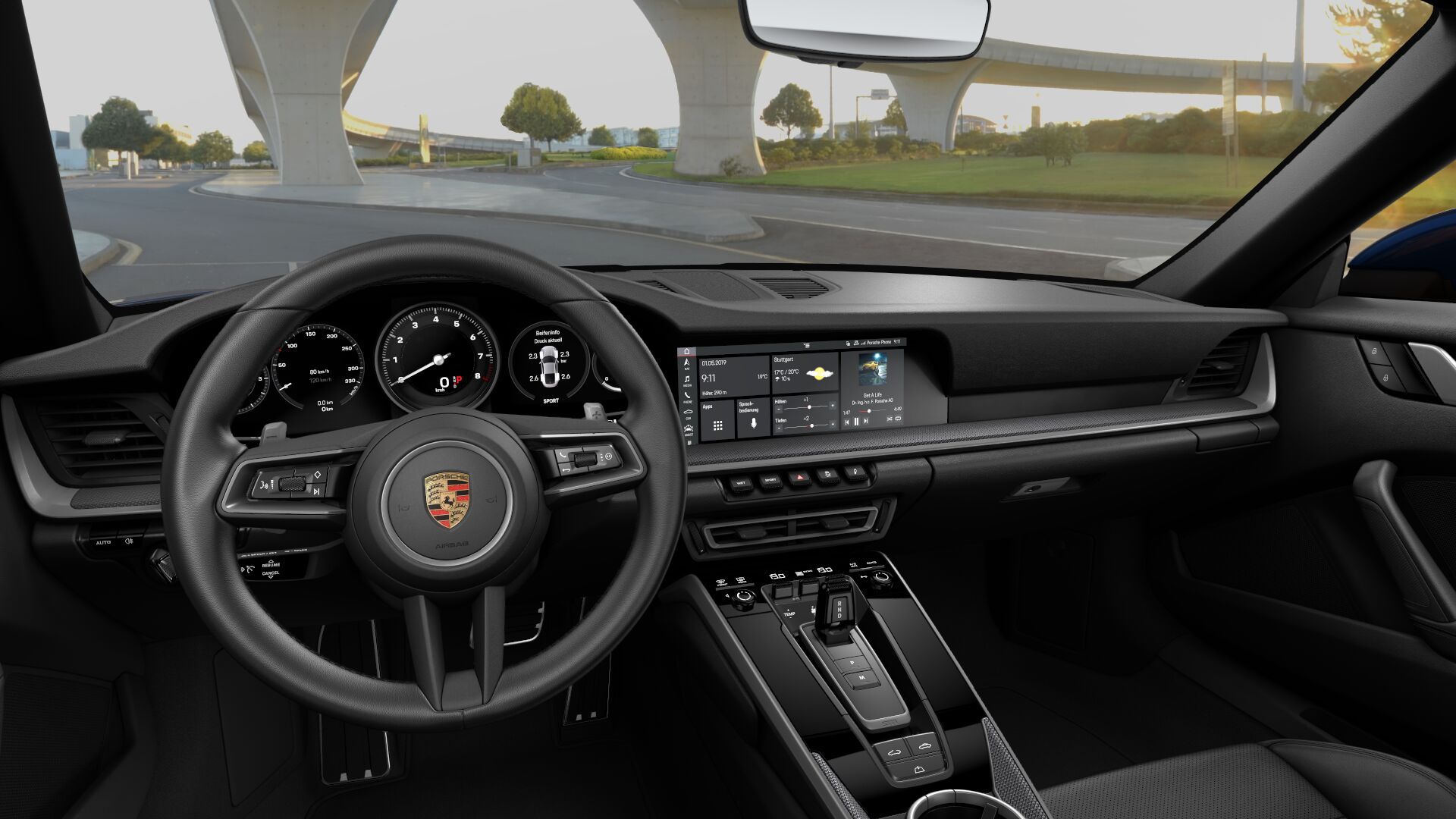
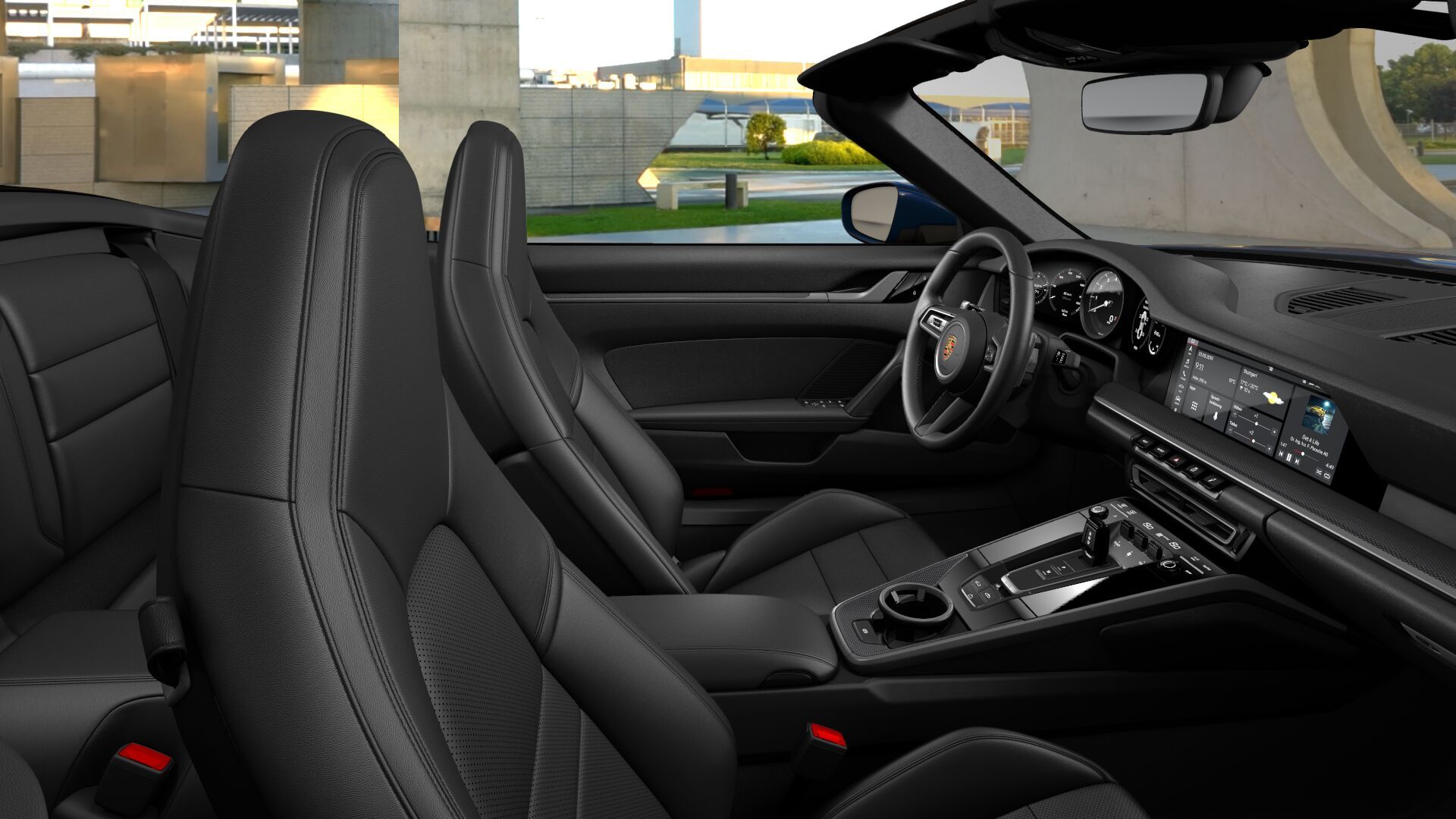
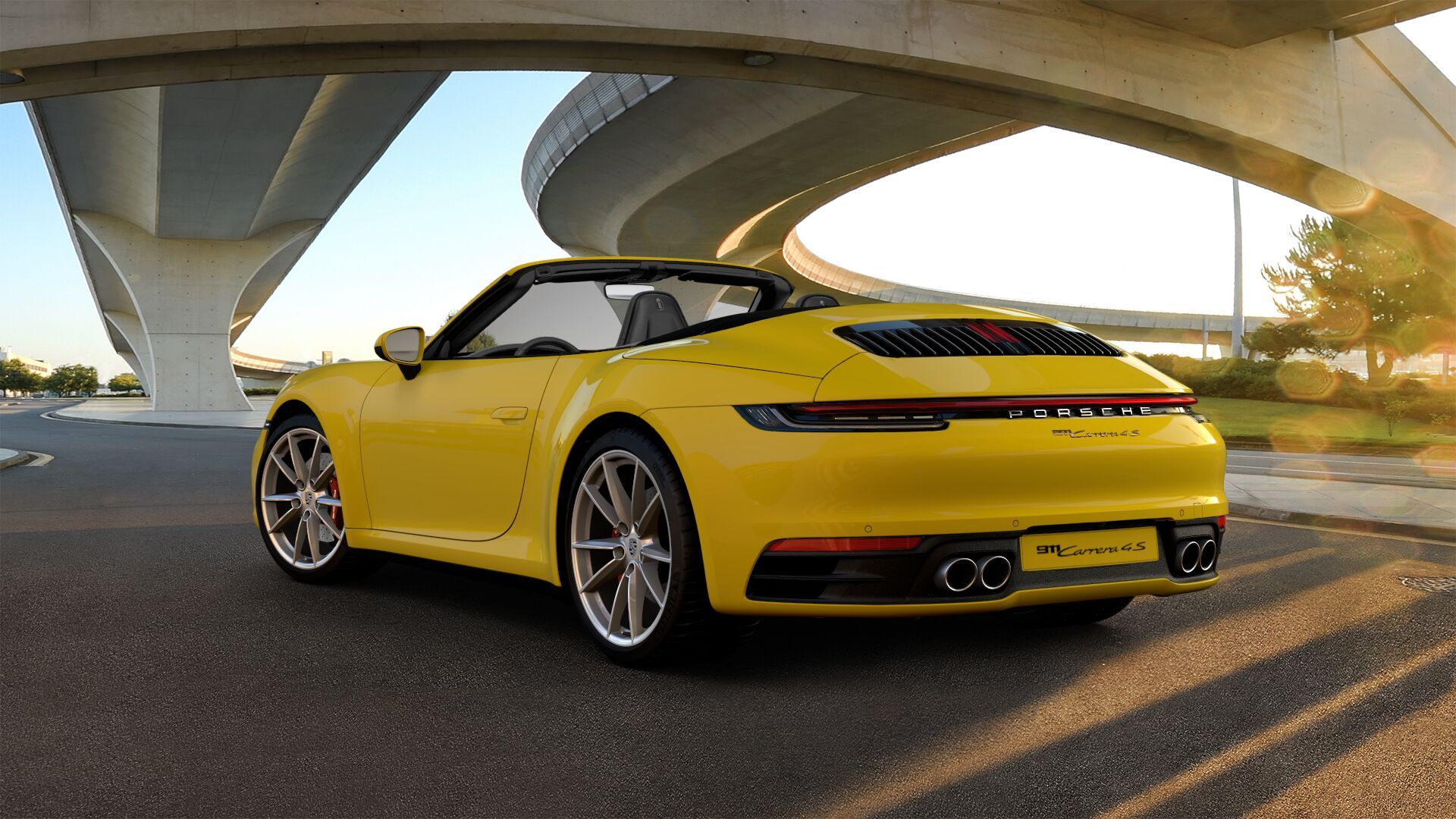
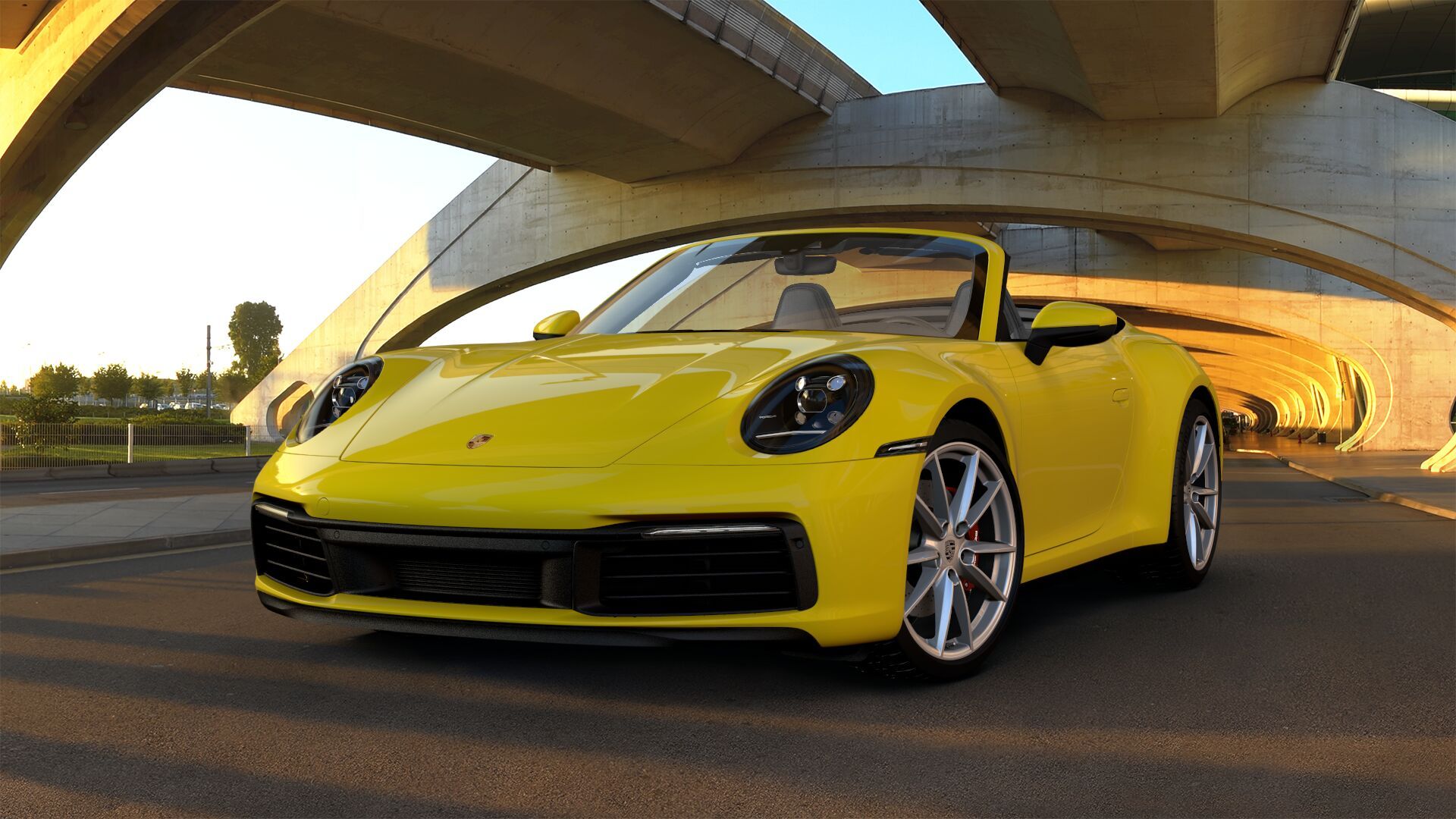
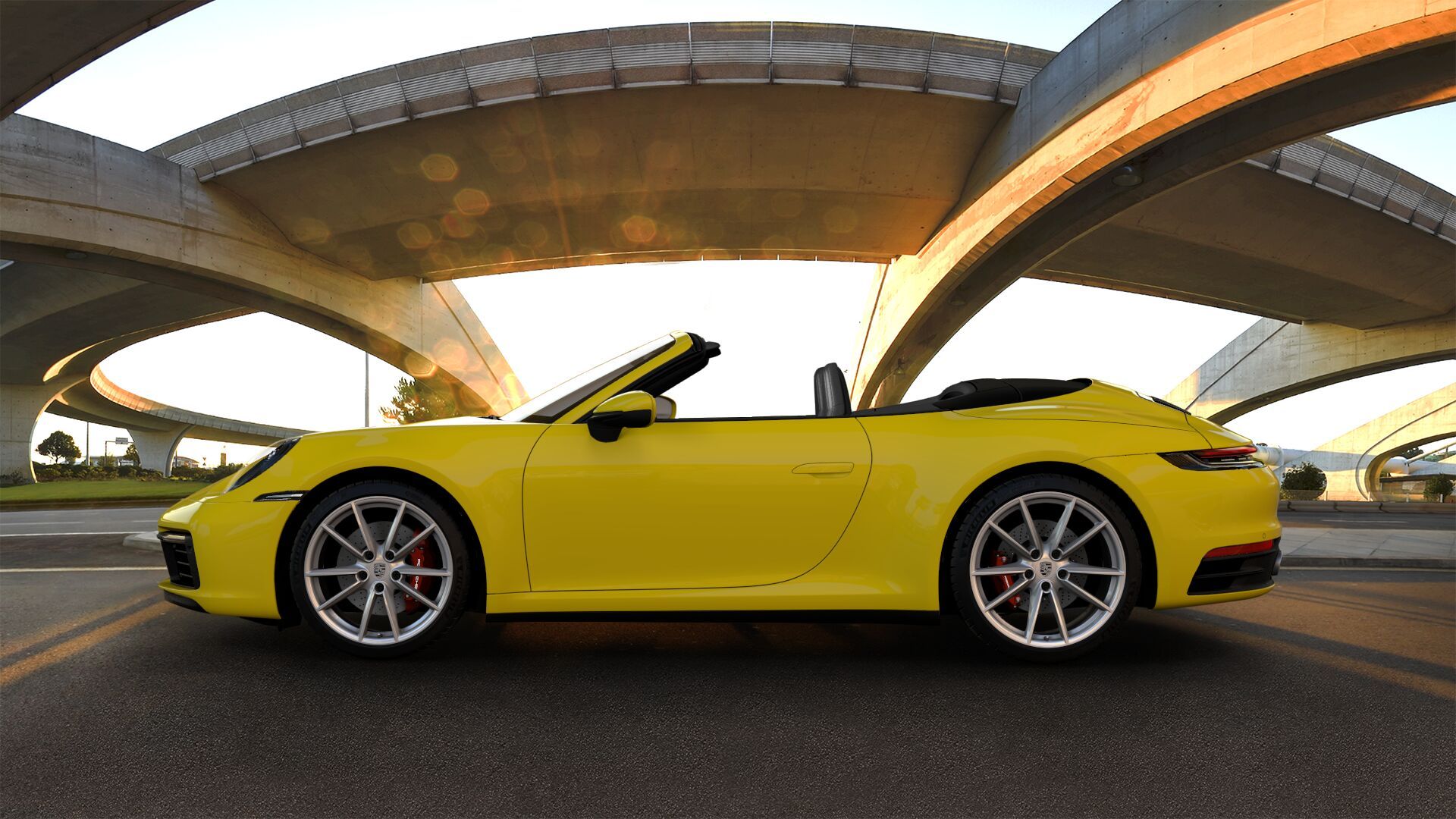
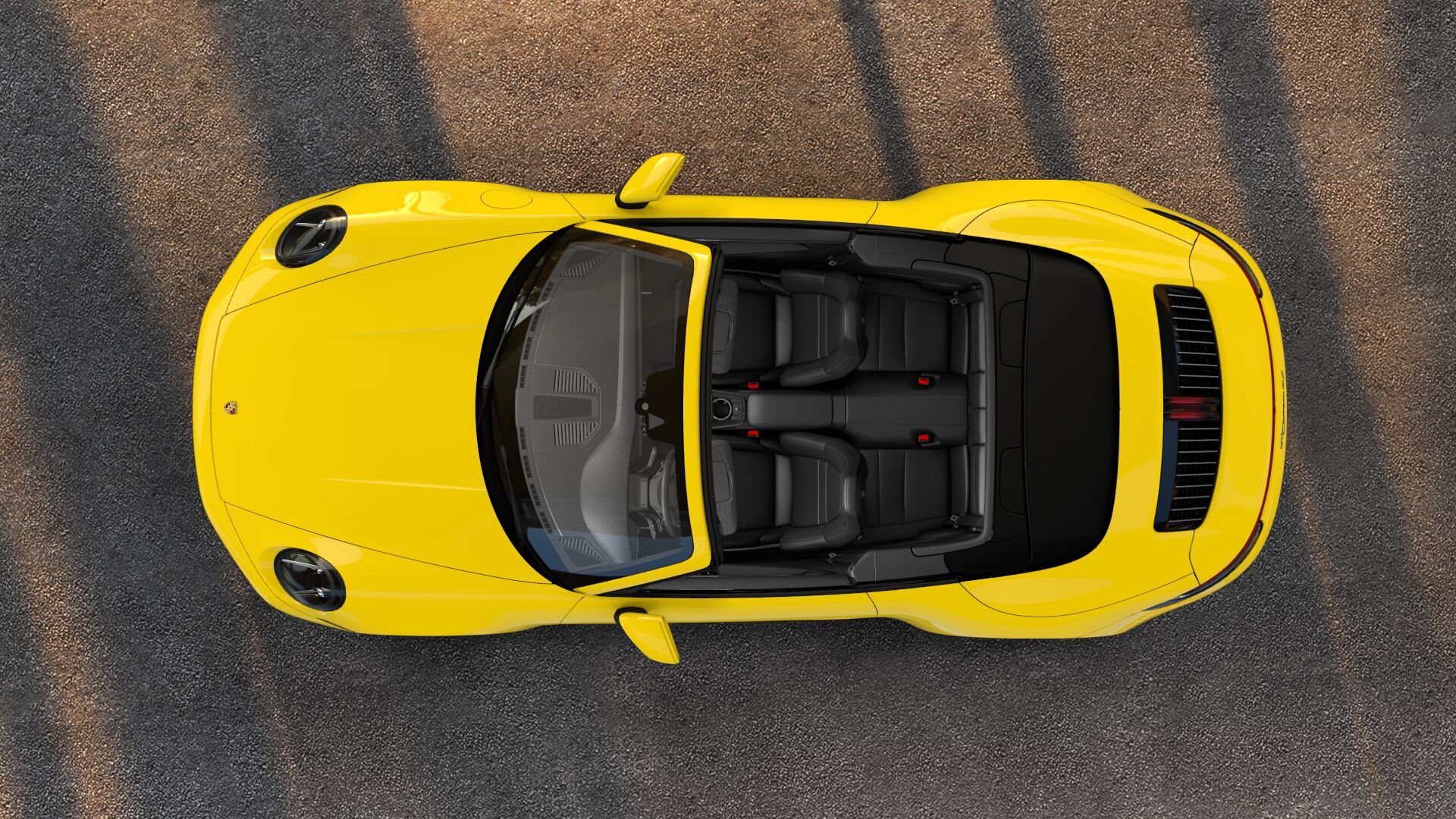































































- Make: Array
- Model: 2020 Porsche 911 Cabriolet
- Engine/Motor: flat-6
- Horsepower: 443 @ 6500
- Torque: 390 @ 5000
- [do not use] Vehicle Model: Array
2020 Porsche 911 Cabriolet Exterior
Just like its predecessor, the 992-generation 911 Cabriolet is identical to the coupe below the waist. The 911 is now wider than before, because it features wider tracks and, consequently, wider fenders.
Up front, the new 911 retains the four-point design of the headlamps, but the LED lights were repositioned for a fresh look. There’s also a revised bumper with new black surrounds for the side vents and slim daytime running lights. The center section is narrower and rectangular now, while the trunk lid is more angular toward the nose. This design feature, as well as the distinctive recess in front of the windshield, are tributes to the original 911.
Profile changes are minimal compared to the old 911, but we can see flush door handles, reshaped mirror caps (for reduced wind noise), and new-design wheels measuring 20 inches at the front and 21 inches to the rear. Of course, this is where the Cabriolet stands out because of its soft-top, but the good news is that the roof is shaped just like the coupe’s, so you get the same stance when the interior is covered.
The "Porsche" lettering below harkens back to the 911s from 1980s and 1990s. The rear bumper is also new, integrating a big, trapezoidal license plate recess and big exhaust pipes that sit closer to the center section. The biggest change of all isn’t noticeable though. Under the paint, the entire body save for the front and rear fascias are made from aluminum.
2020 Porsche 911 Cabriolet Exterior Dimensions
|
Length |
177.9 in |
|
Width w/ mirrors folded |
72.9 in |
|
Width |
79.7 in |
|
Height |
51.2 in |
|
Wheelbase |
96.5 in |
|
Front track |
62.5 in |
|
Rear track |
61.2 in |
|
Drag coefficient (Cd) |
0.31 Cd |
|
Turning circle |
36.8 ft |
|
Curb weight |
3,641 lb |
|
Gross Vehicle Weight Rating (GVWR) |
4,553 lb |
|
Maximum load |
912 lb |
2020 Porsche 911 Cabriolet Interior
The drop-top features the same two-tier dashboard as its predecessor, but now with a horizontal separation element that extends across the entire width of the panel. It’s no longer blocked by the center stack, which was redesigned and allows the lower dash to flow uninterrupted toward the instrument cluster. That's another nod to the first-generation 911.
The instrument cluster retains the center-mounted rev counter flanked by a pair of clocks on each side, but they’re entirely digital now. The steering wheel has thinner spokes and new controls on each side.
The seats are positioned 0.2 inches lower and feature a thinner cushion. Comfort has been improved though through better lateral support in the shoulder areas. New technology includes the latest Porsche Connect Plus with online traffic traffic information, but full specs aren’t yet available.
Of course, you'll enjoy all these features with infinite headroom when the soft-top is folded behind the seats. Porsche designed a brand-new roof that's fully automatic and integrates a glass rear window. The soft-top's structure now contain magnesium elements that prevent it from deforming at high speeds.
2020 Porsche 911 Cabriolet Drivetrain
As before, the Cabriolet shares engines with the coupe, so it features the twin-turbo, 3.0-liter flat-six that replaced the old naturally aspirated mill.
The 992-generation model is the first-ever 911 to not feature a naturally aspirated engine, so don't expect an all-motor option alongside the turbo units.This new flat-six mill features larger turbochargers, a redesigned charge air cooling system, and, for the first time, piezo fuel injectors.
The base Carrera and Carrera 4 model share the same flat-six with 379 horsepower and 331 pound-feet of torque. This isn't much of an upgrade over the outgoing models, as you only benefit from an extra nine horsepower. Torque rating is actually down by one pound-foot. Despite this decrease, the 911 Carrera Cabriolet is almost a half-second quicker than its predecessor. The new drop-top hits 60 mph in 4.2 seconds, while the old one reaches the same benchmark in 4.6 clicks. Top speed remains unchanged at 180 mph.
The all-wheel-driven Carrera 4 Cabriolet showcases the same acceleration time, but top speed drops to 179 mph. This model is three tenths quicker than its predecessor, while top speed is the same.
The S-badged models feature the same 3.0-liter flat-six, but these mills are notably more powerful at 443 horsepower and 390 pound-feet of torque. That's an extra 64 horsepower and 59 pound-feet over the base model. The new S also cranks out 23 horses and 22 pound-feet more than the outgoing Carrera S.
When it comes to performance, the 911 Carrera S Cabriolet reaches 60 mph in 3.7 seconds. That's a whopping 0.6 seconds quicker than the outgoing drop-top. Top speed is the same for both cars at 190 mph. Finally, the 911 Carrera 4S Cabriolet, fitted with an AWD system, needs 3.6 clicks to hit 60 mph, also six tenths quicker than its predecessor. Top speed drops from 190 to 188 mph for this model, again identical to the outgoing version.
All the figures above are for 911s equipped with the automatic PDK transmission. A manual gearbox won’t be added until 2020.
Porsche had nothing to say about the Turbo and Turbo S, but they should be here later in 2019 with upgraded versions of the existing turbocharged, 3.8-liter flat-six engines. The Turbo will probably generate around 570 horsepower, while the Turbo will likely get a bit more than 600 horses.
2020 Porsche 911 Cabriolet drivetrain specifications
|
Porsche 911 Carrera S Cabriolet |
Porsche 911 Carrera 4s Cabriolet |
|
|
Engine |
Twin-turbocharged boxer 6 |
Twin-turbocharged boxer 6 |
|
Layout |
rear-engine |
rear-engine |
|
Bore |
91.0 mm |
91.0 mm |
|
Stroke |
76.4 mm |
76.4 mm |
|
Displacement |
3.0 liter |
3.0 liter |
|
Horsepower |
443 HP @ 6,500 RPM |
443 HP @ 6,500 RPM |
|
Torque |
390 LB-FT @ 2,300-5,000 RPM |
390 LB-FT @ 2,300-5,000 RPM |
|
Compression ratio |
10.2:1 |
|
|
Top Speed |
190 mph |
188 mph |
|
0 to 60 mph |
3.6 seconds (3.4 seconds with Sport Chrono Package) |
2020 Porsche 911 Cabriolet Safety
Porsche didn't have much to say about the 911's new safety features, but we do know it comes with a new driving model. Called Wet Mode, it detects water on the road and adjusts the stability control and anti-lock braking system to slippery conditions and warns the driver about it.
The Cabriolet also features a new, camera-based warning and brake assist system that detects the risk of collisions with moving vehicles. If necessary, it initiates emergency braking and it can bring the vehicle to a full stop.
Optionally, you can select a Night Vision Assist system with thermal imaging and Adaptive Cruise Control. The latter is offered on the 911 for the first time and includes automatic distance control, stop-and-go, and emergency assist functions.
2020 Porsche 911 Cabriolet Prices
Just like the coupe, the new-generation 911 Cabriolet is notably more expensive than the old model. The base version starts from $110,200, a notable $13,000 premium over the similar coupe model. Compared to its drop-top predecessor, it costs almost $7,000 more. If you want the AWD model, the 911 Carrera 4 Cabriolet, you'll have to pay $117,500. That's $7,200 more than the previous sports car.
Moving over to the more powerful variants, the 911 Carrera S Cabriolet comes in at $126,100. The difference here is quite big, as the previous S model retailed from $117,400. Finally, we have the 911 Carrera 4S Cabriolet at $133,400, which costs almost $9,000 more than the outgoing model.
2020 Porsche 911 Cabriolet Competition
Jaguar F-Type
Launched in 2013, the F-Type is credited with having revived Jaguar as a full-fledged sports car manufacturer. Designed to replace the XK, the F-Type is more compact, more agile, and decidedly more appealing. It's more luxurious too, being just two rear seats away from becoming a full-fledged competitor for the 911 Cabriolet. The F-Type might come with a different engine layout than the 911, but it’s available with an array of engines. In basic trim, the F-Type is offered with a turbocharged, 2.0-liter four-cylinder engine rated at 300 horsepower and 295 pound-feet of torque. Not quite enough to go against the 911, but the supercharged, 3.0-liter V-6 engine delivers either 340, 380 or 400 horsepower. More power can be had with the F-Type R, which uses a supercharged, 5.0-liter V-8 rated at 550 horsepower and 502 pound-feet of torque. Transmission choices include the eight-speed automatic and the newer six-speed manual. Jaguar also offers an AWD system. The F-Type retails from $63,850 in base trim, but the 380-horsepower model starts from $85,150. The V-8 version is notably more expensive at $103,850 before options, but still more affordable than the 911.
Read our full story on the 2017 Jaguar F-Type.
Mercedes-AMG GT Roadster
Launched as a direct competitor to the Porsche 911, the Mercedes-AMG GT spawned a convertible version in 2017. Although it's a significant departure from the 911 due to its front-engined layout, the AMG GT Roadster has everything it takes to give the Porsche a run for its money. Not only gorgeous in drop-top configuration, but it's also aggressive to look at thanks to its wide stance and sculpted body lines. The interior is made of premium materials and comes with the latest technology and a state-of-the-art infotainment system. Under the hood, the GT Roadster comes with a twin-turbo, 4.0-liter V-8 engine rated at 469 horsepower and 460 pound-feet of torque. That's significantly more than what the next 911 Carrera S delivers, but it's worth mentioning that the Merc is slower. The German drop-top needs 3.9 seconds to hit 60 mph and tops out at 188 mph. If you're looking for a competitor for the Turbo model, the range-topping GT C Roadster comes with 549 horsepower and 500 pound-feet on tap. With this version, the 0 to 60 mph sprint drops to 3.6 seconds, while top speed jumps to 196 mph. Pricing for the AMG GT Roadster starts from $124,400, which makes it a bit less expensive than the 911 Carrera Cabriolet. The GT C Roadster model fetches $157,000 before options.
Read our full review of the Mercedes-AMG GT Roadster and Mercedes-AMG GT C Roadster.
Conclusion
Needless to say, the 992-generation is the fastest, most-advanced Porsche 911 Cabriolet to date. It might also be a major departure from 911 tradition if Porsche uses this generation to launch a hybrid and an EV, so it might be more important to the nameplate than we can discern at this point. In many ways, the 992 could be just as important as the 996 series, the first 911 to use a water-cooled engine. But regardless of what it will bring to the table, it's incredibly fast compared to its rivals and in many cases a bit more affordable.
References
Read our full review on the 2019 Porsche 911 Coupe.
Read our full review on the 2017 Porsche 911.
Read our full review on the 2016 Porsche 911 Convertible.
Read our full review on the 2012 Porsche 911.
Spy Shots
December 14, 2018 - Porsche 911 Convertible starts dropping camouflage
January 3, 2018 - Porsche 911 Convertible drives topless
Update History
Updated 07/17/2017: Our spy photographers caught the upcoming 911 Cabriolet out for a new testing session during cold winter conditions in Europe.

